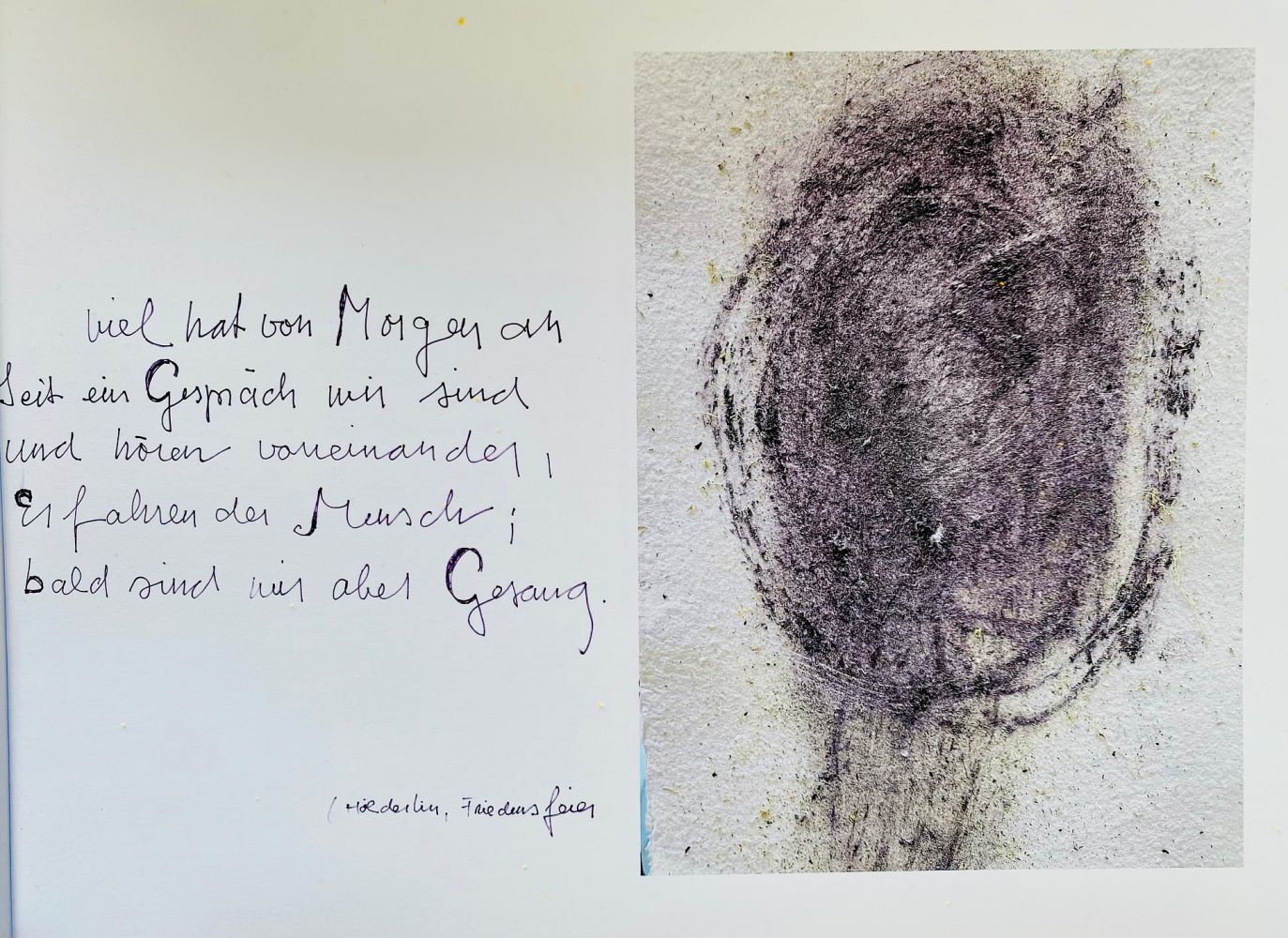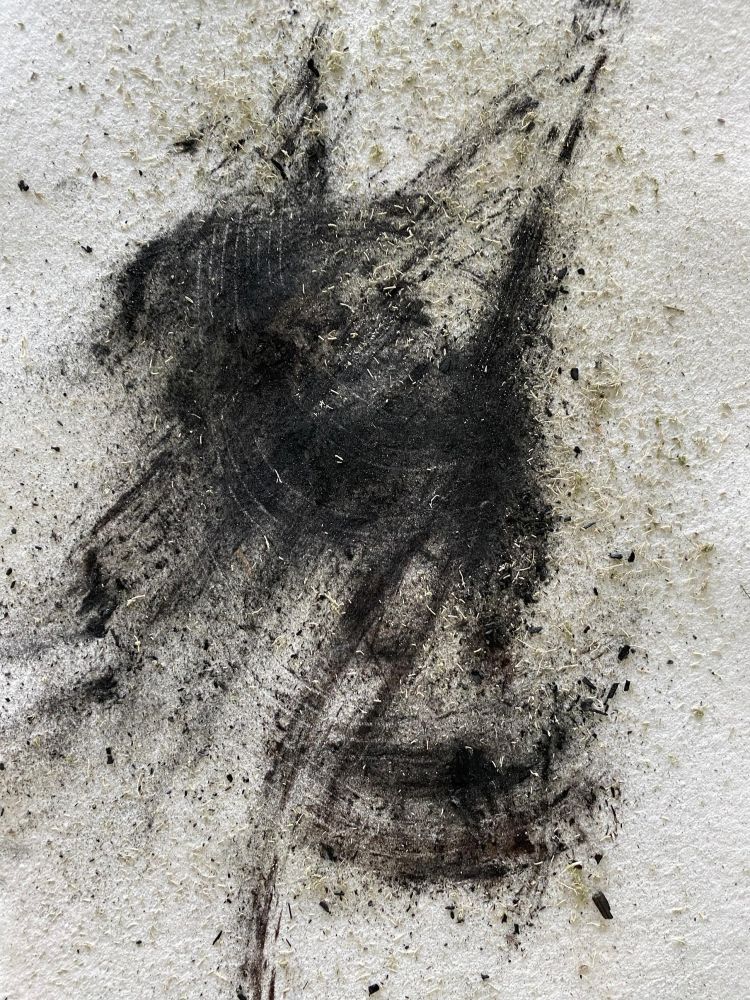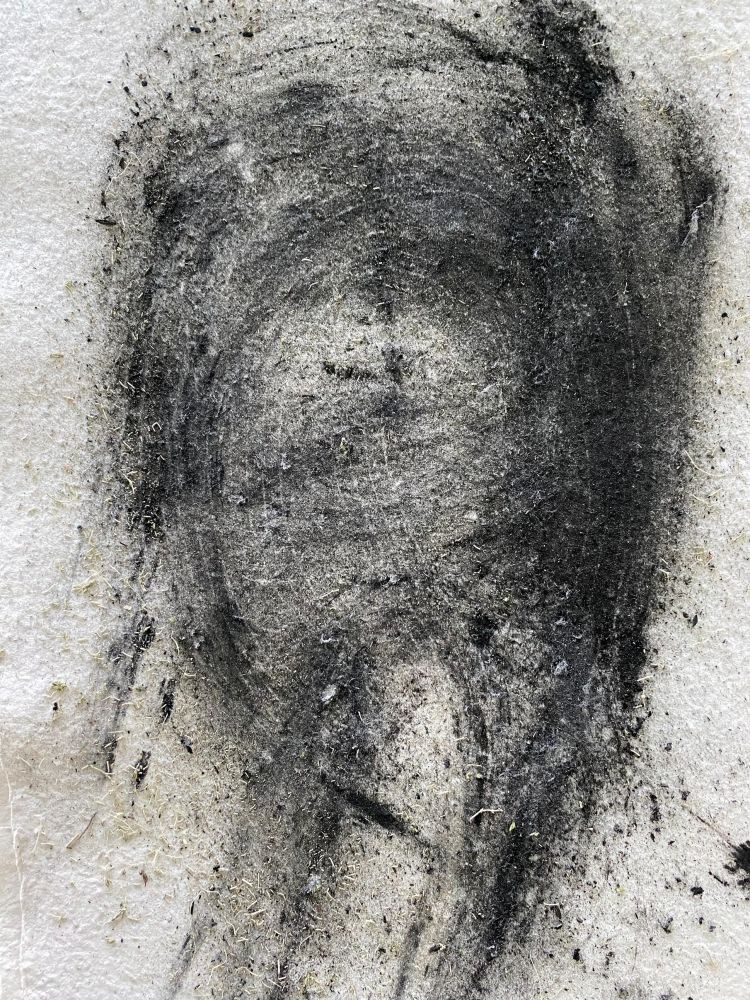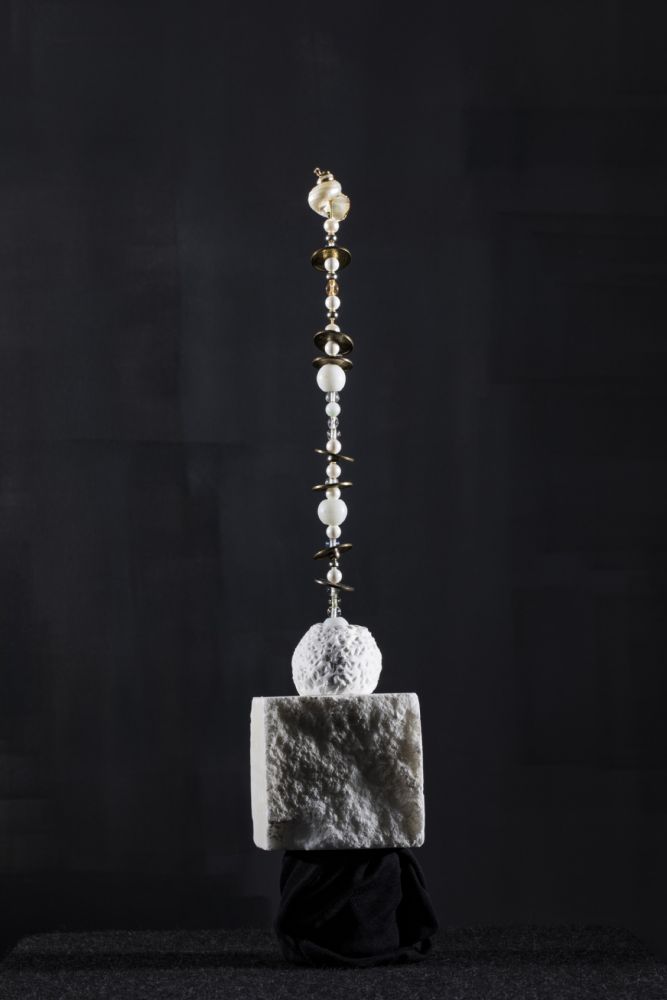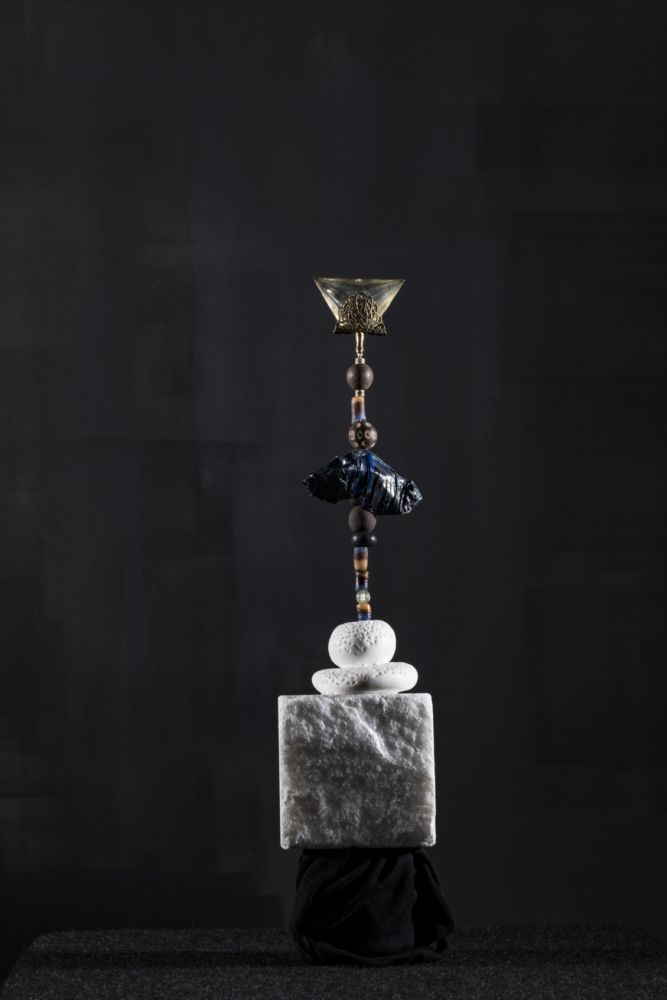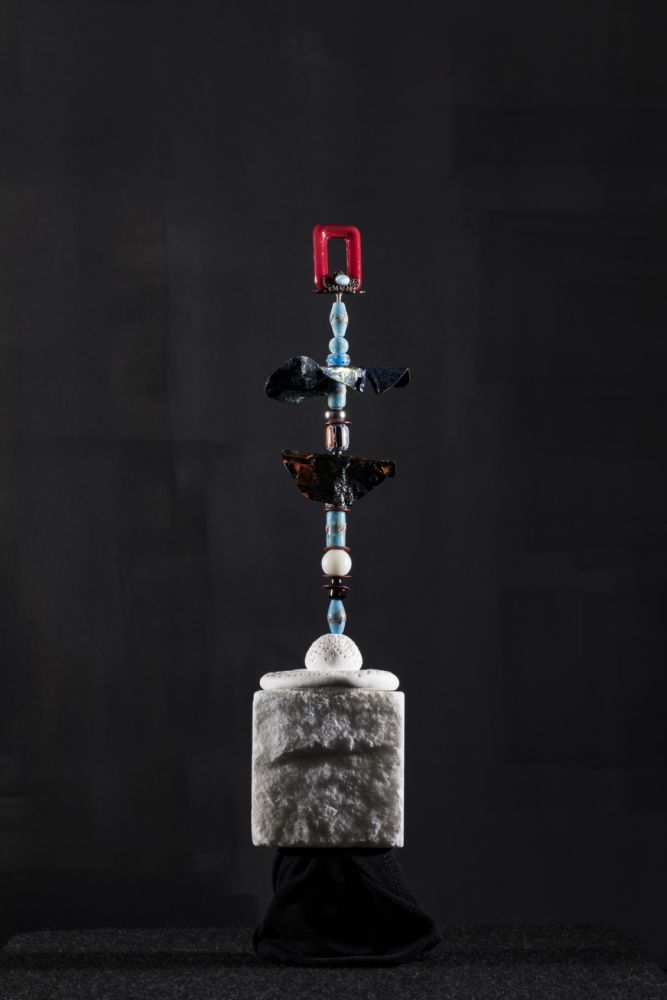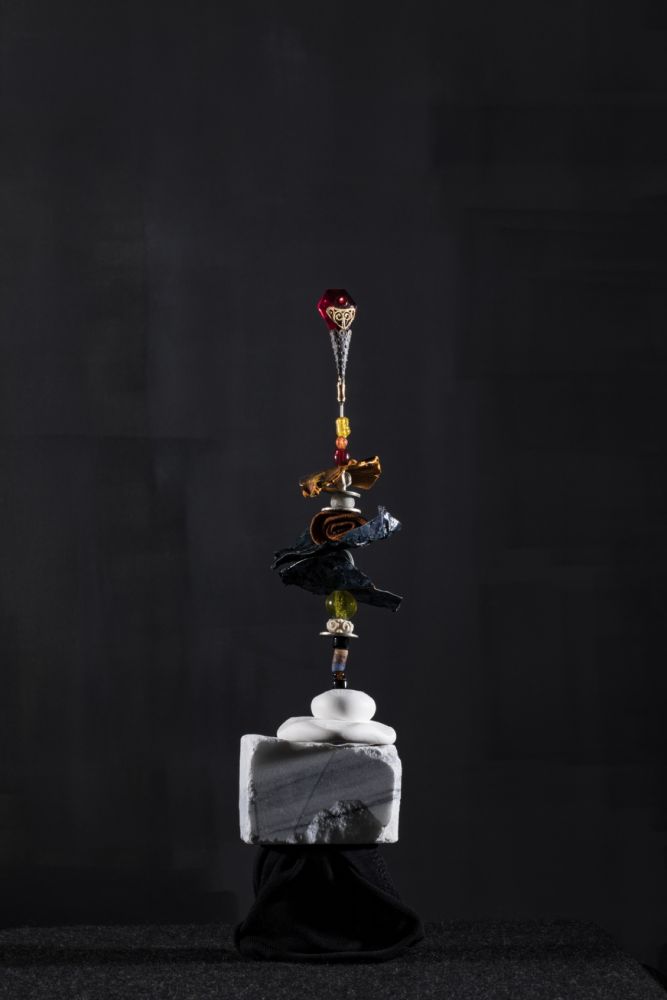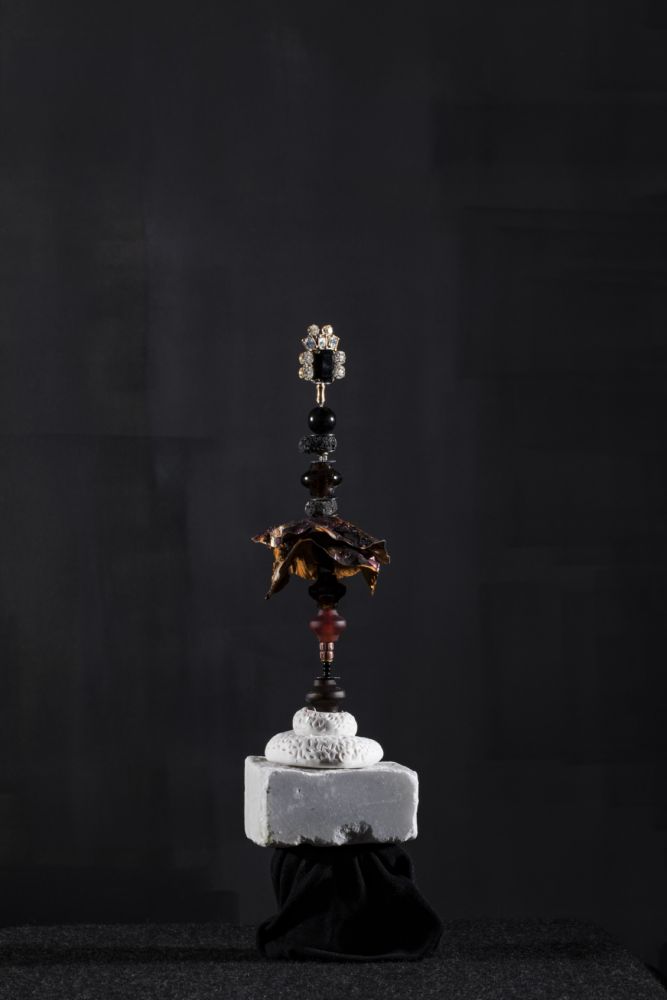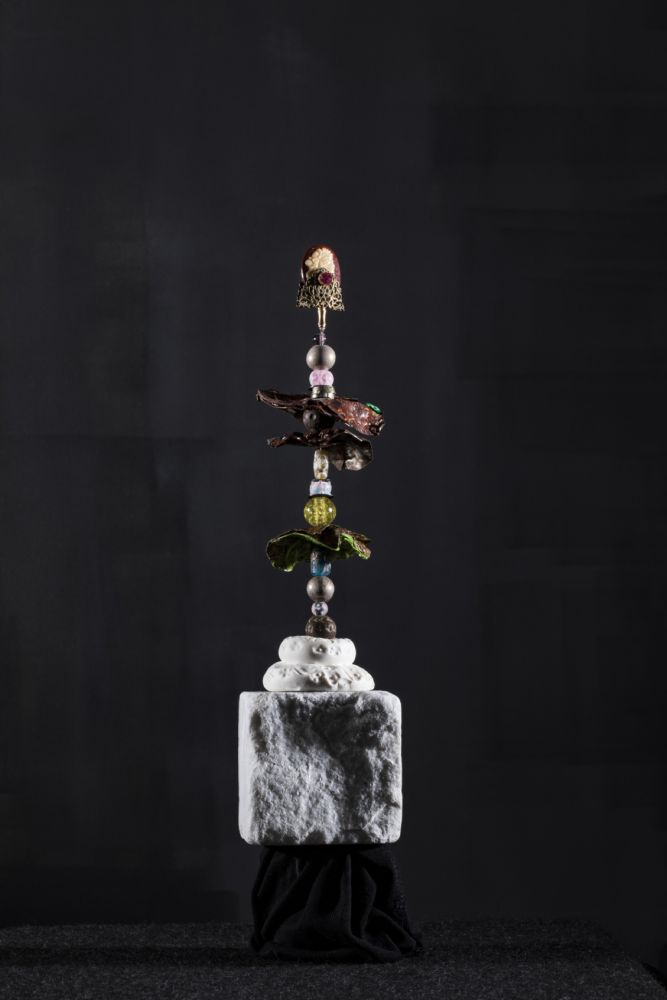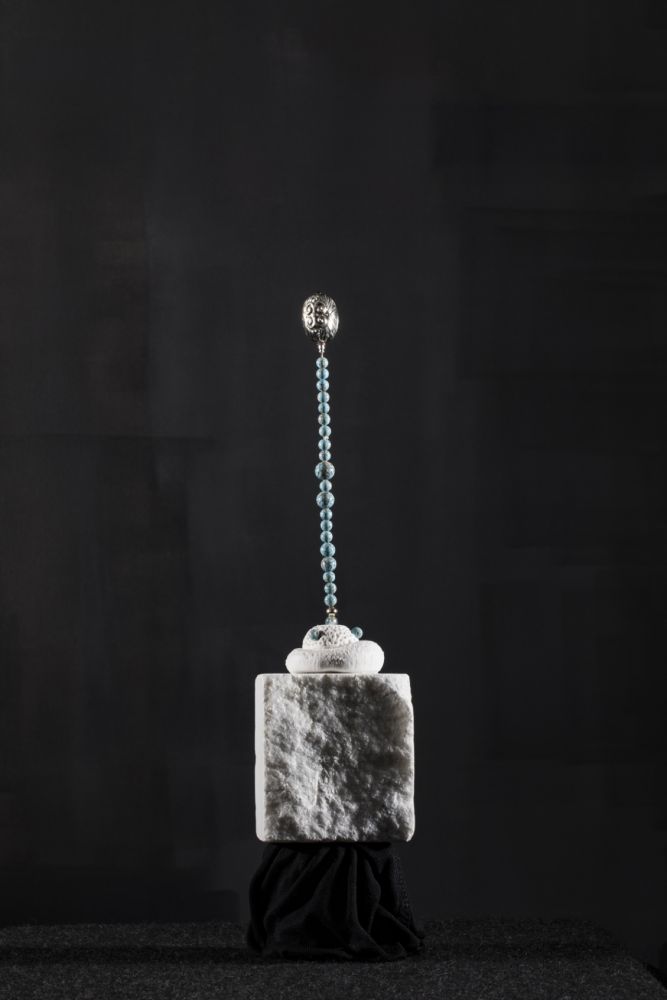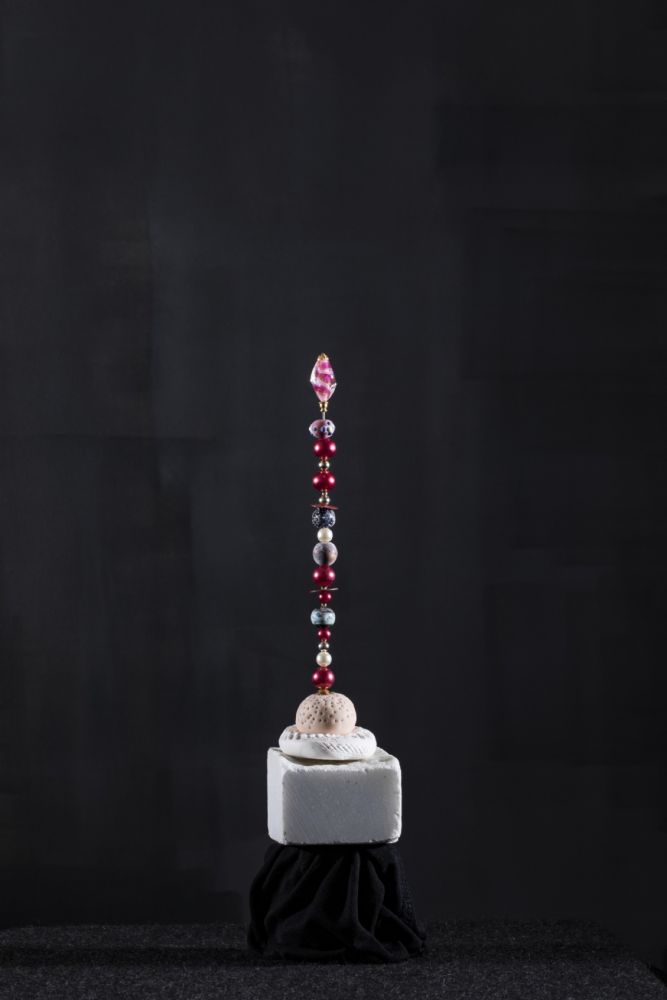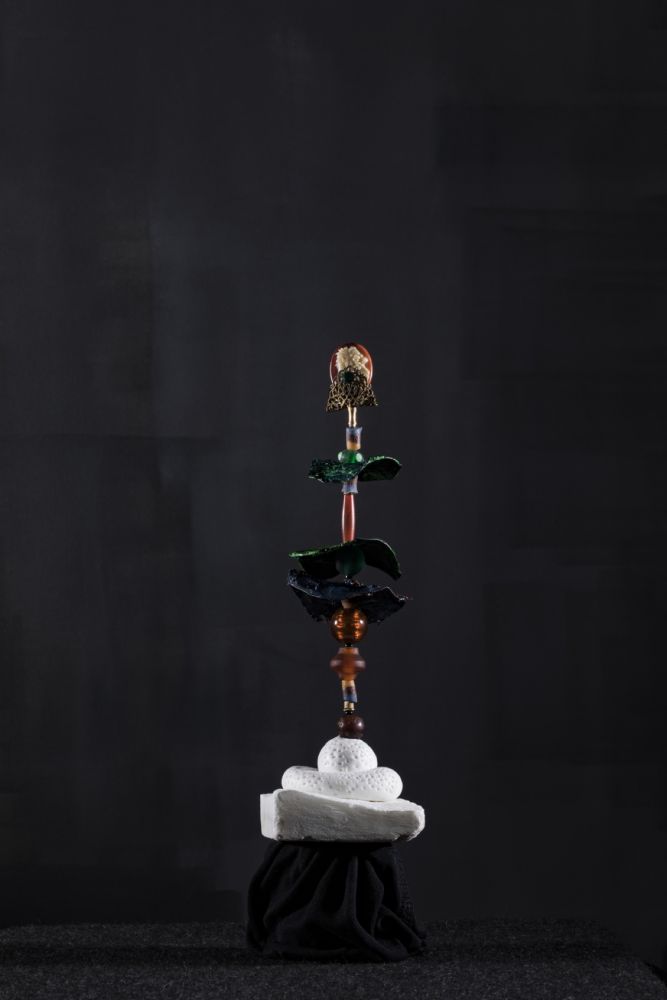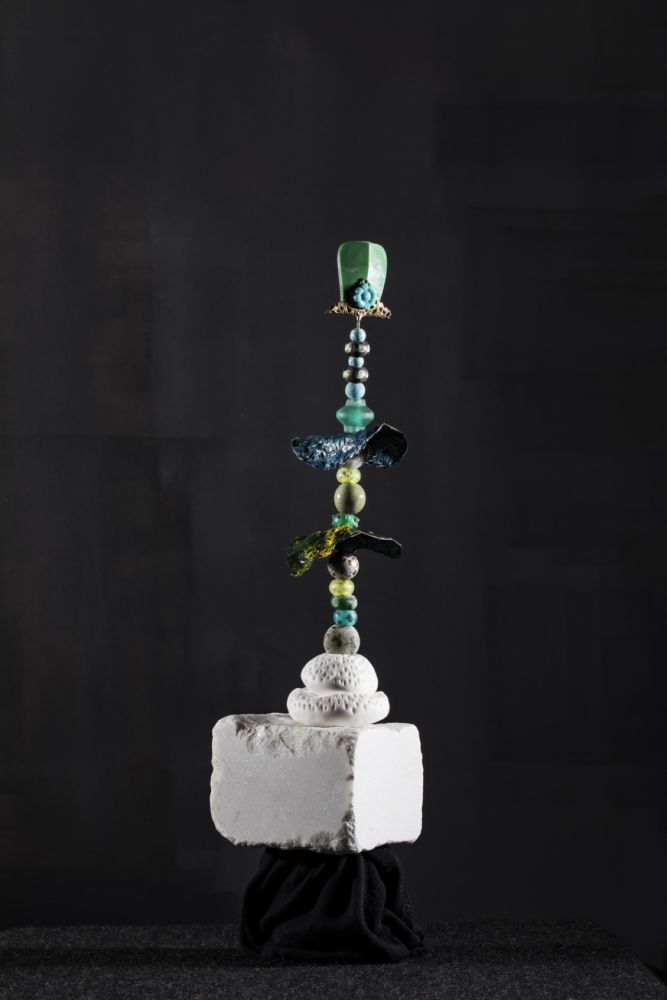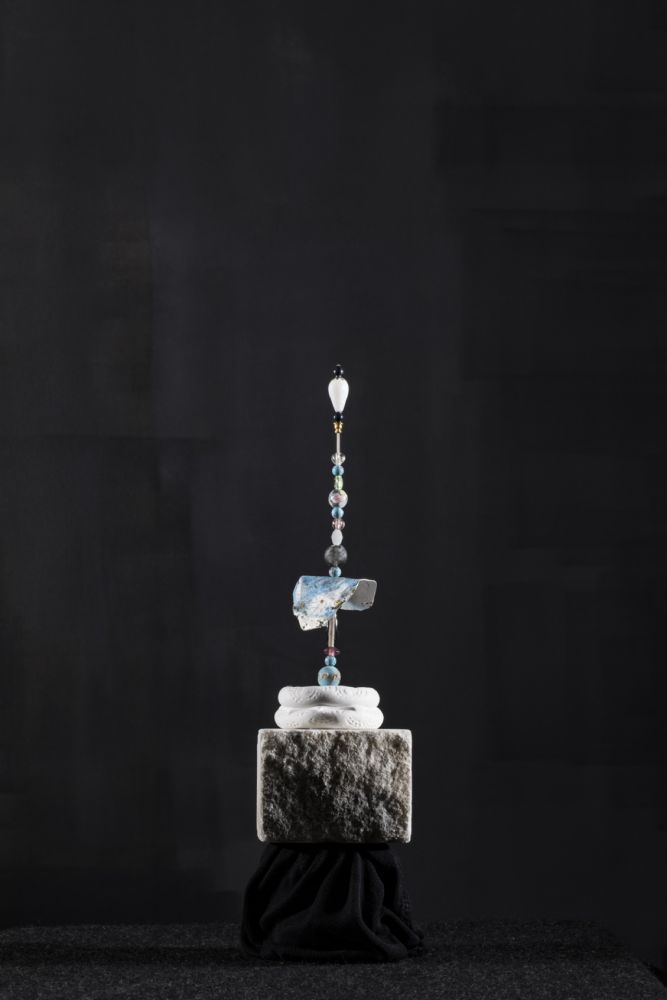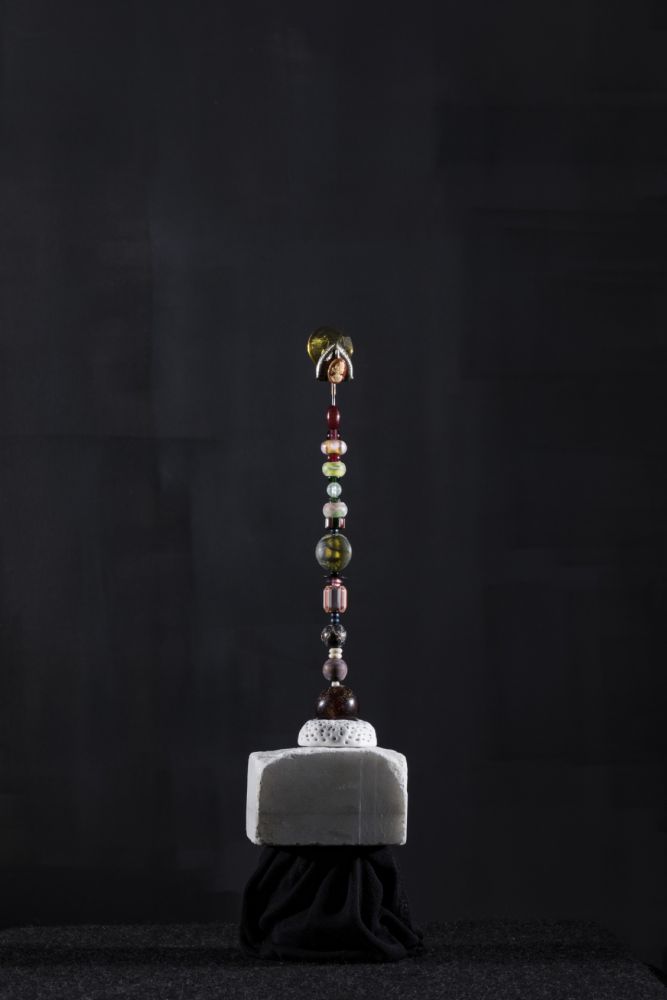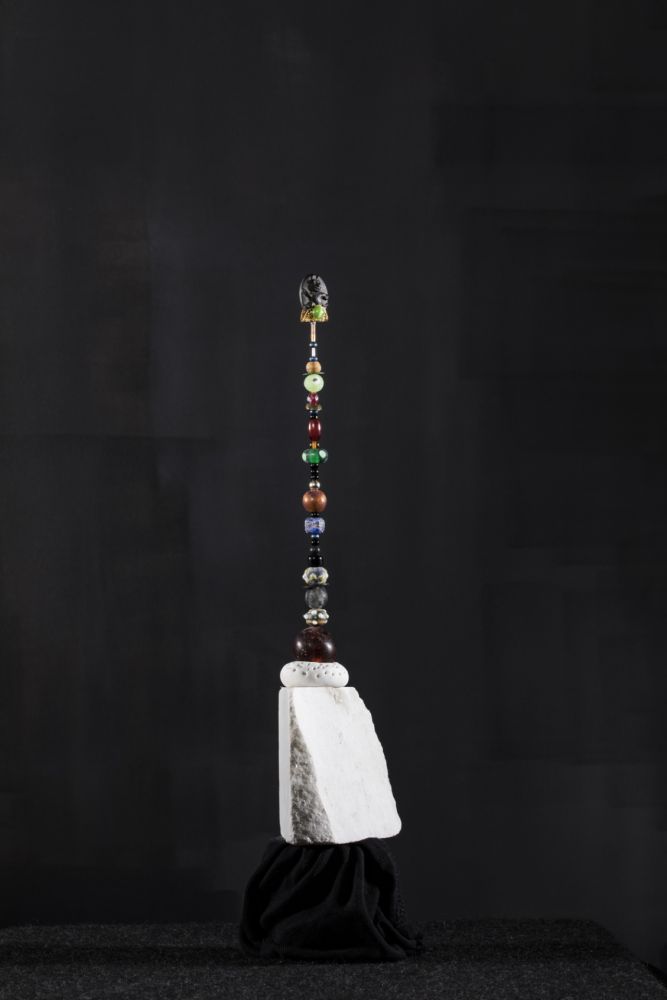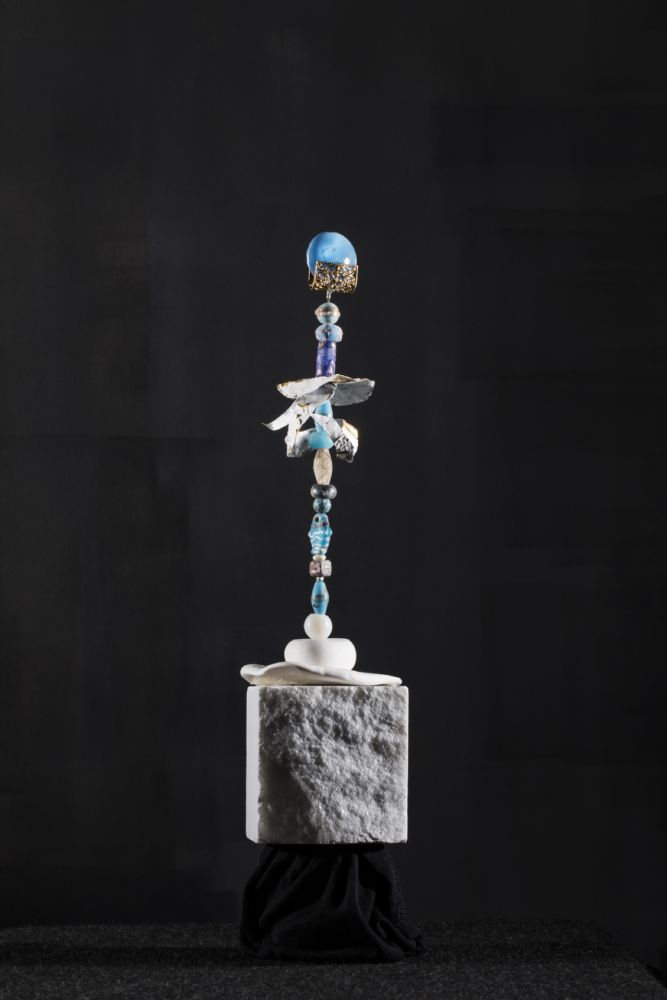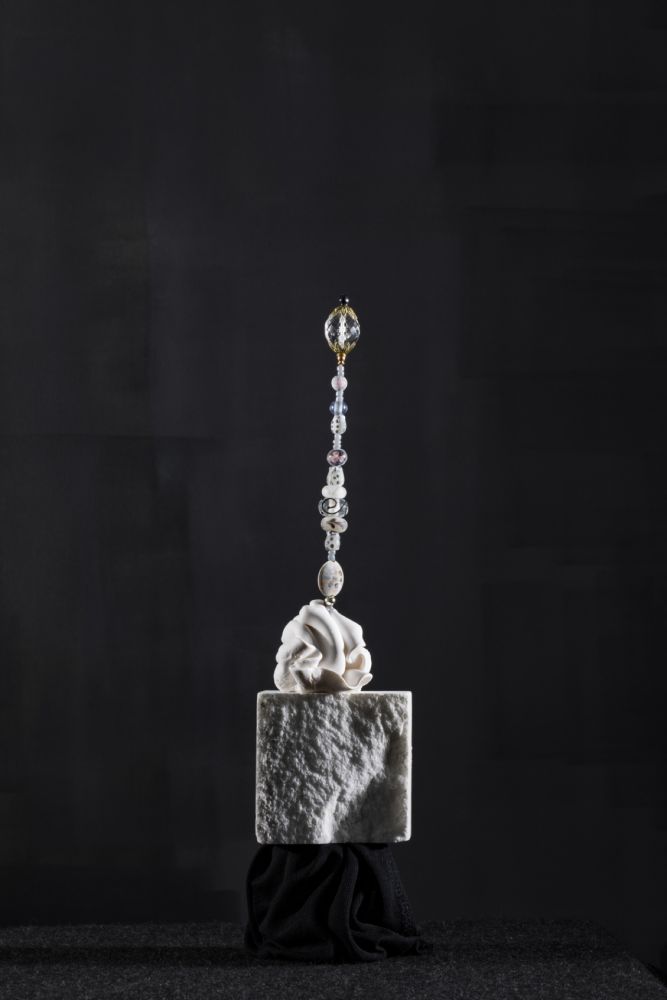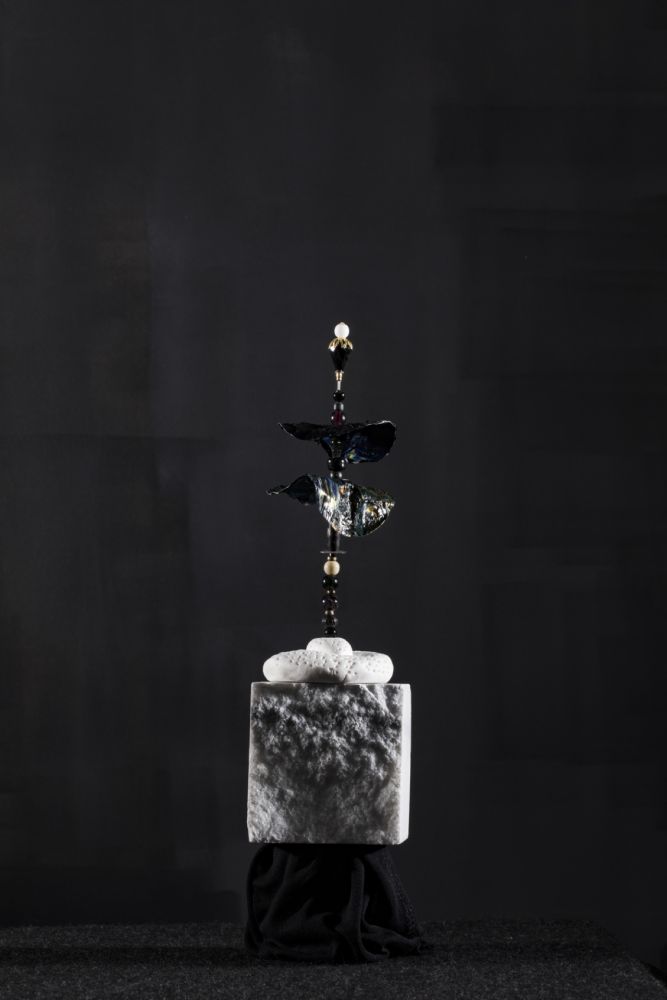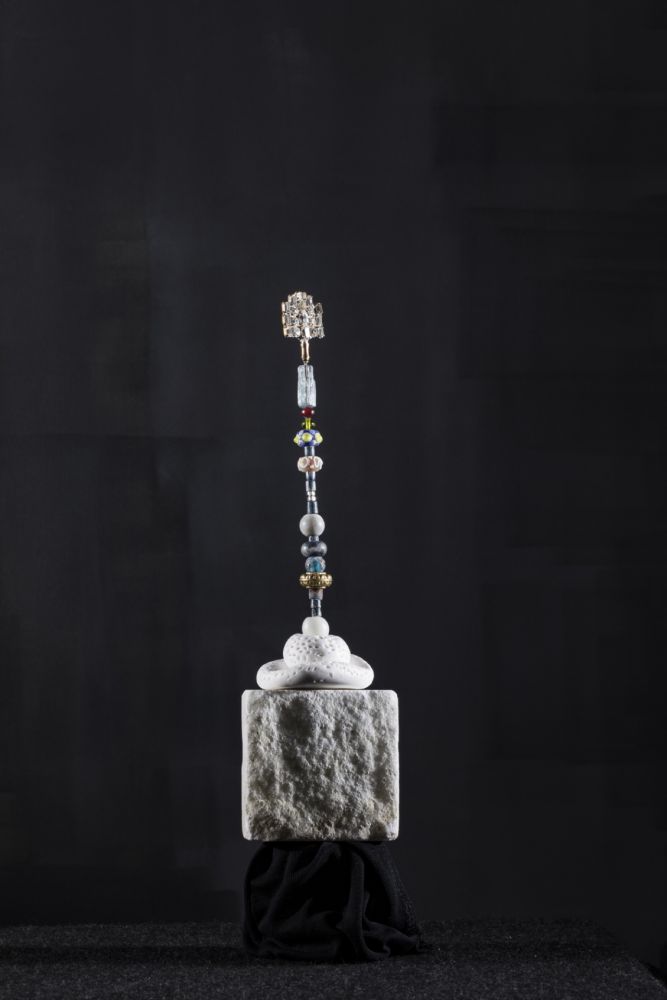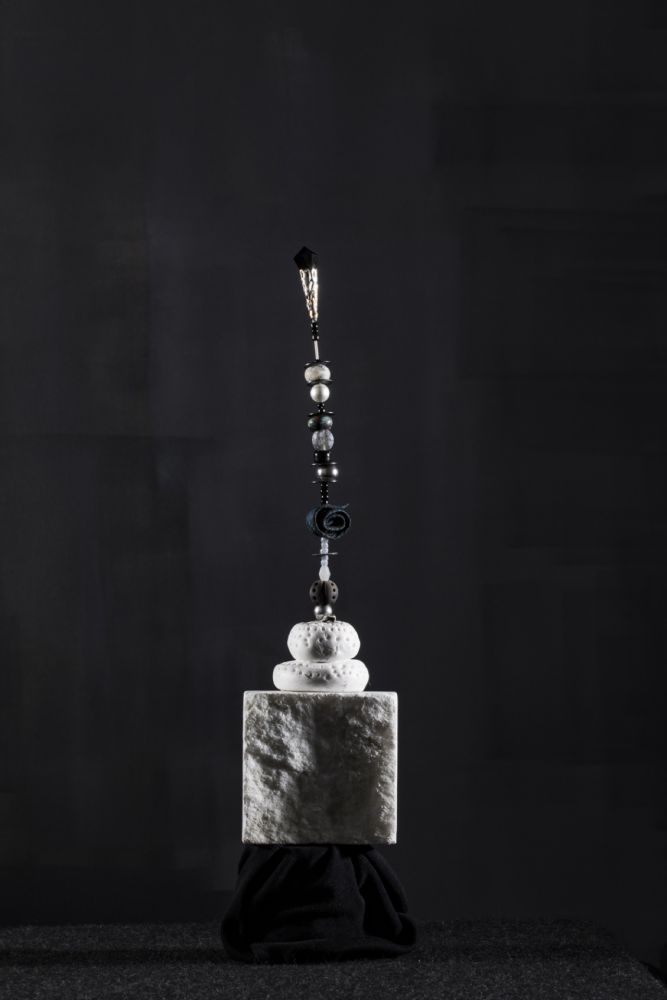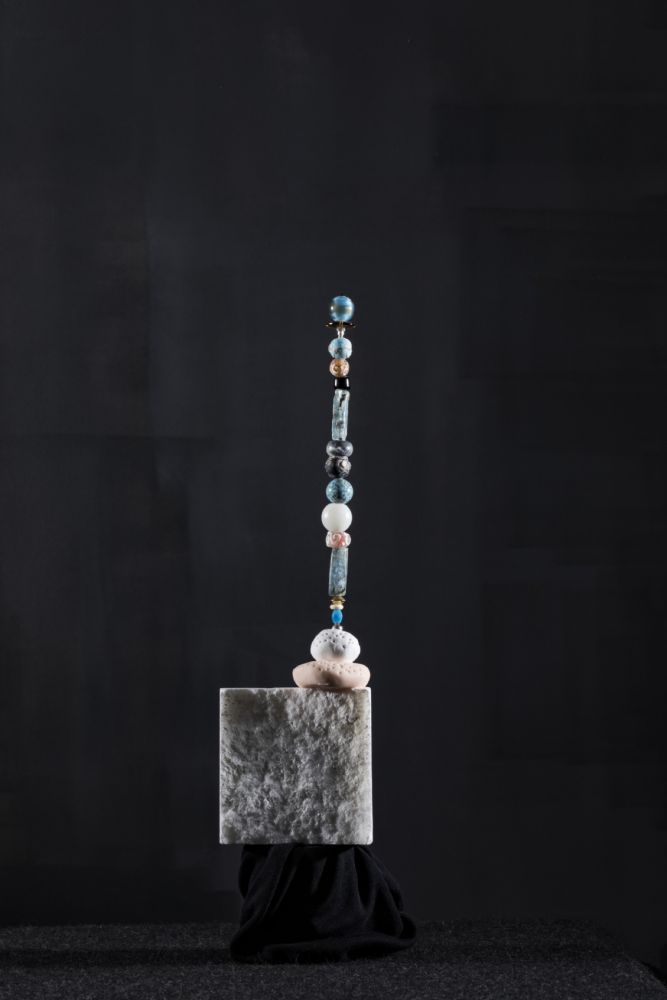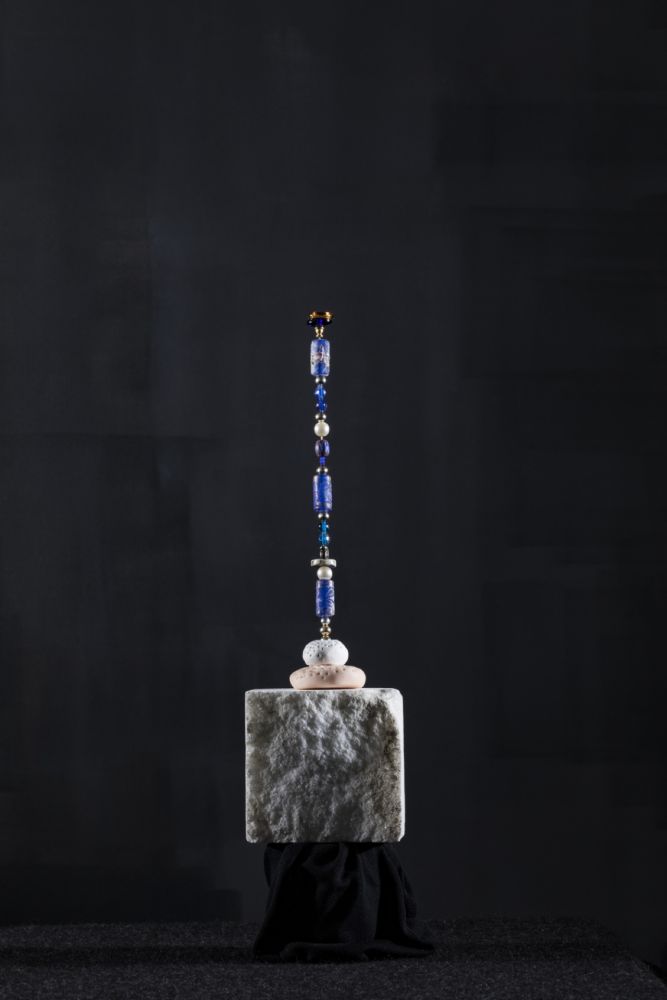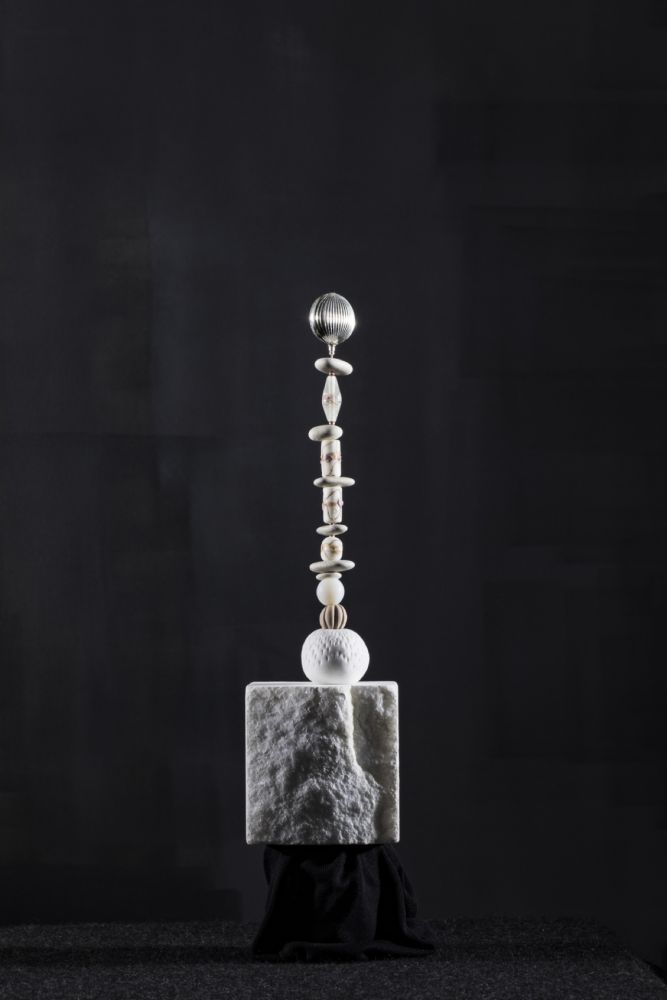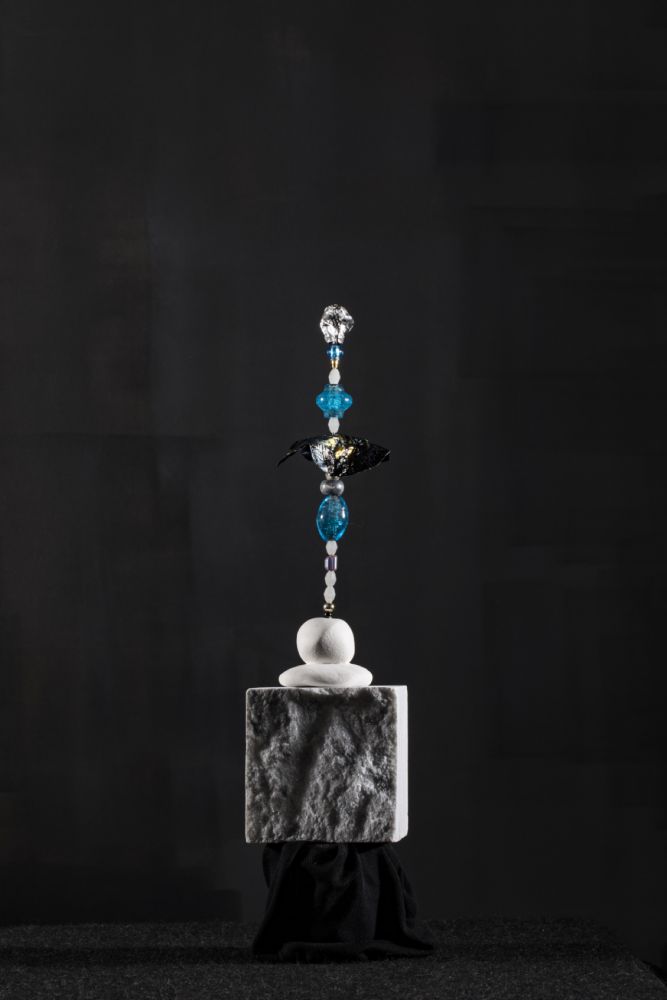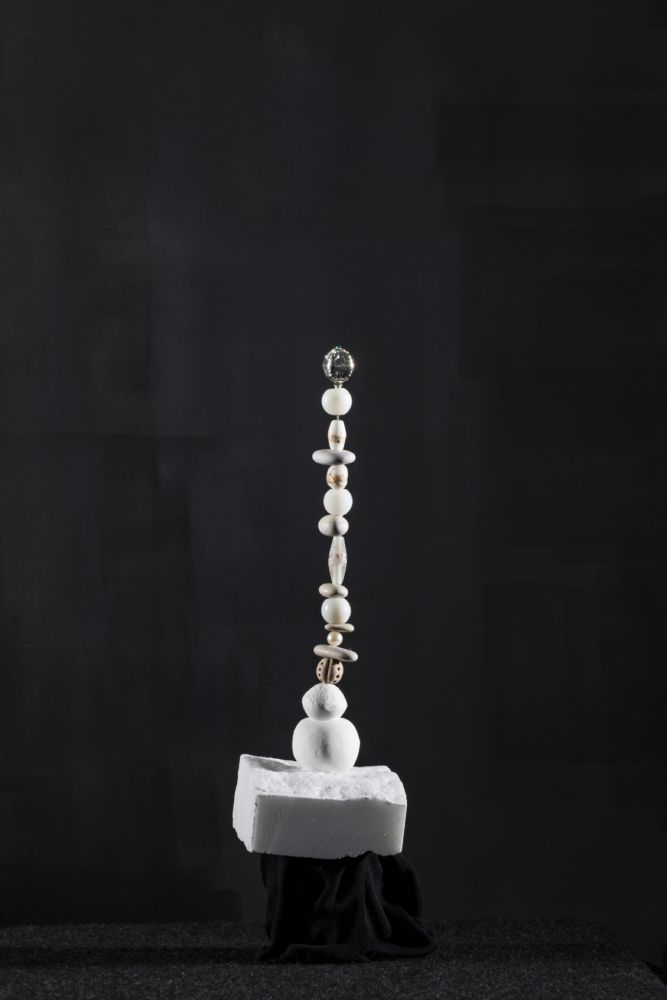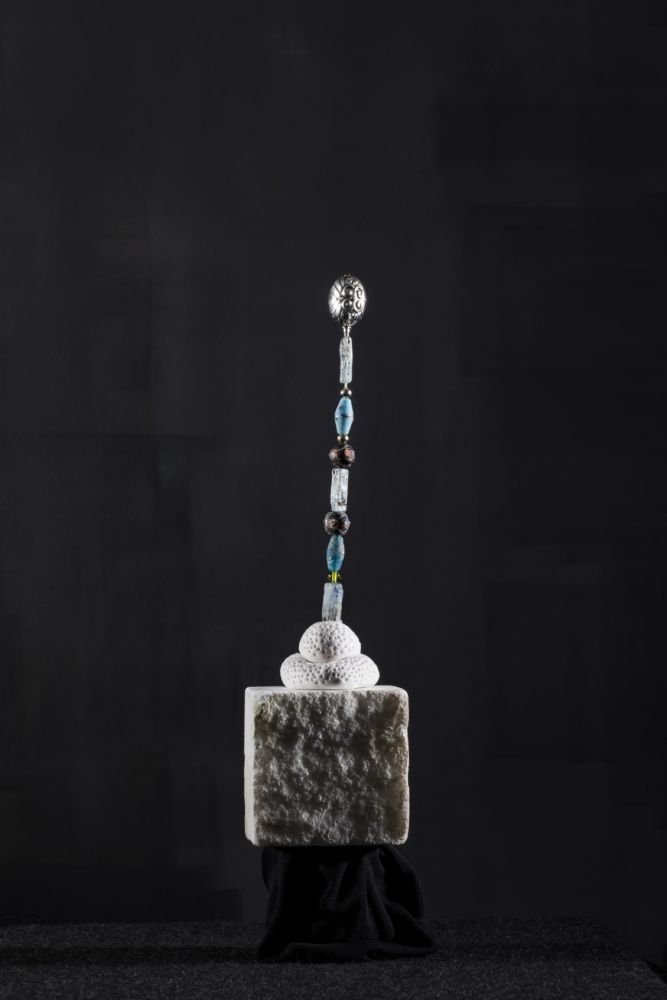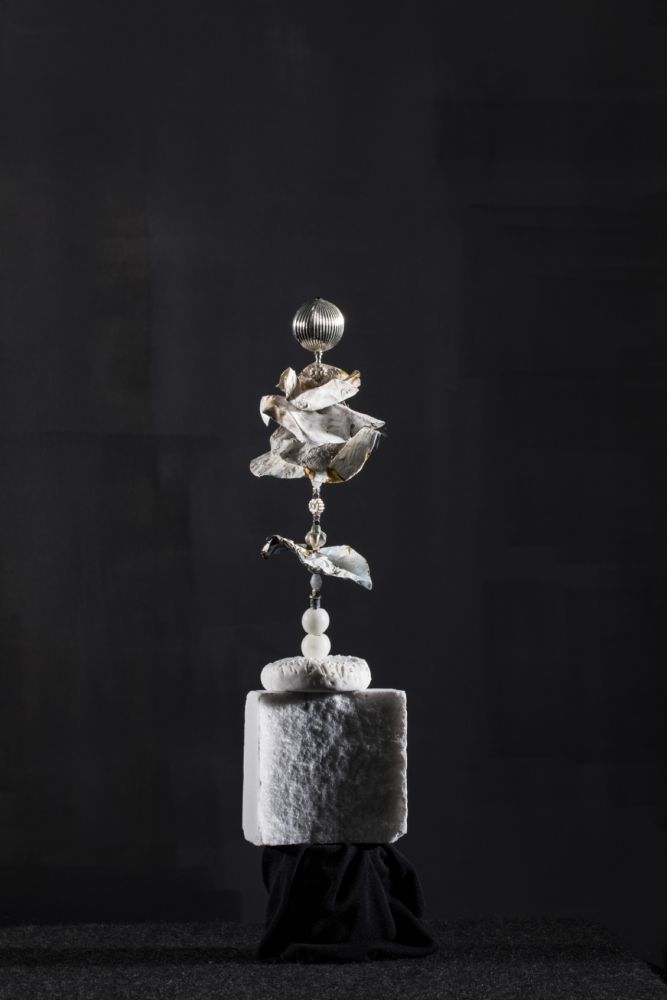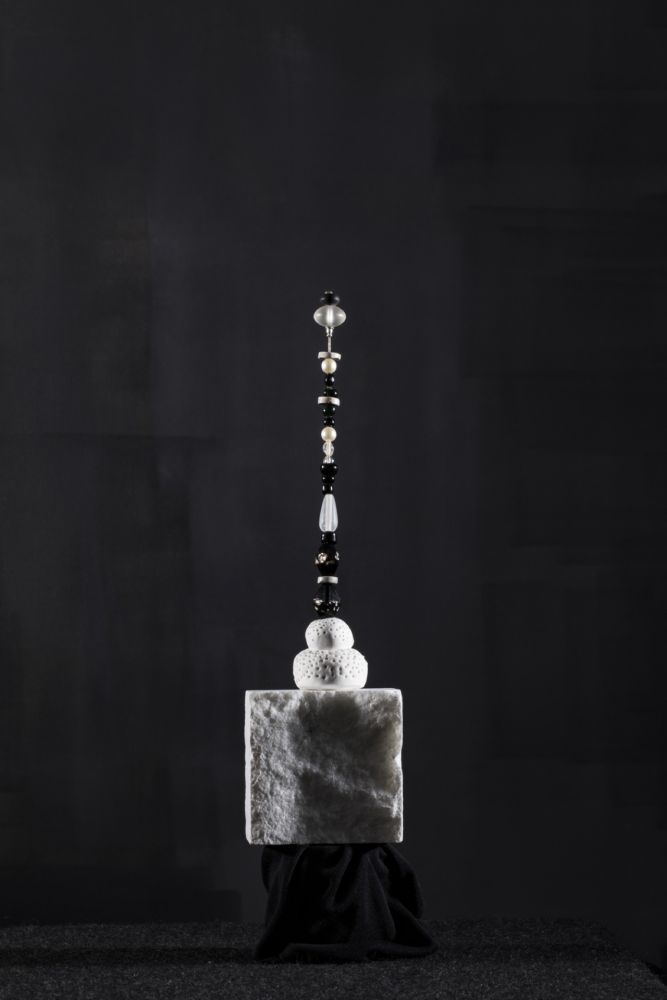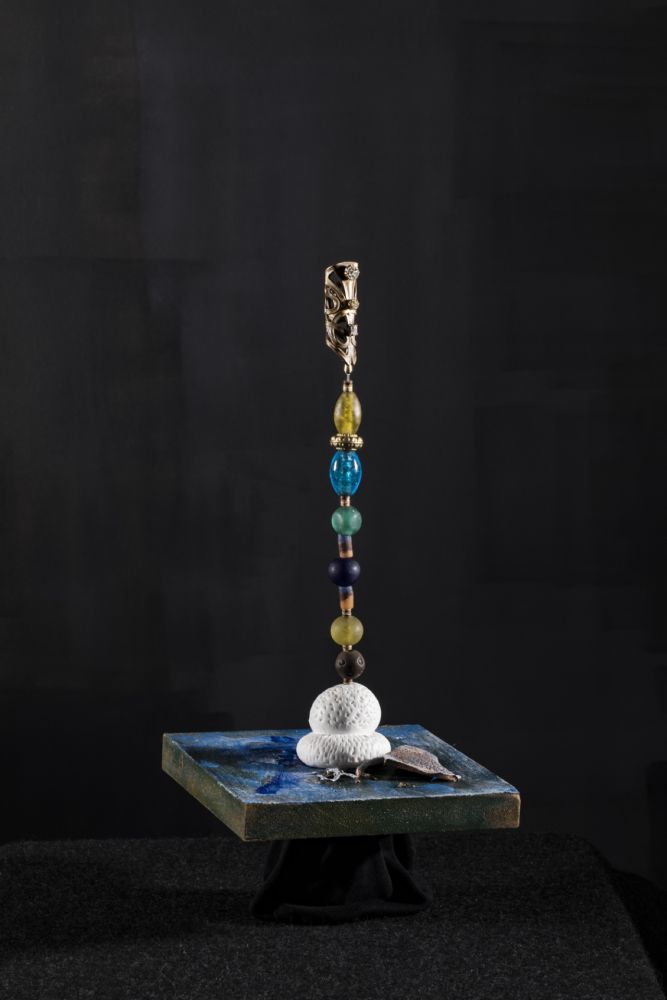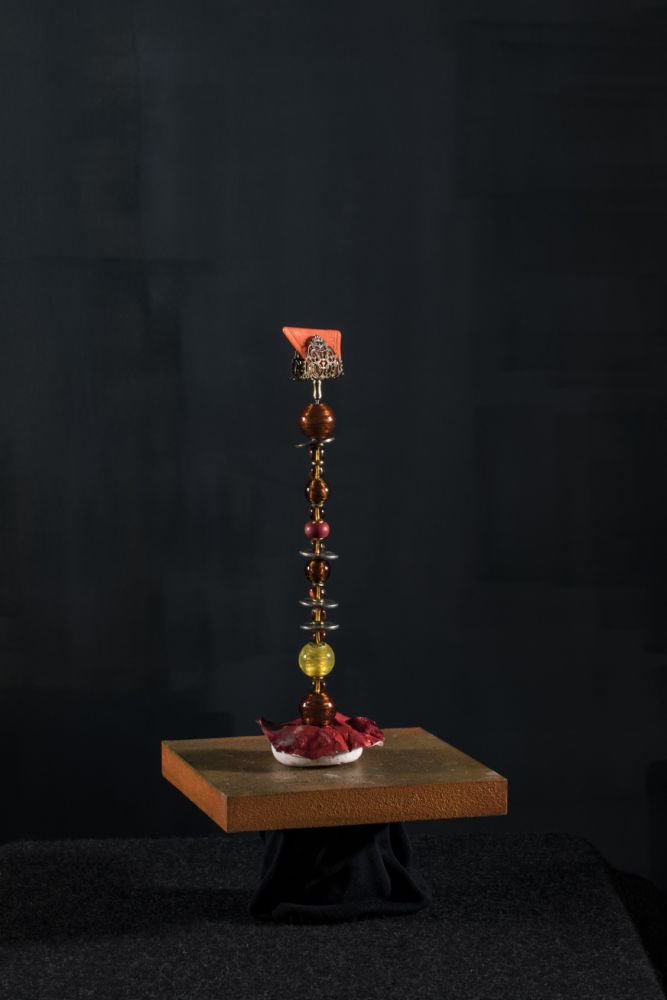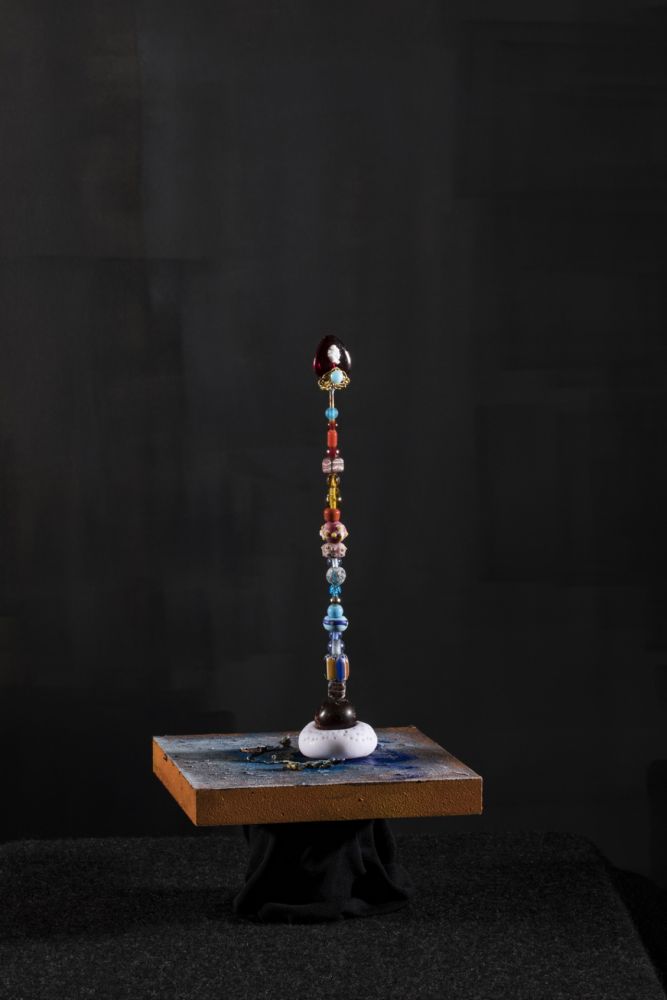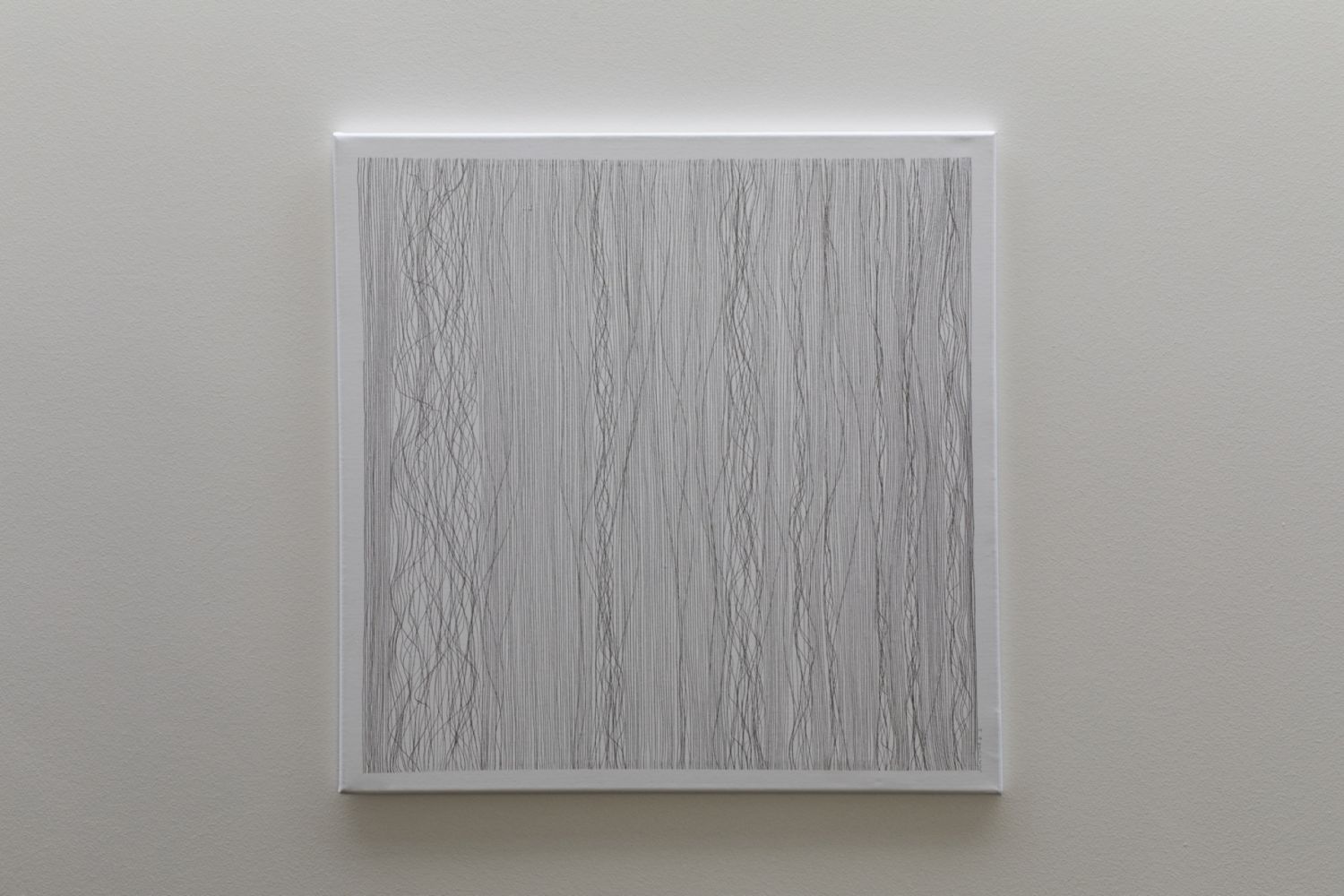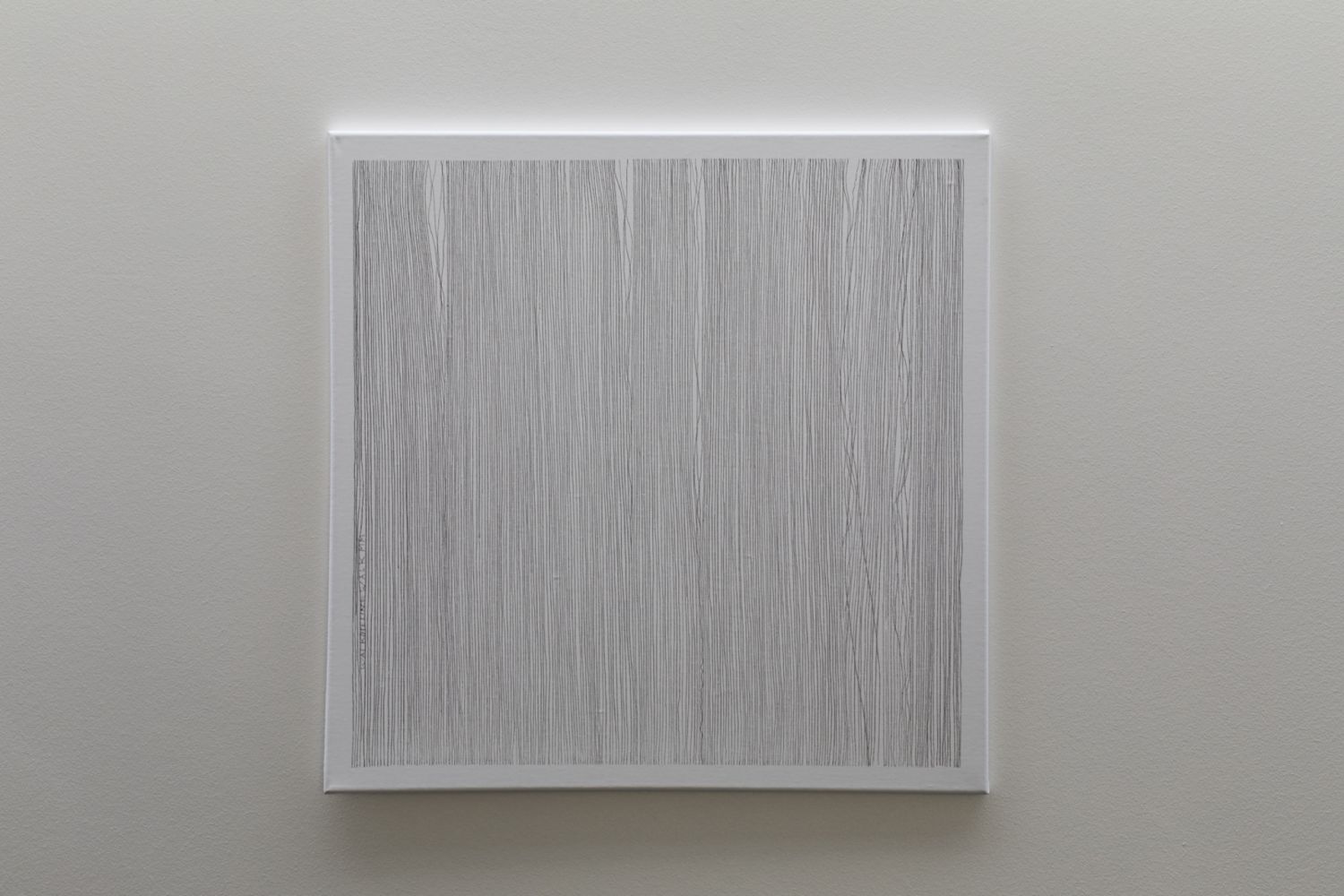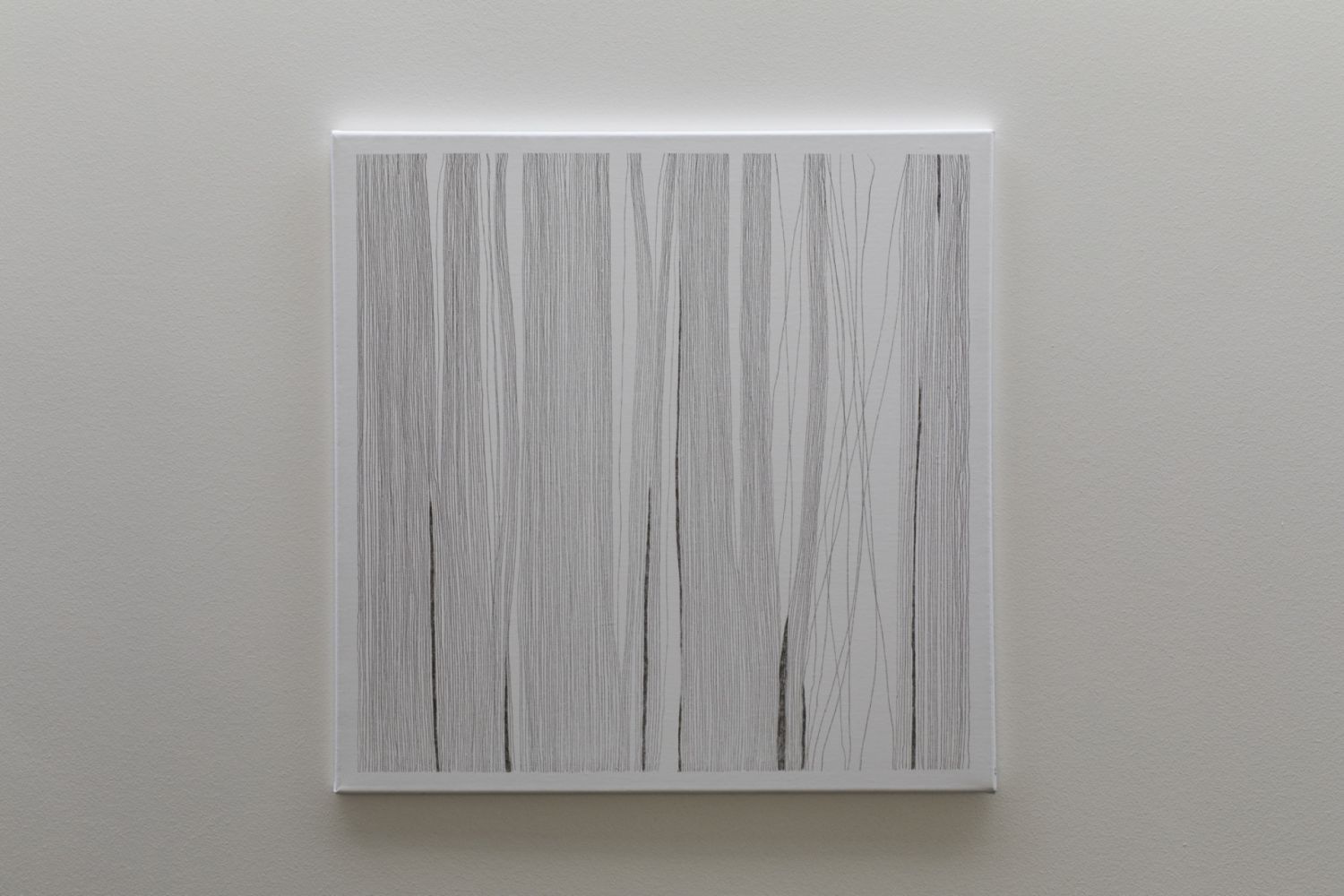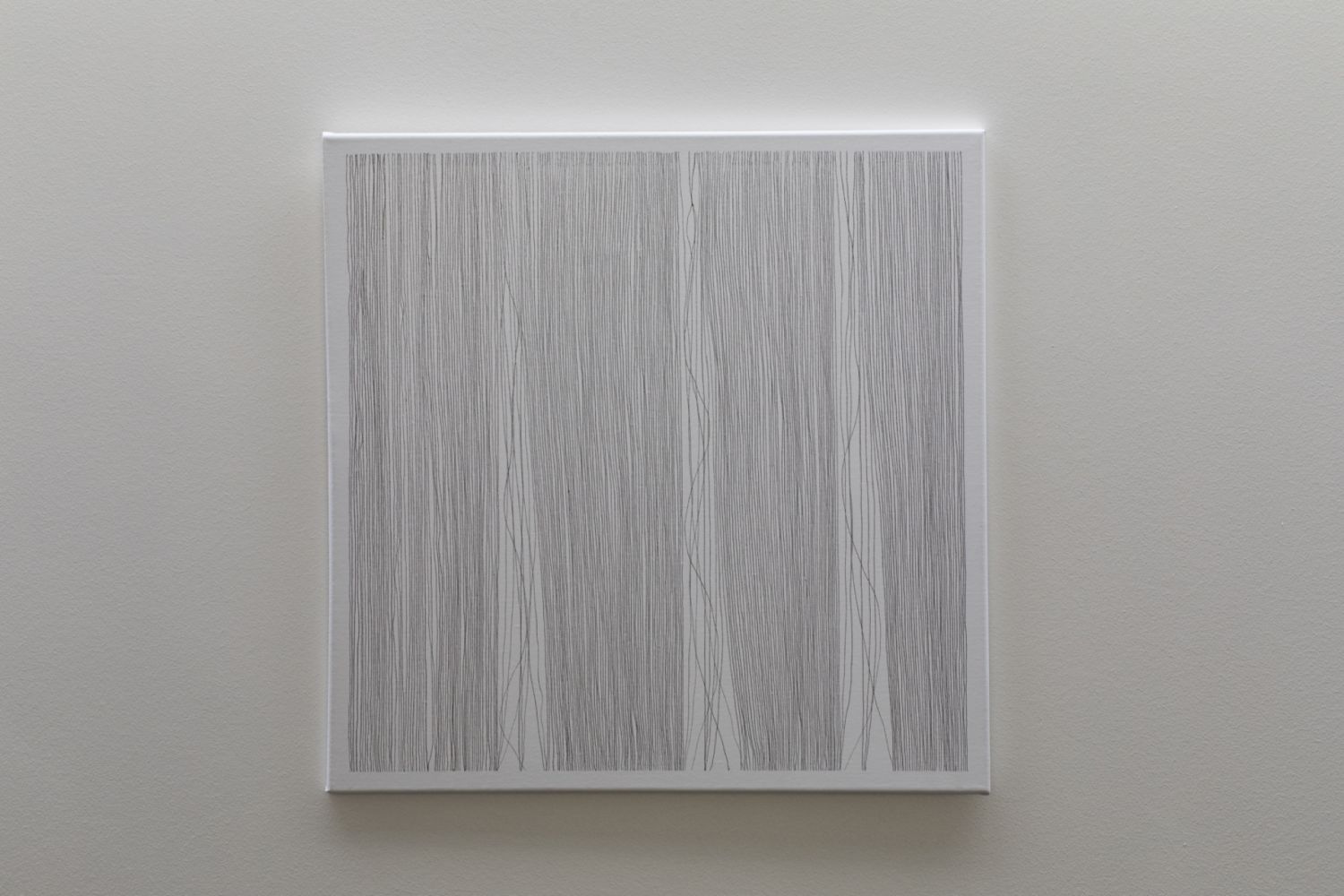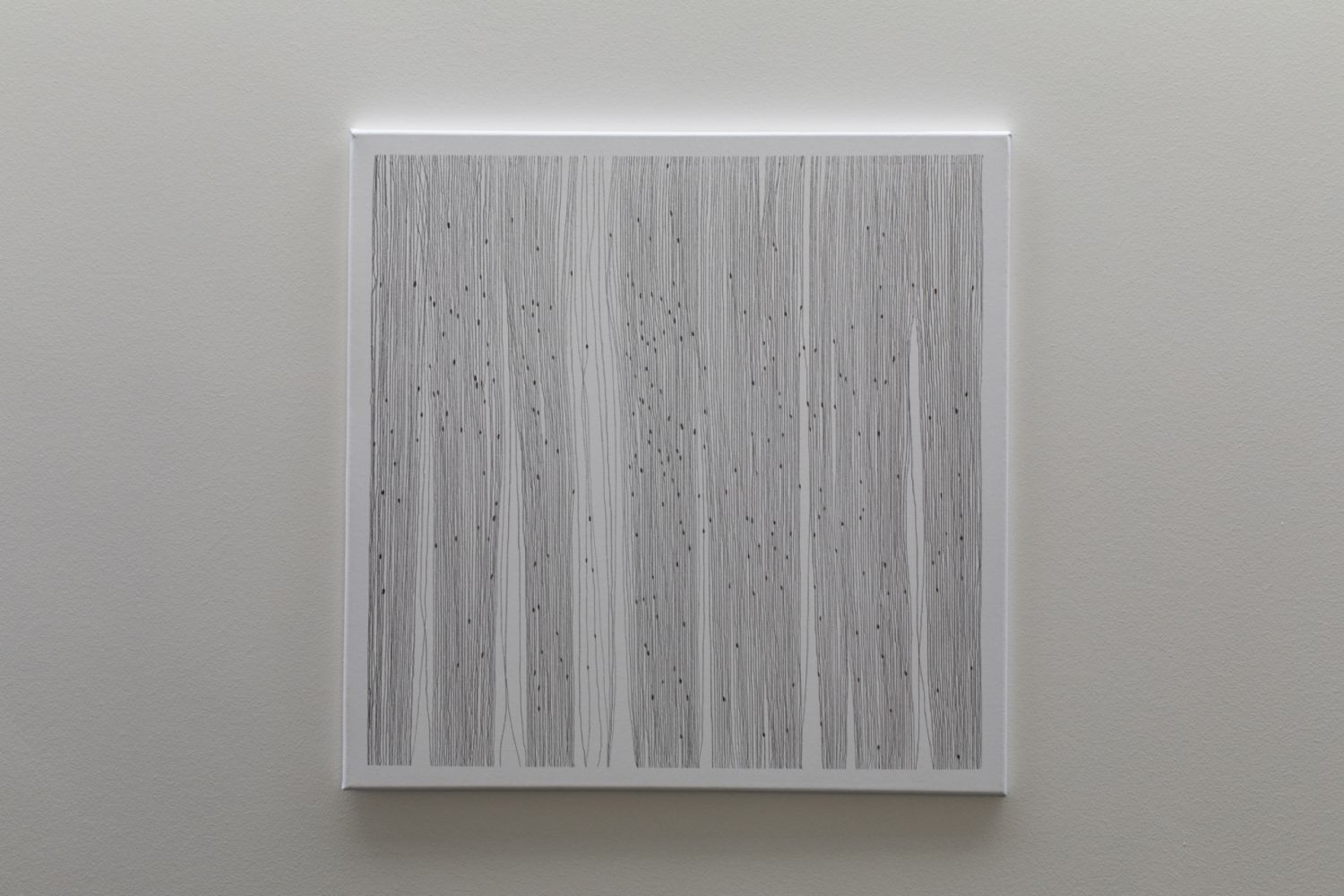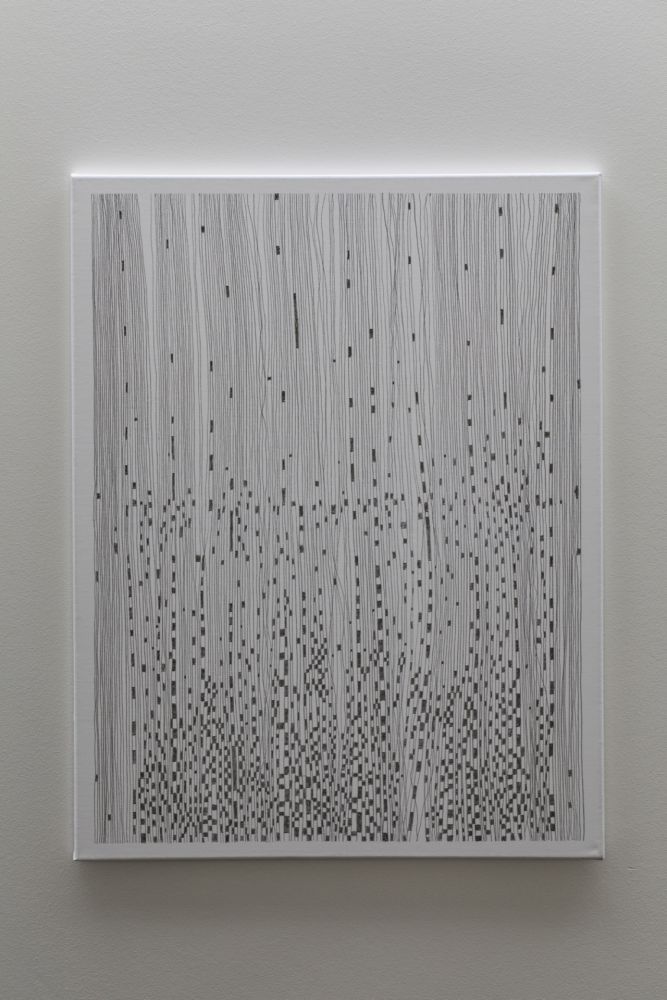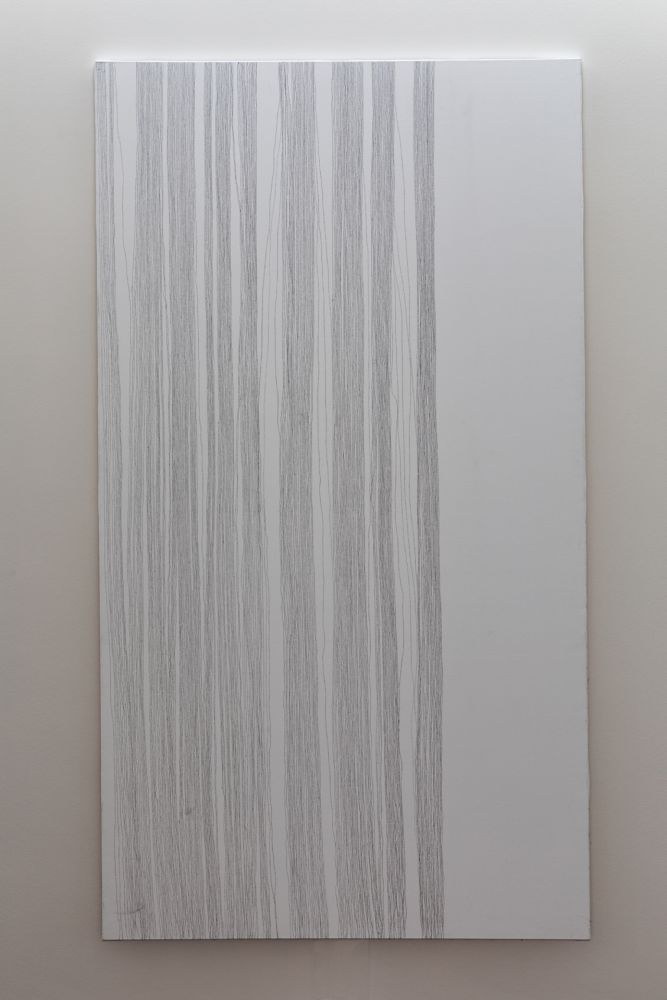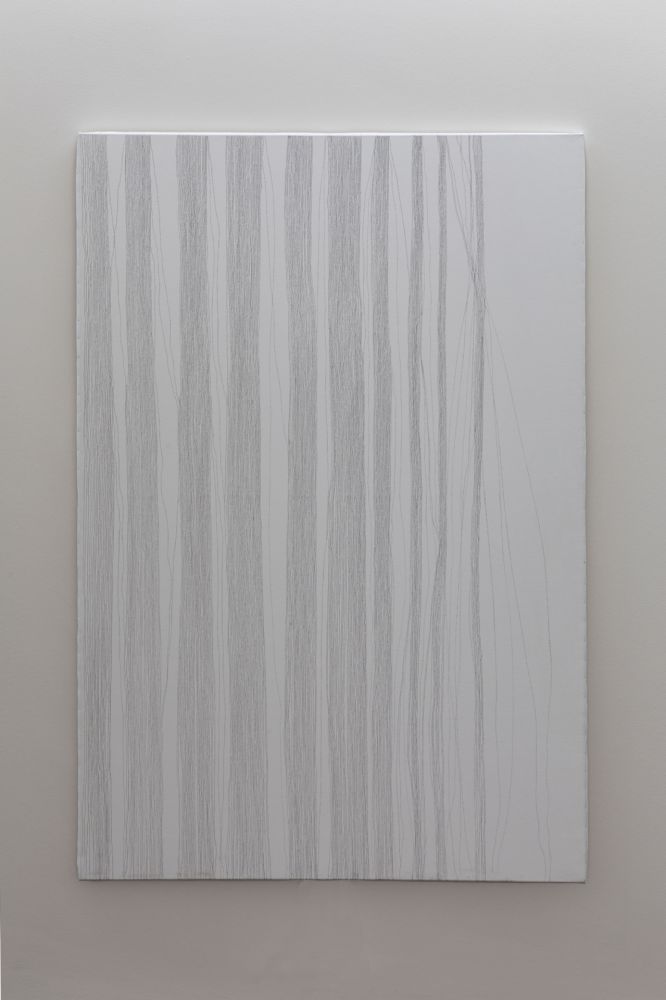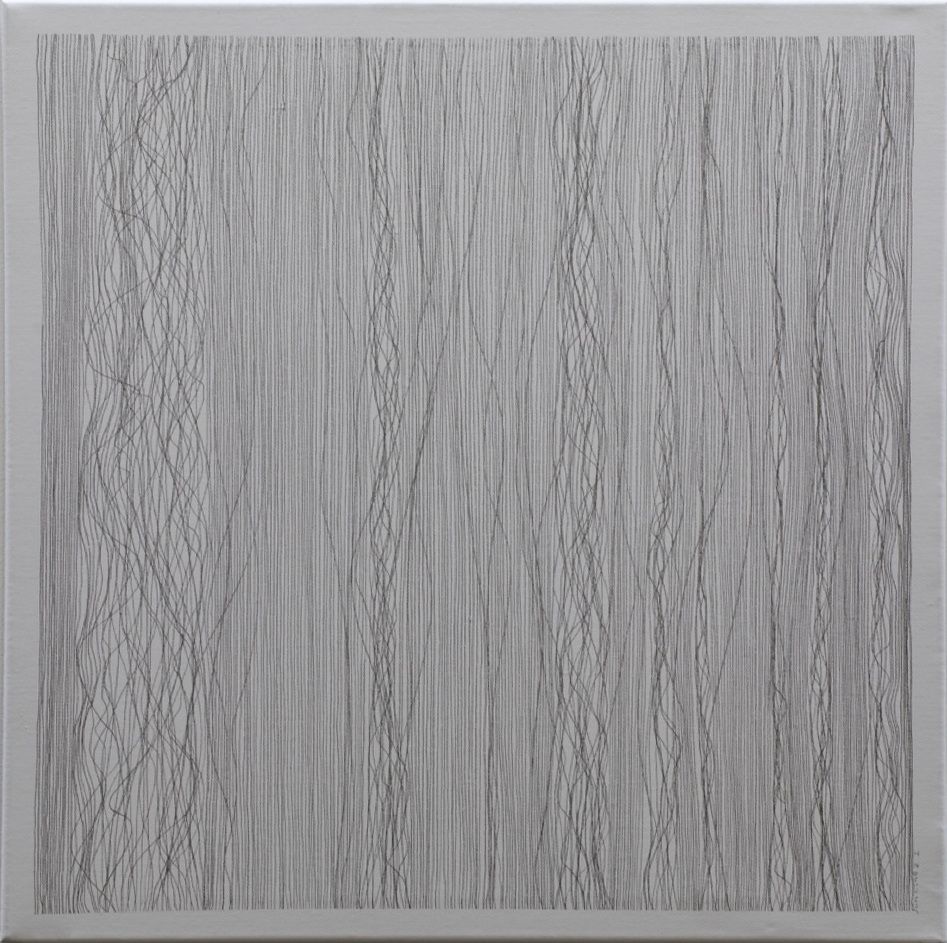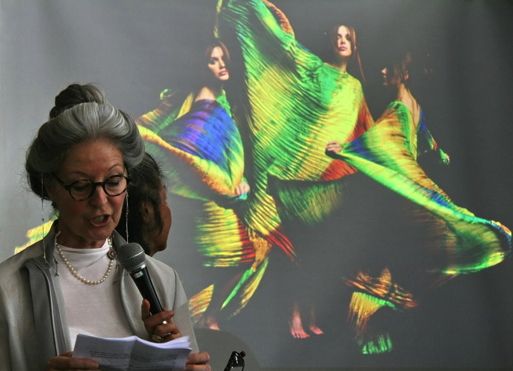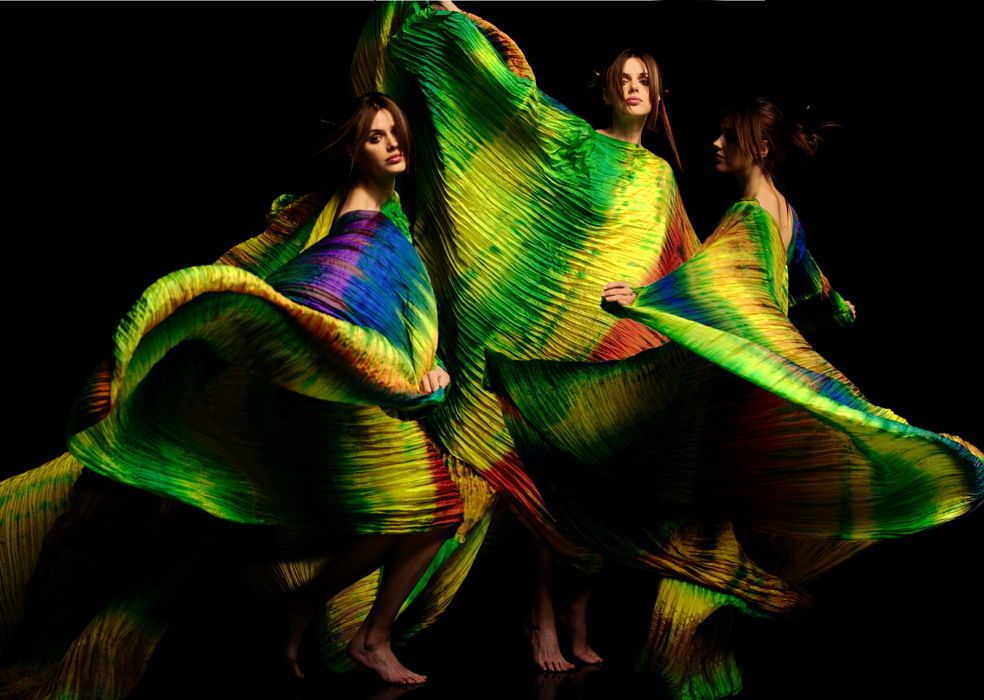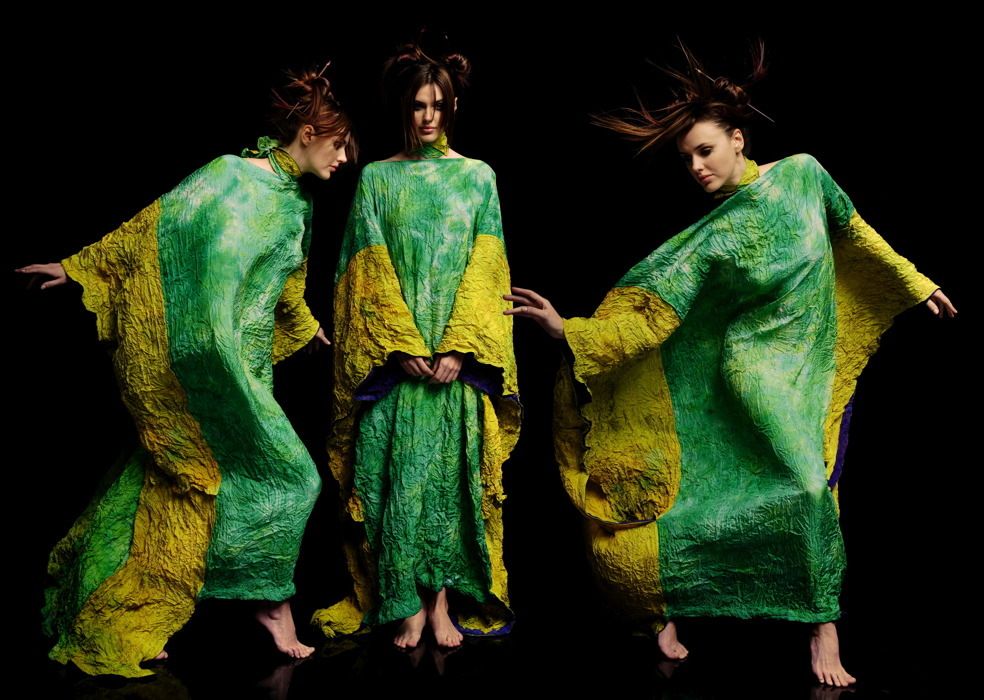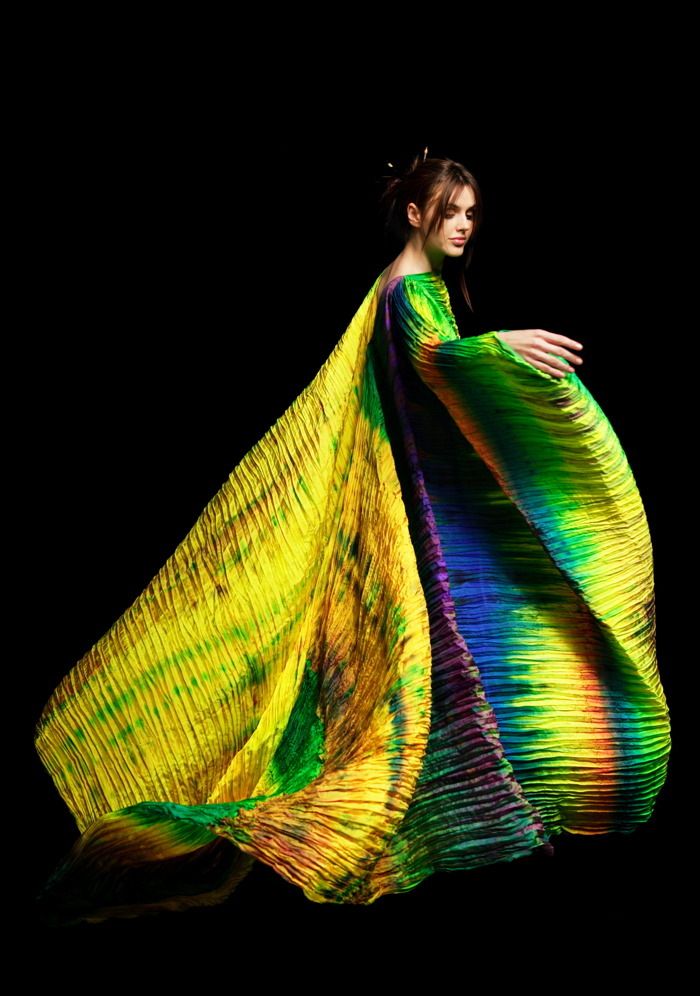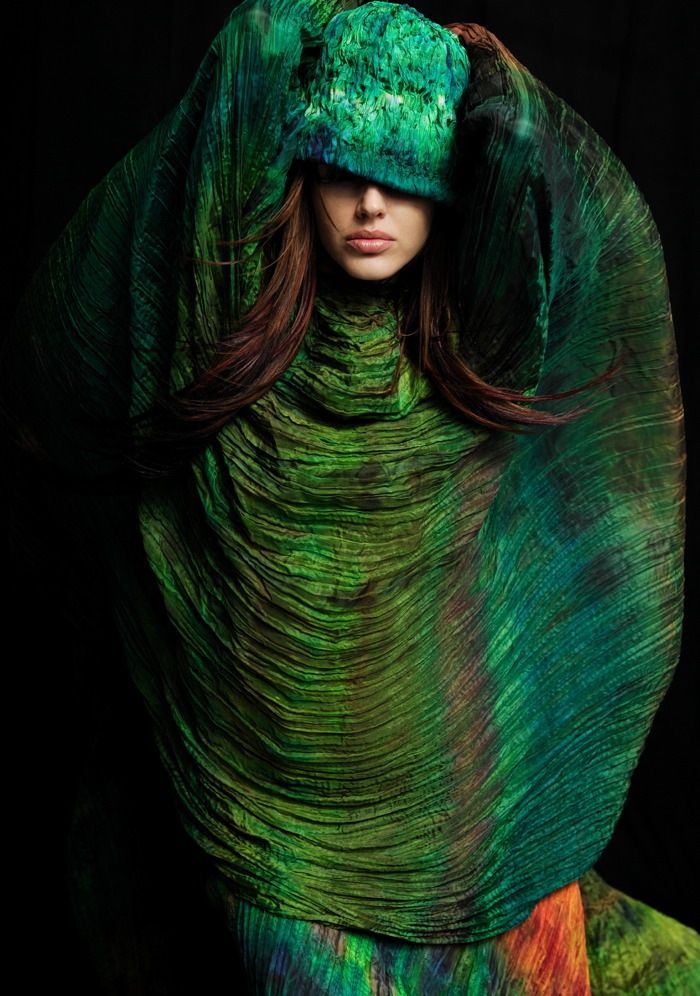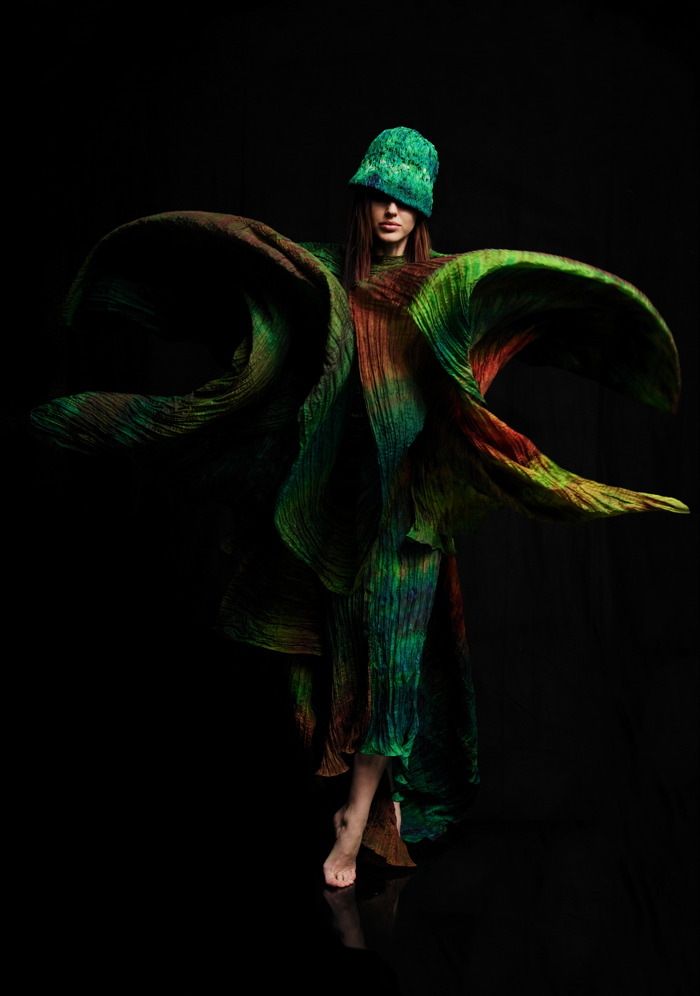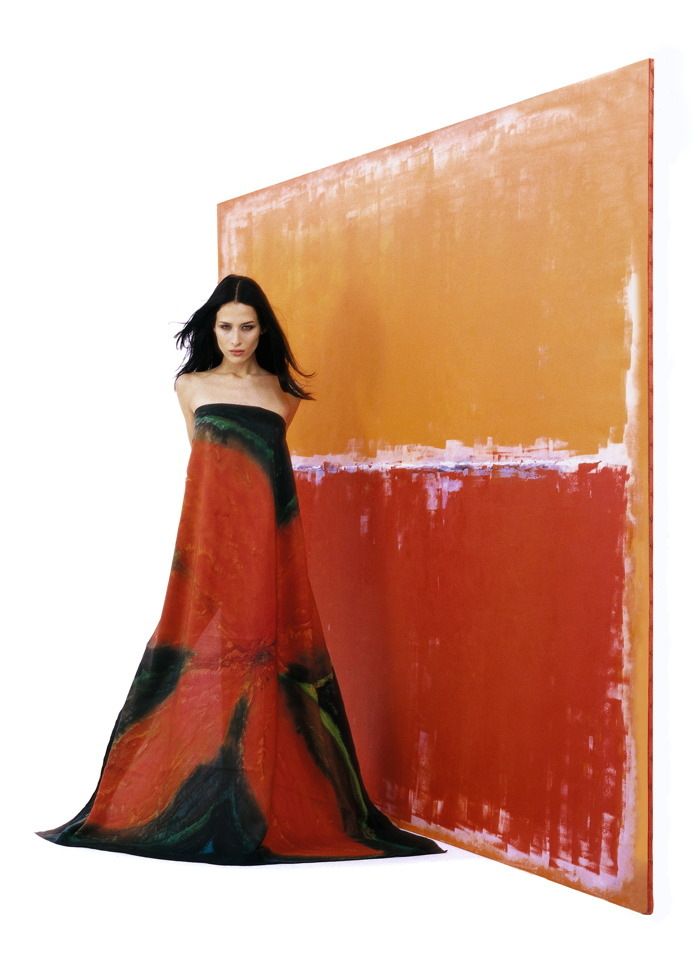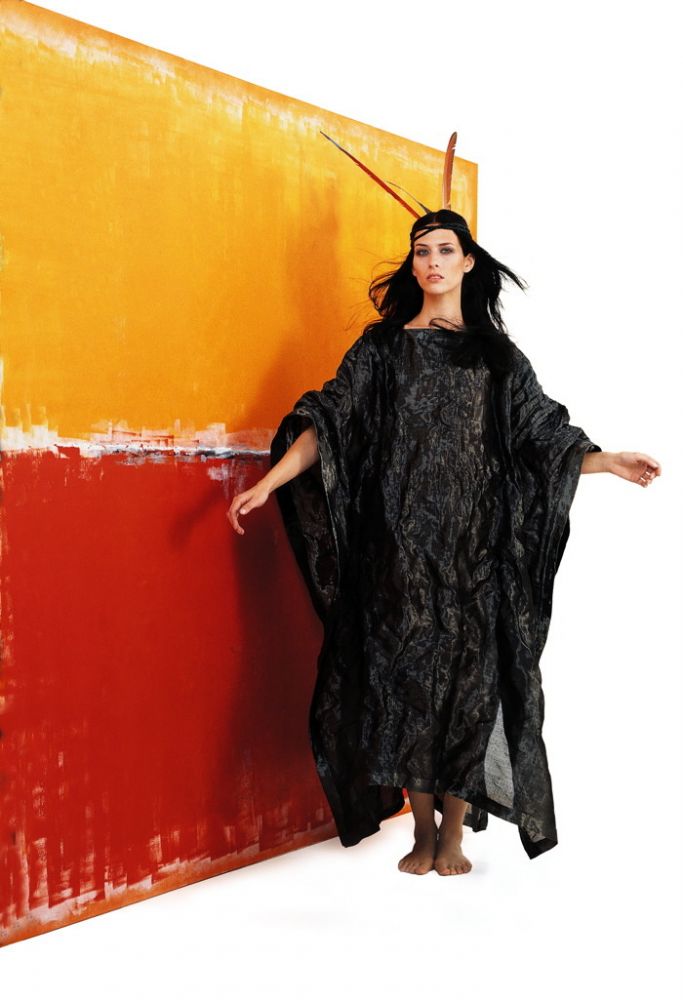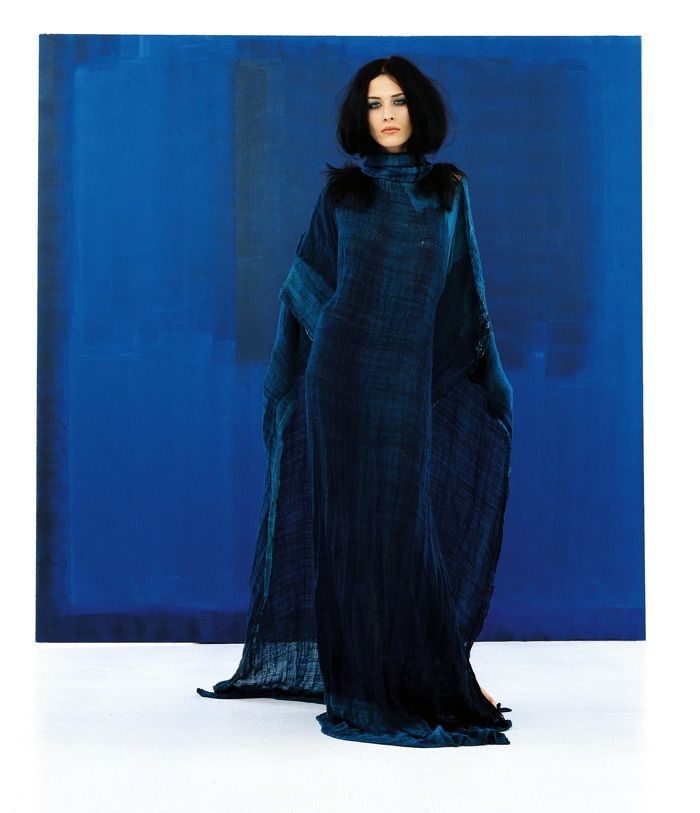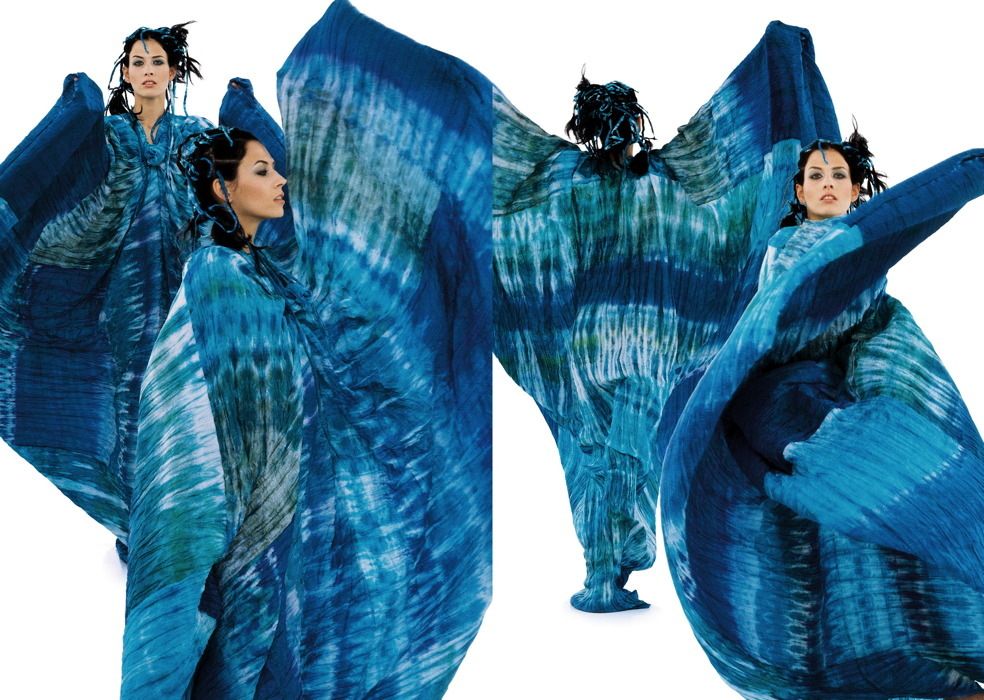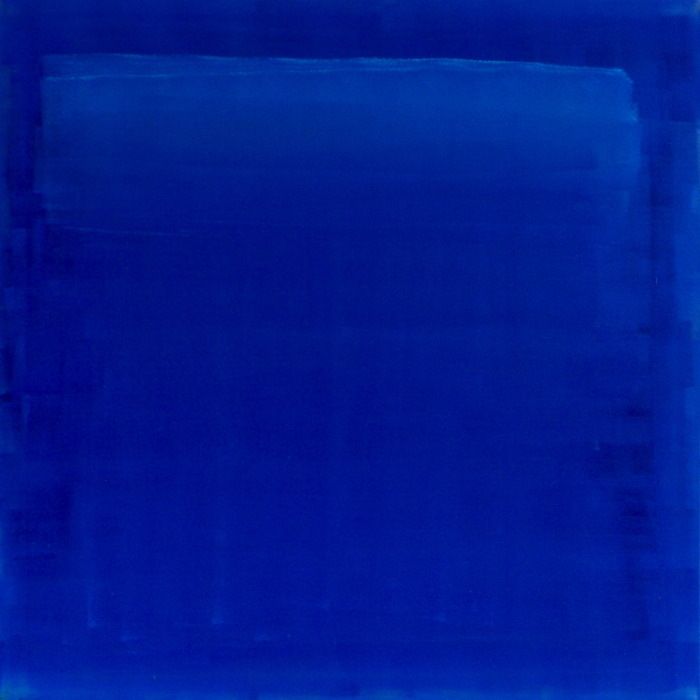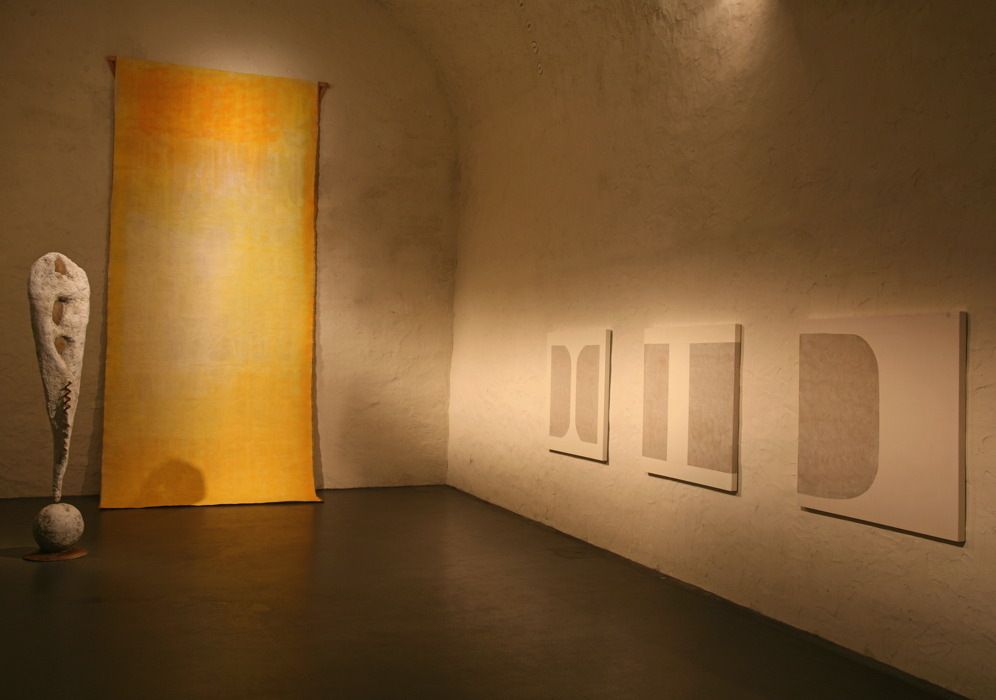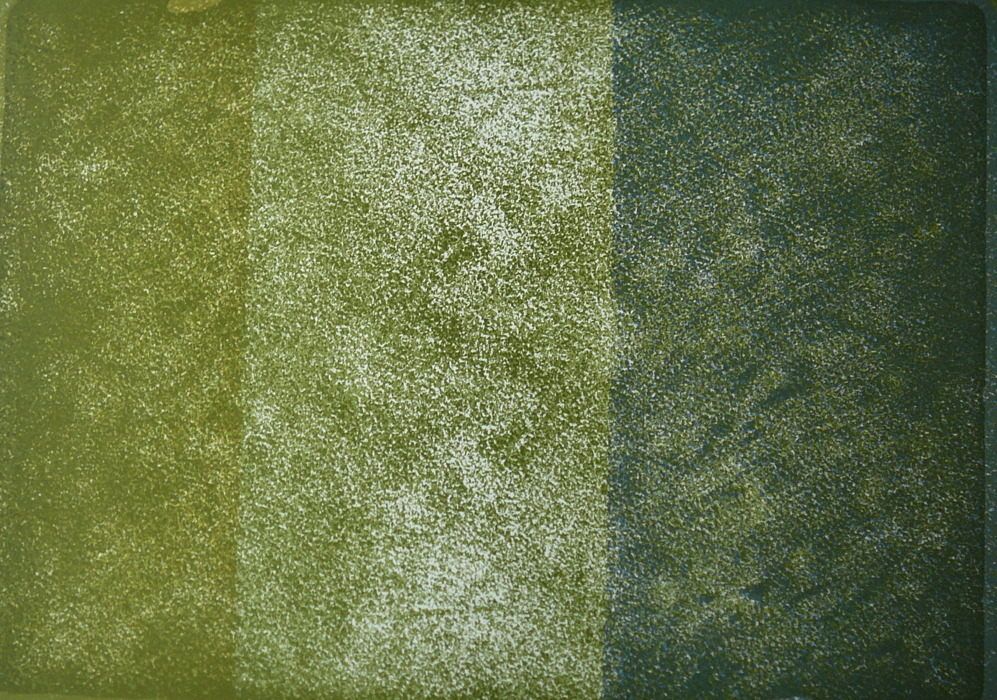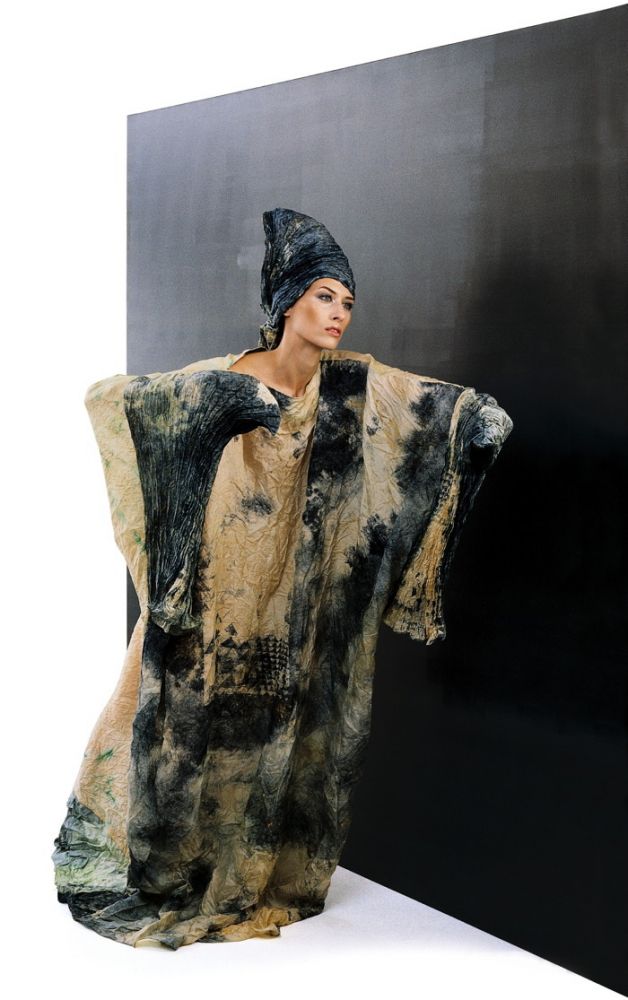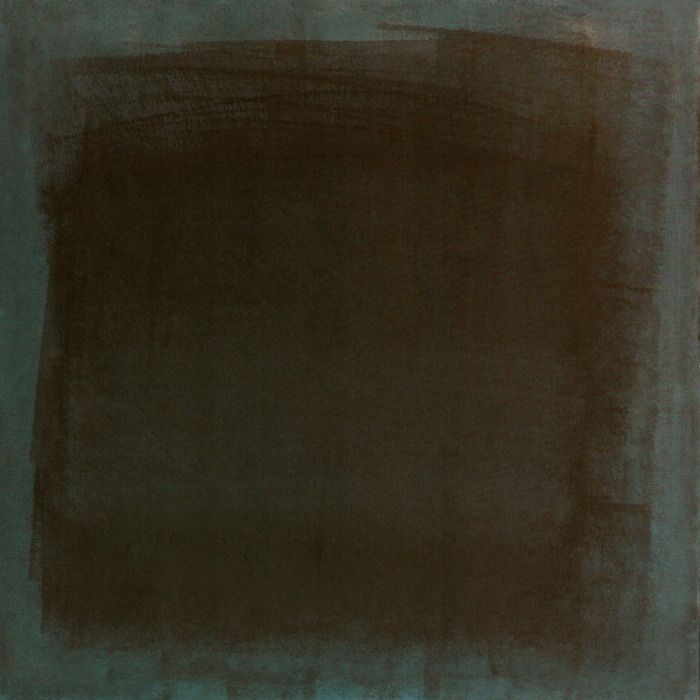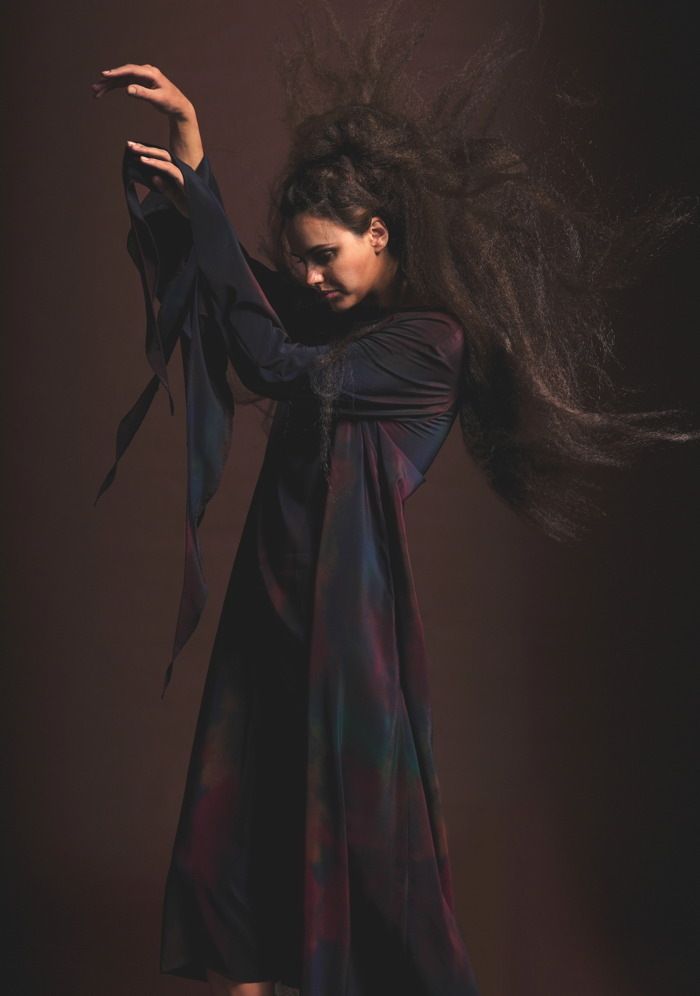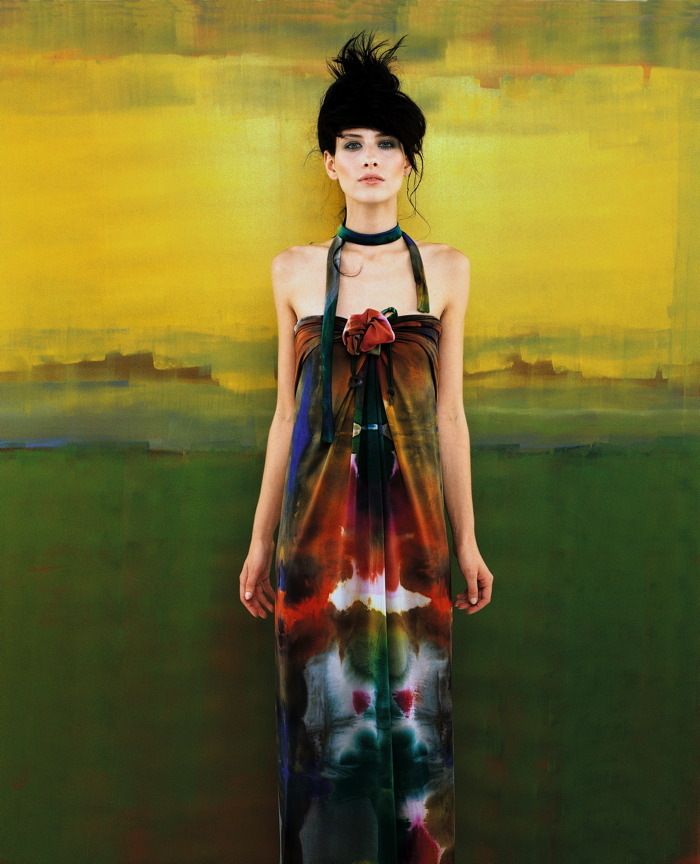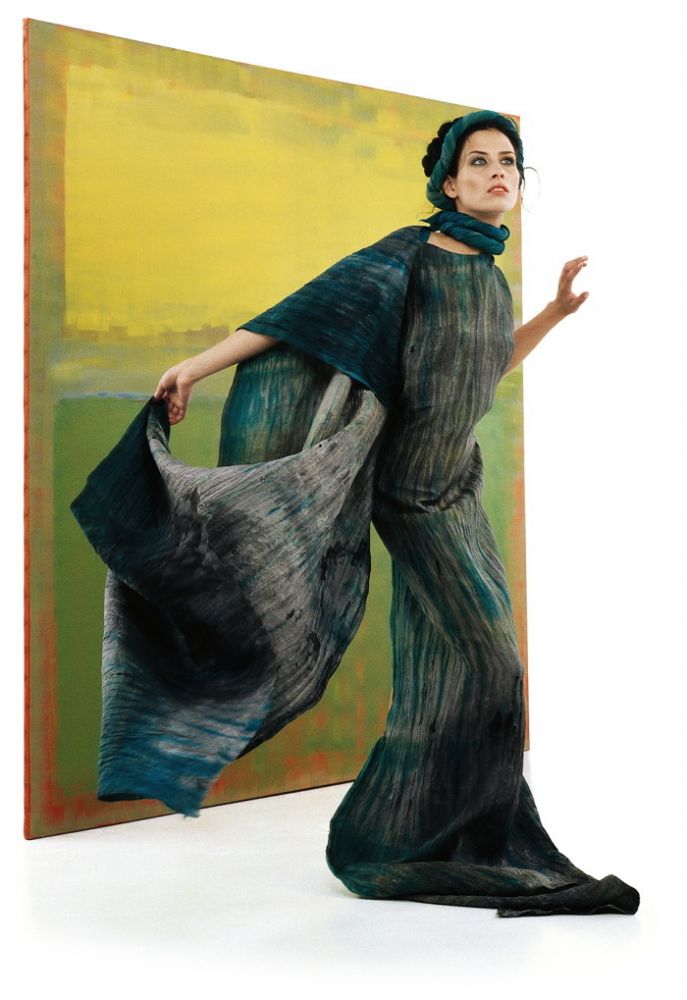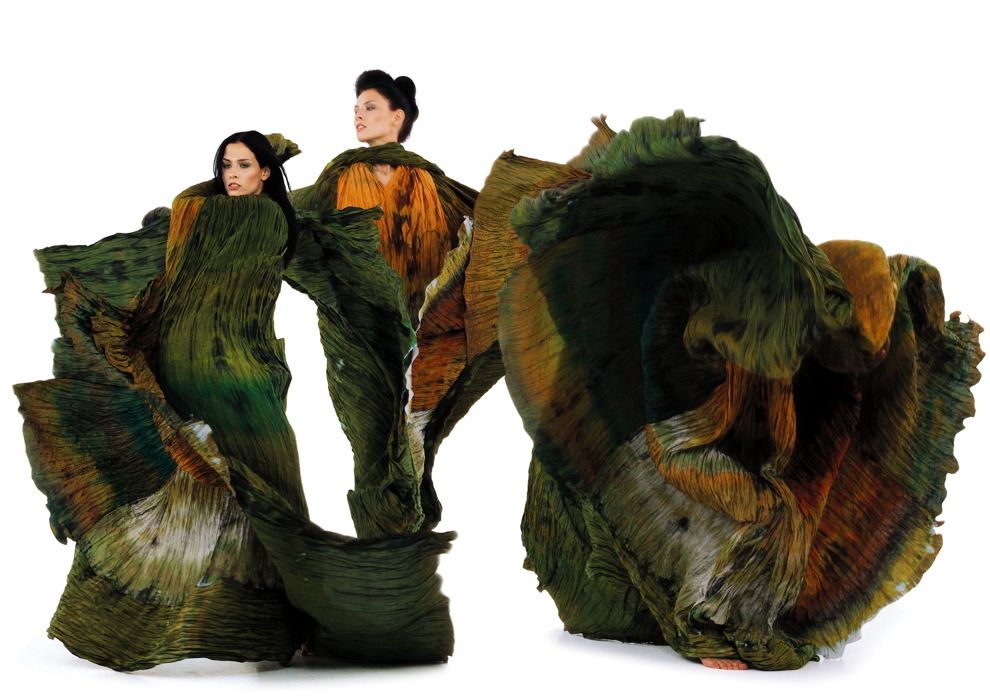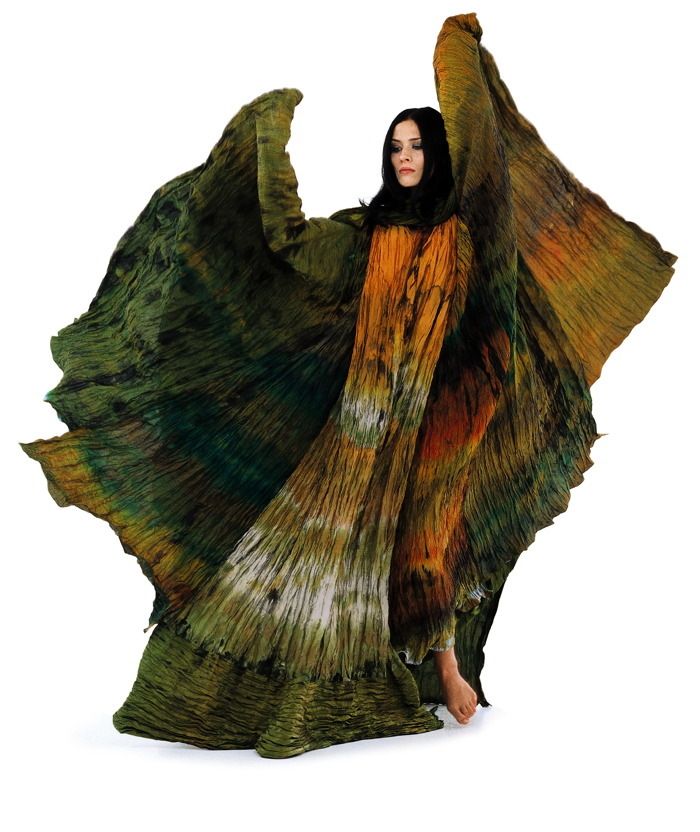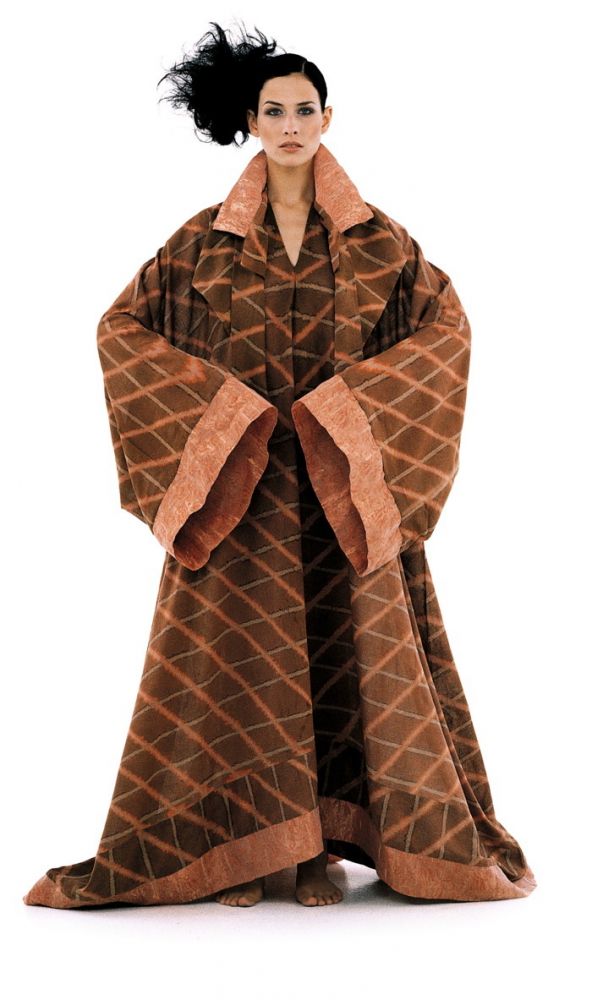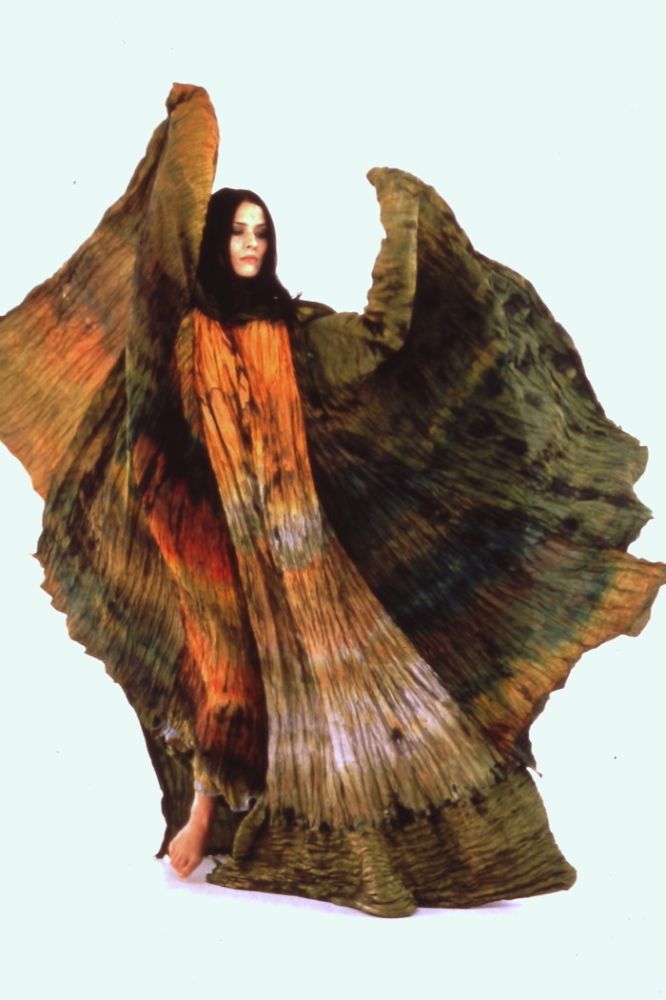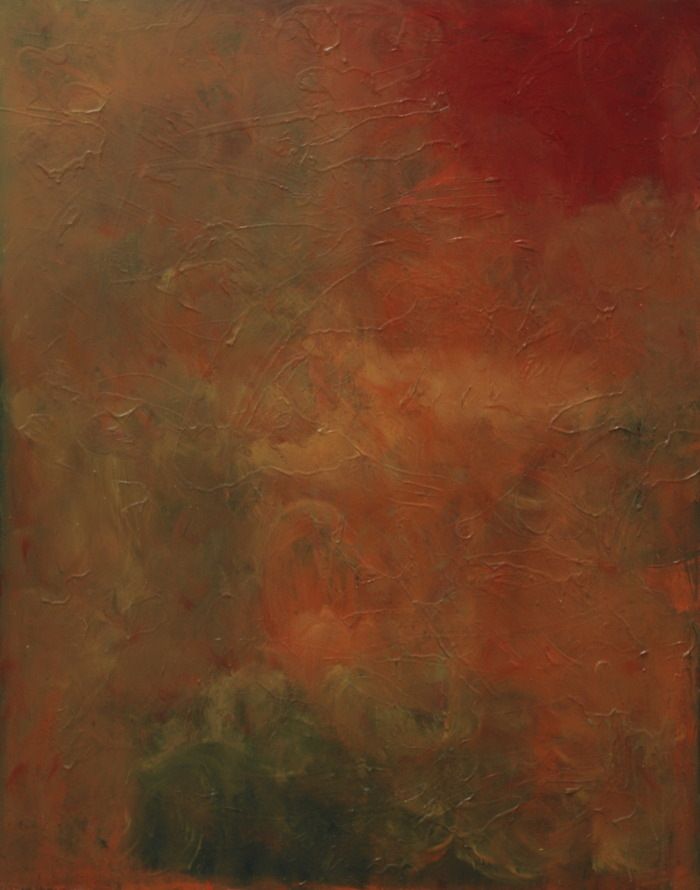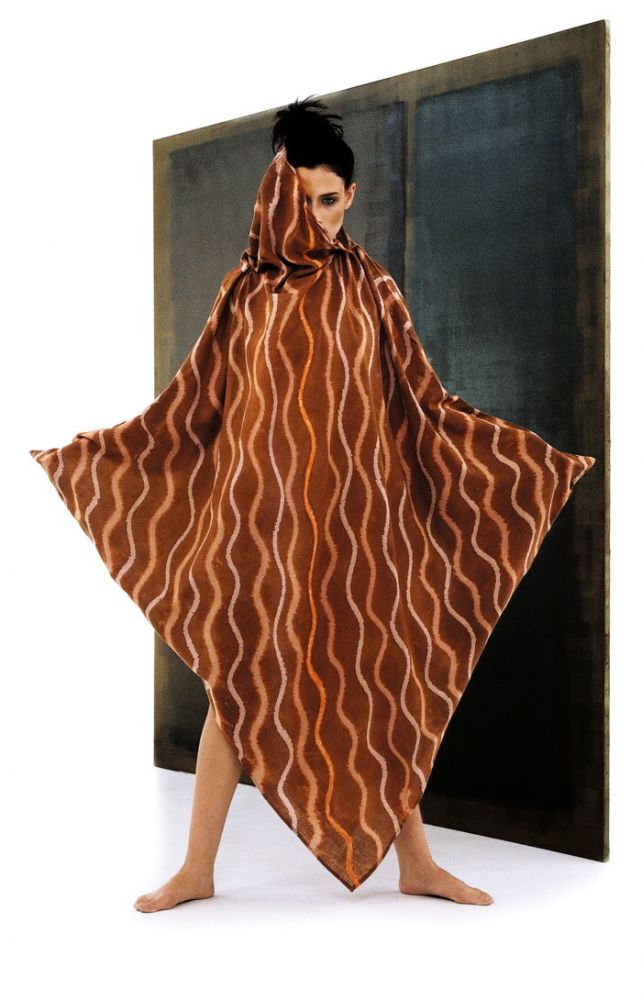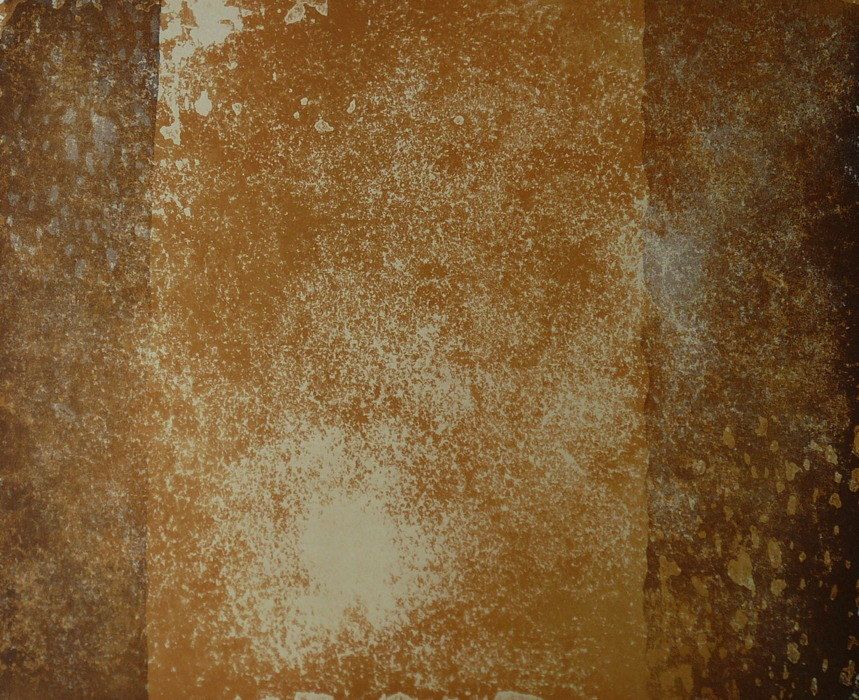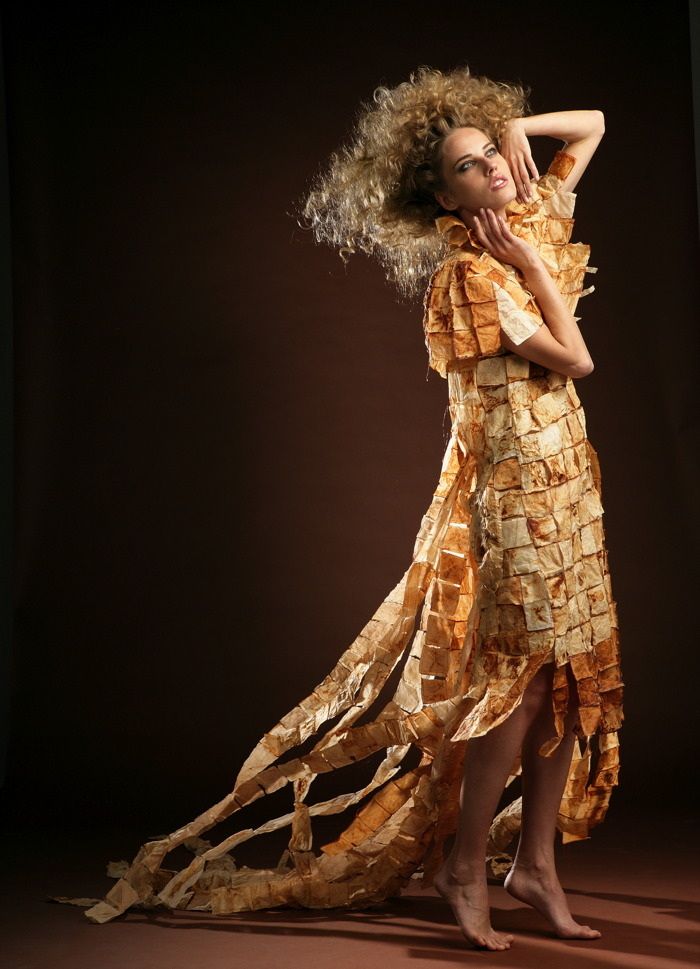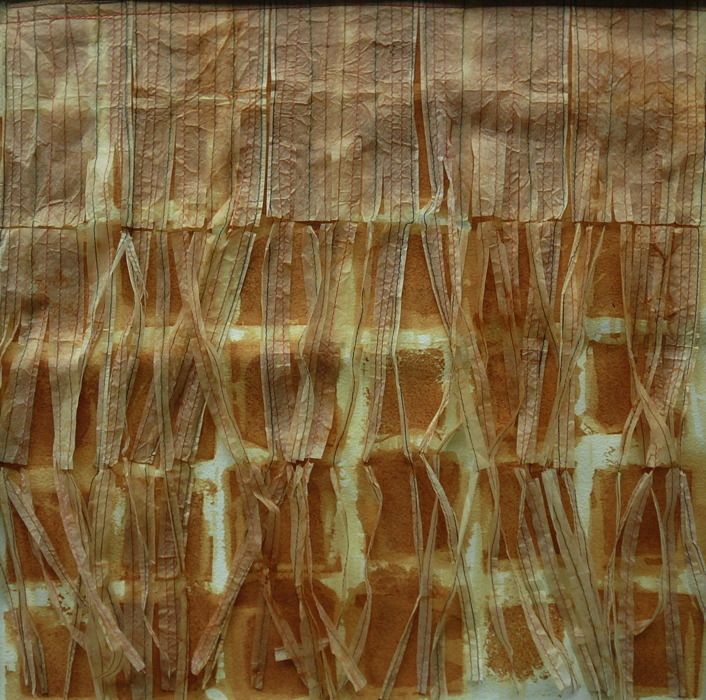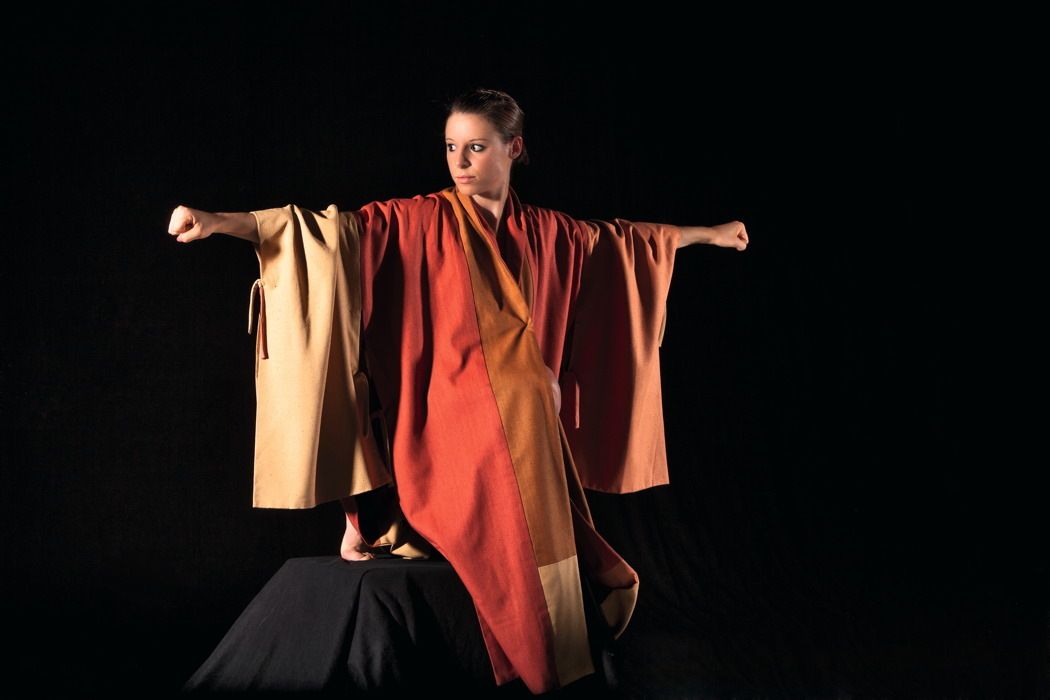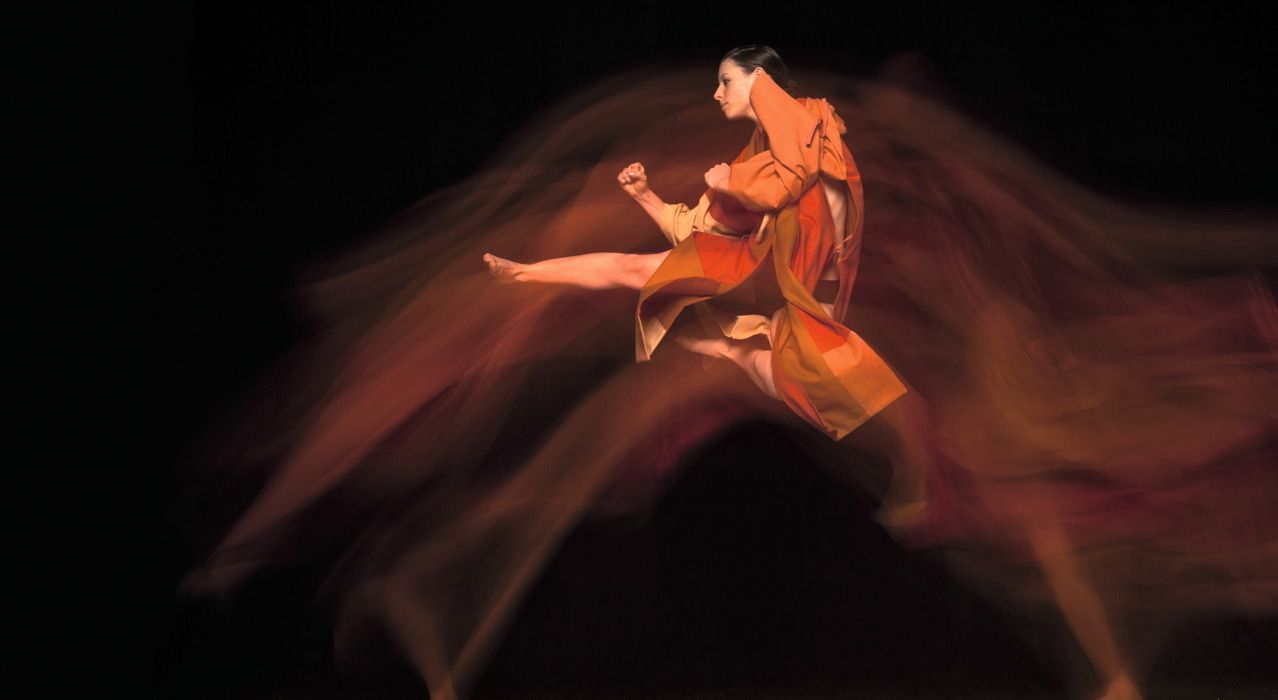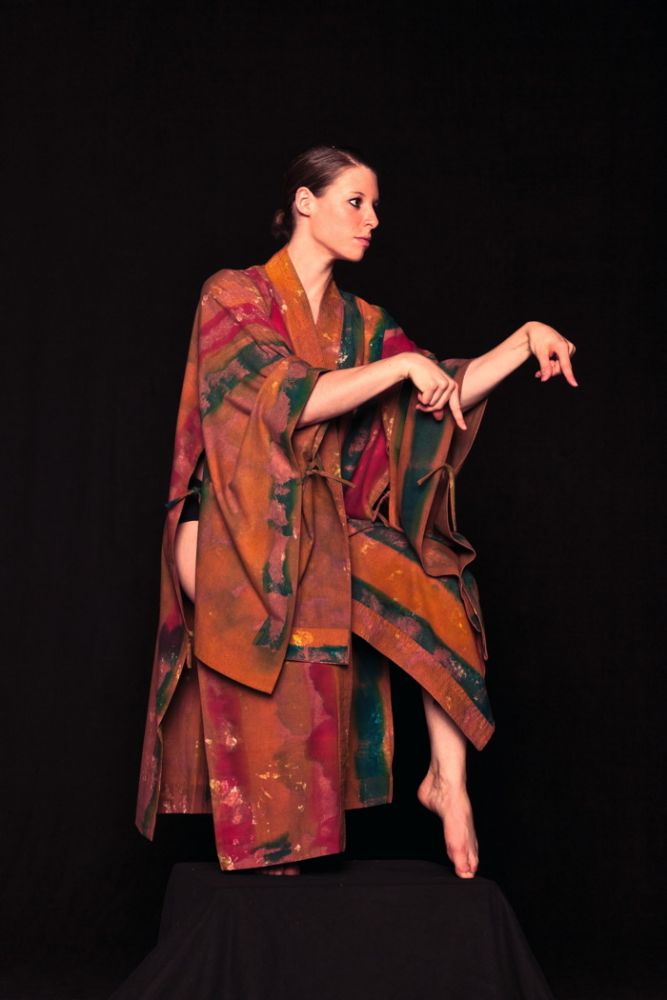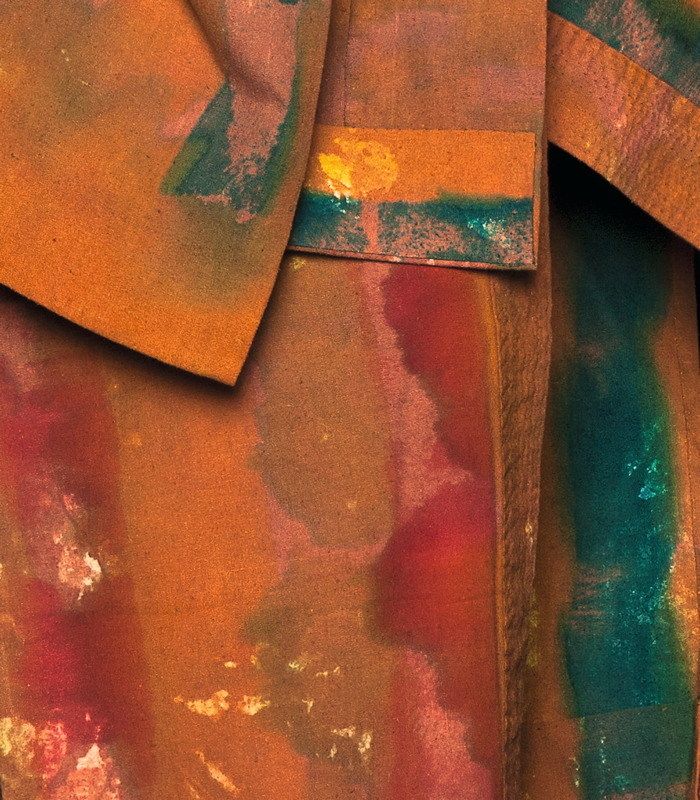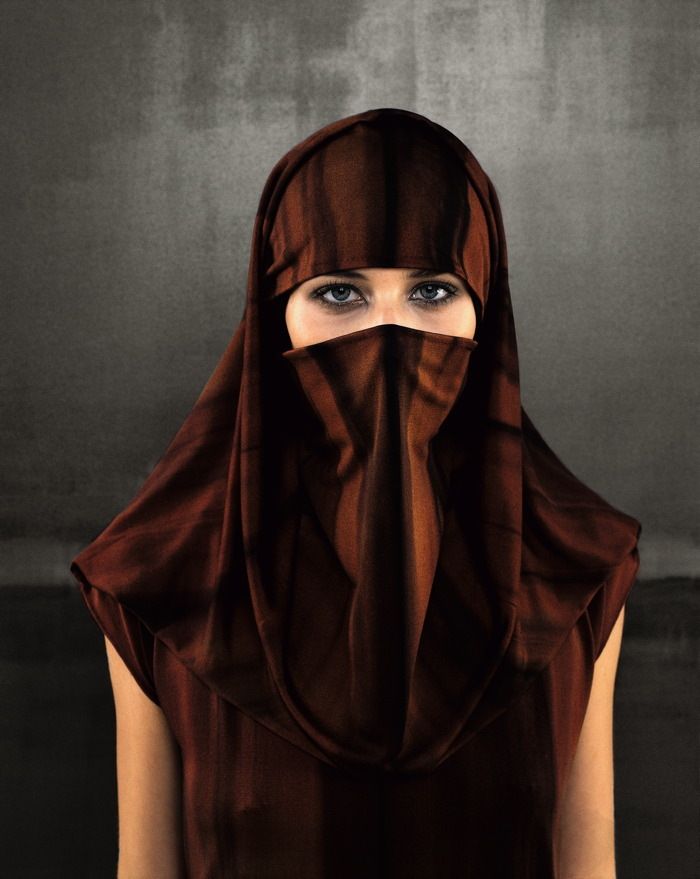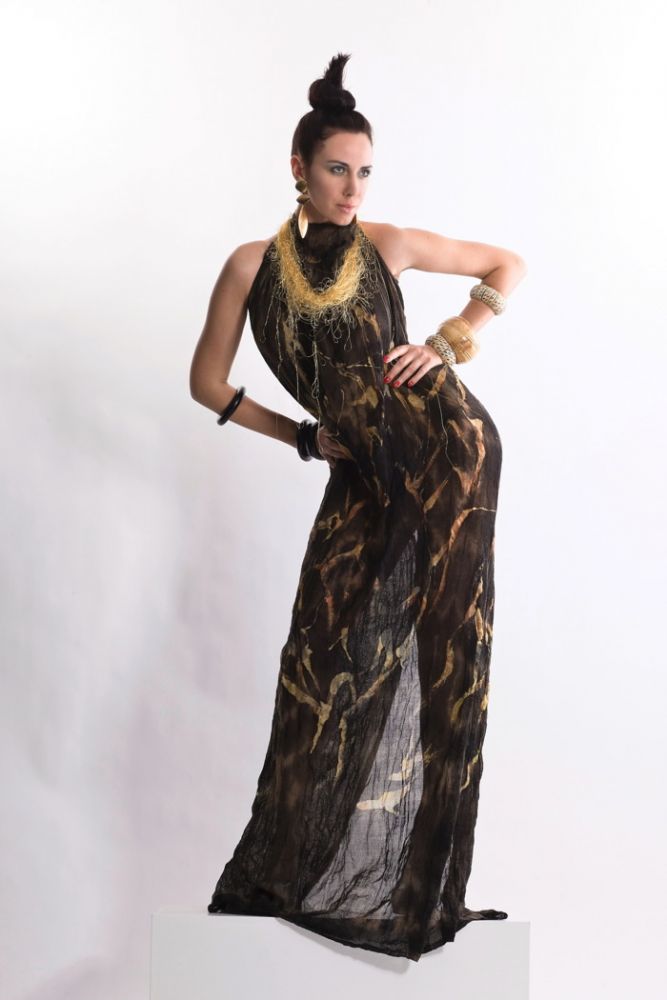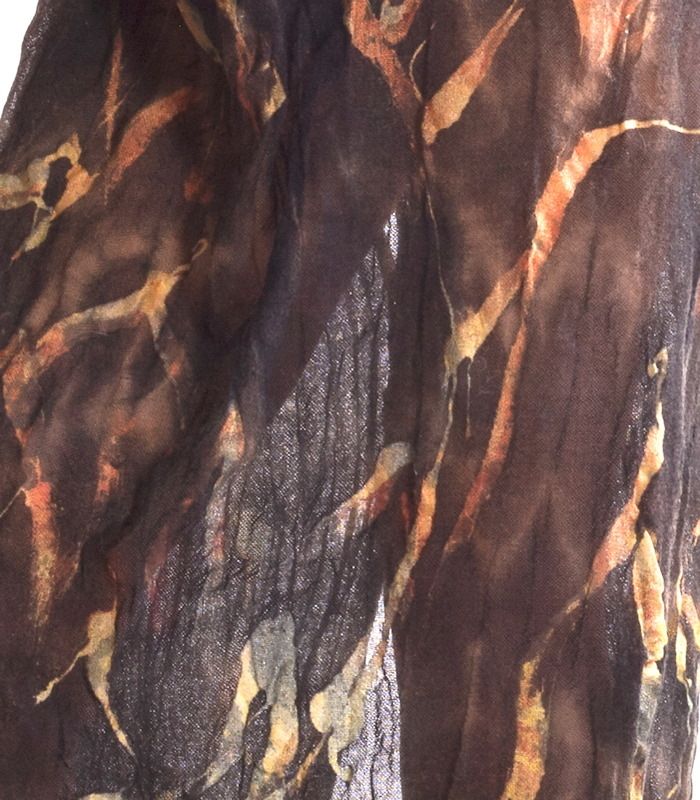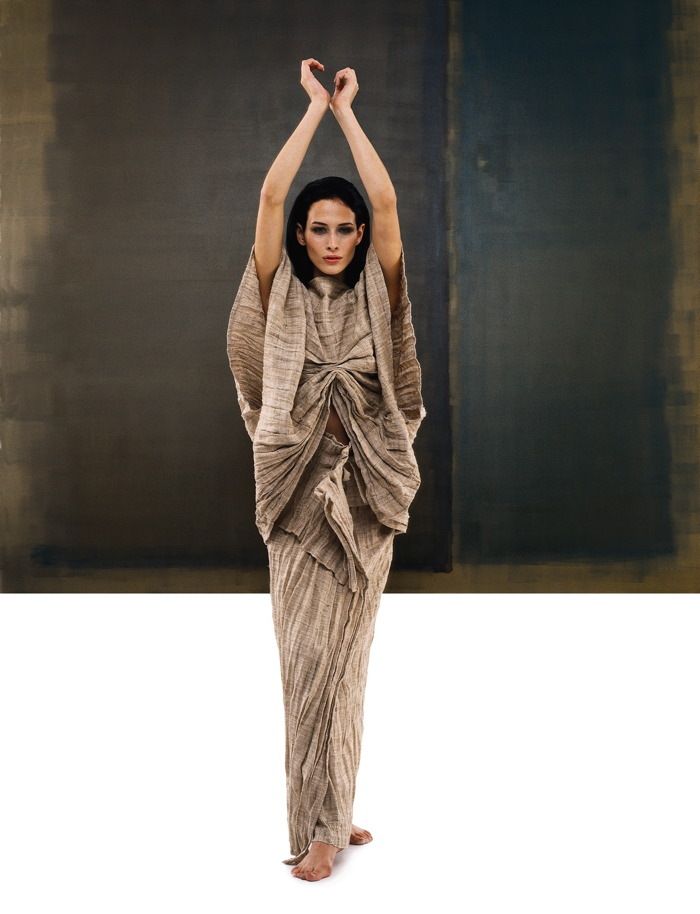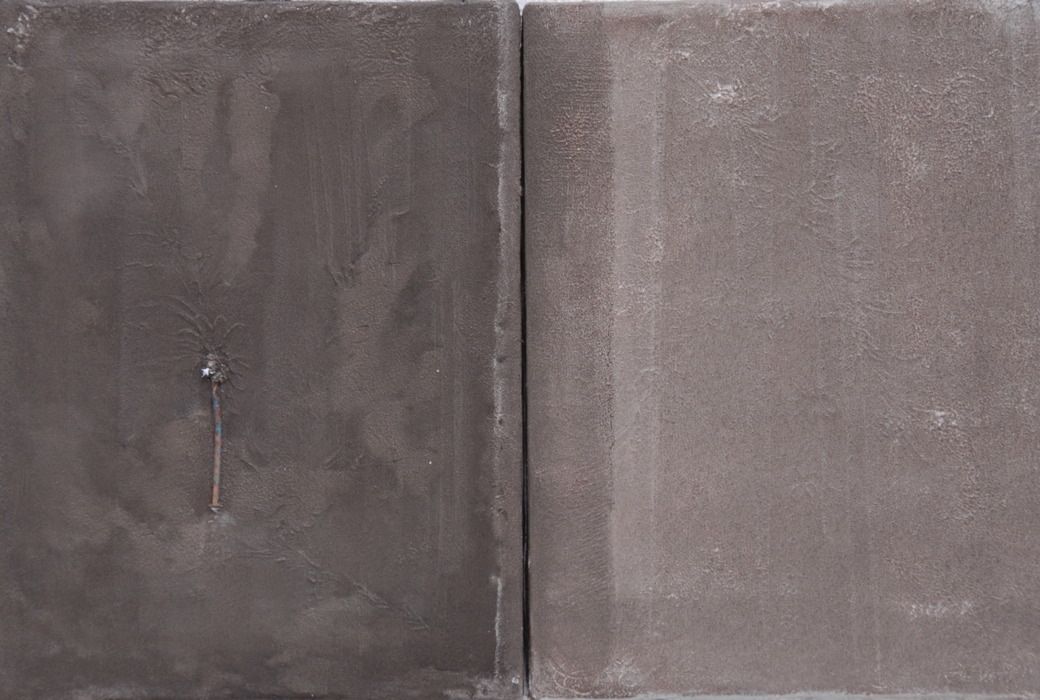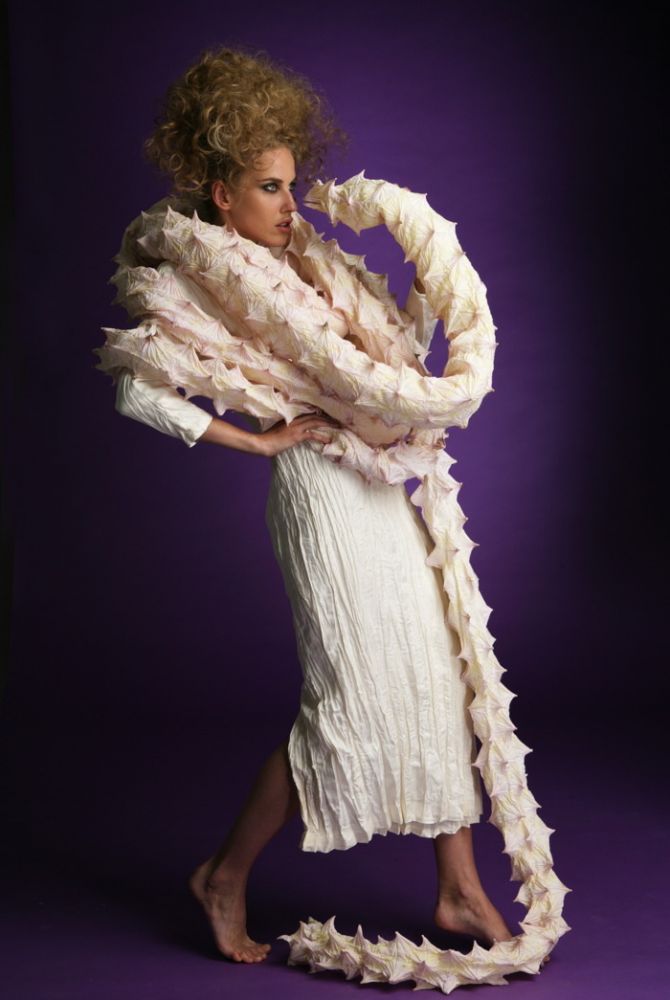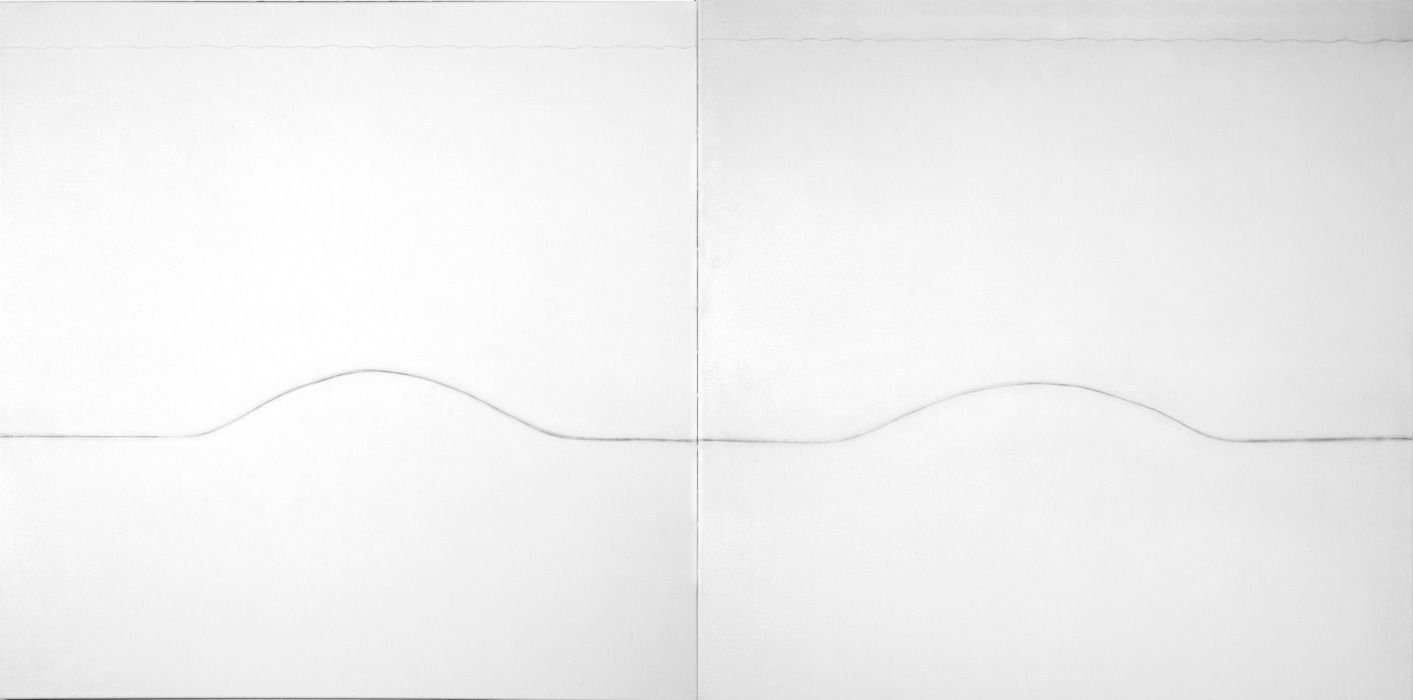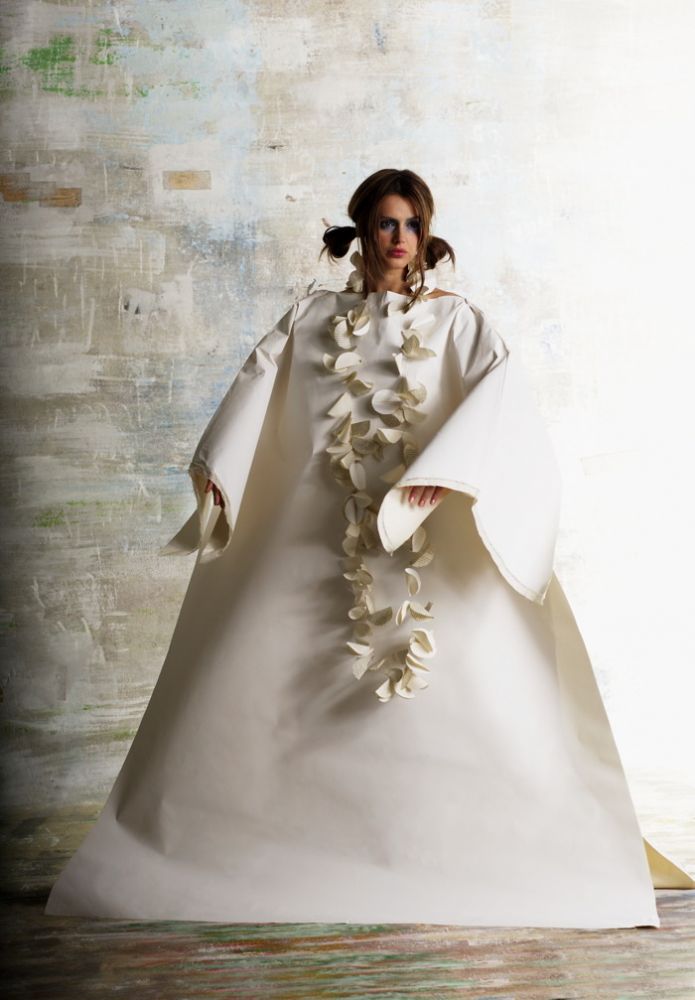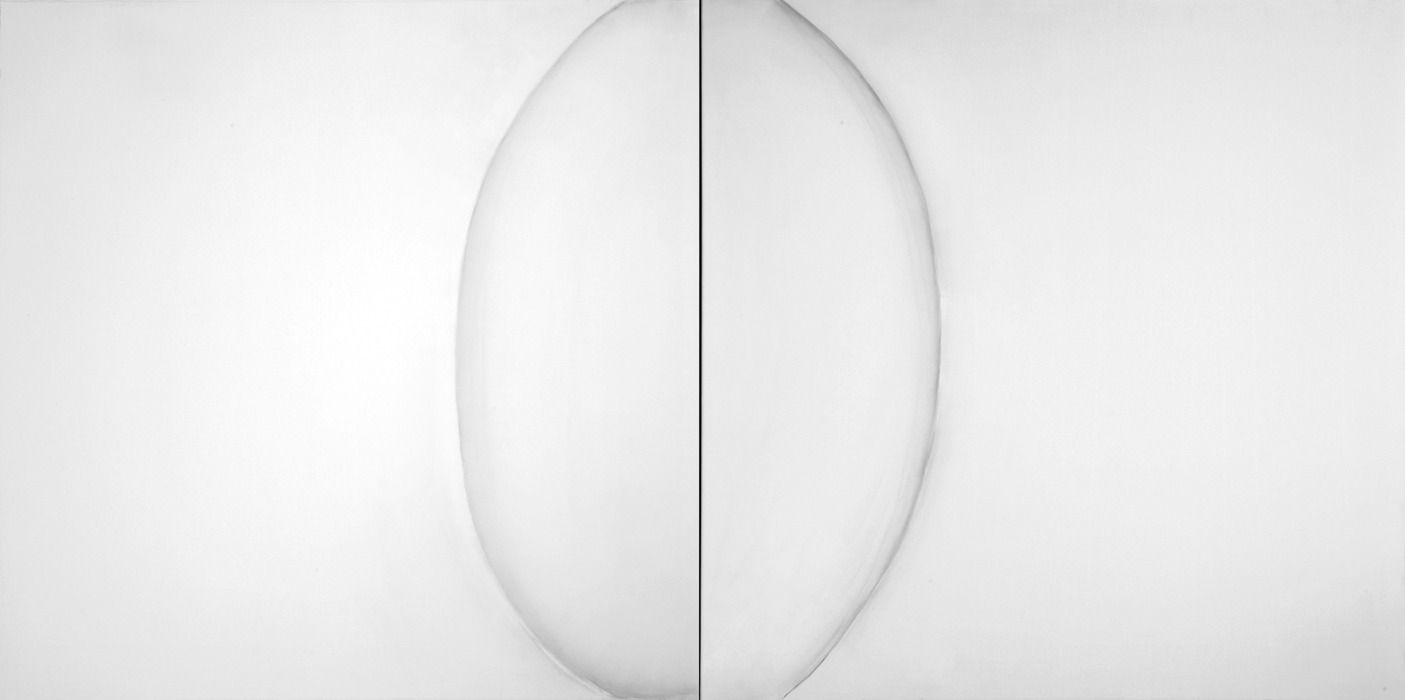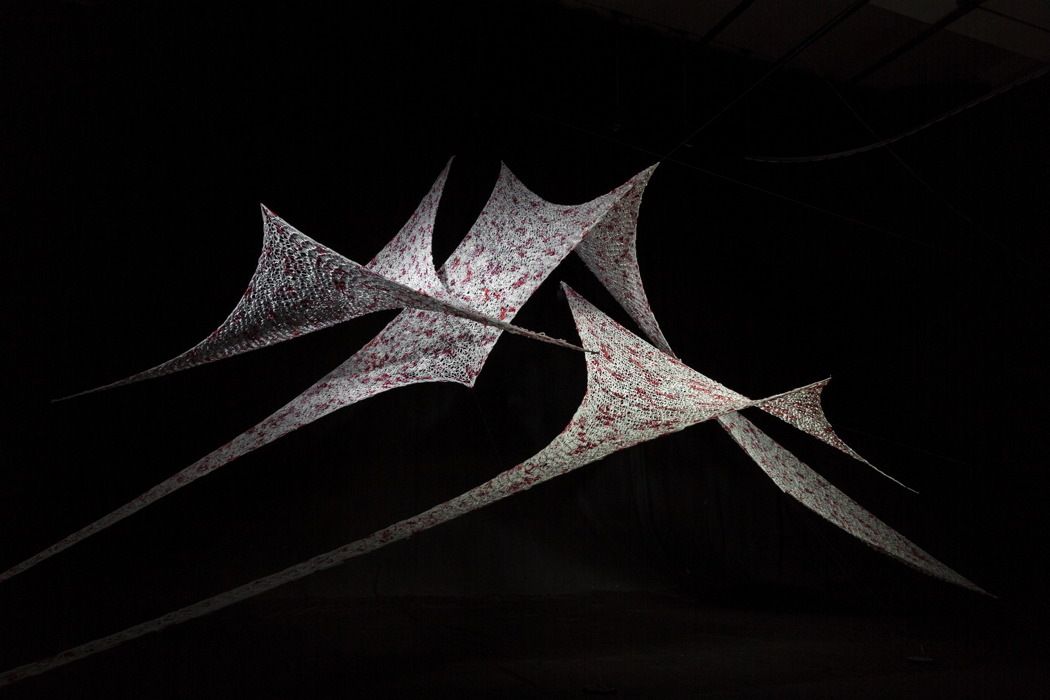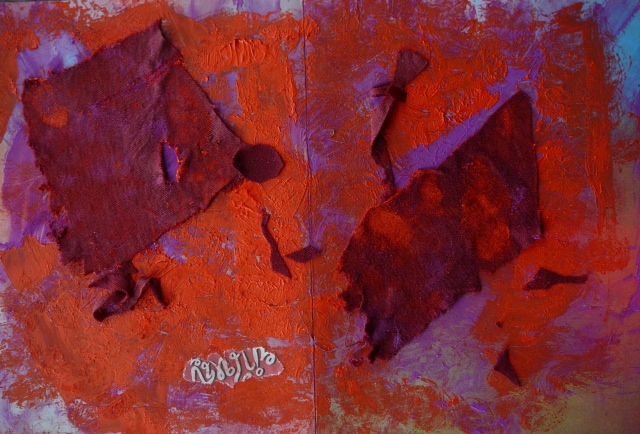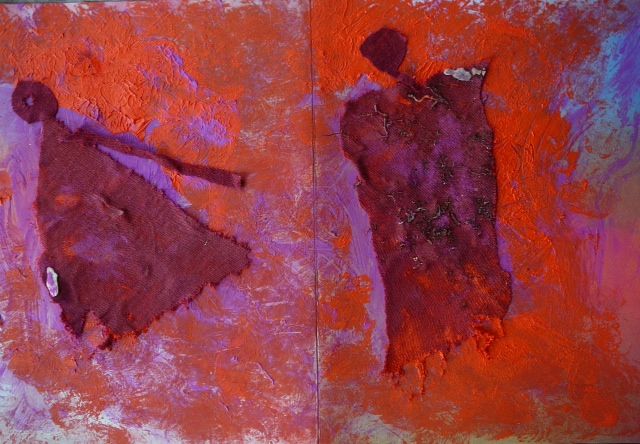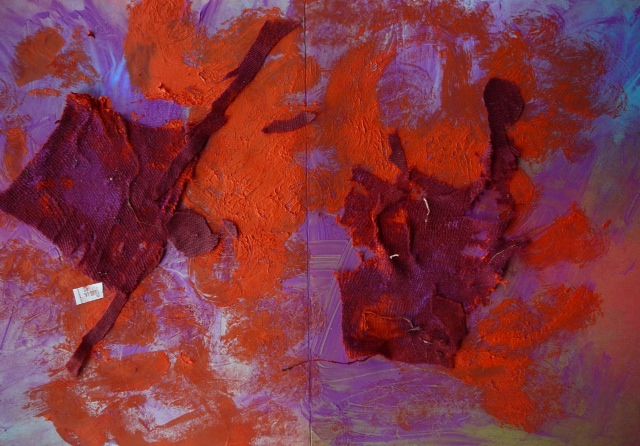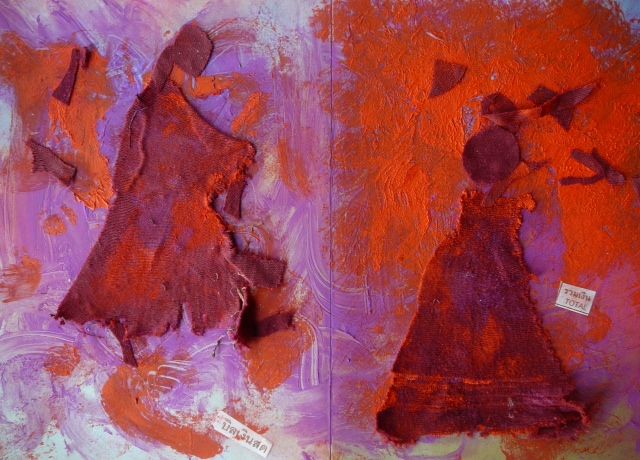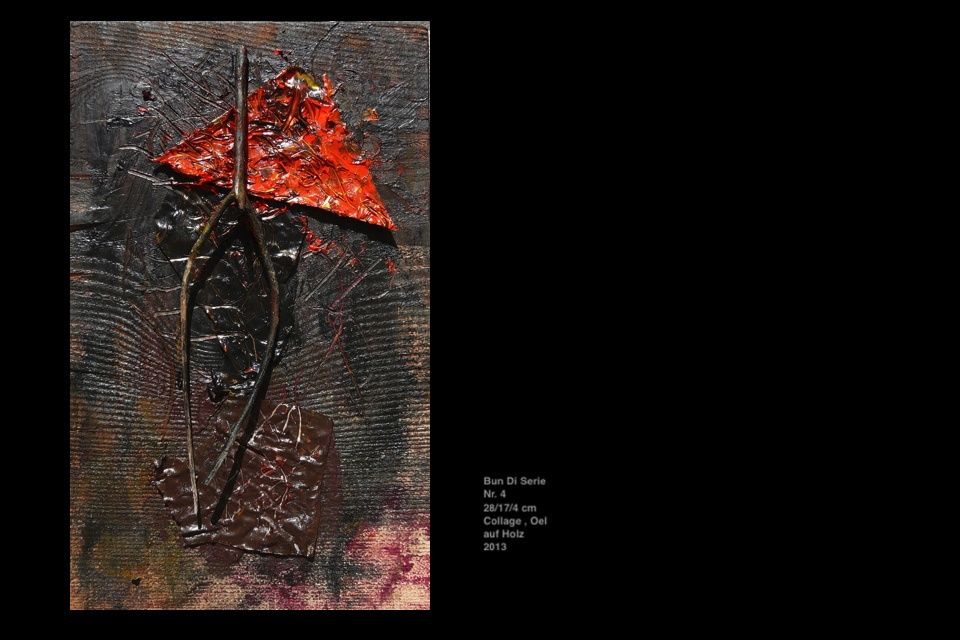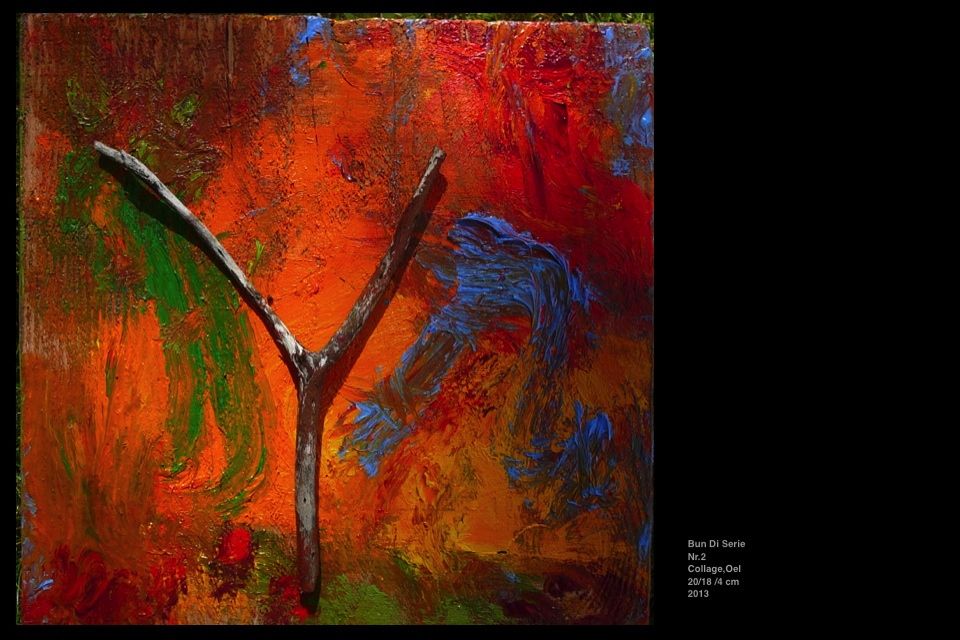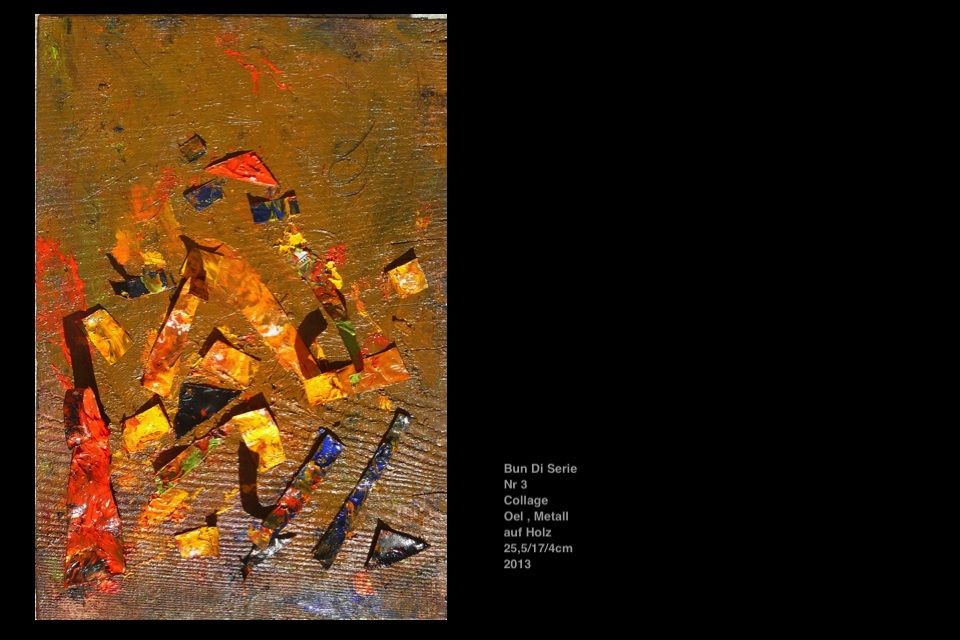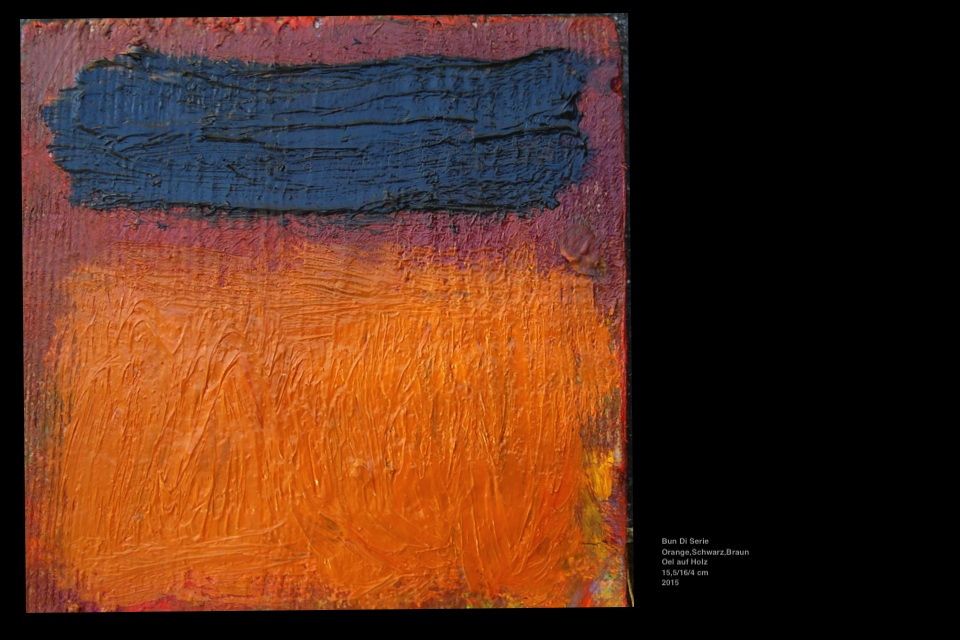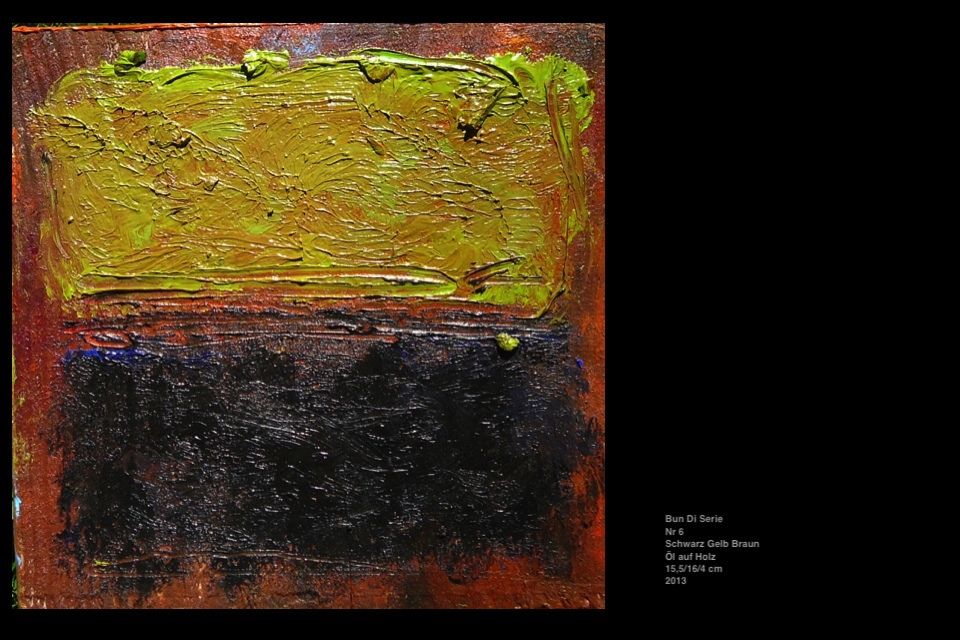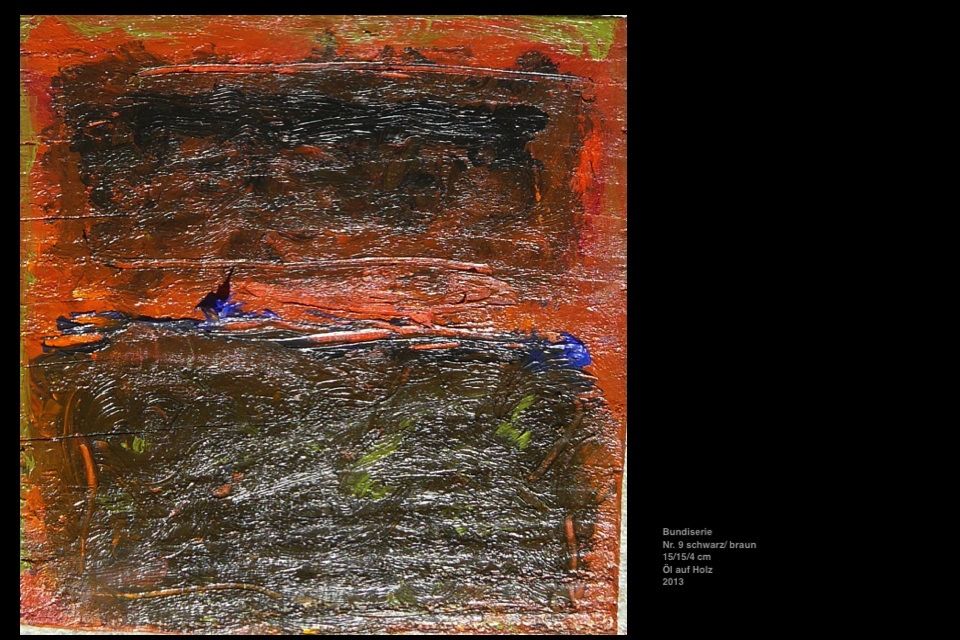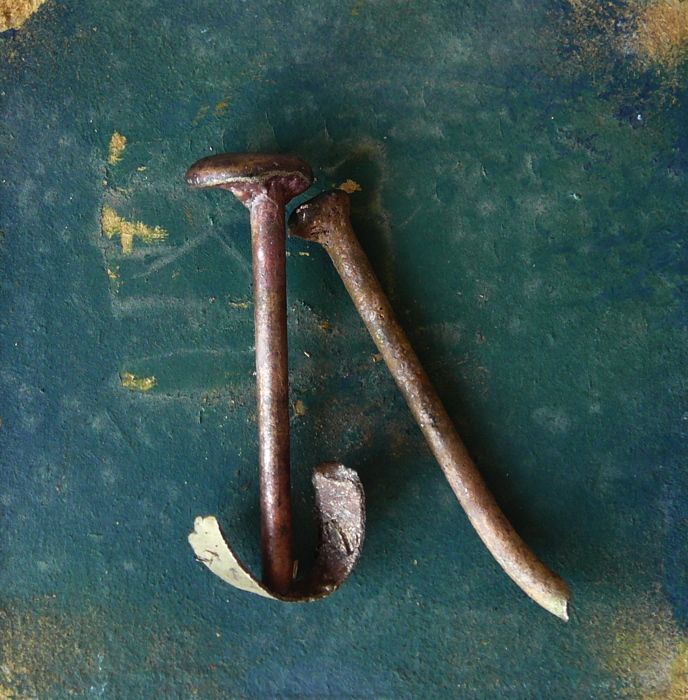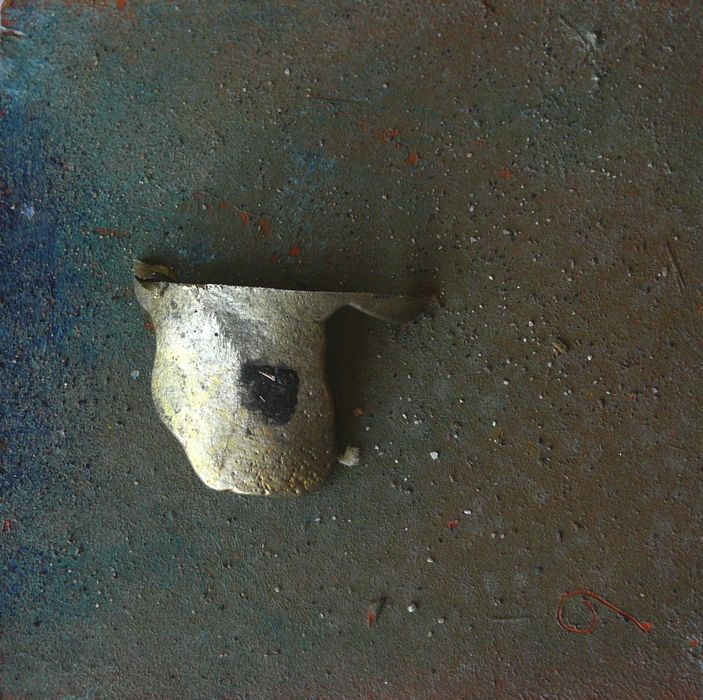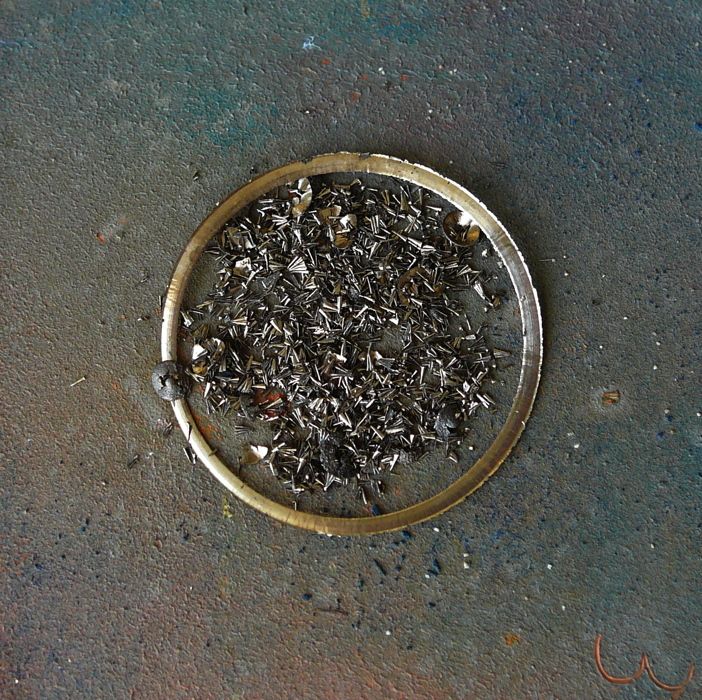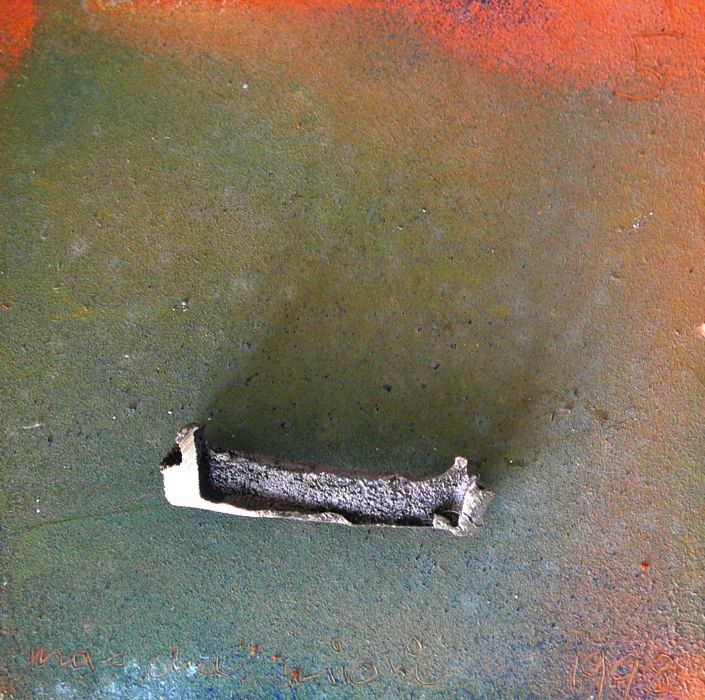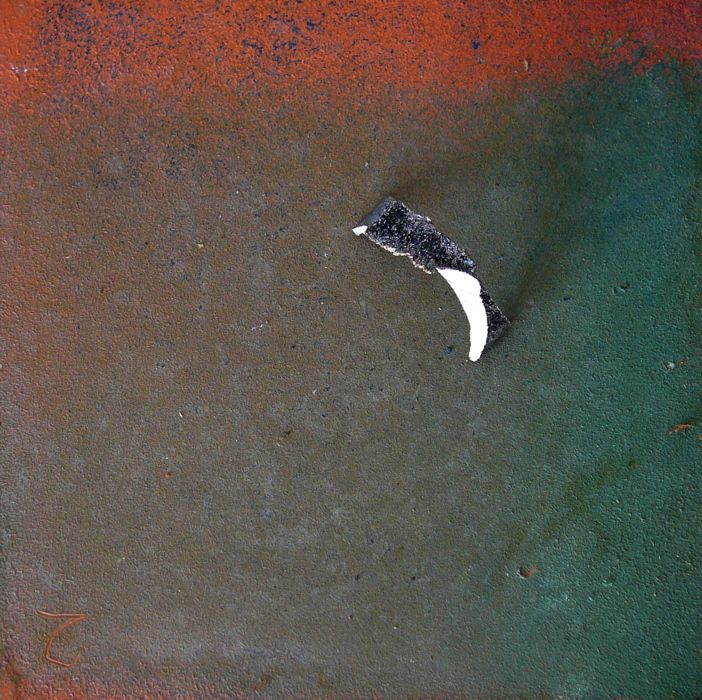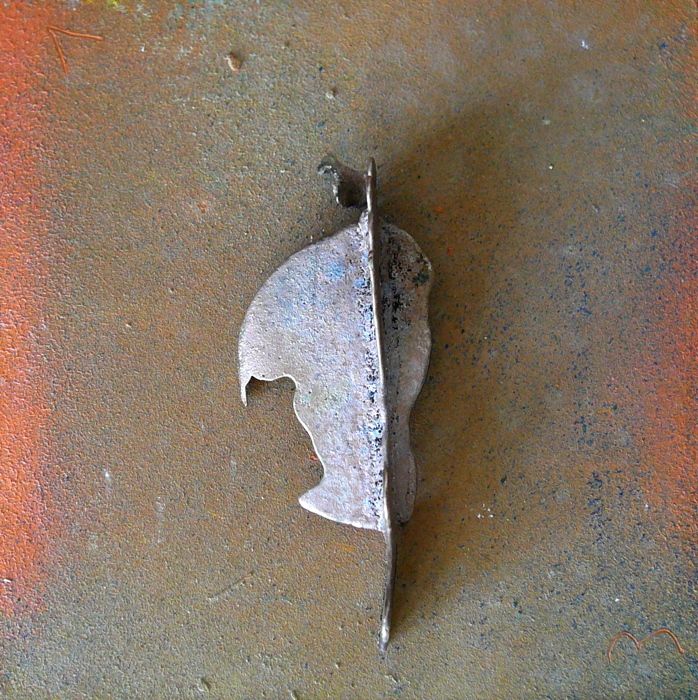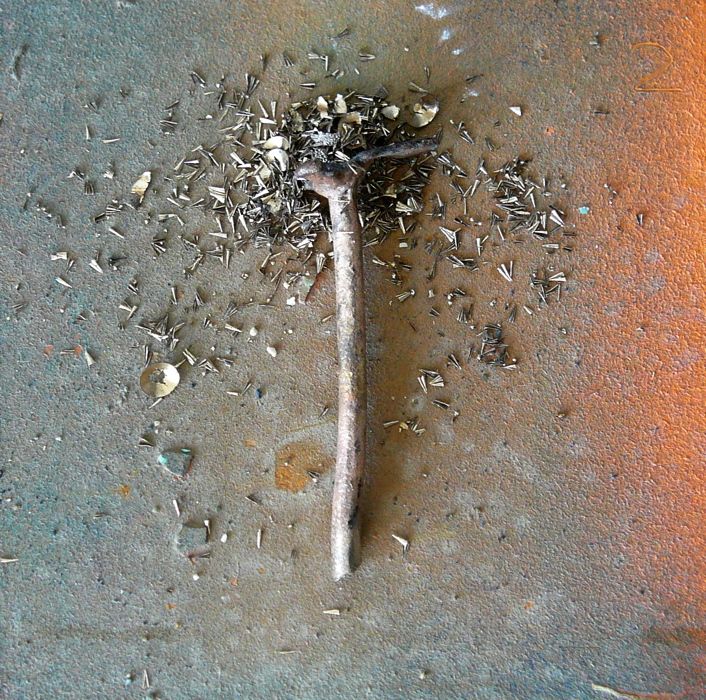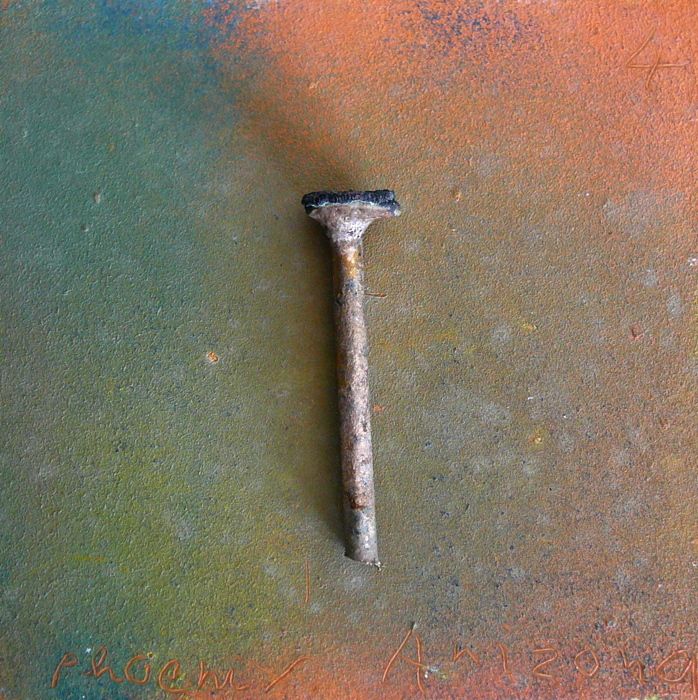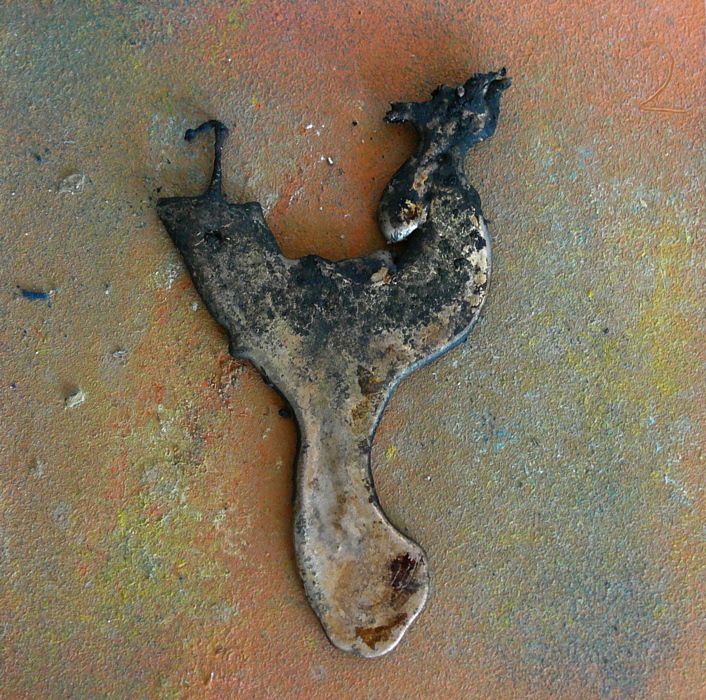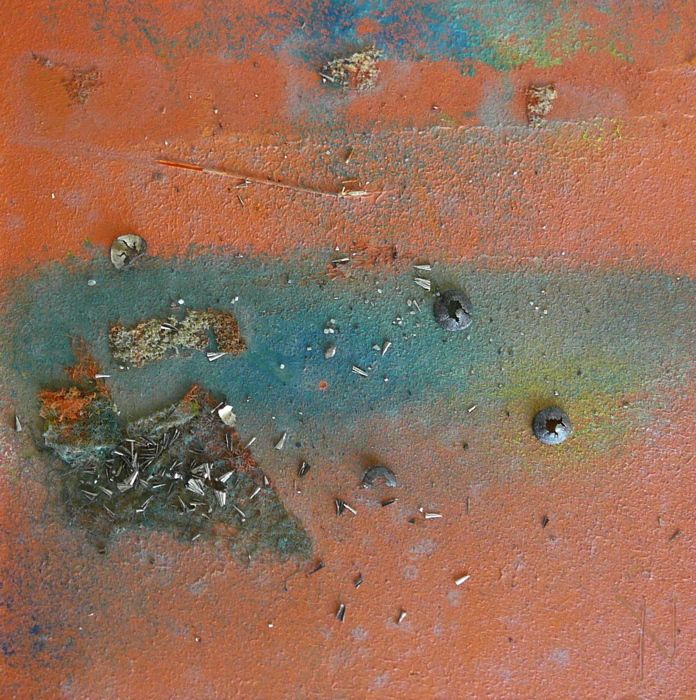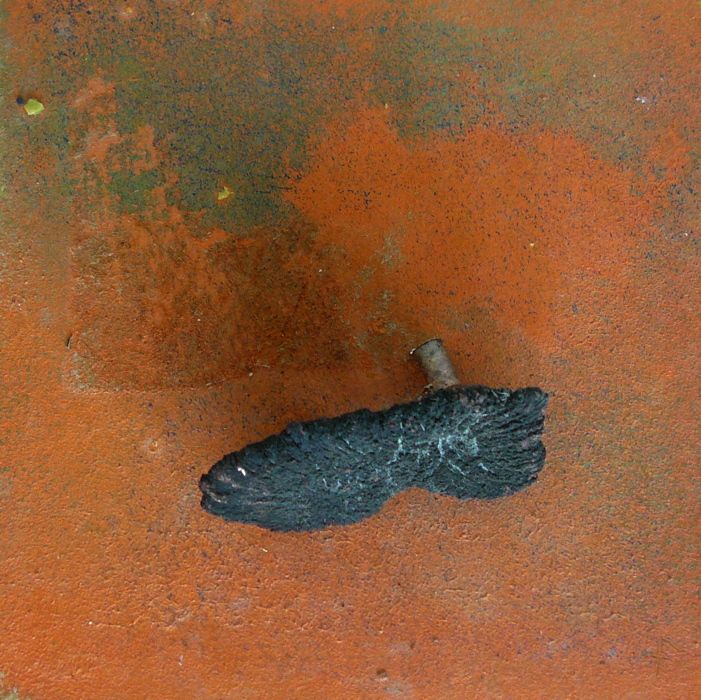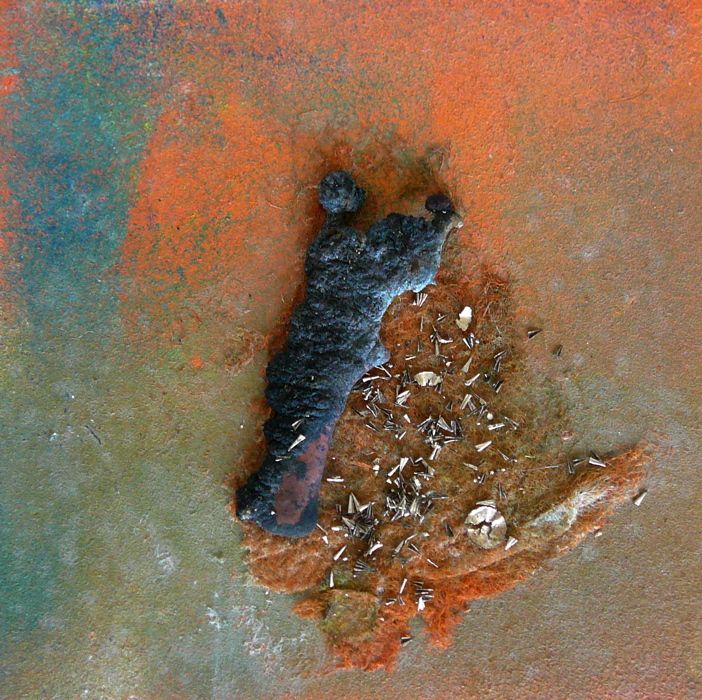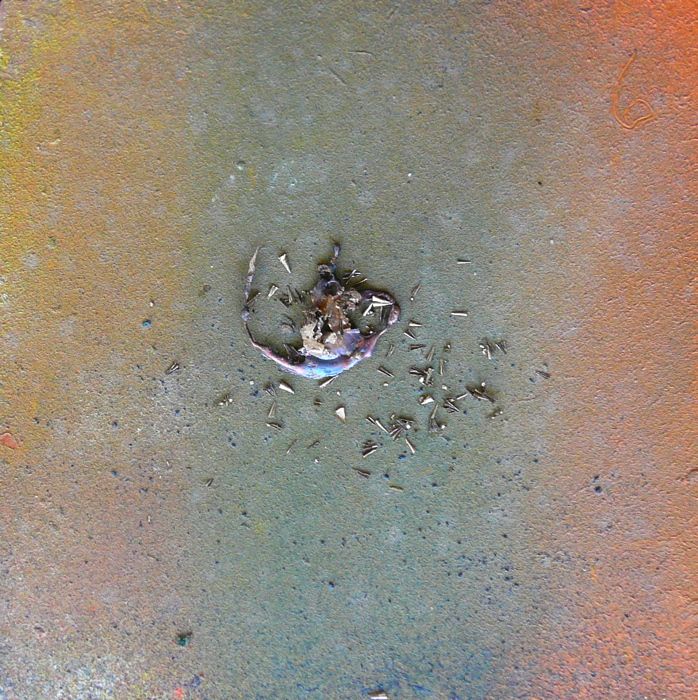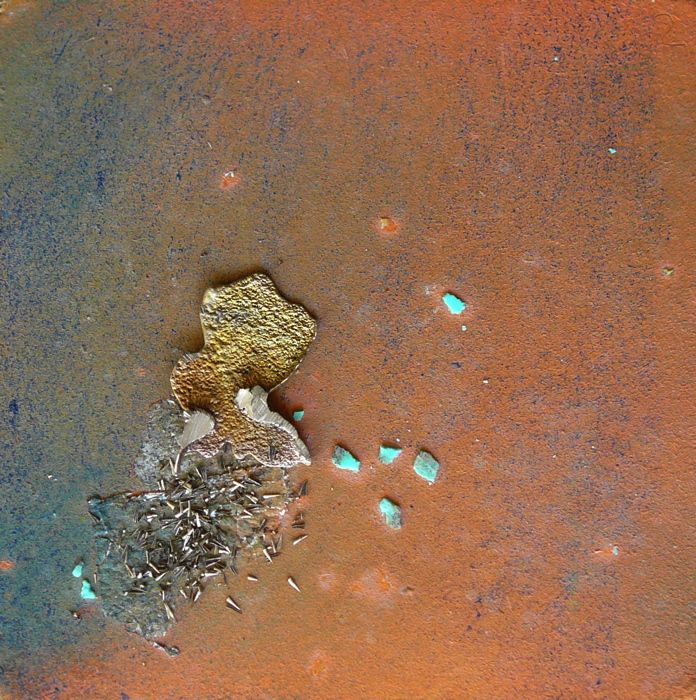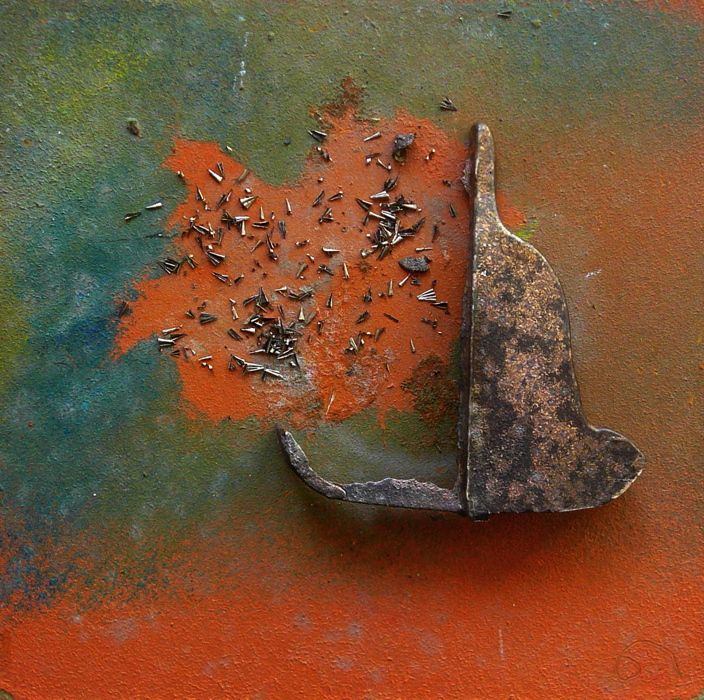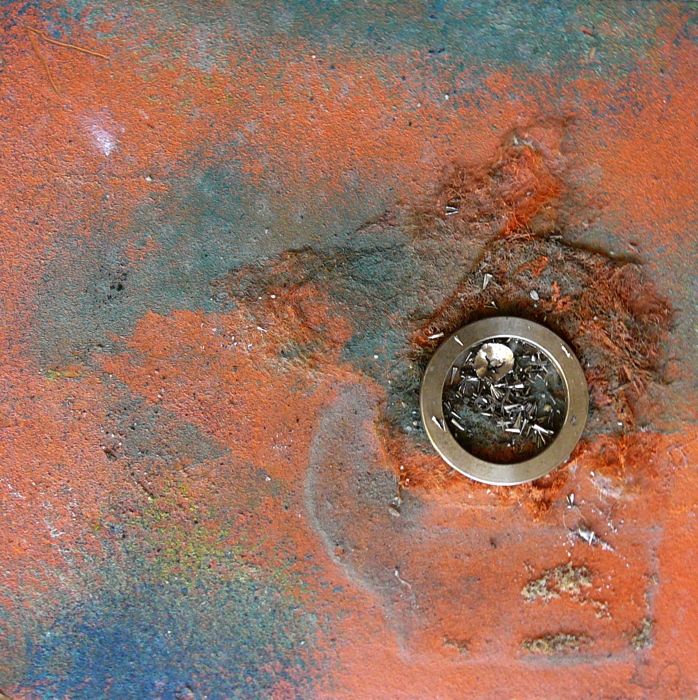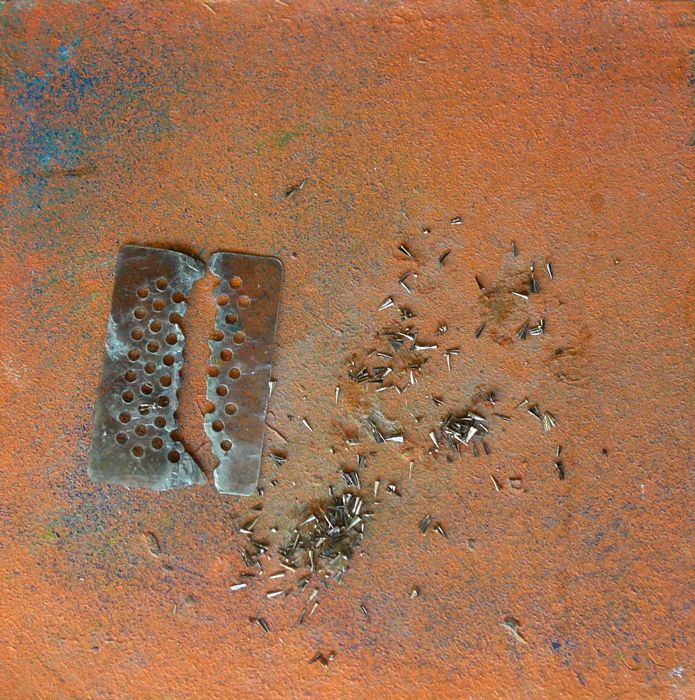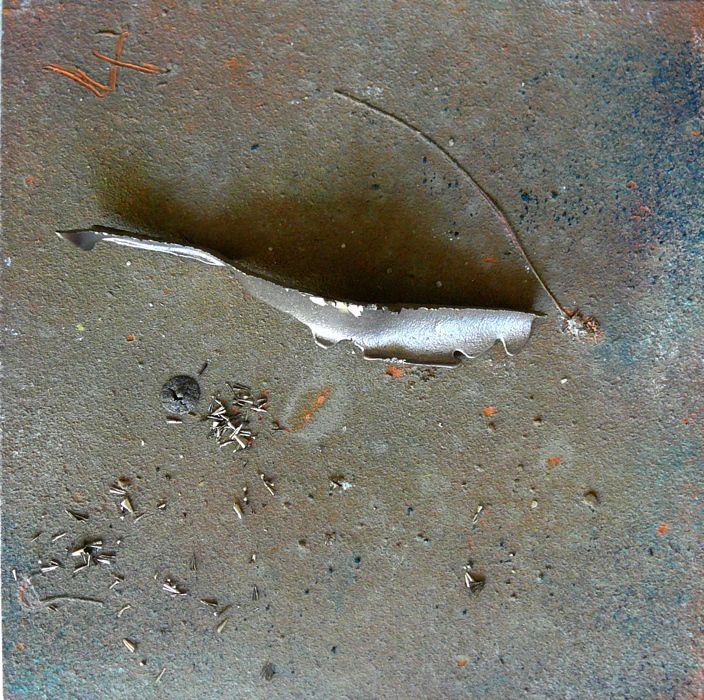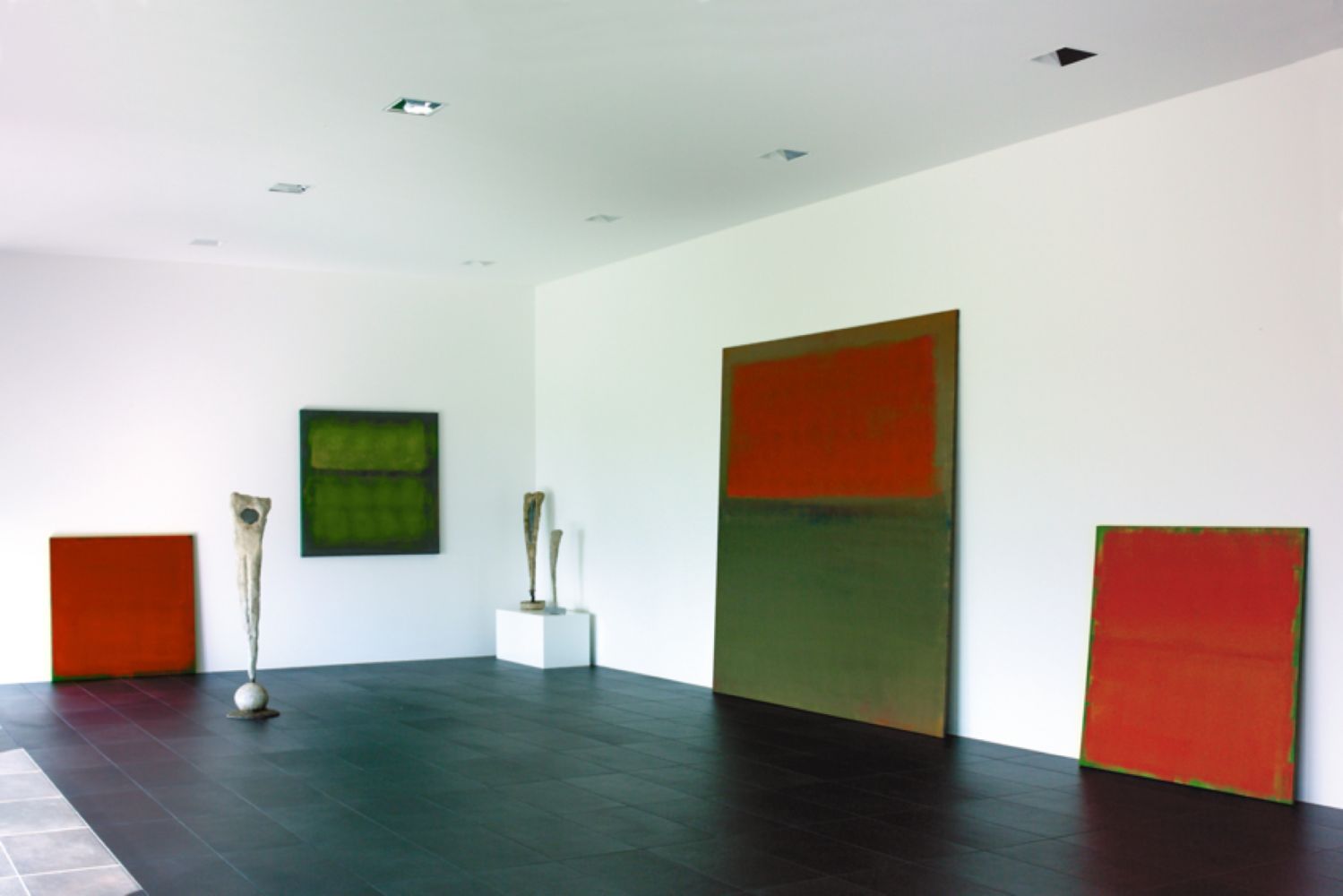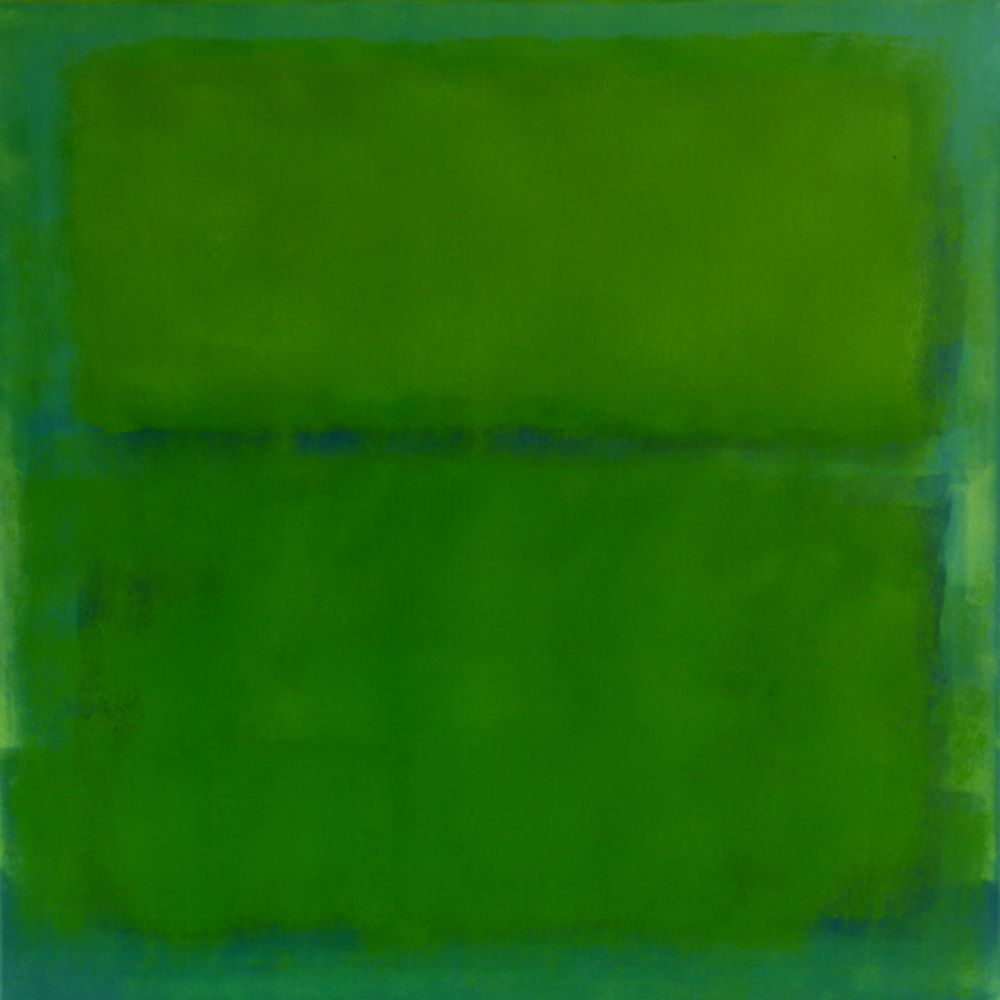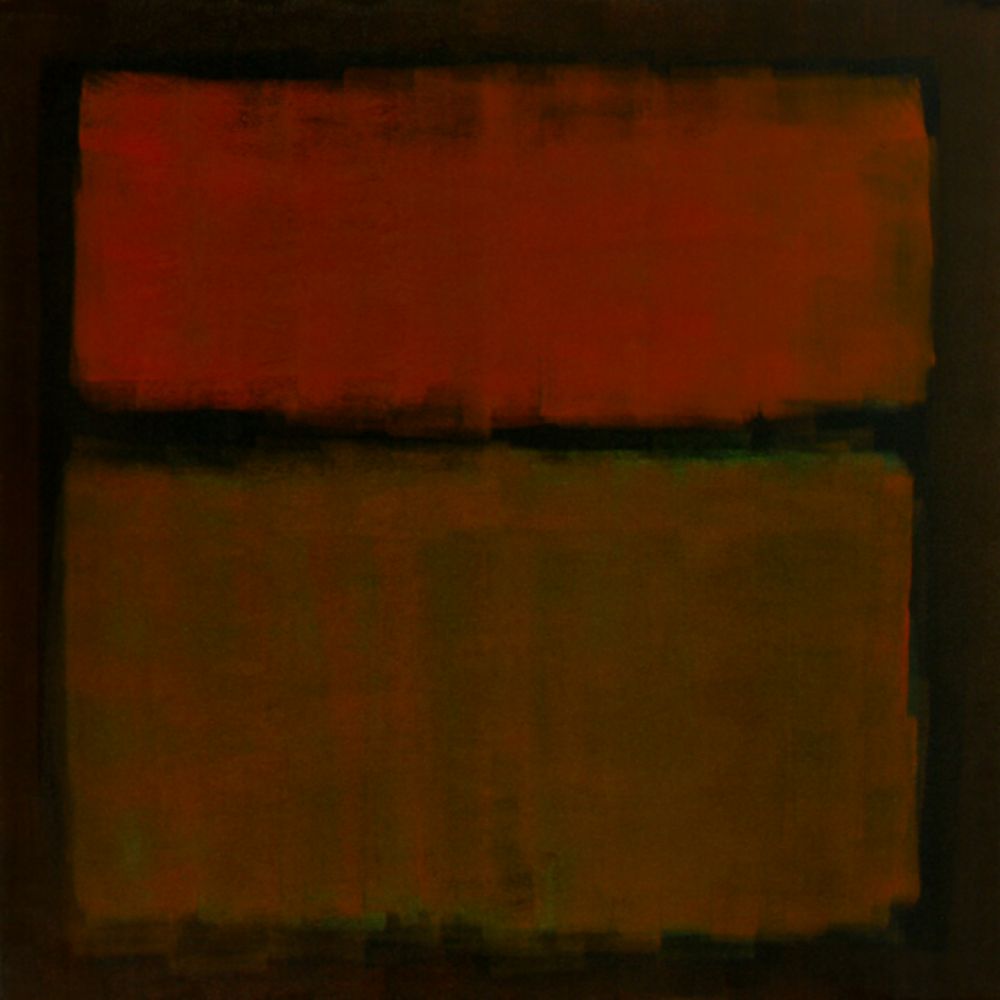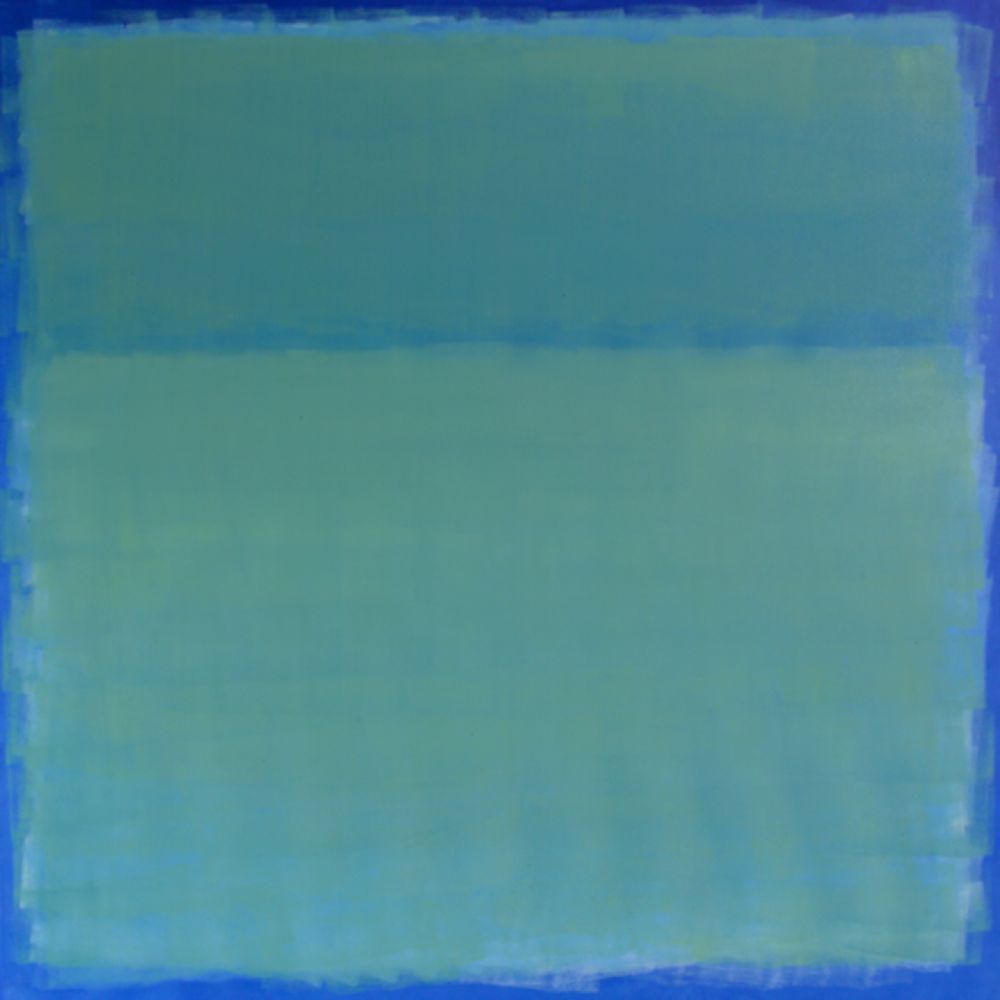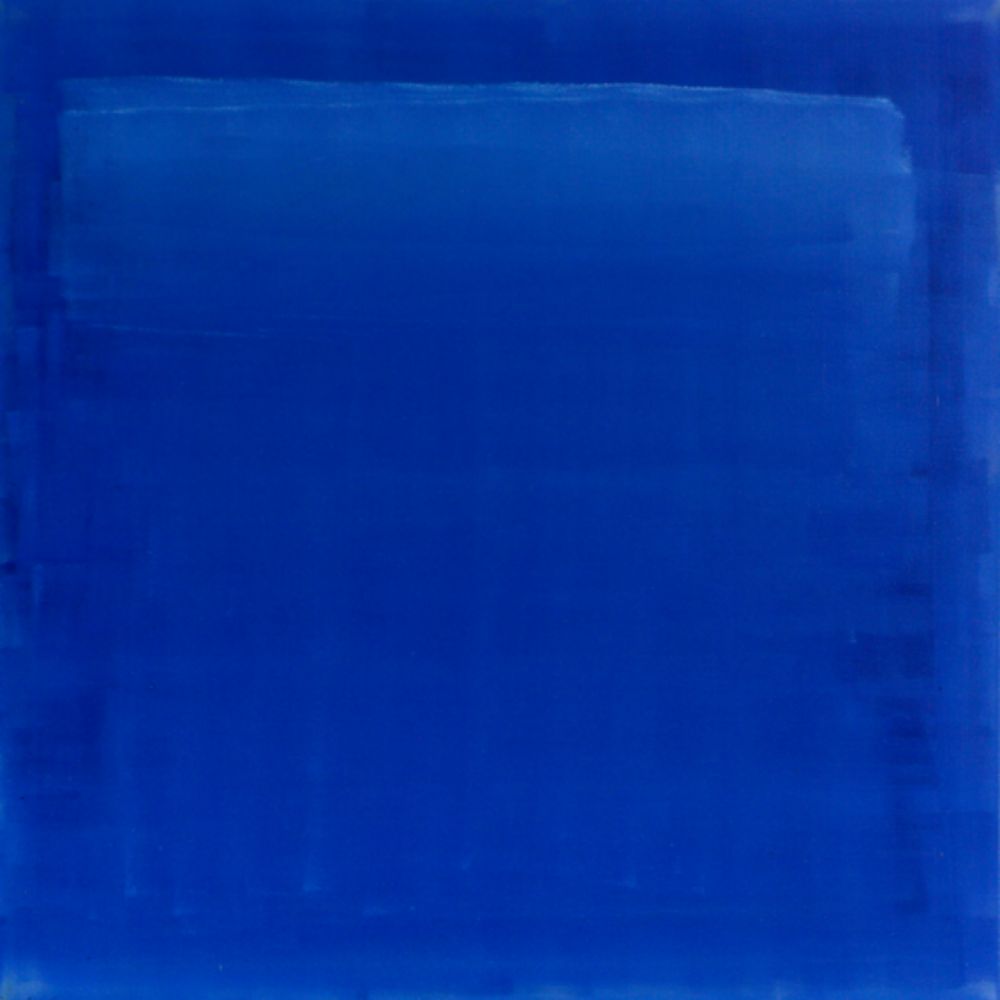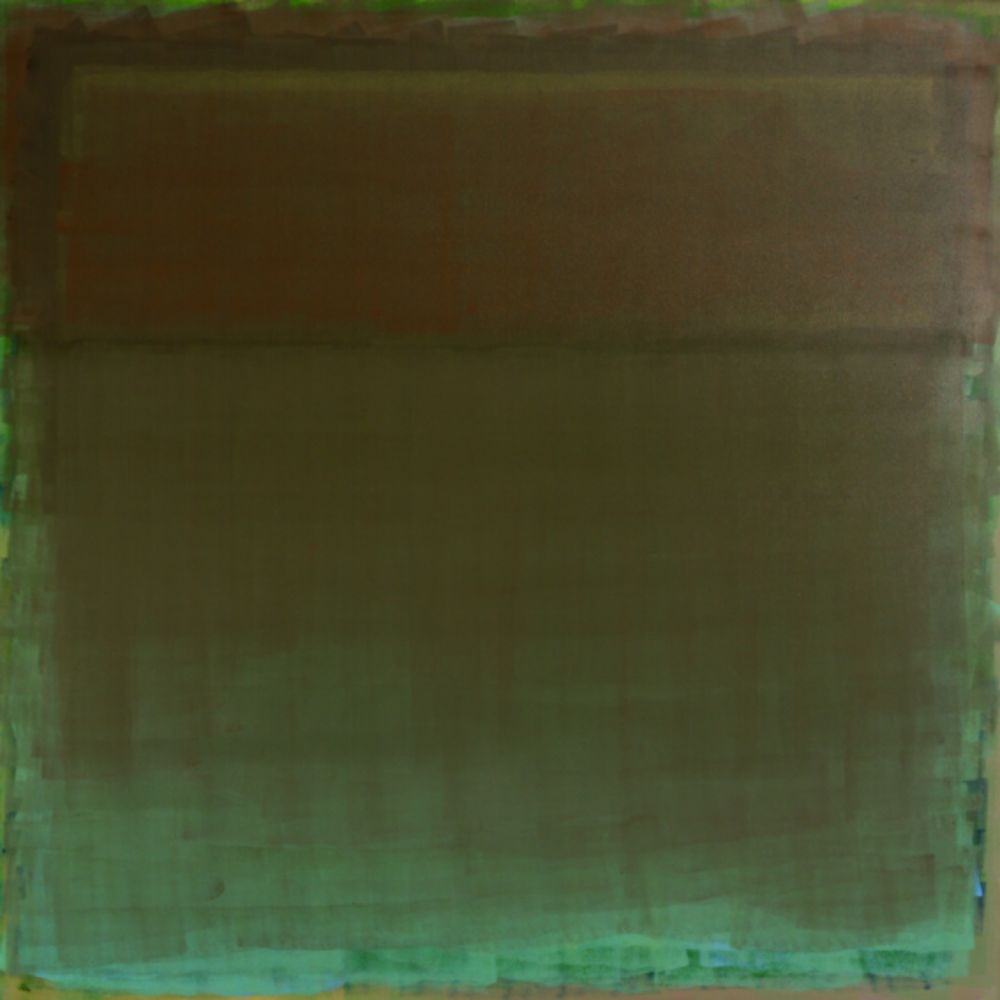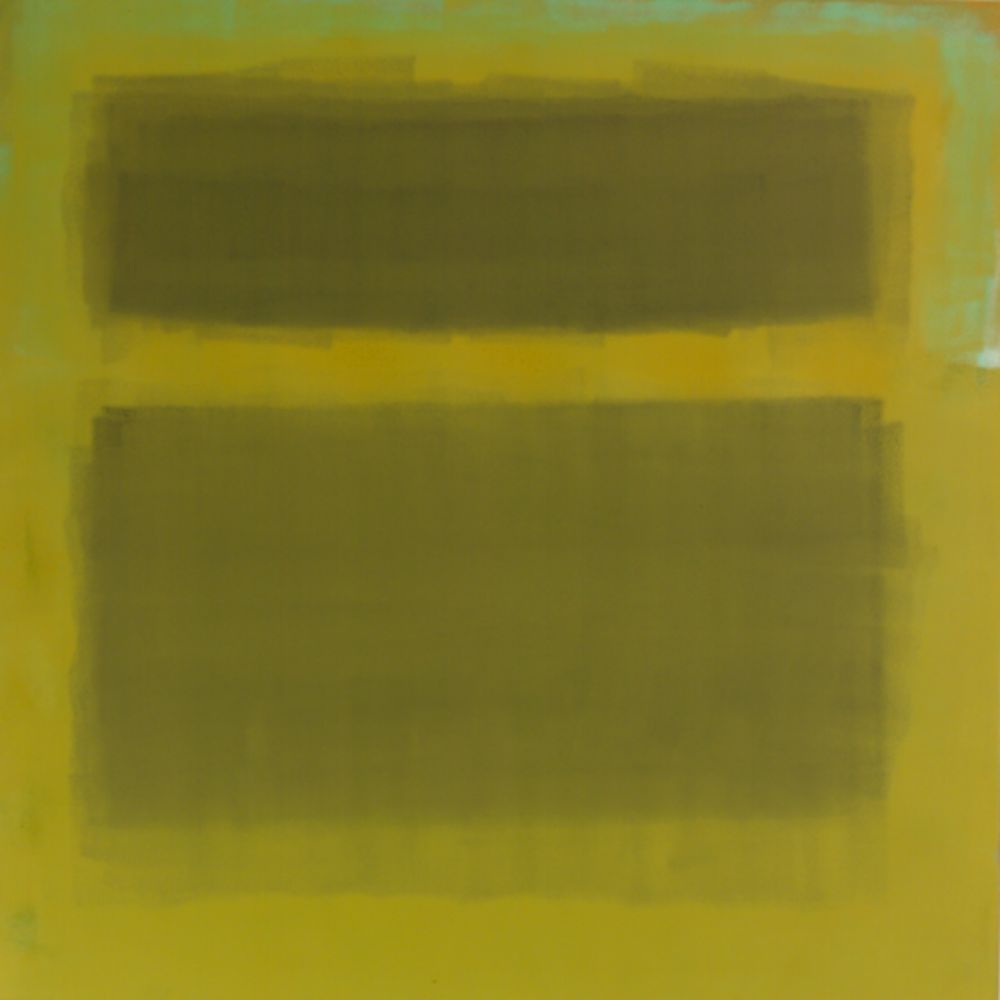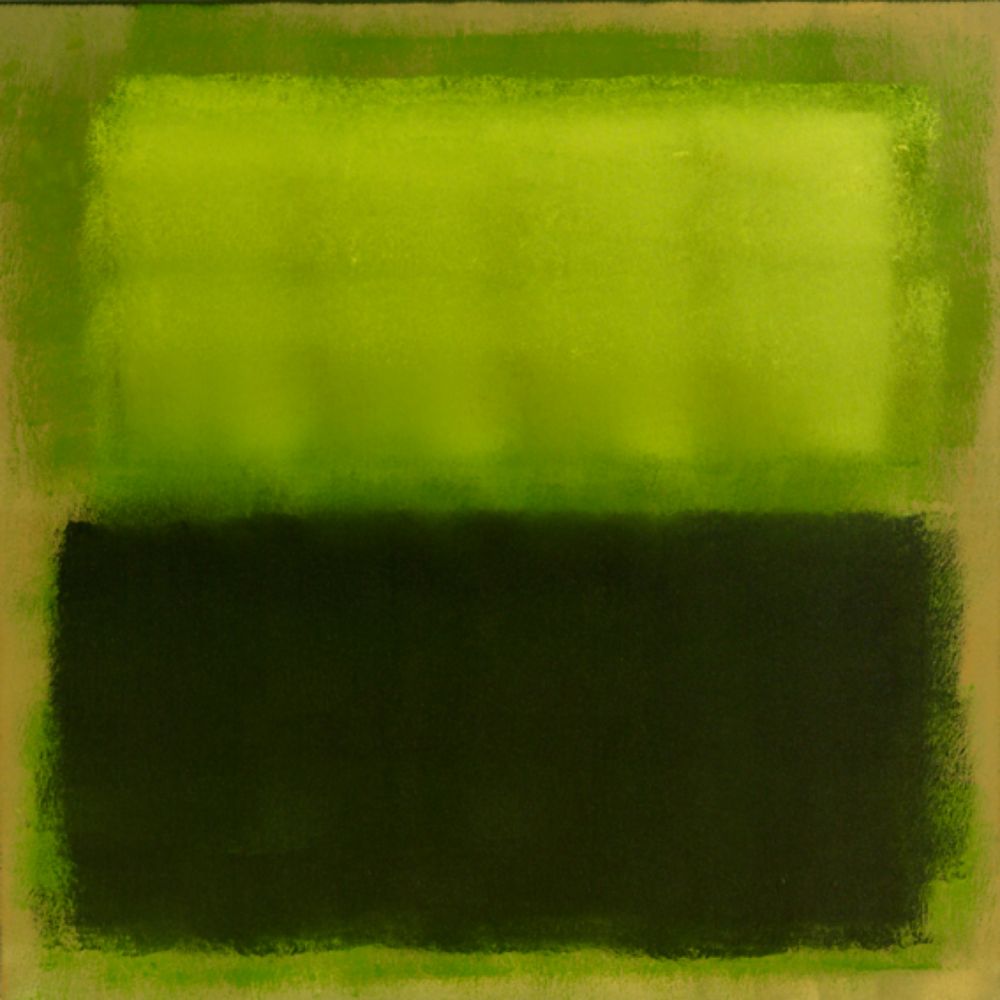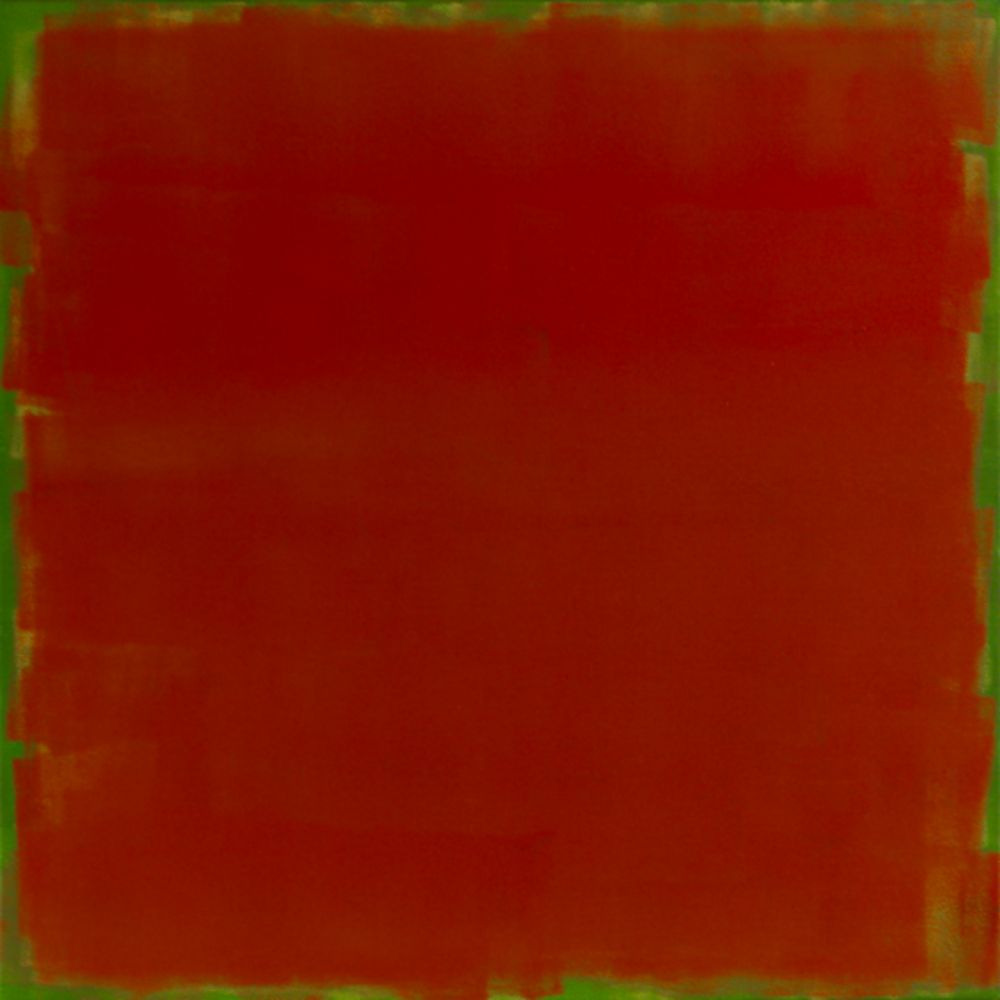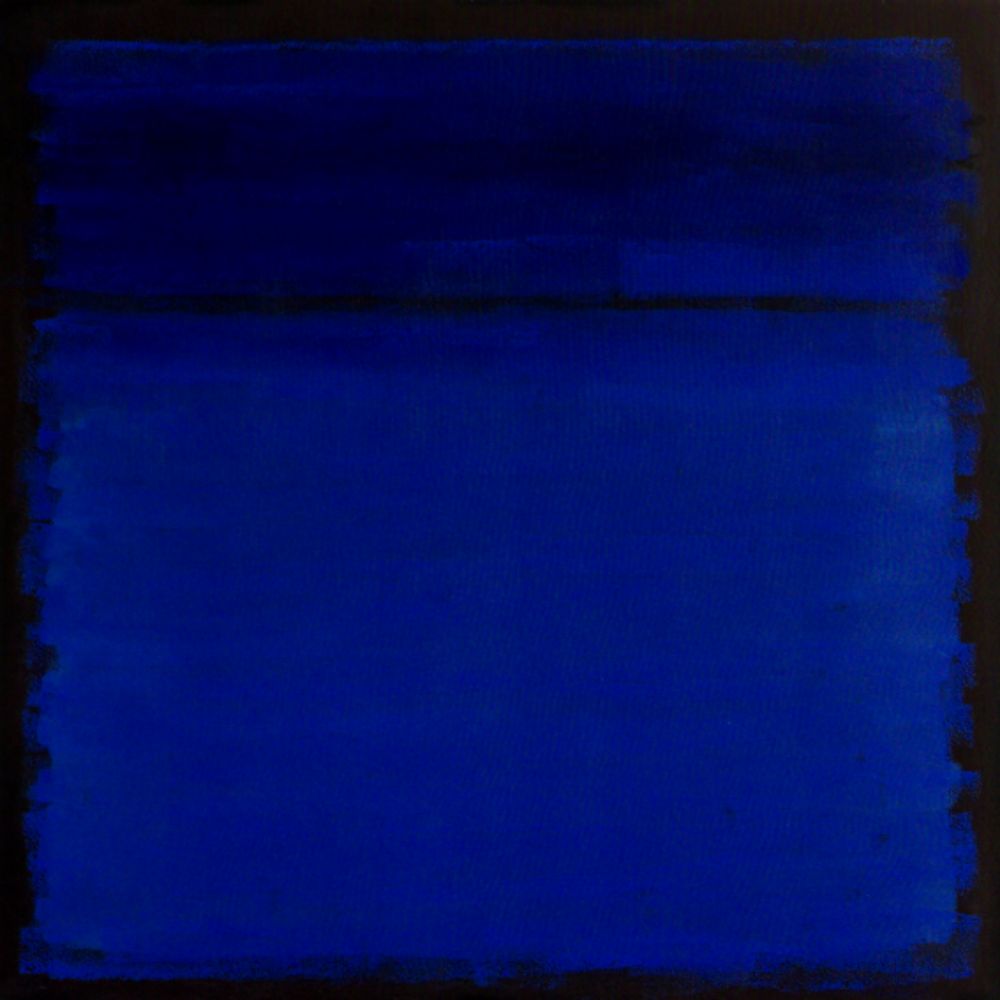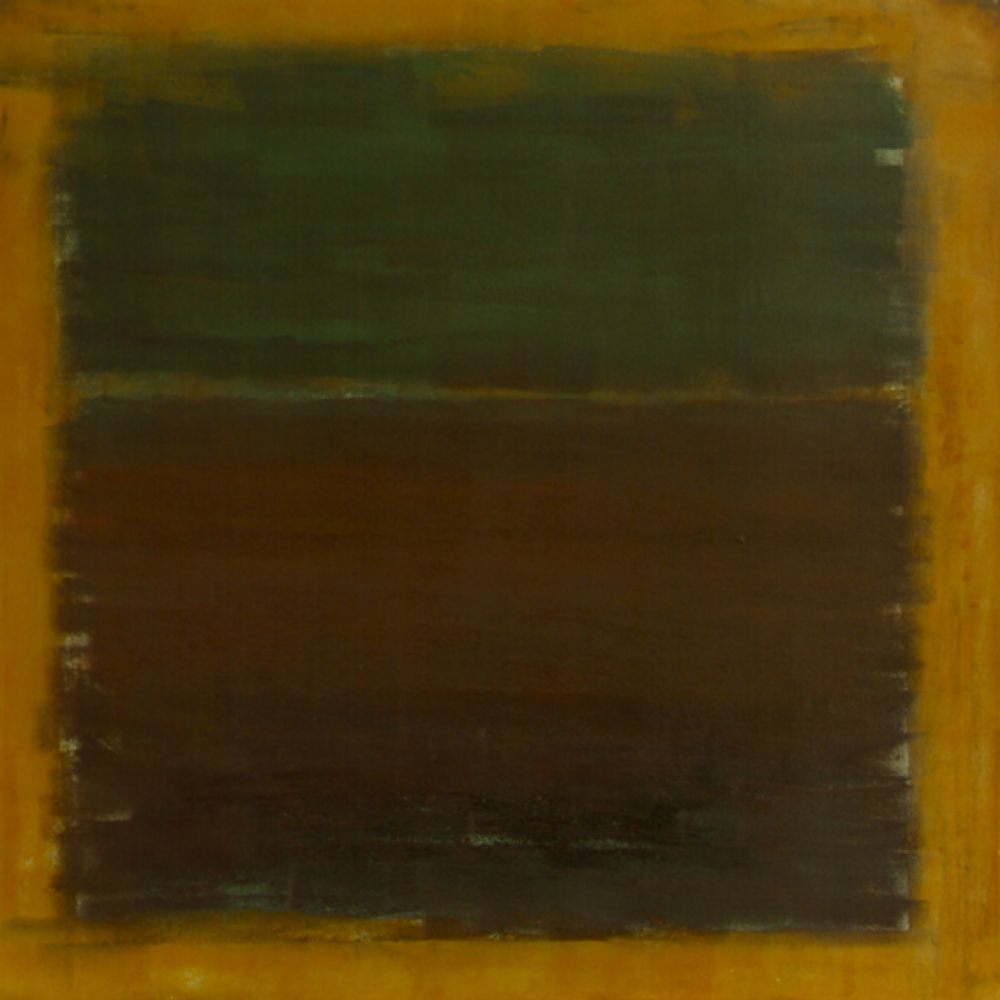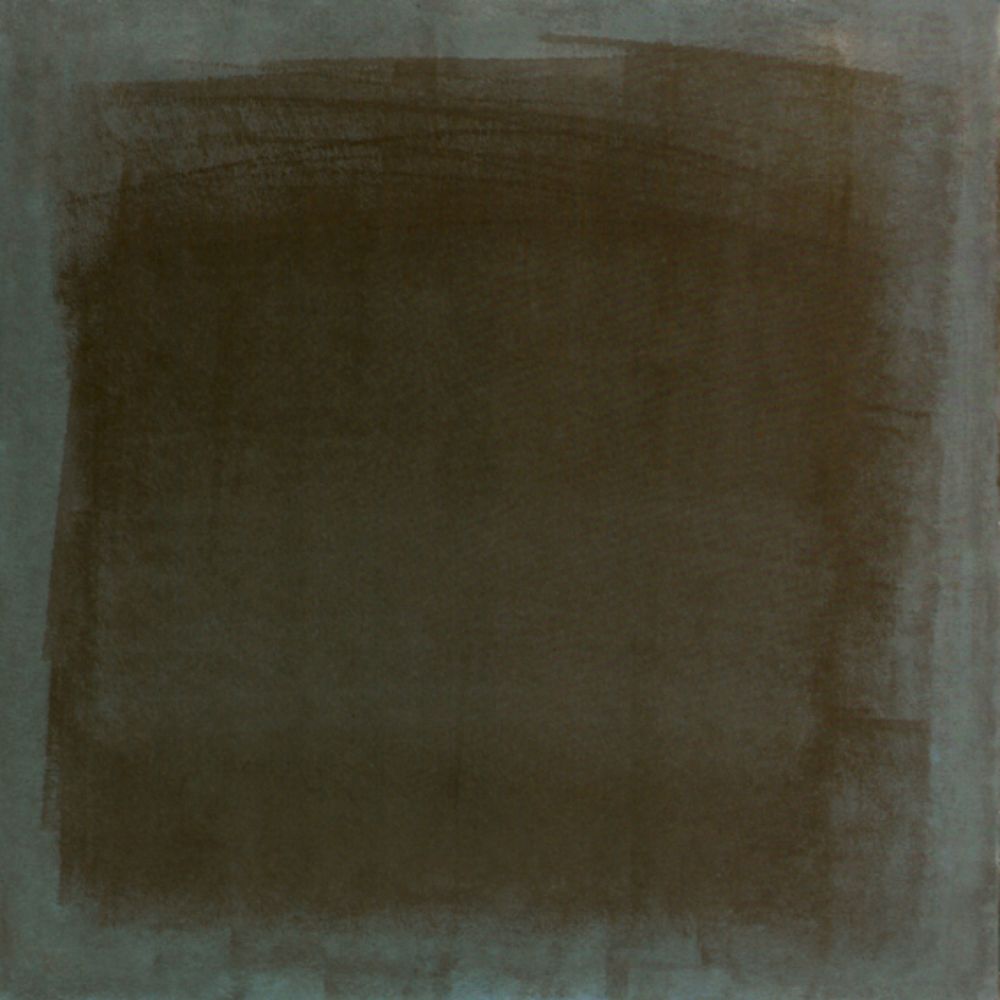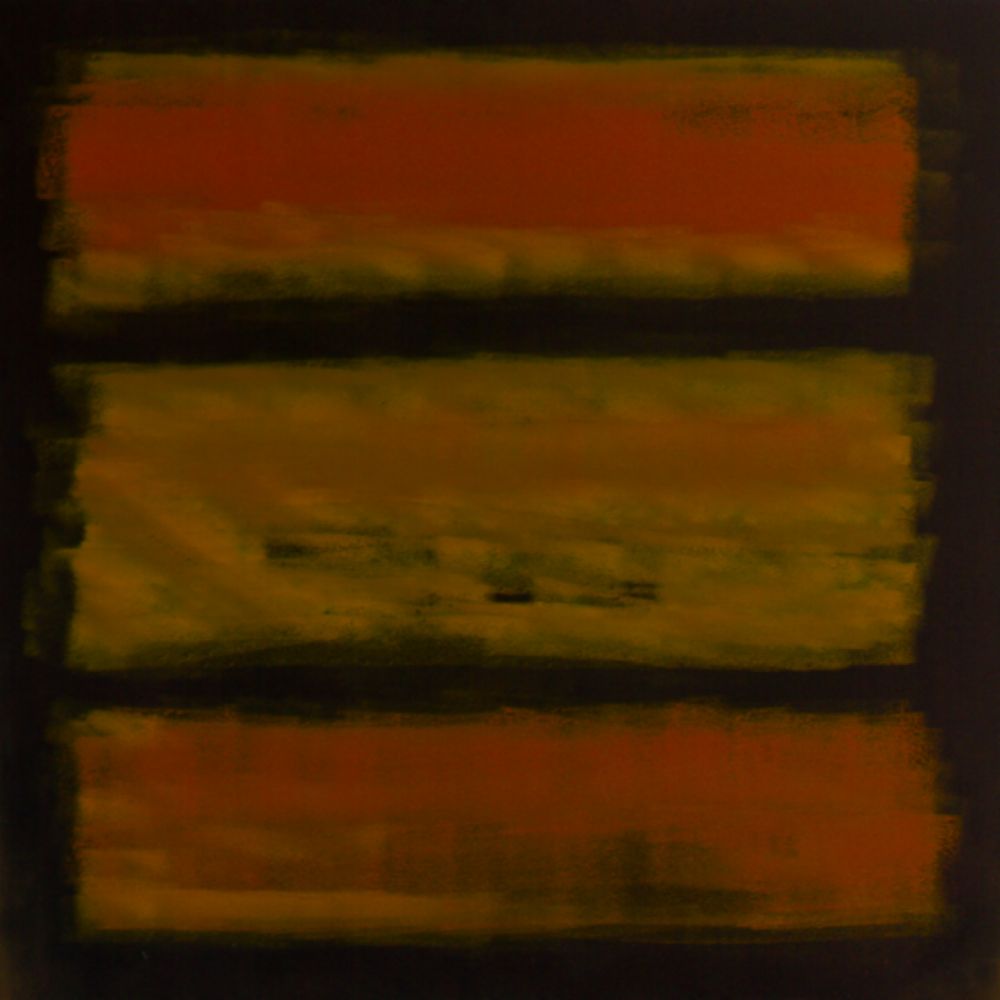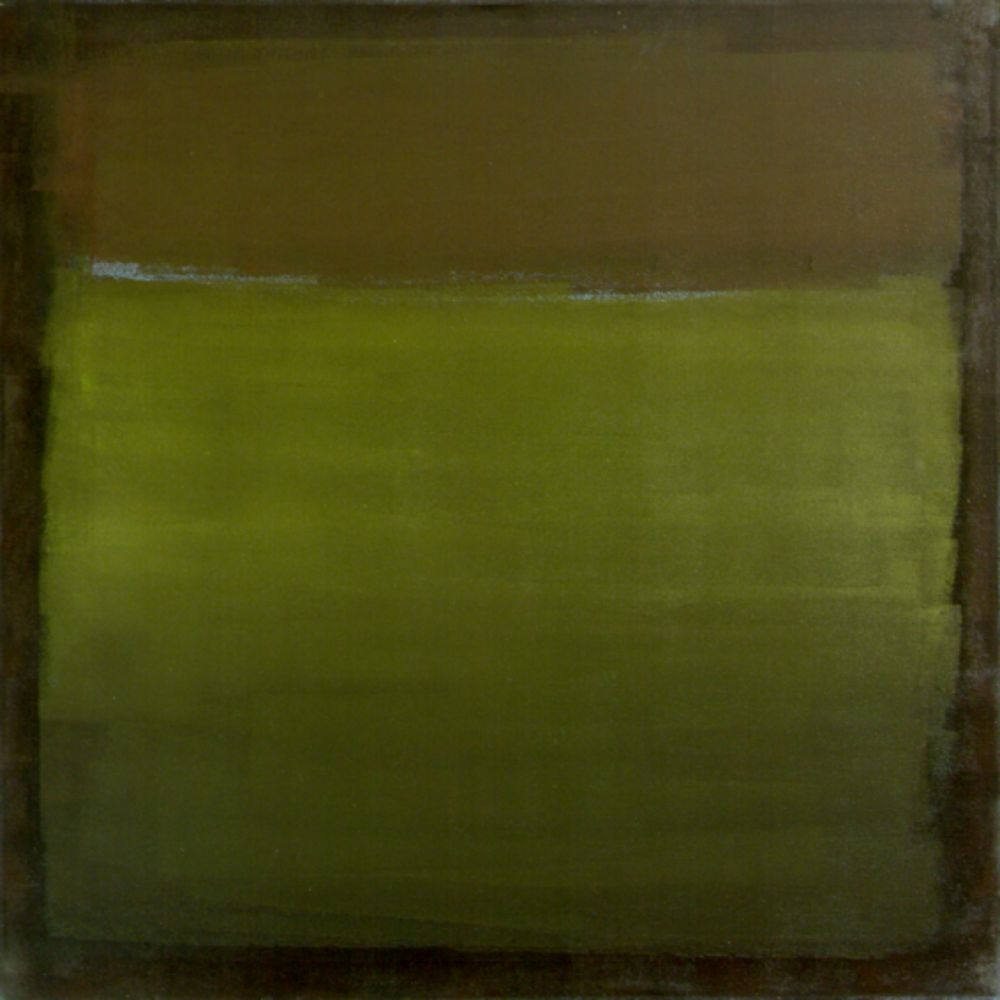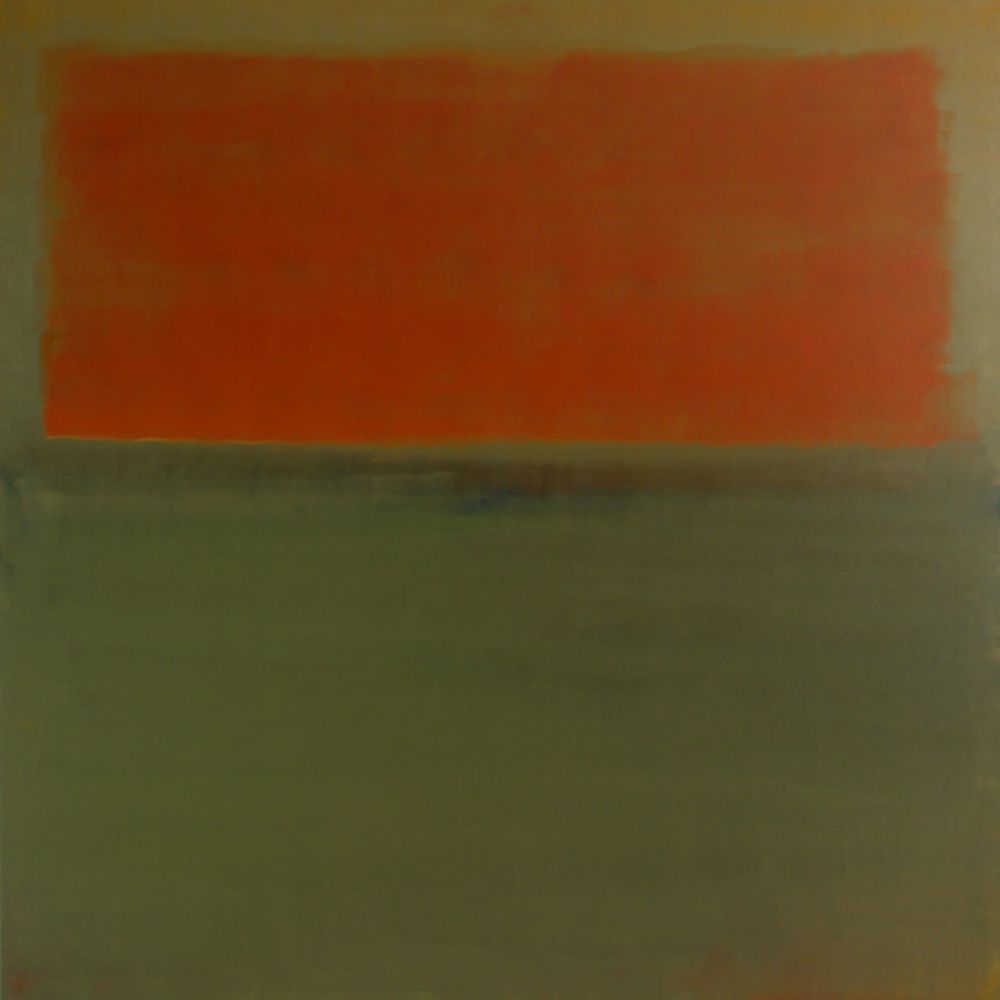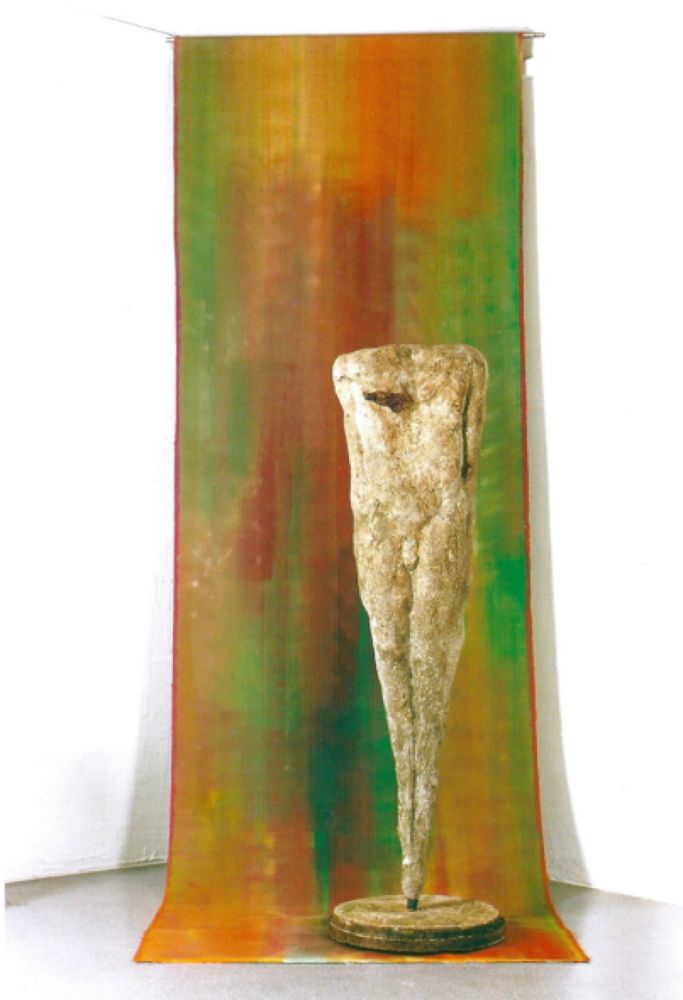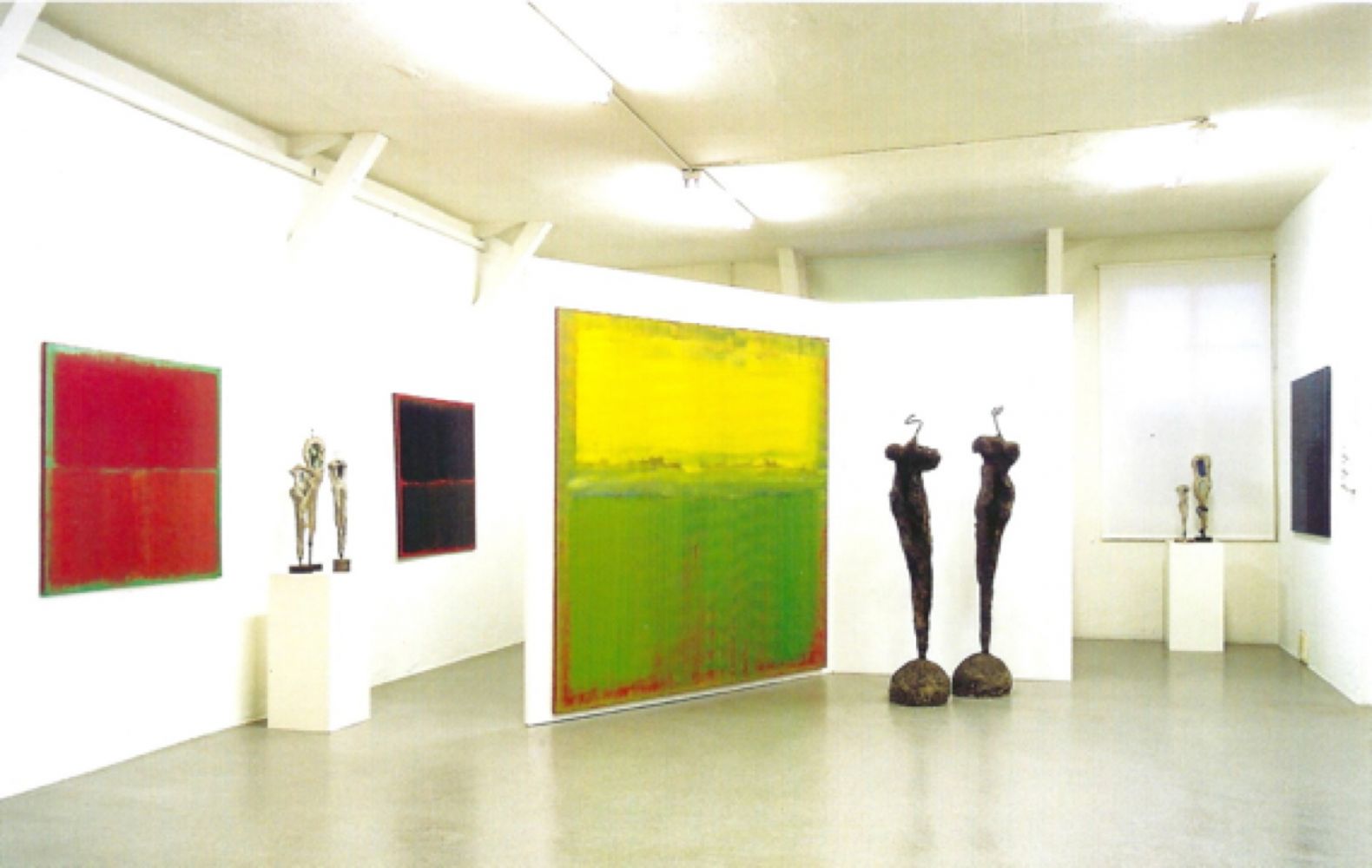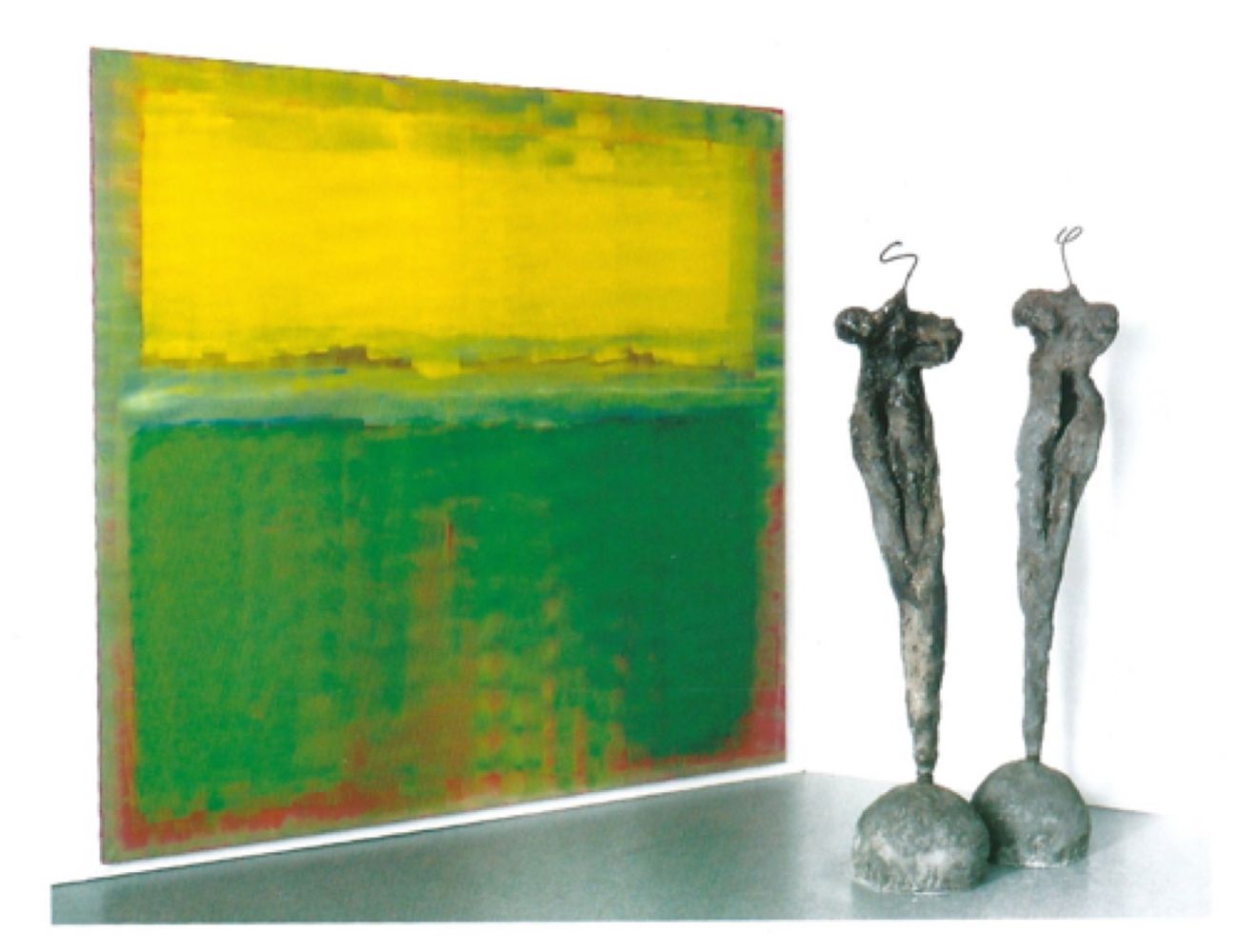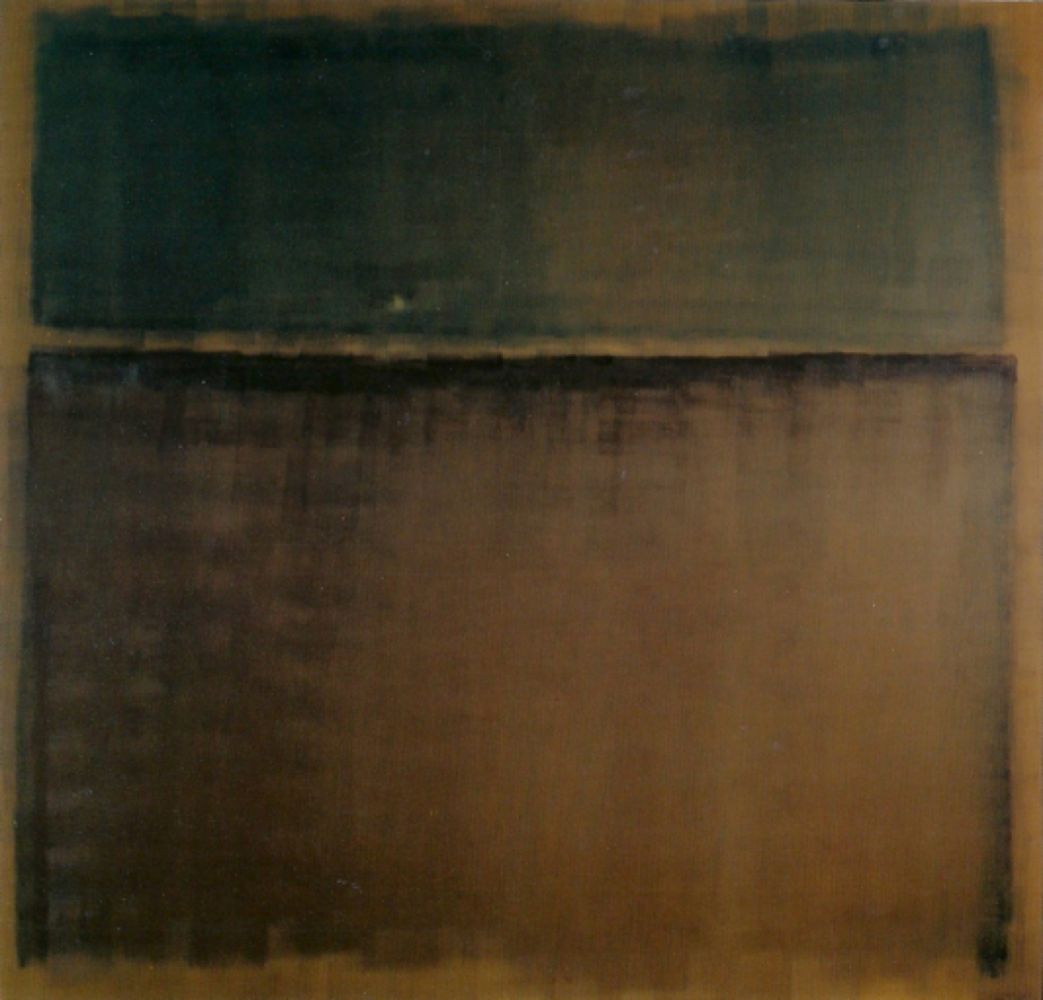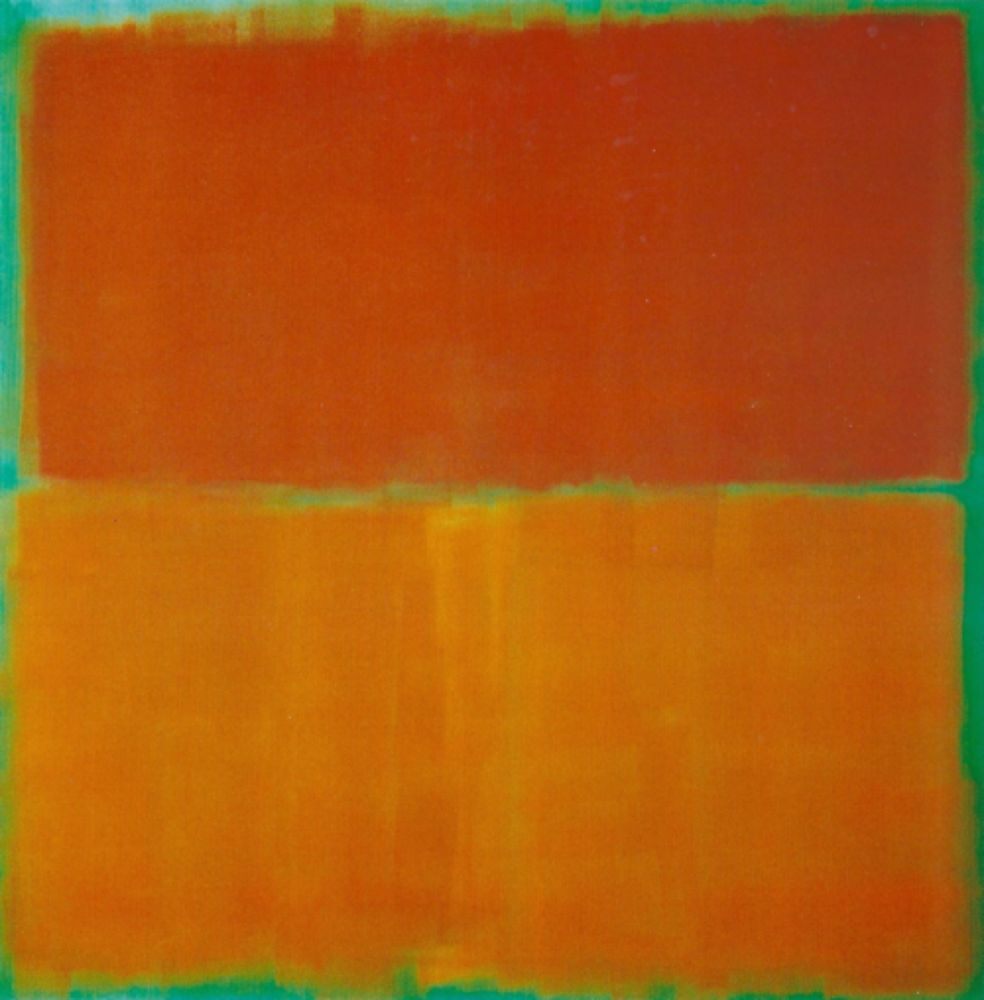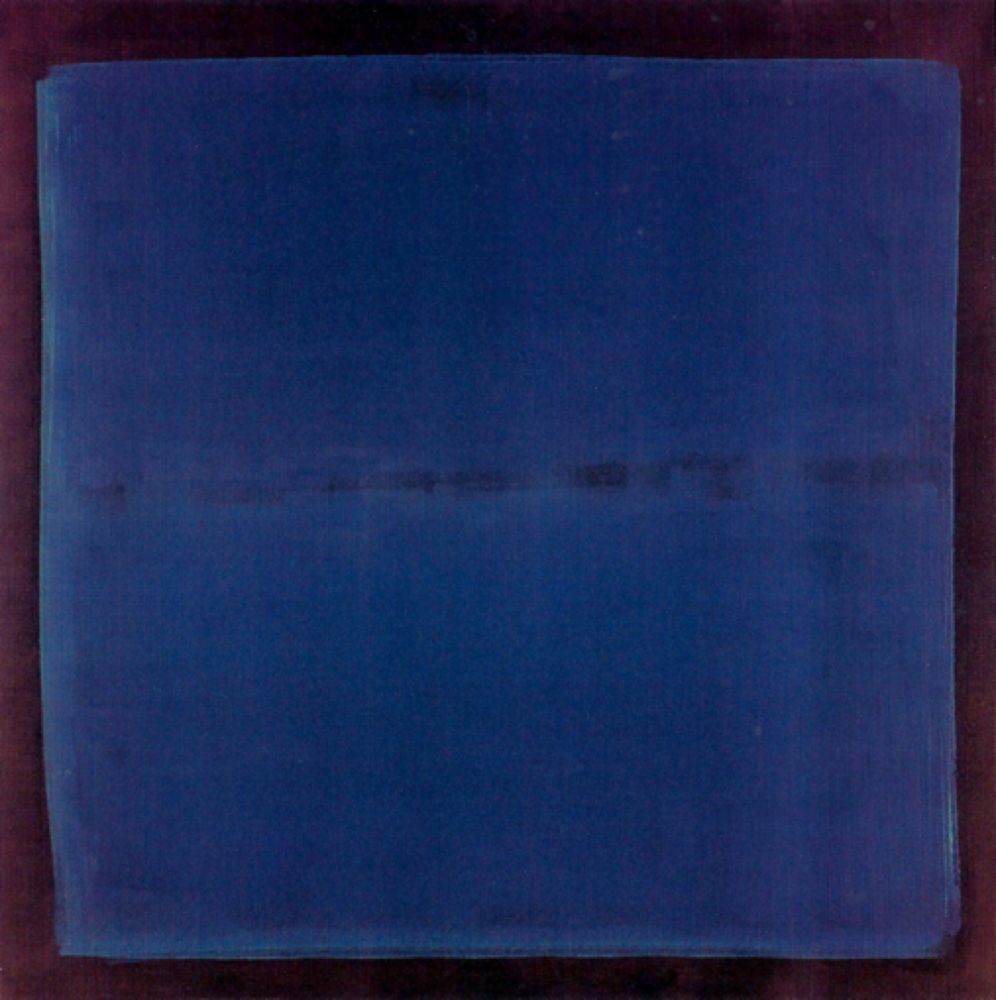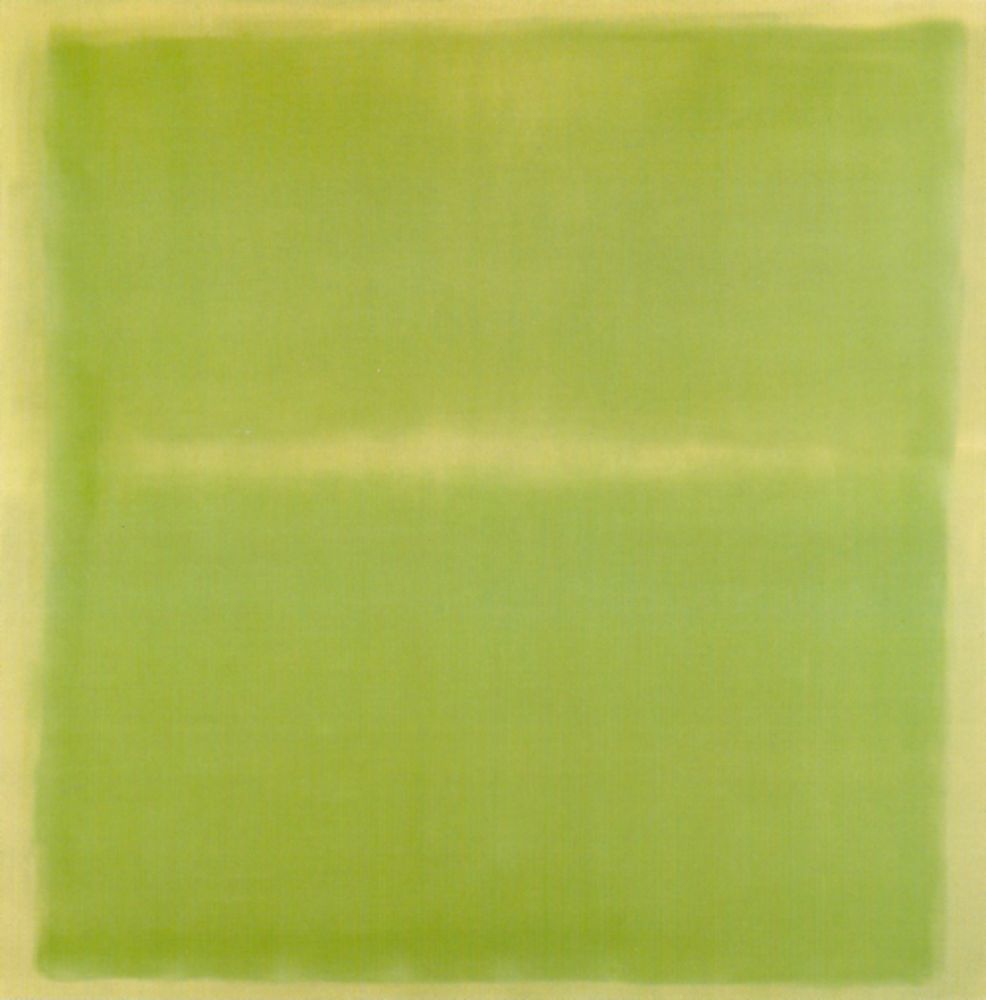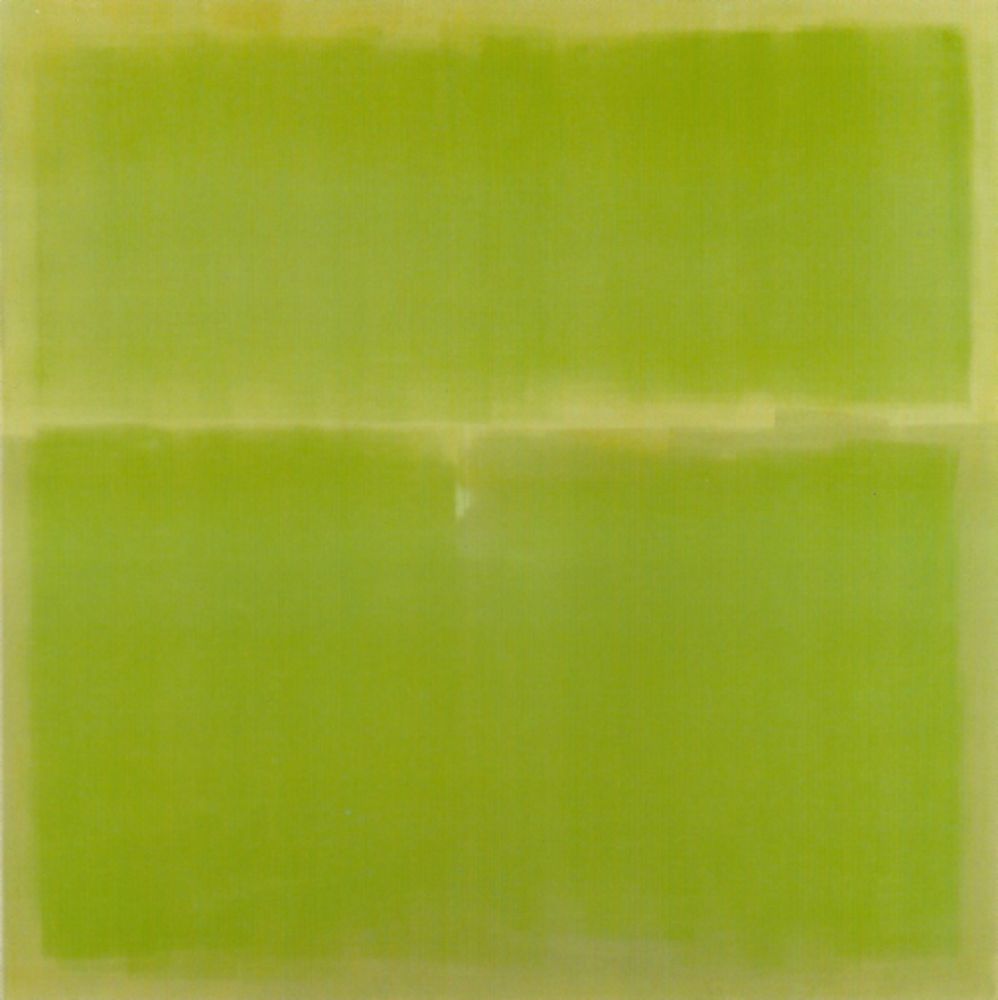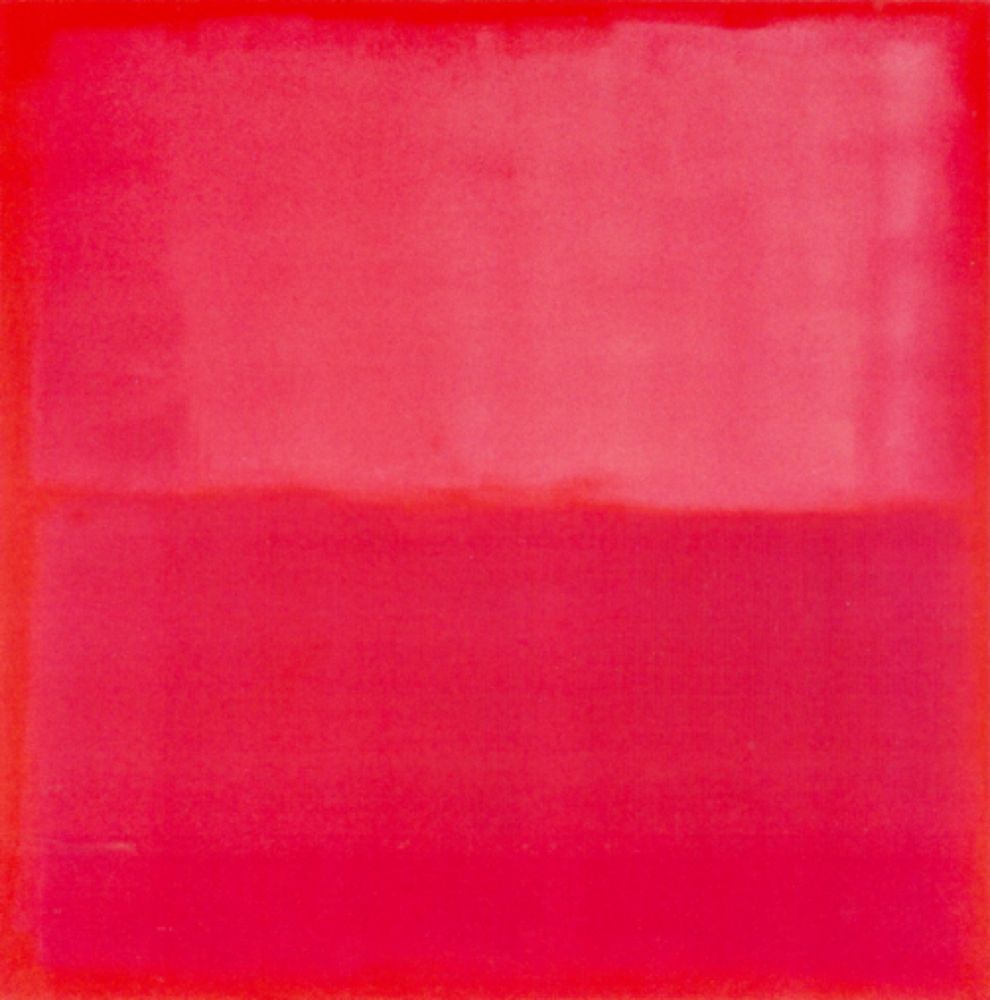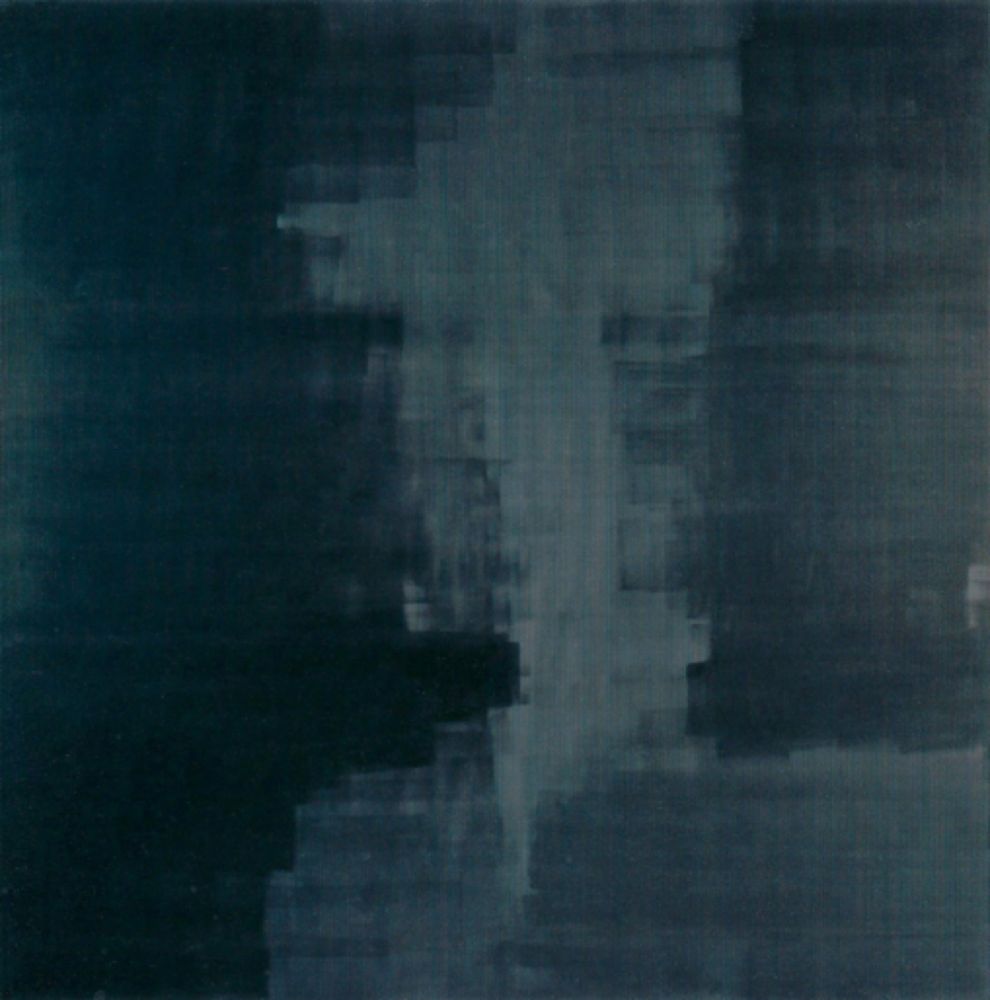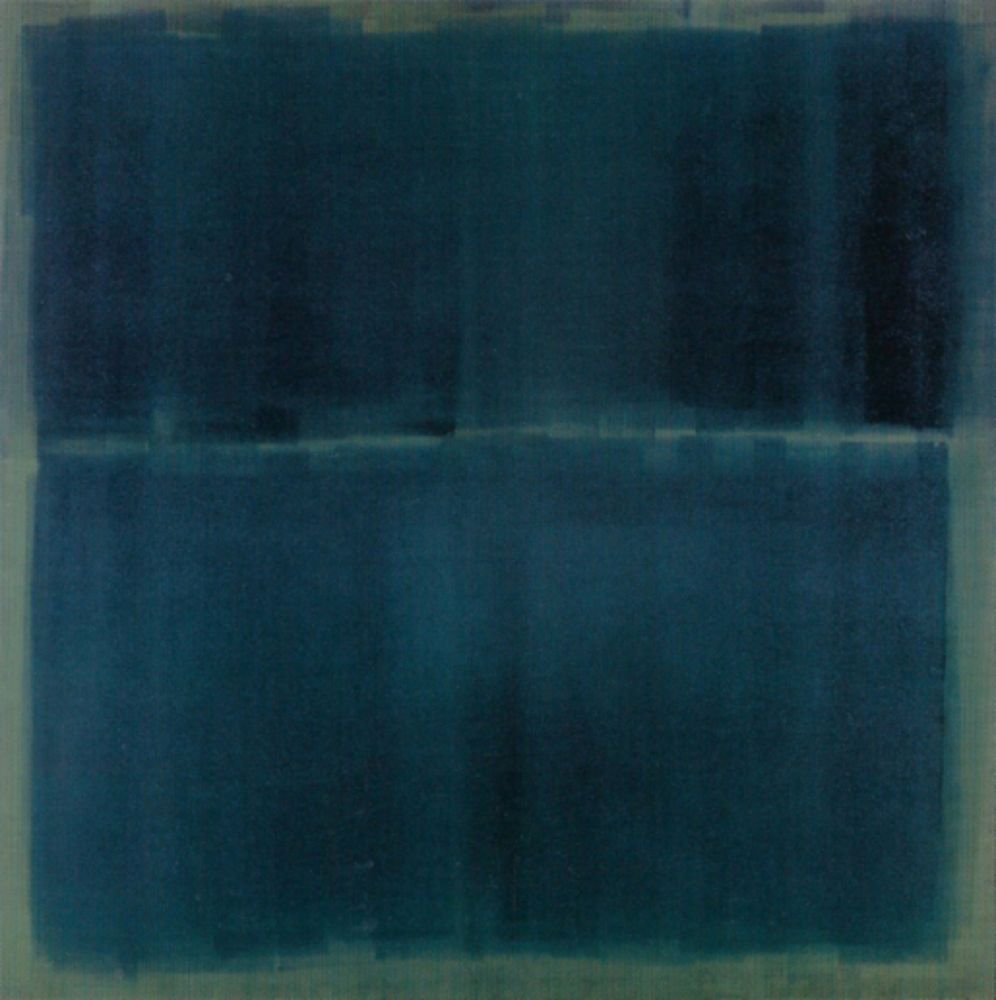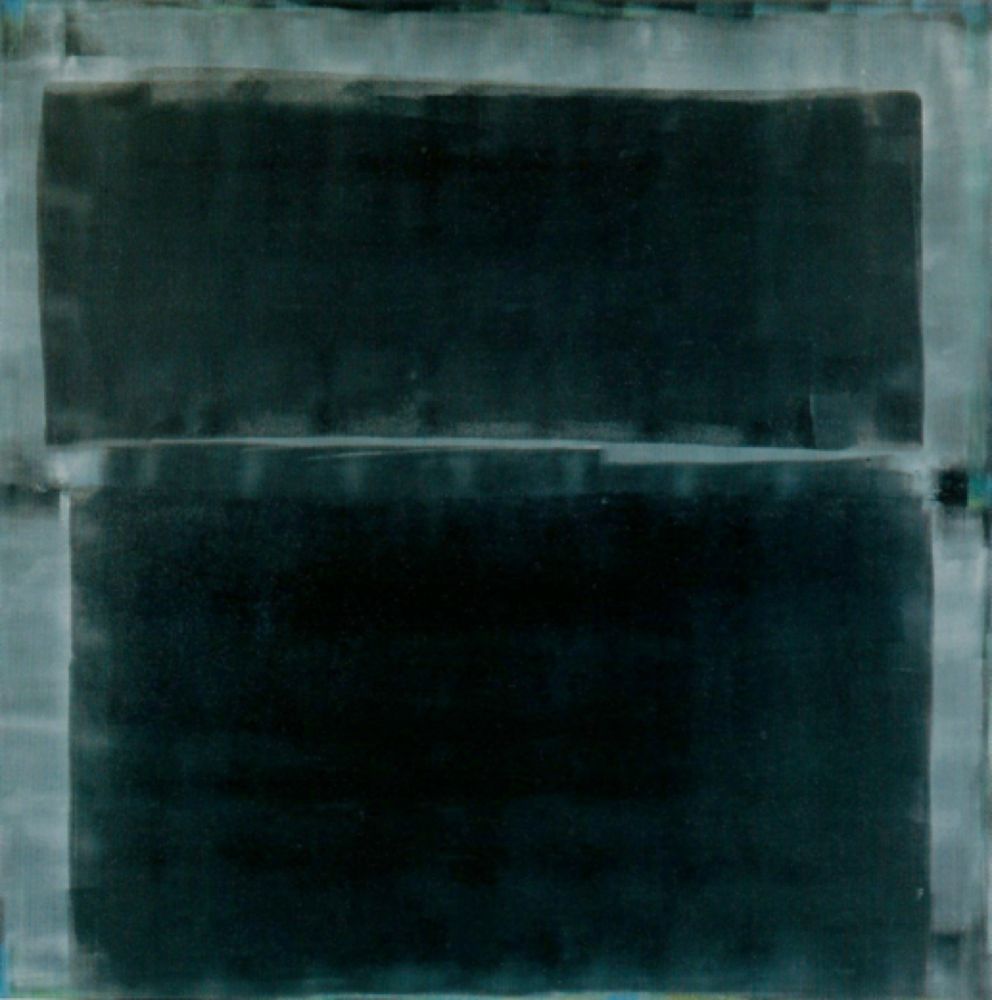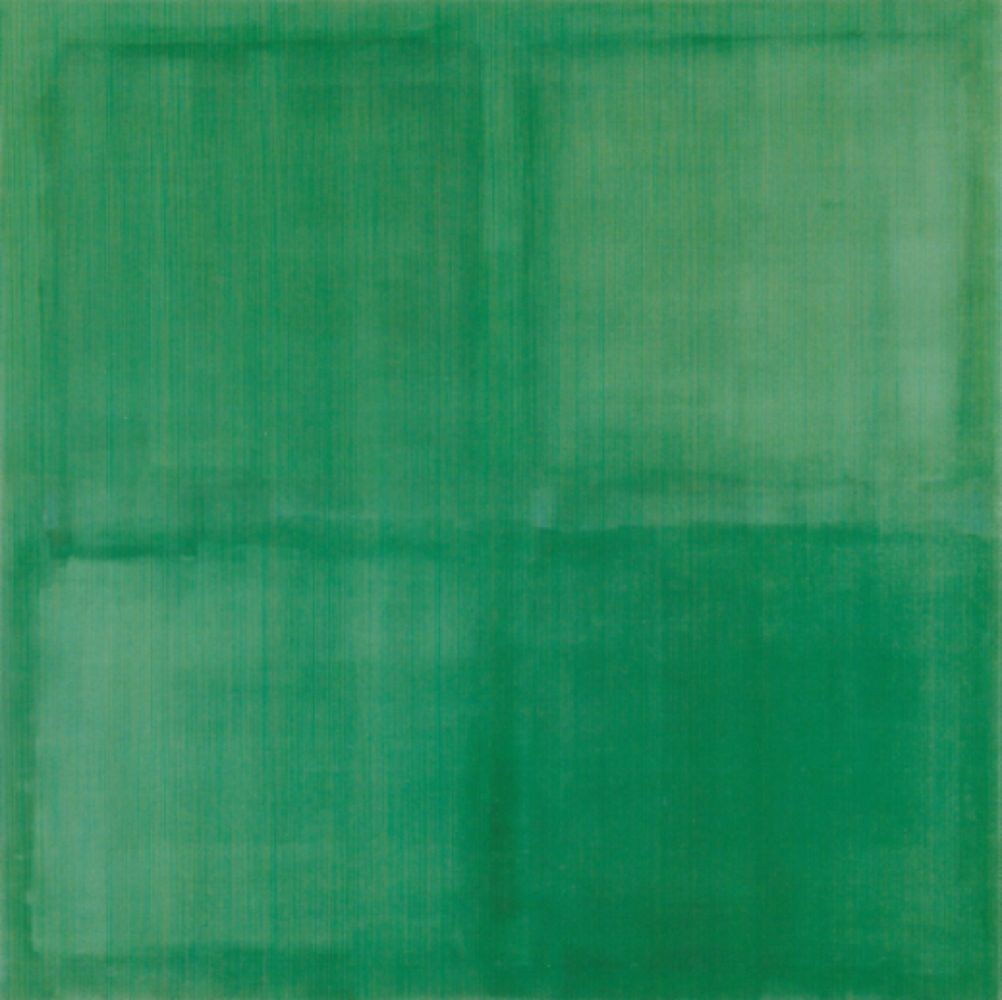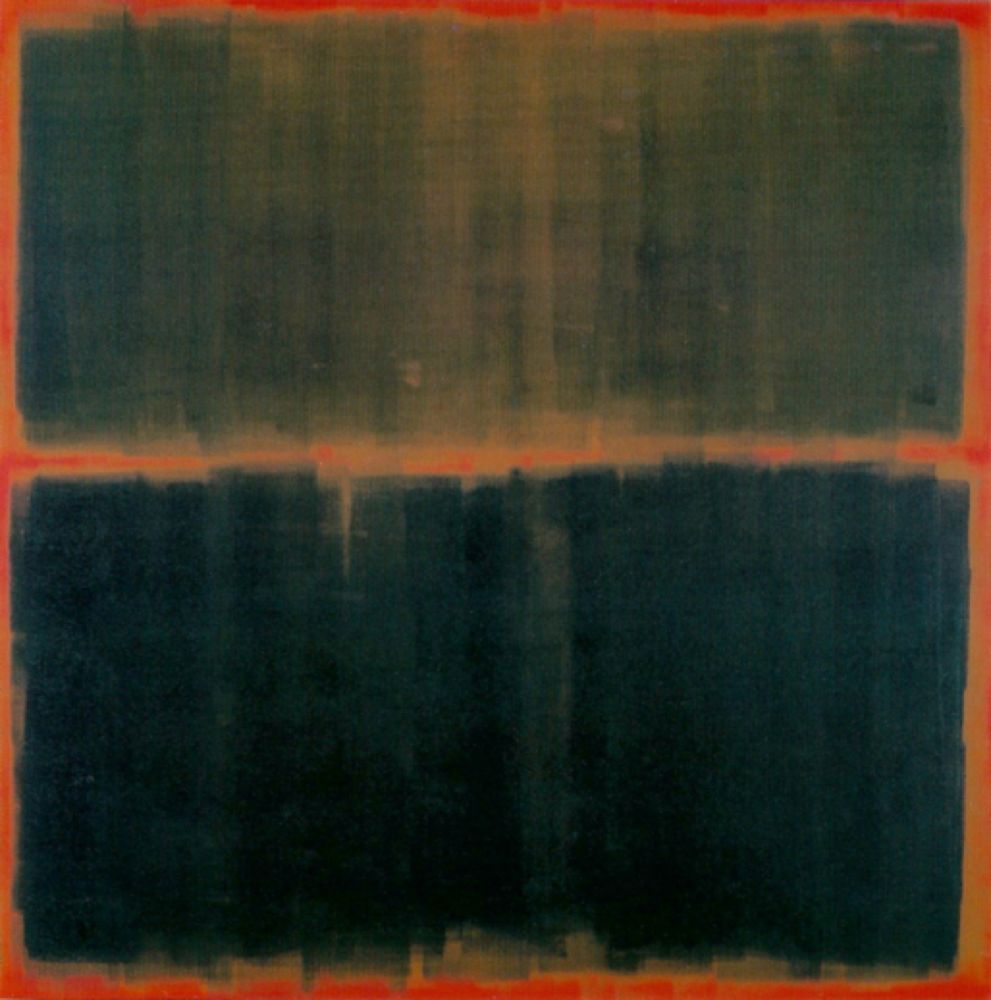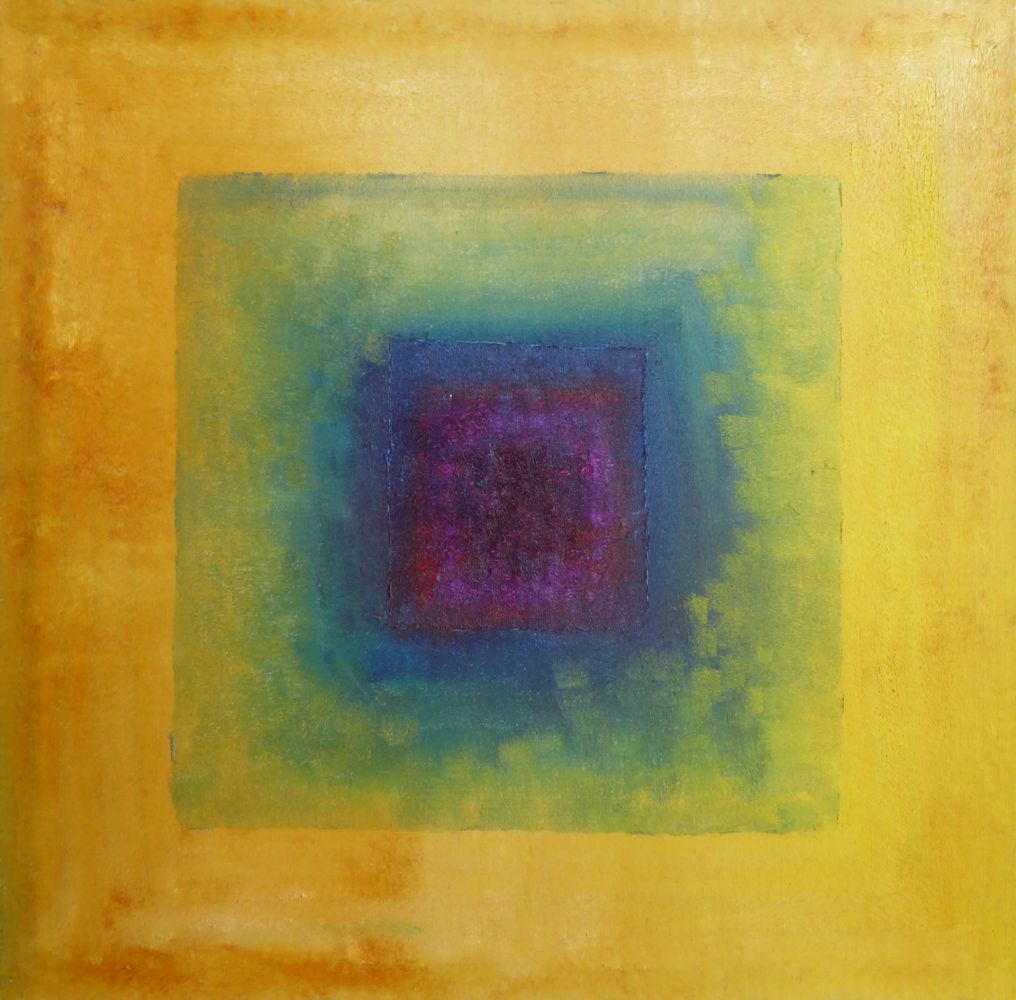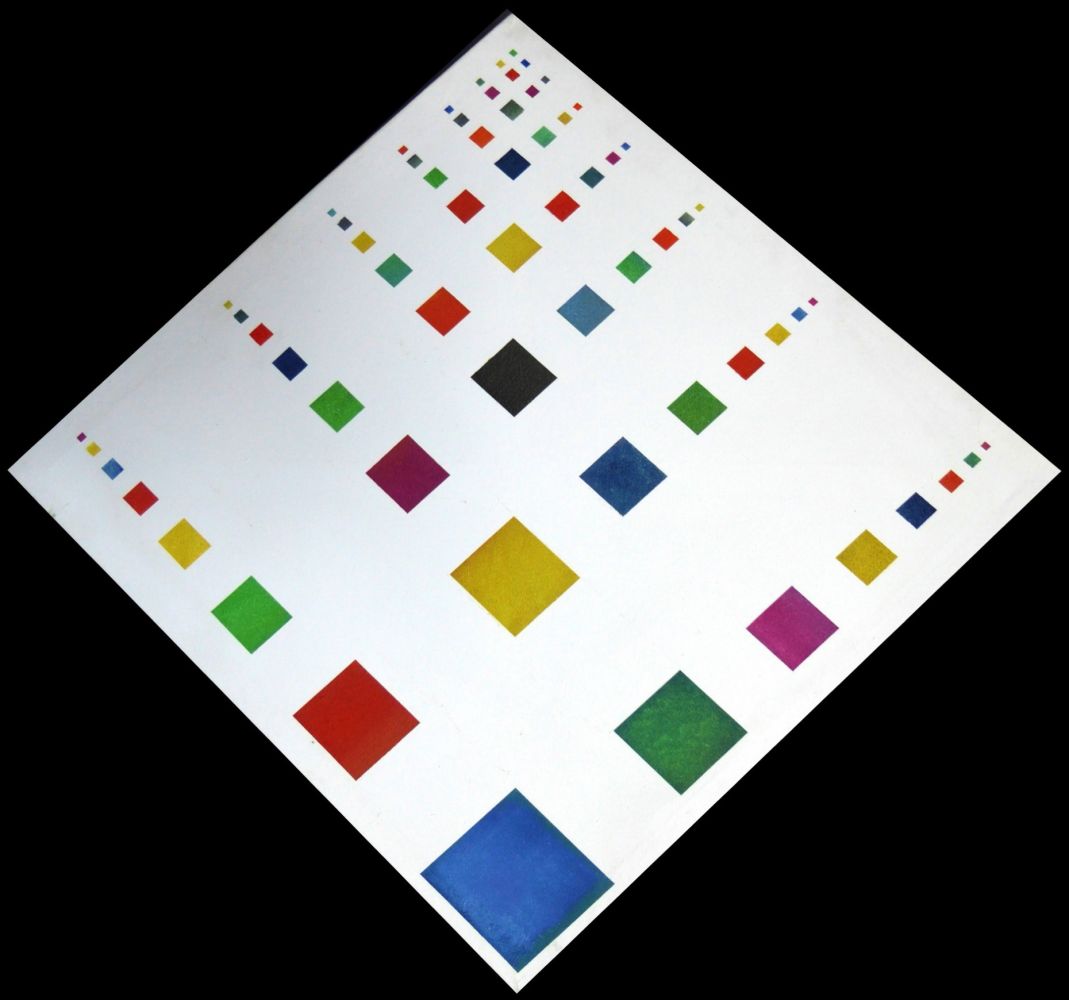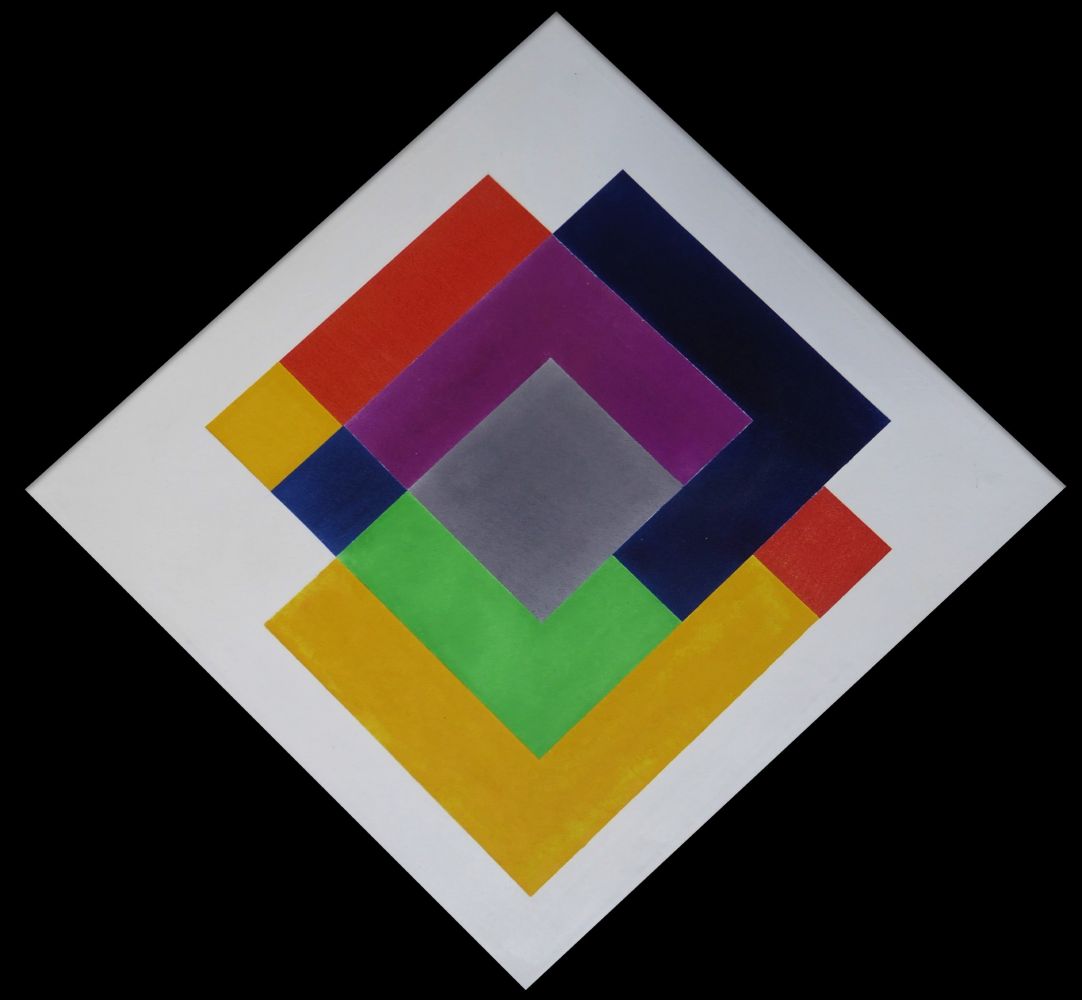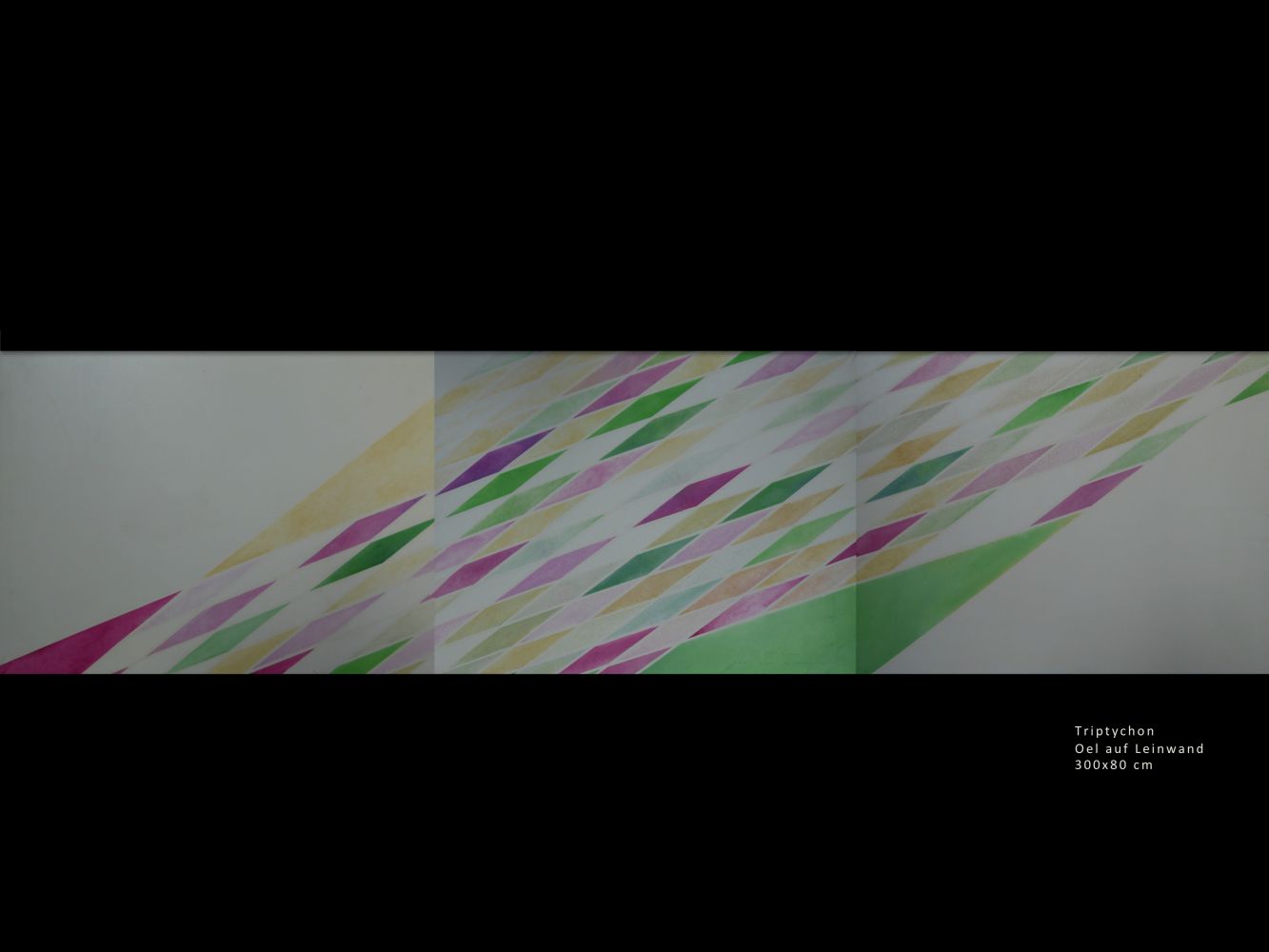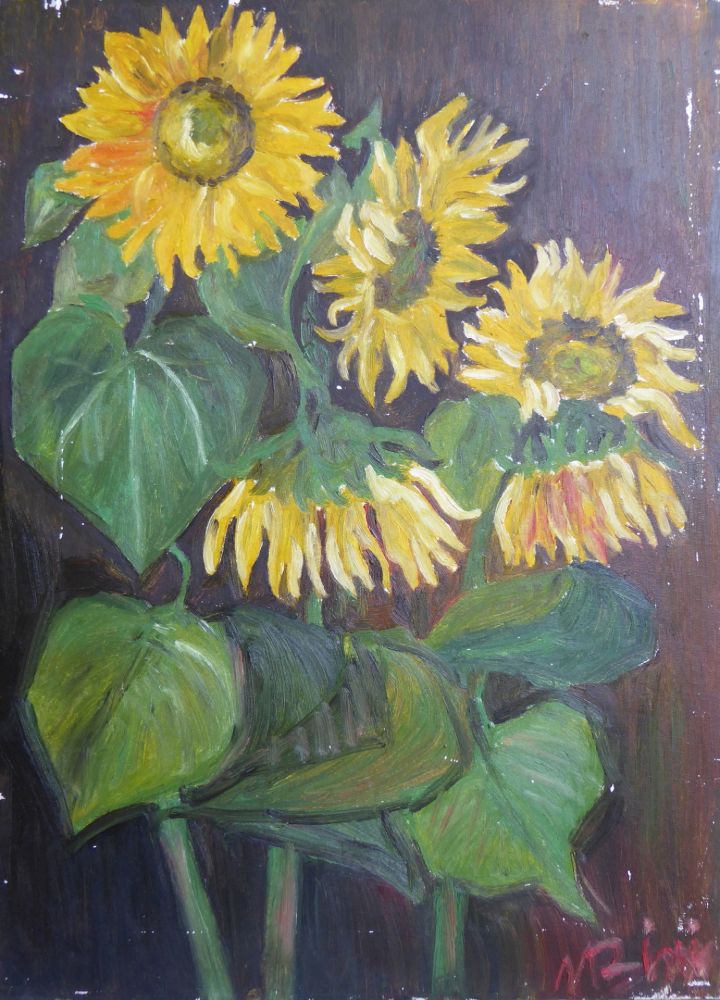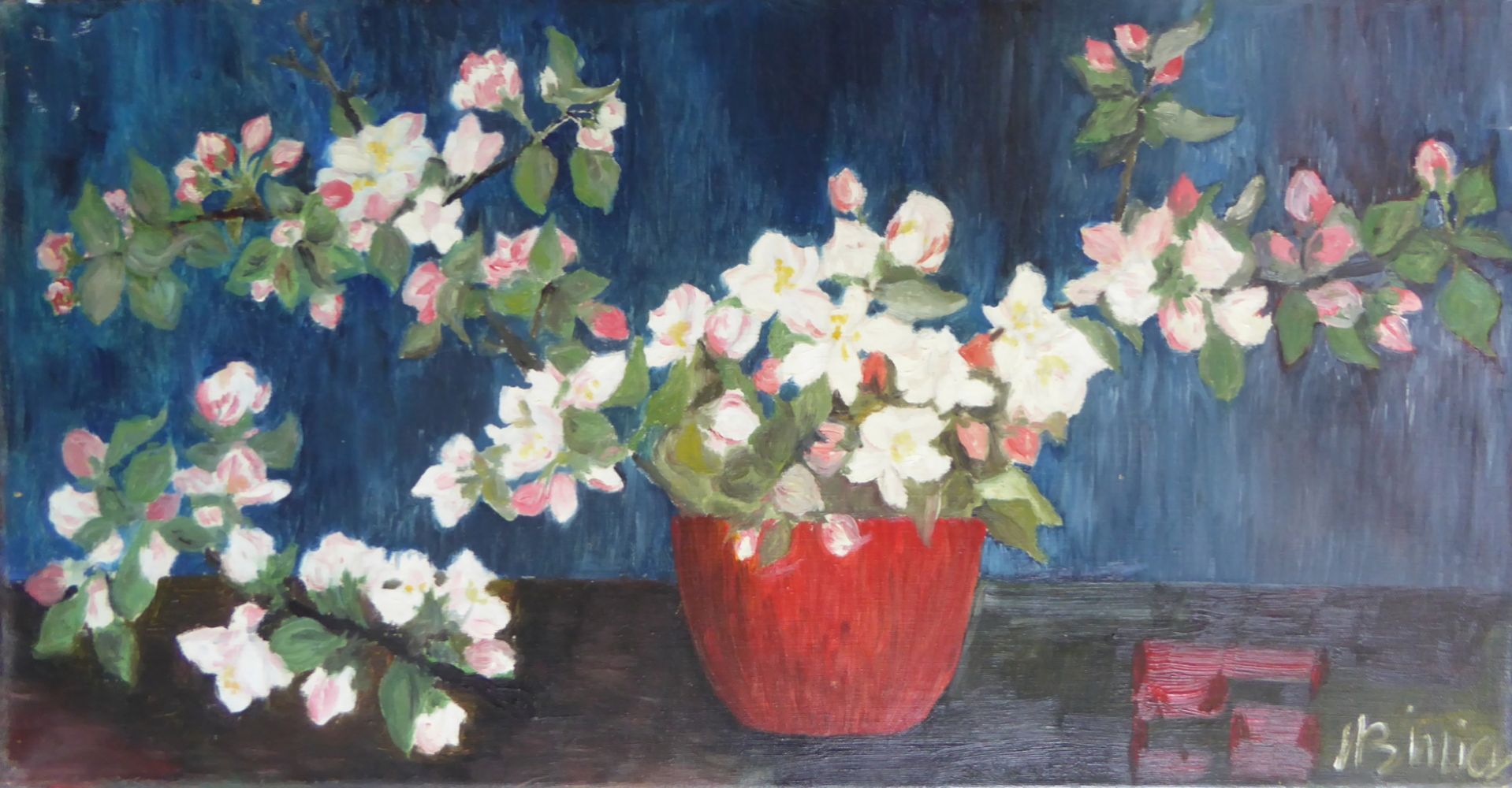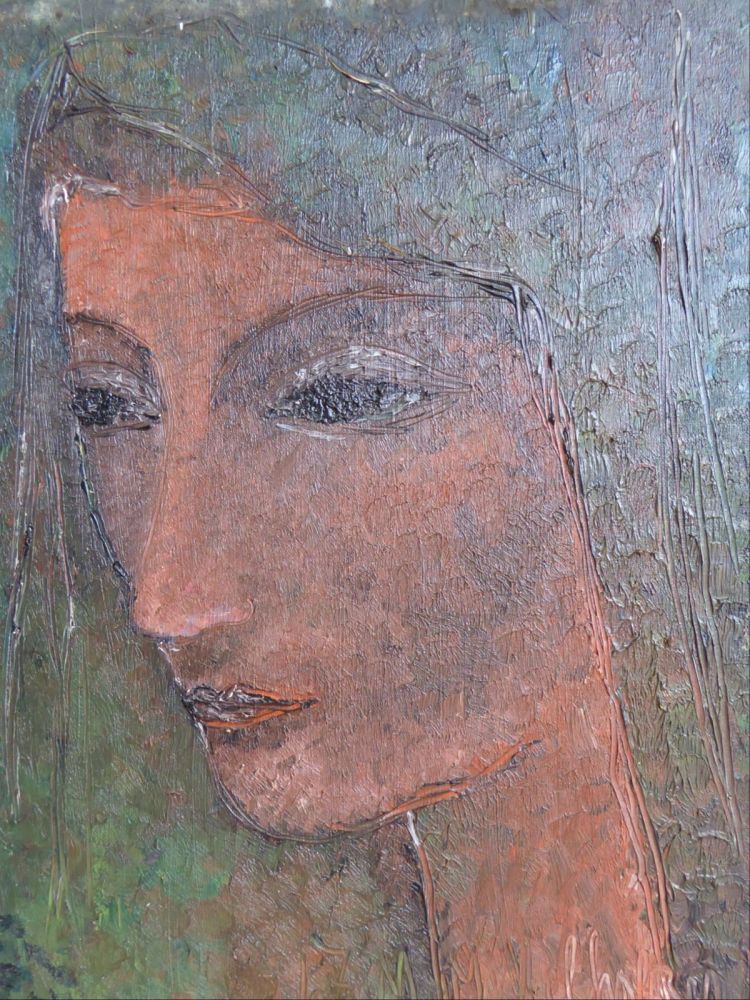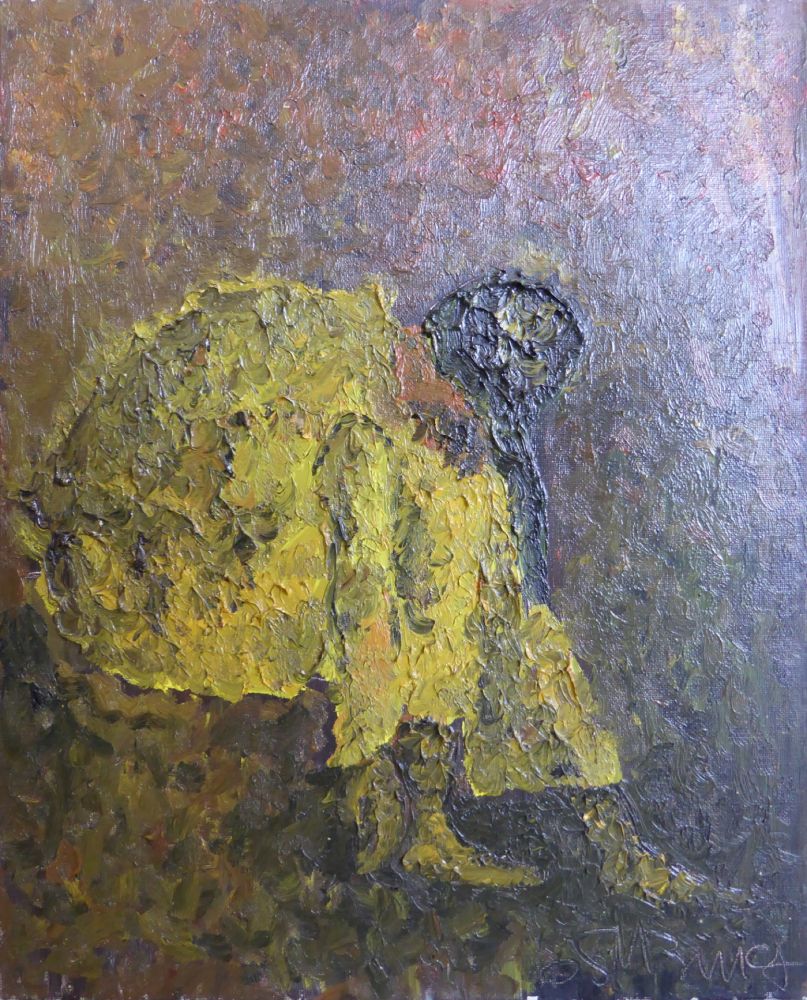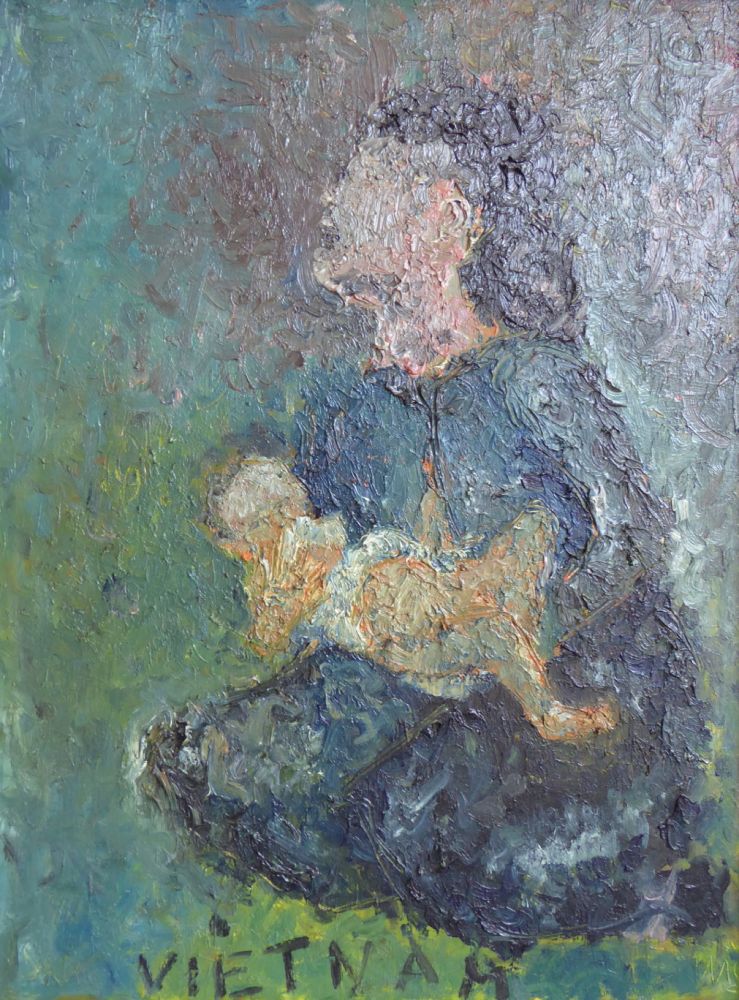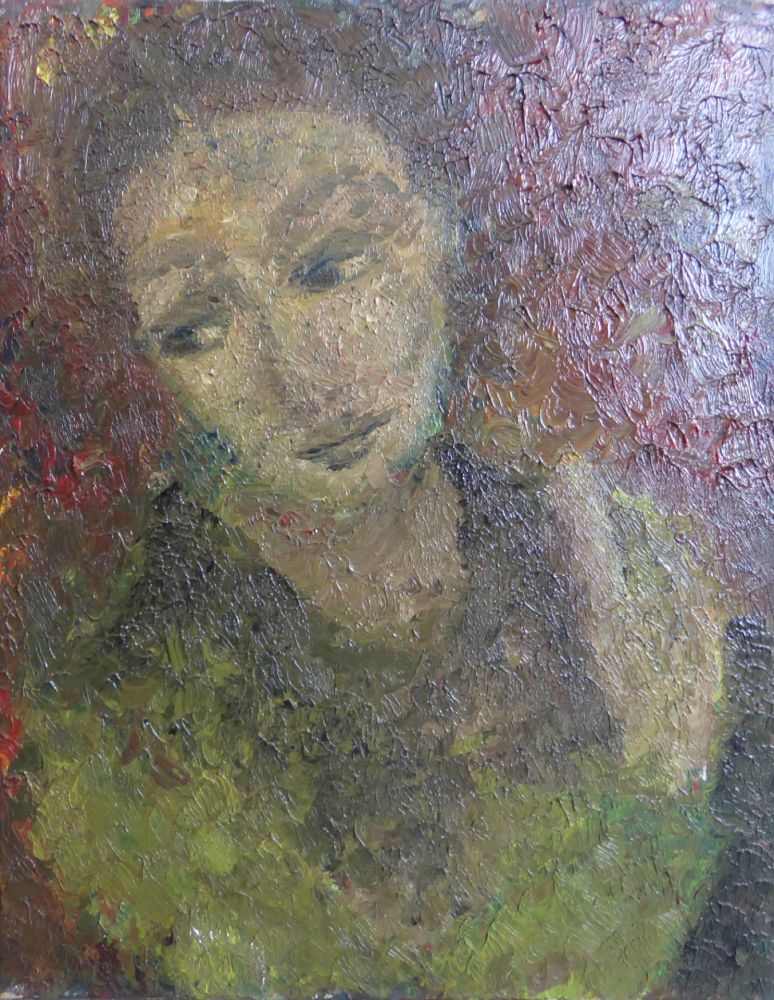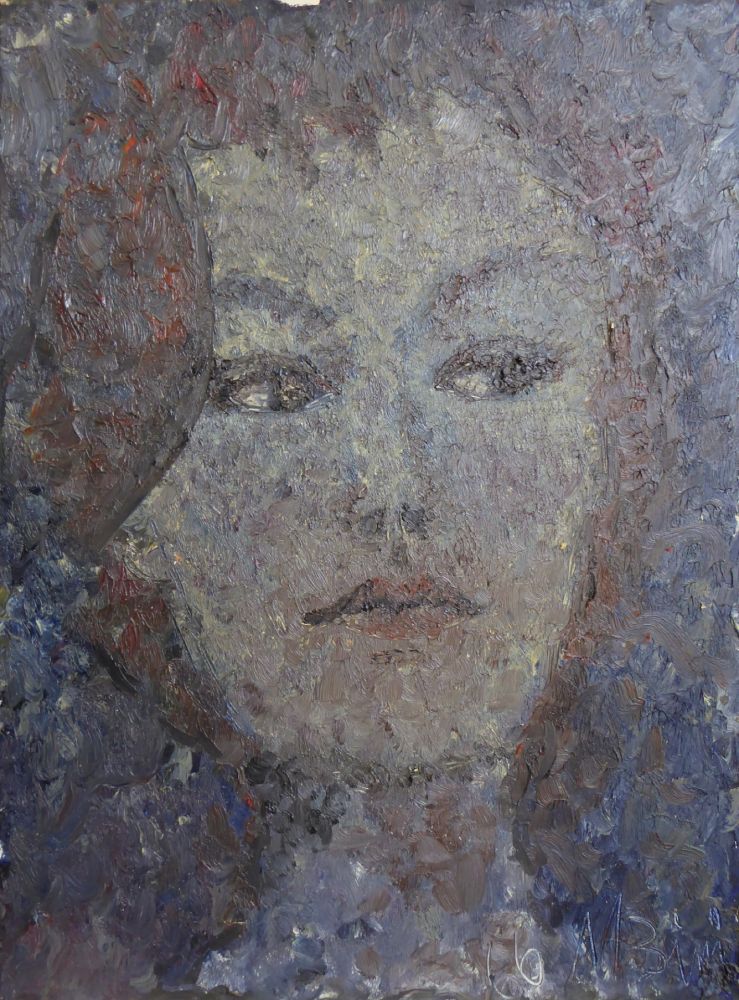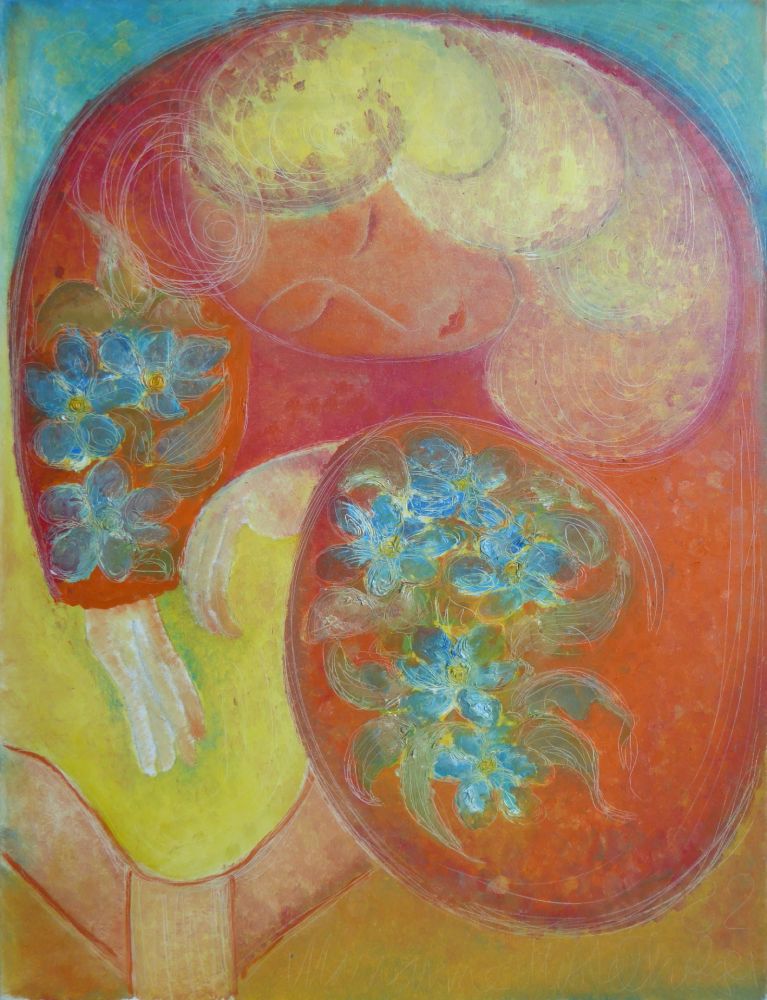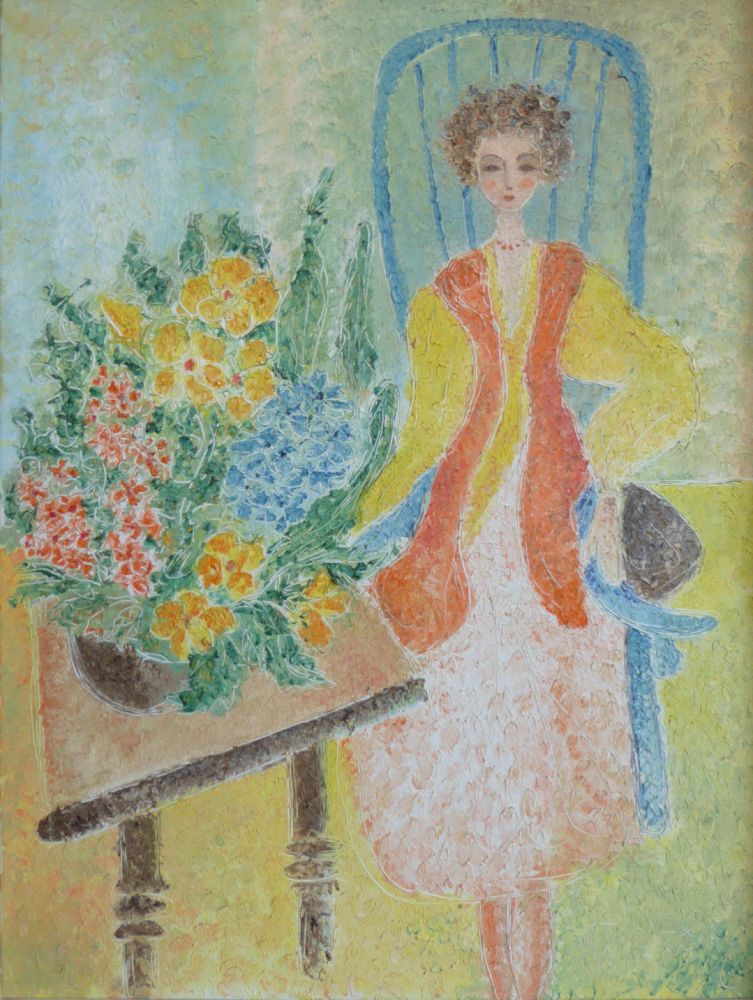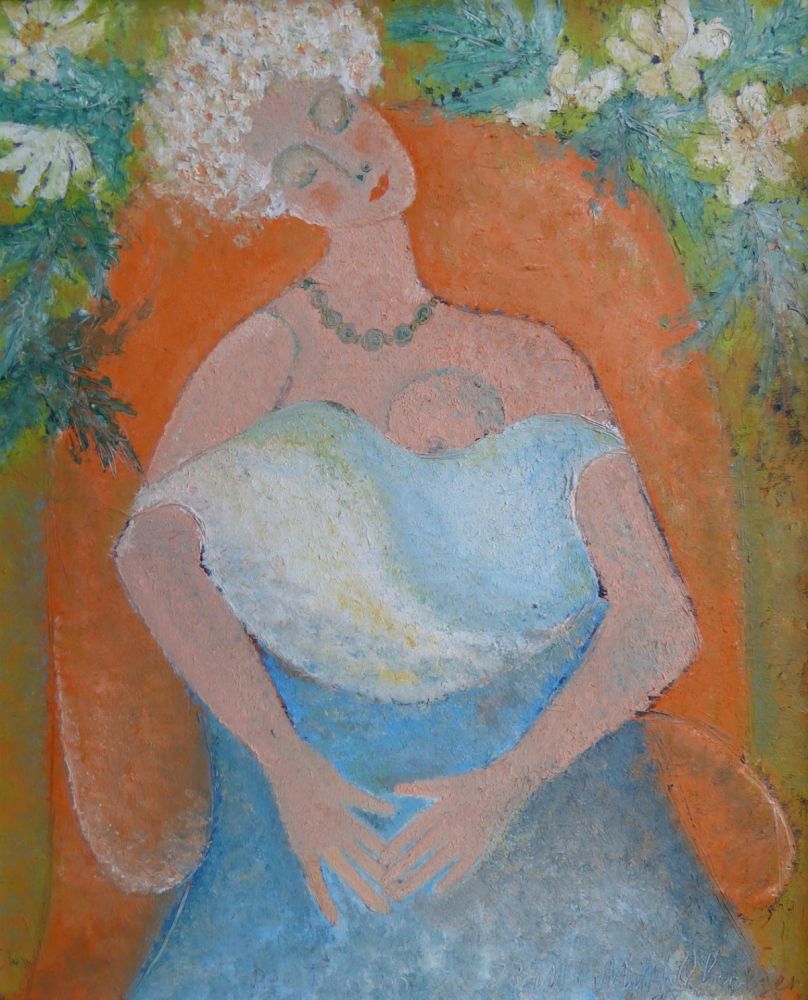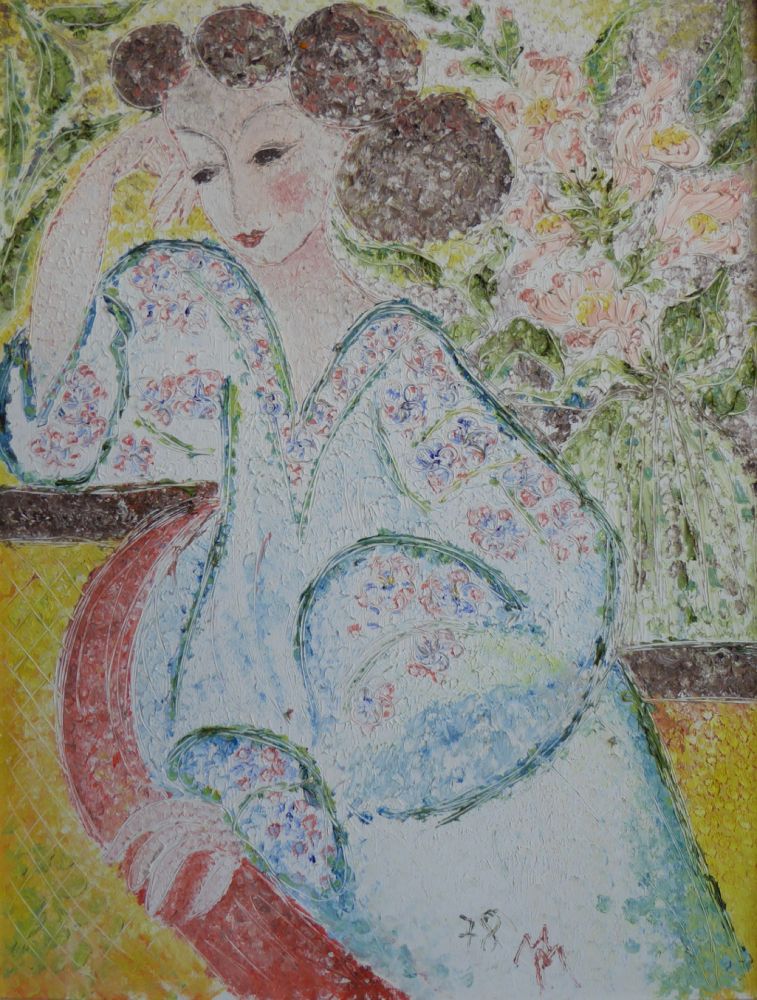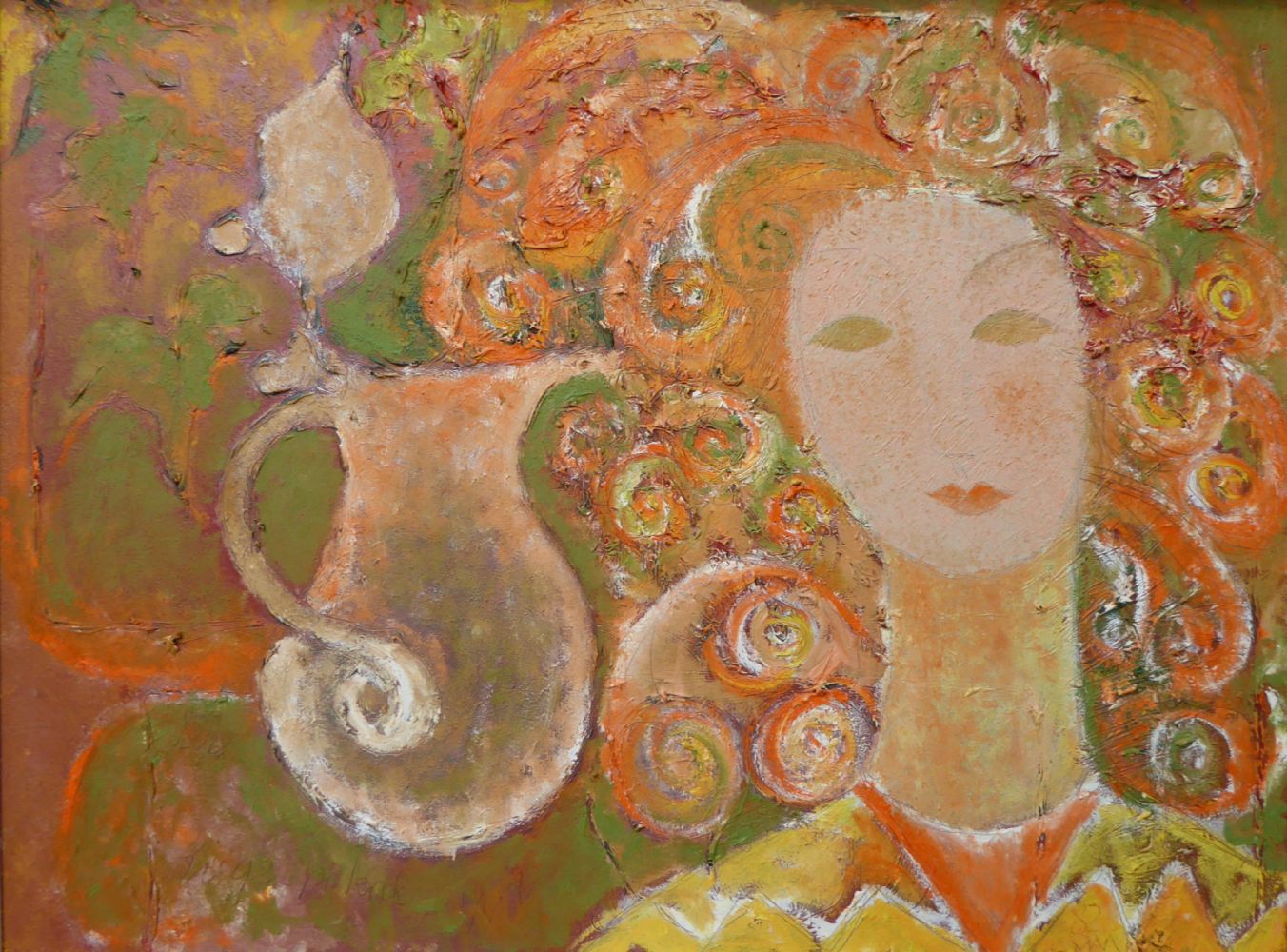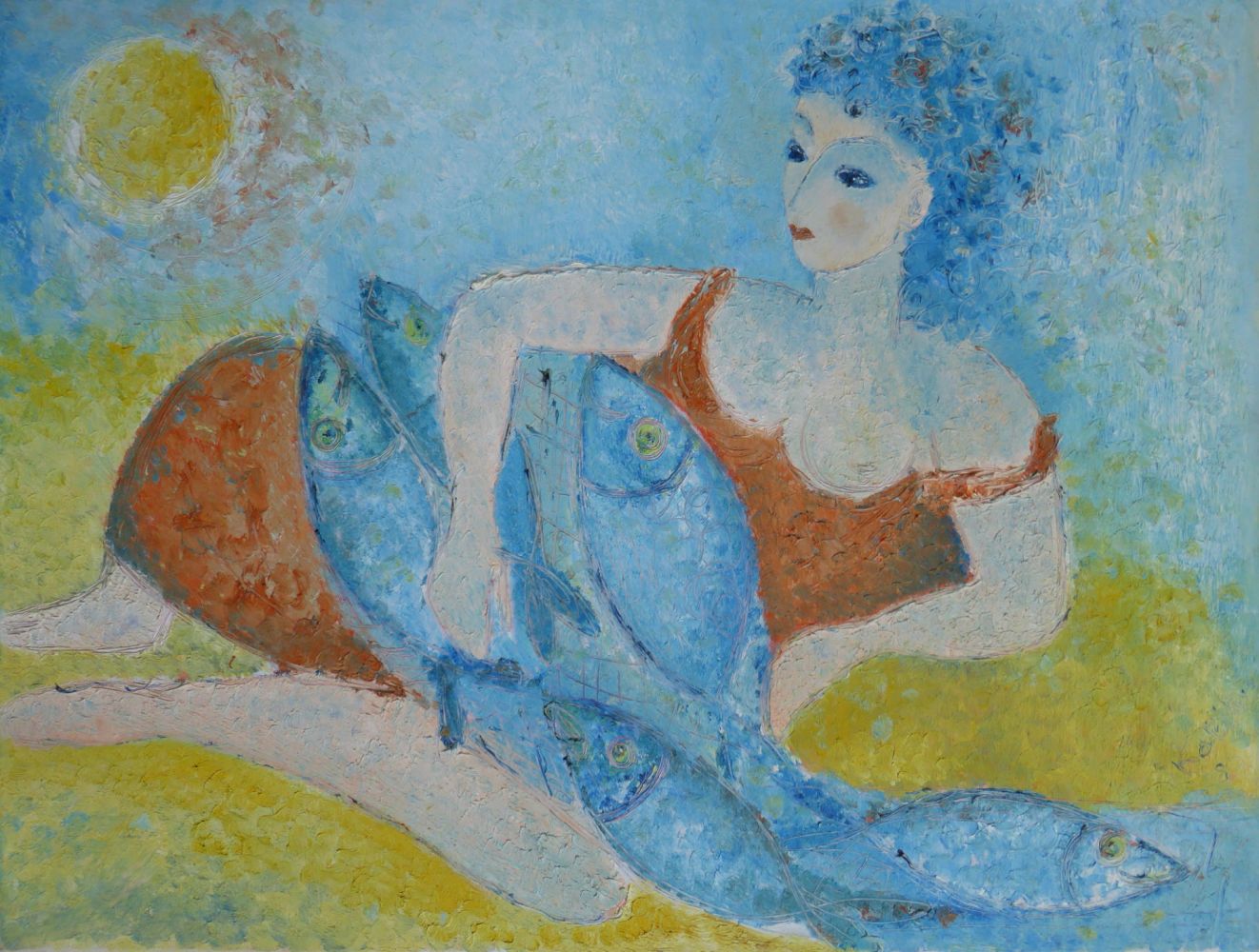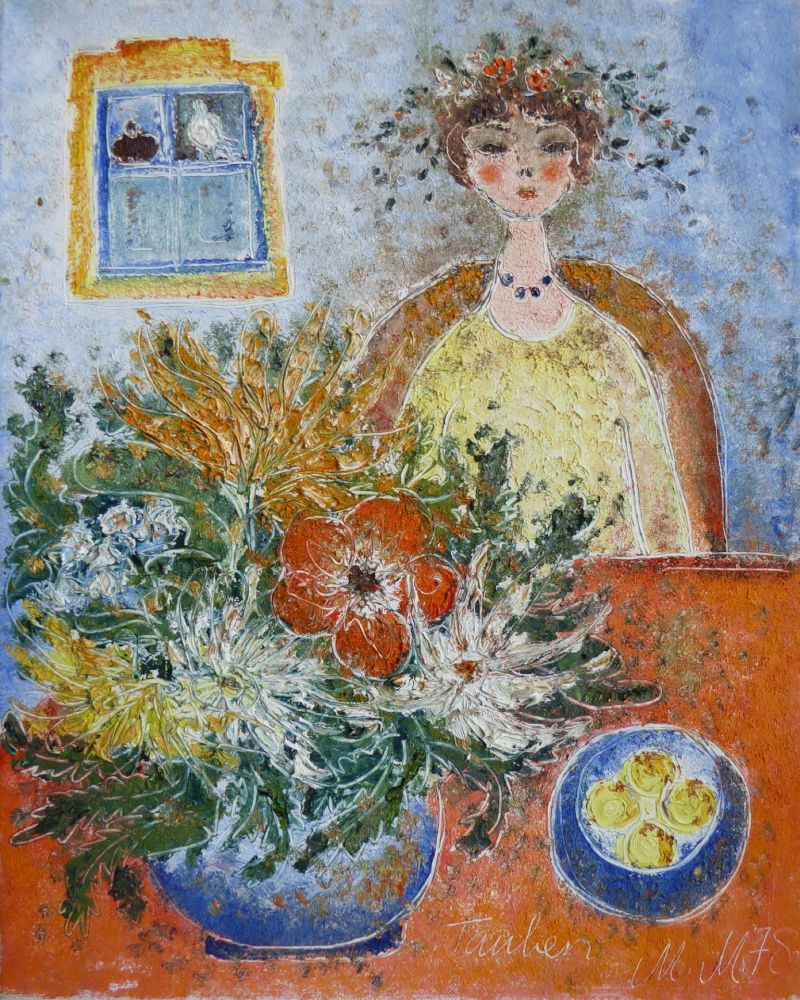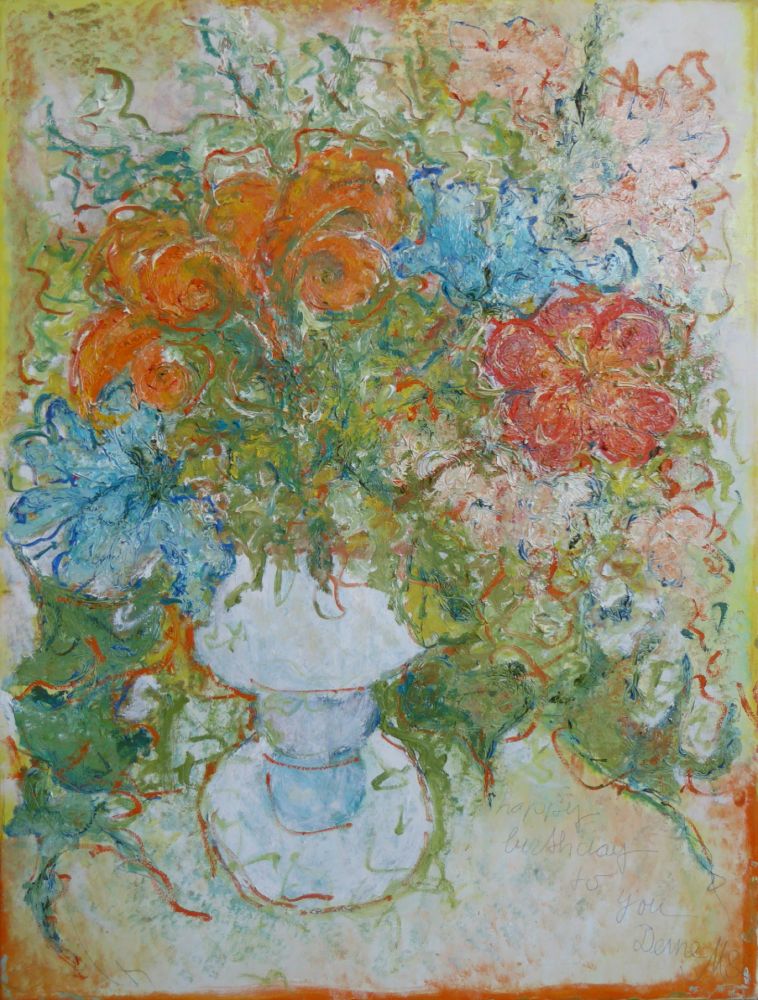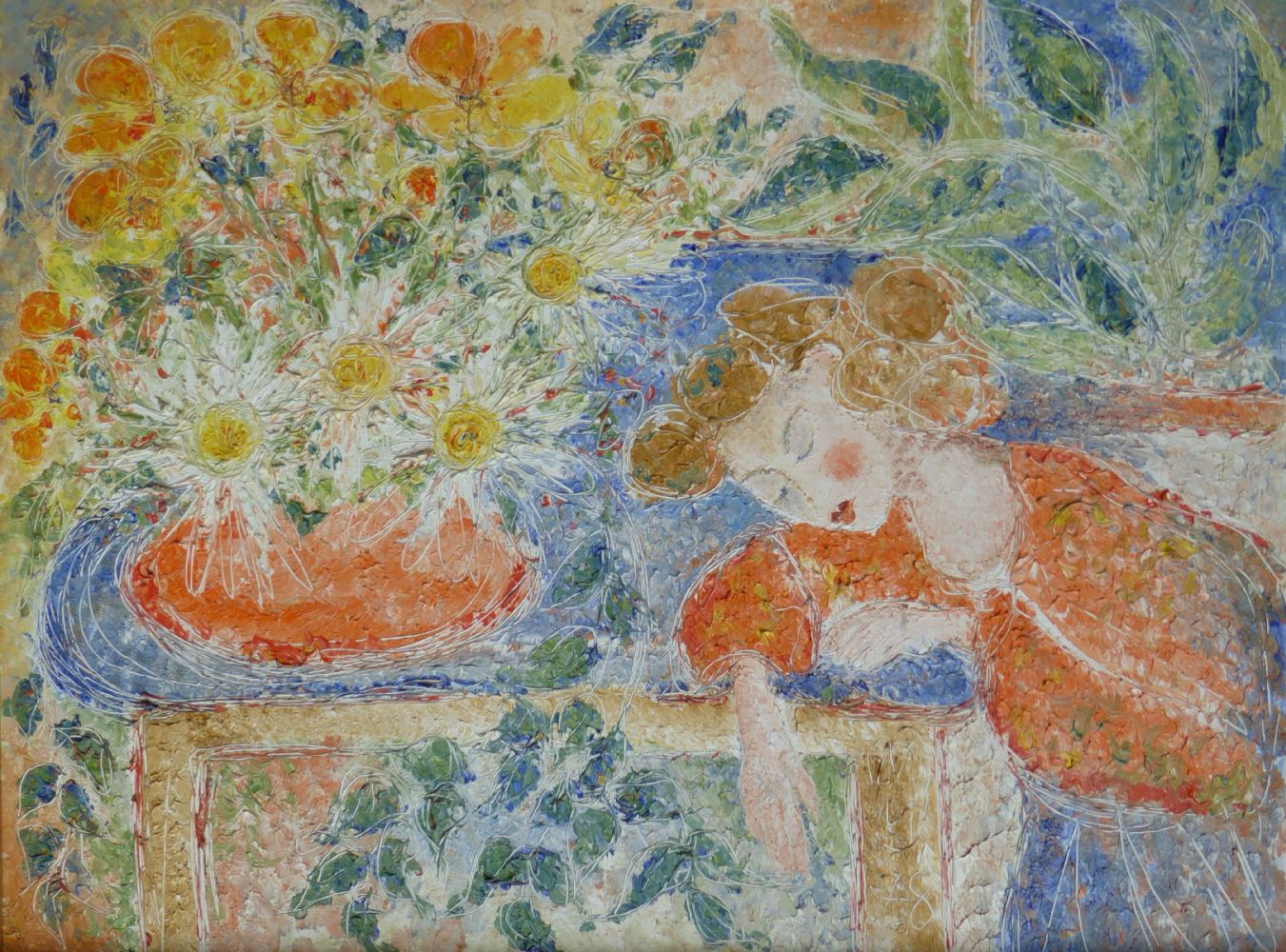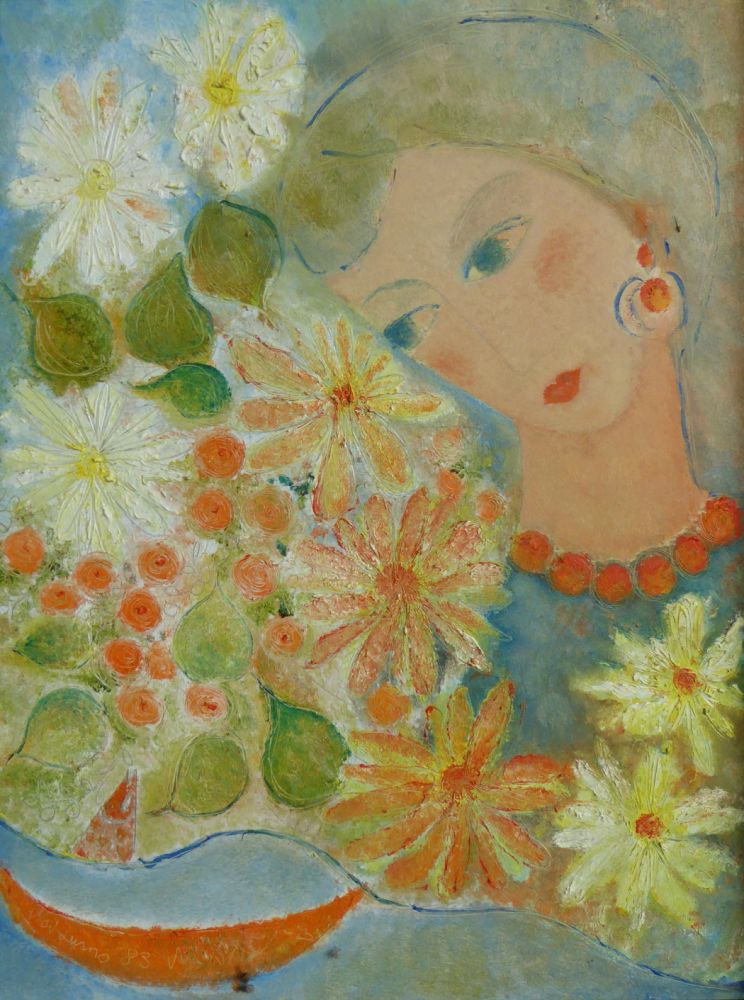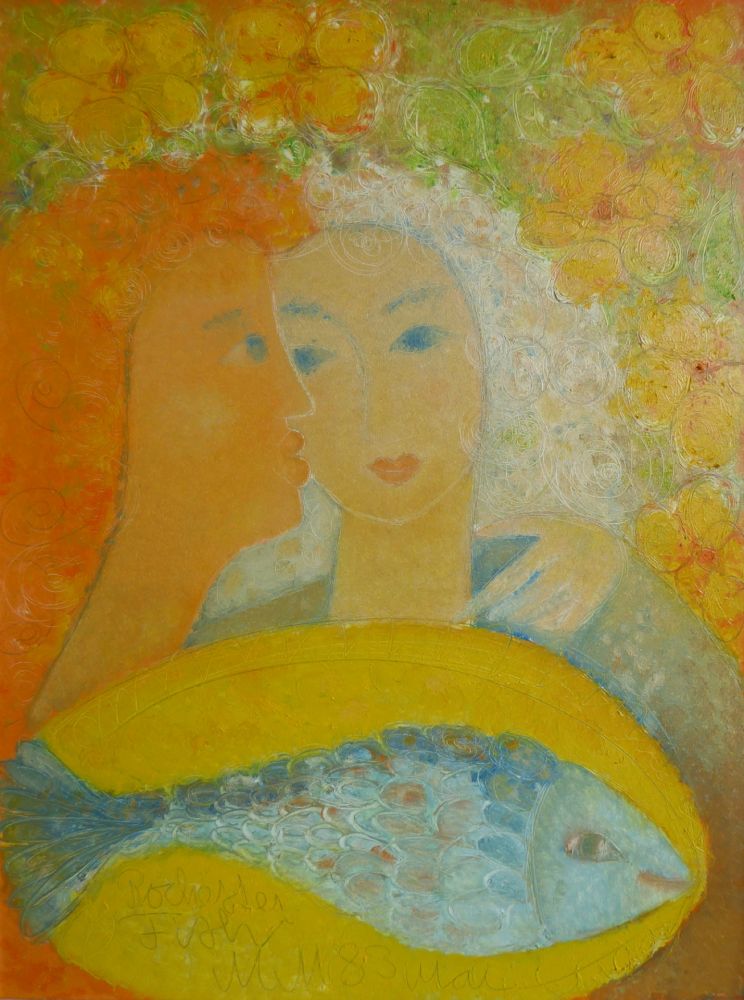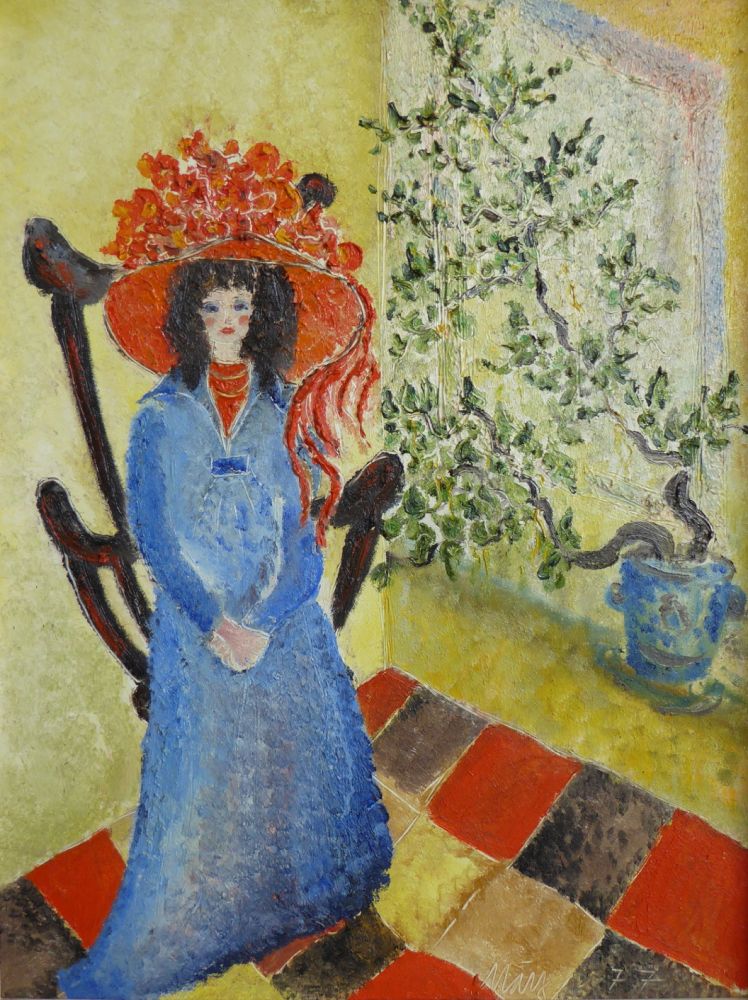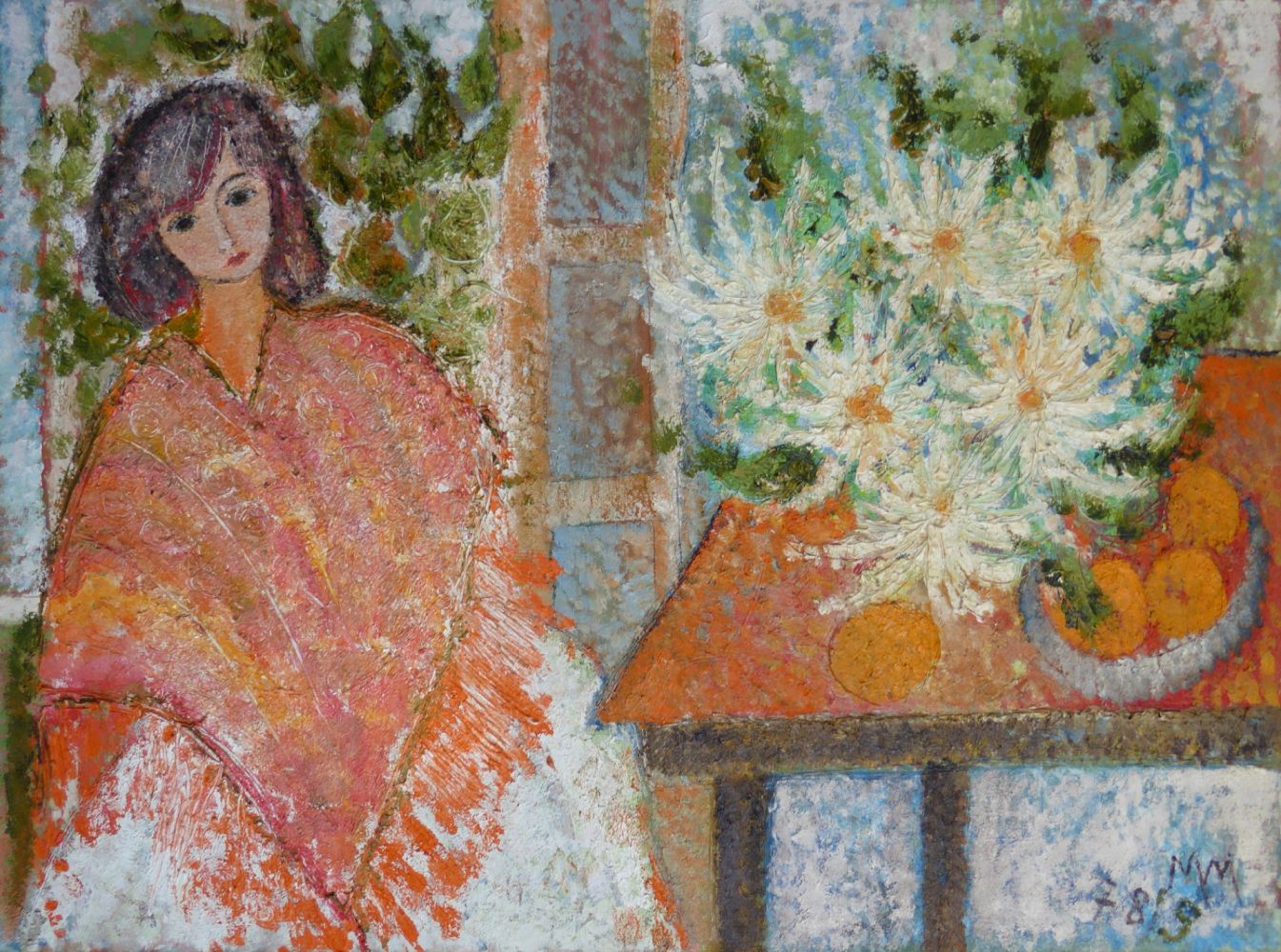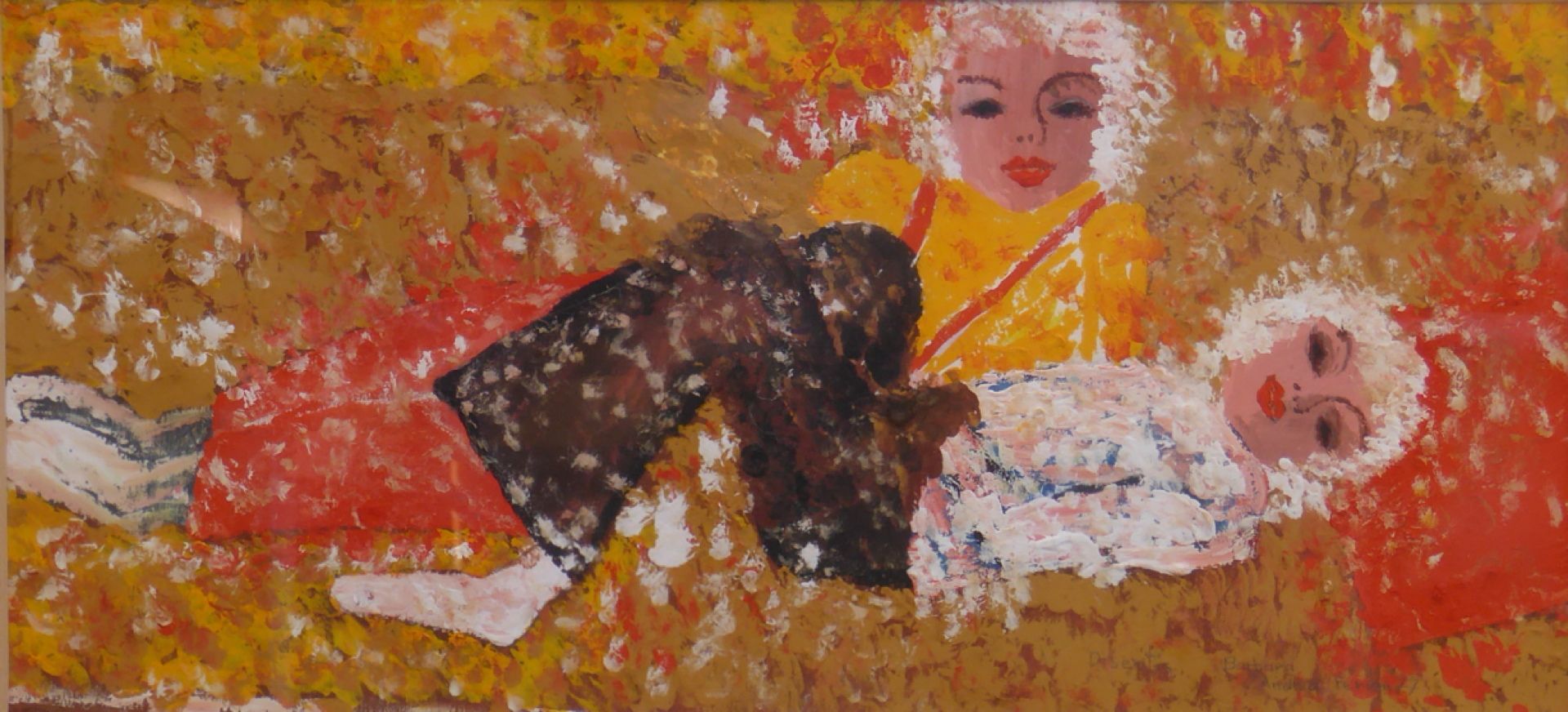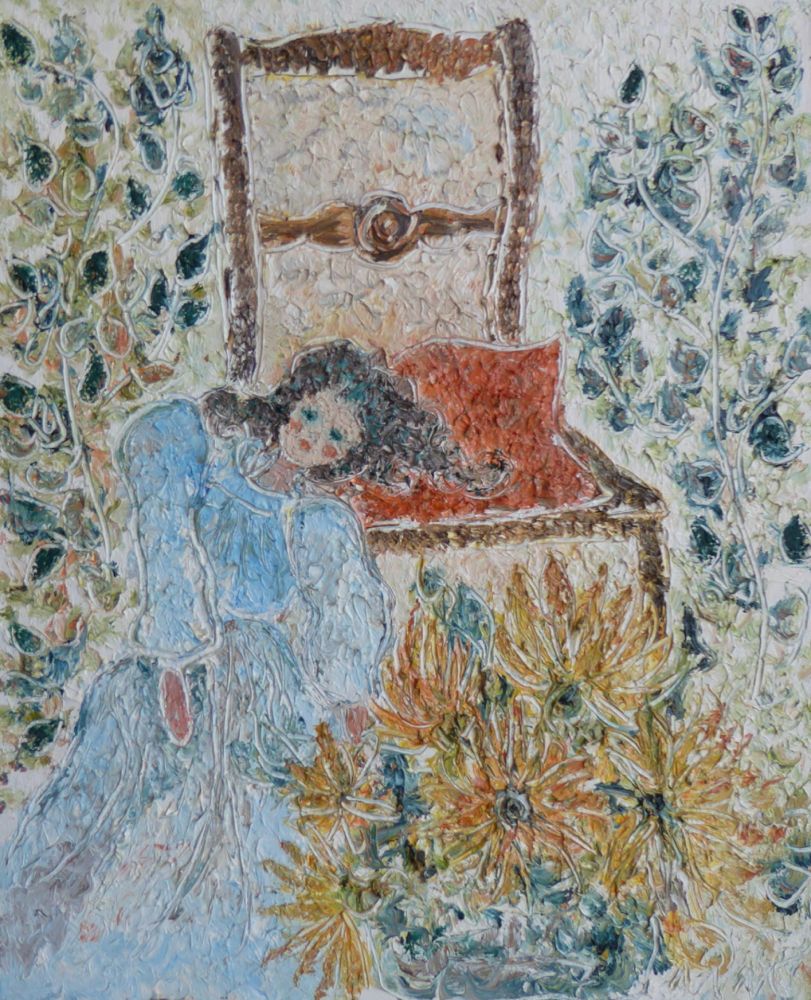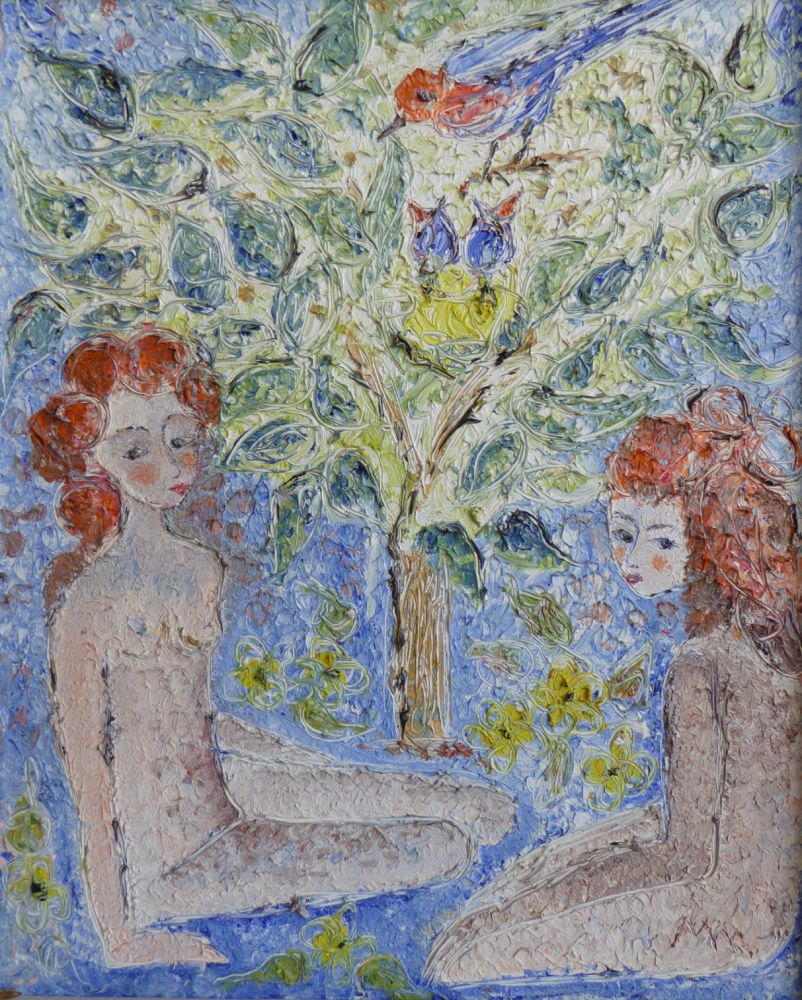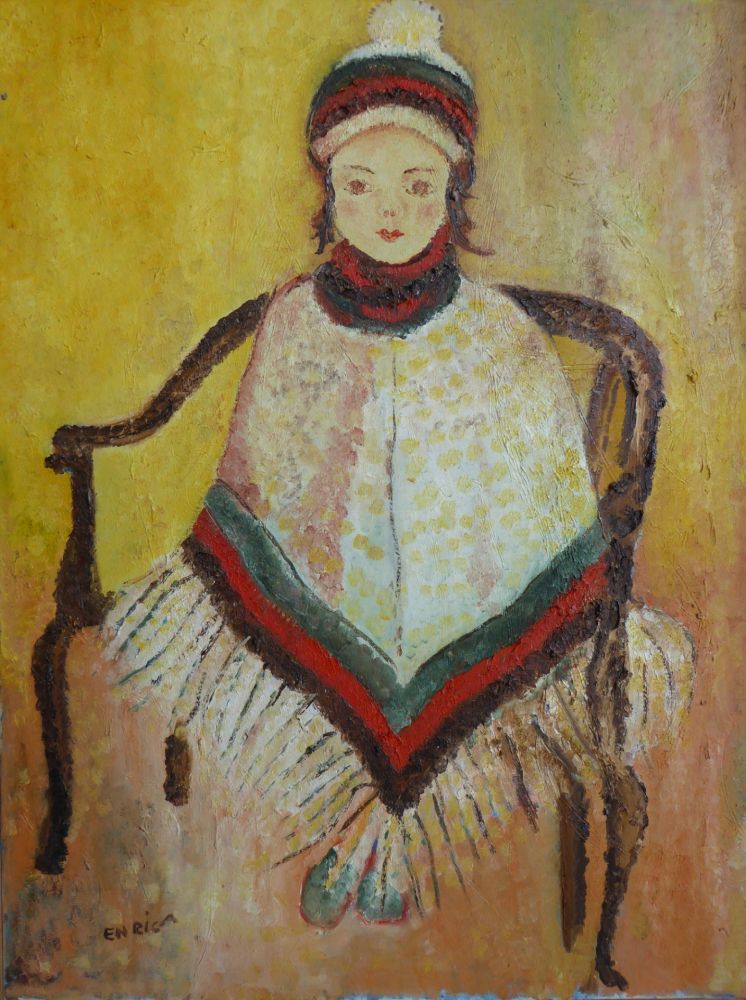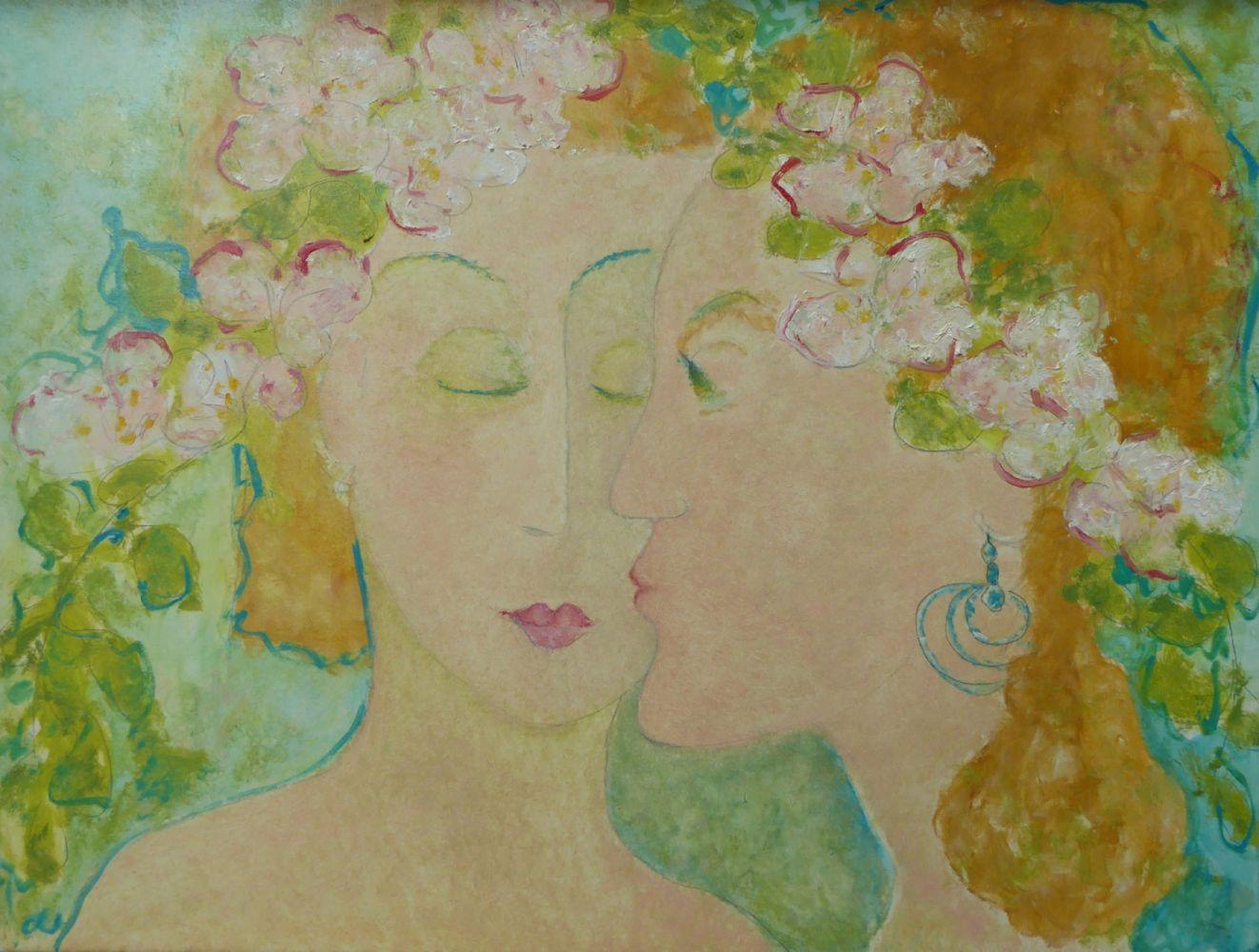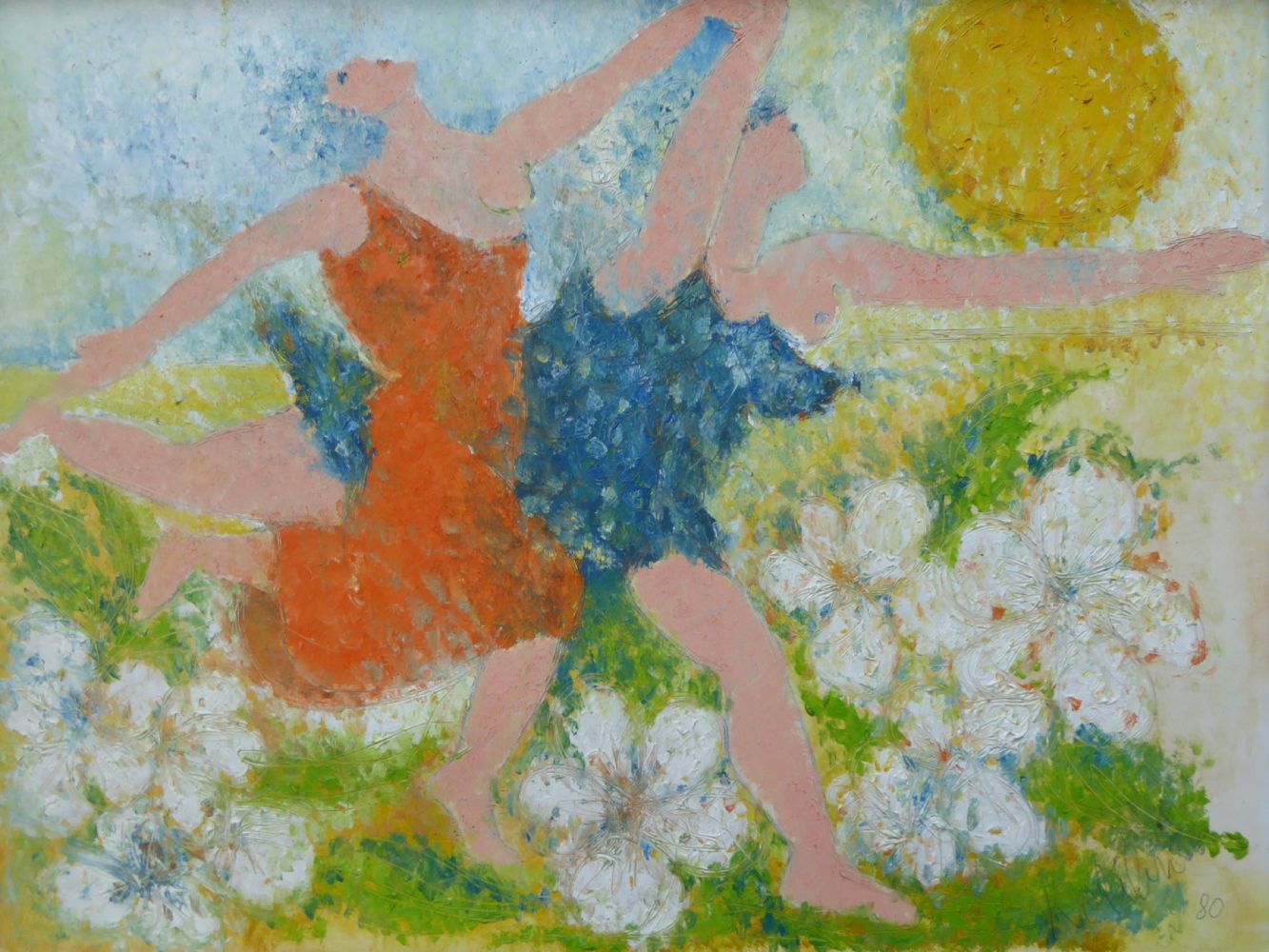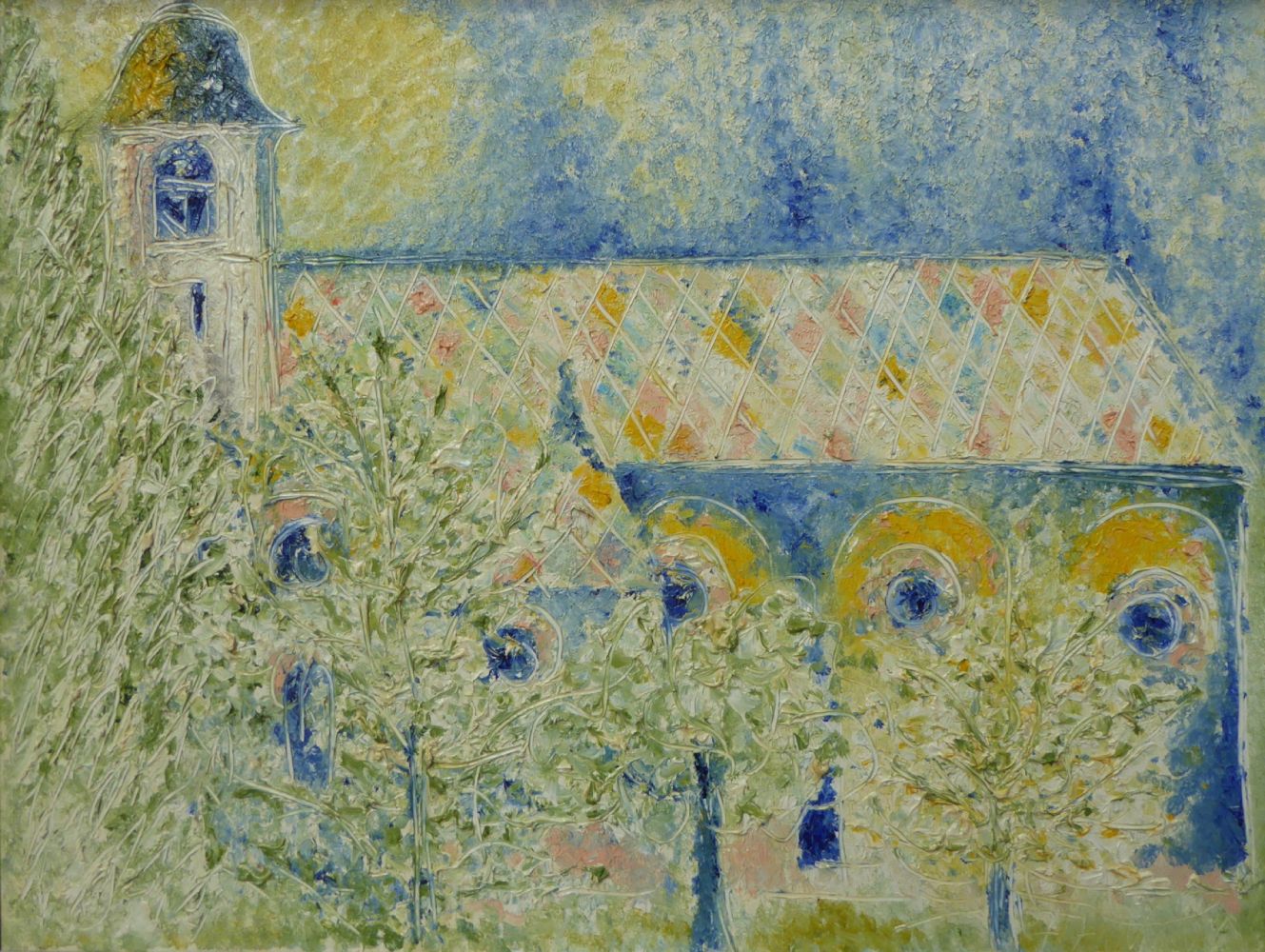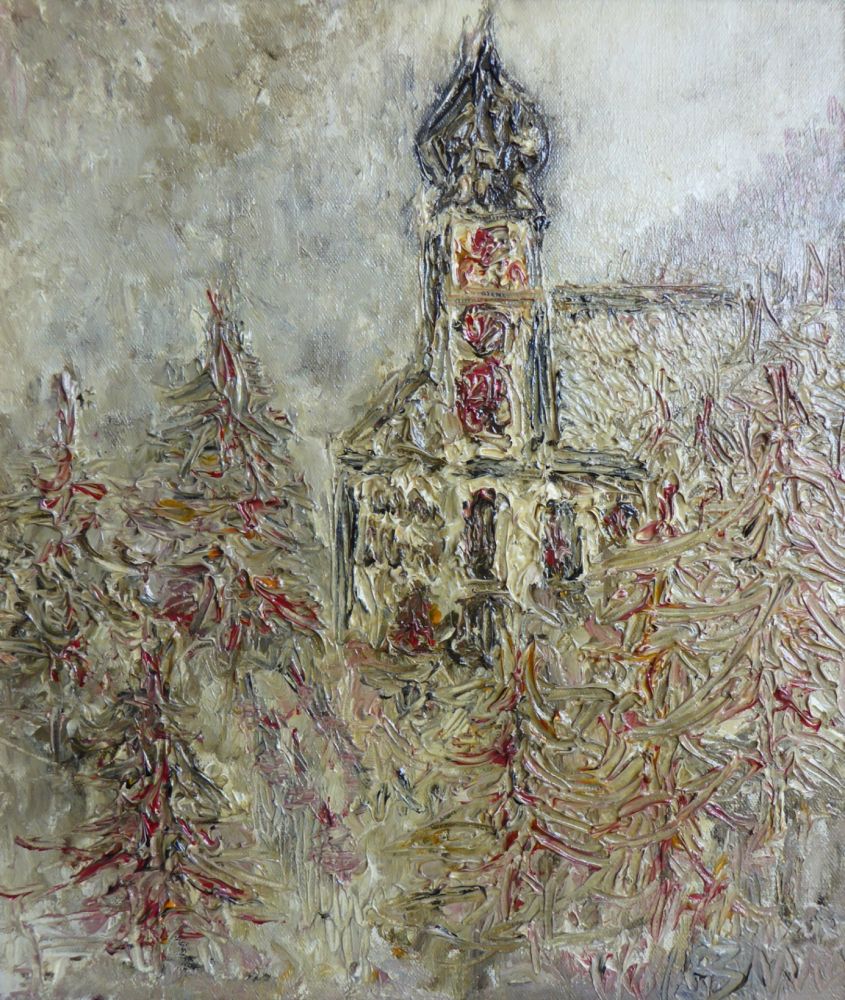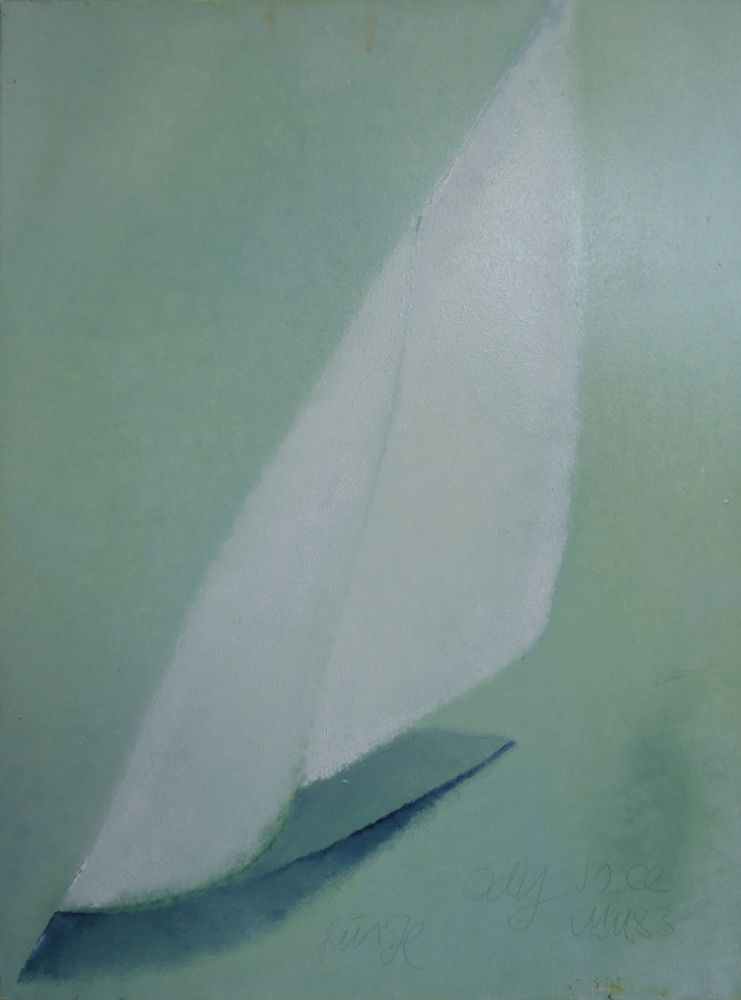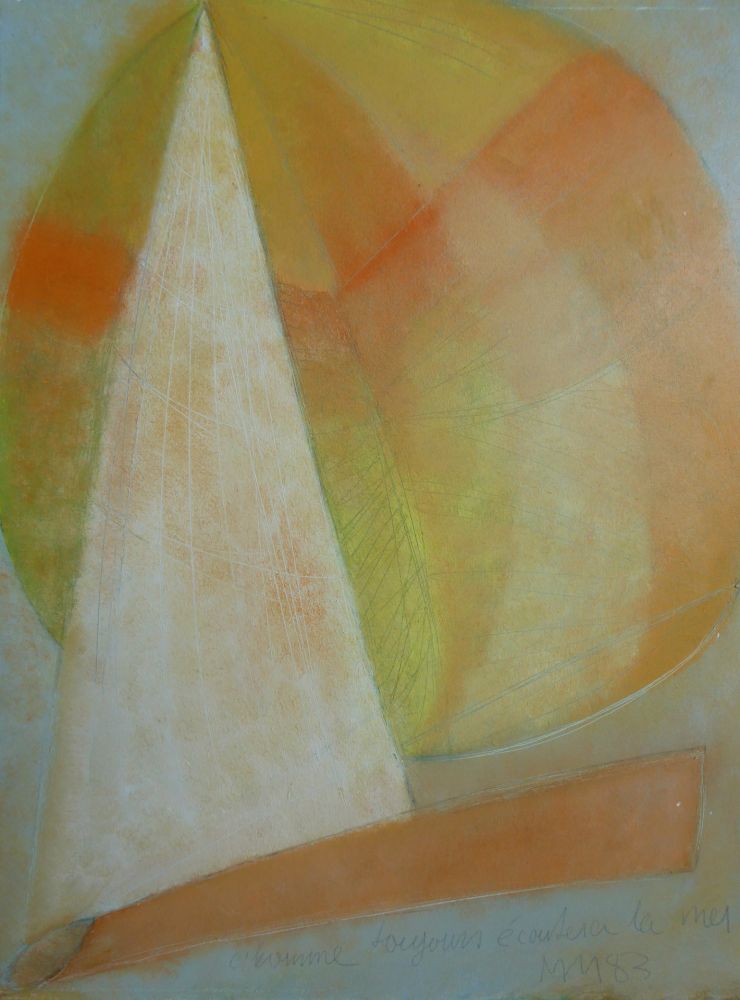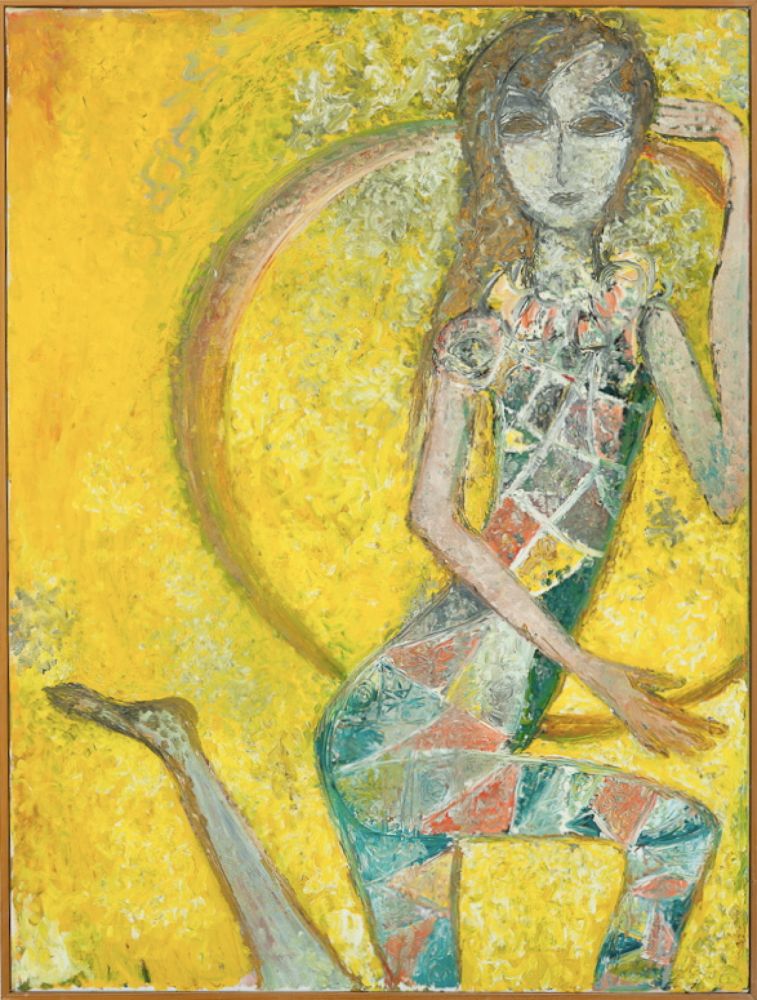

-
The Dress is a Picture

-
Alles auf die Reihe bringen
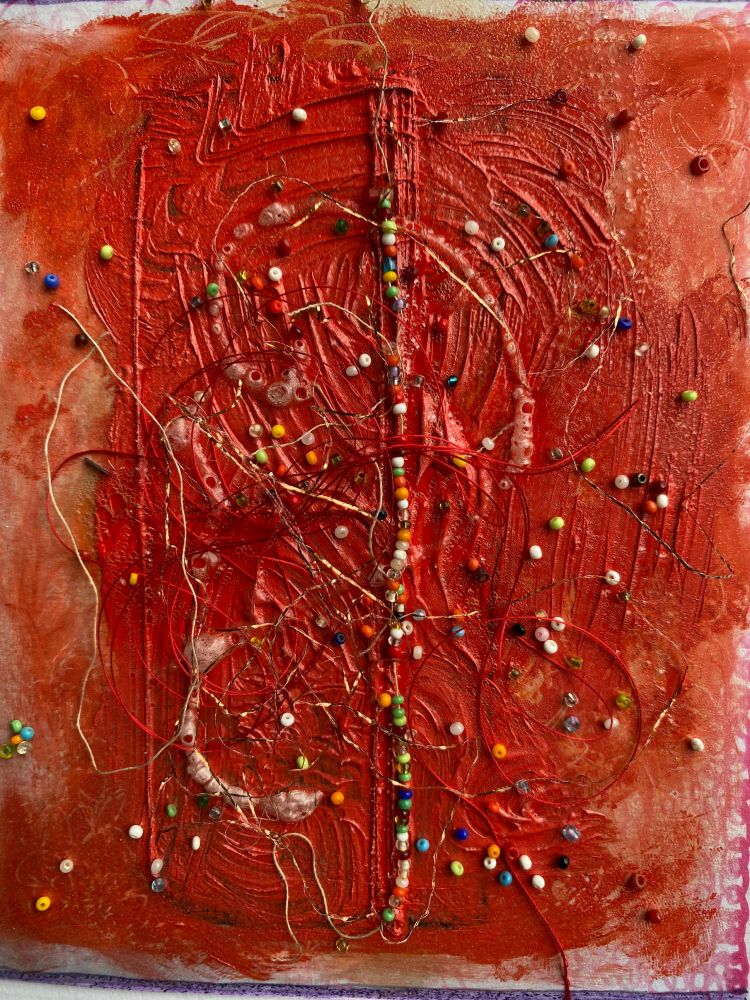
-
Katakana or Blue Center Dot
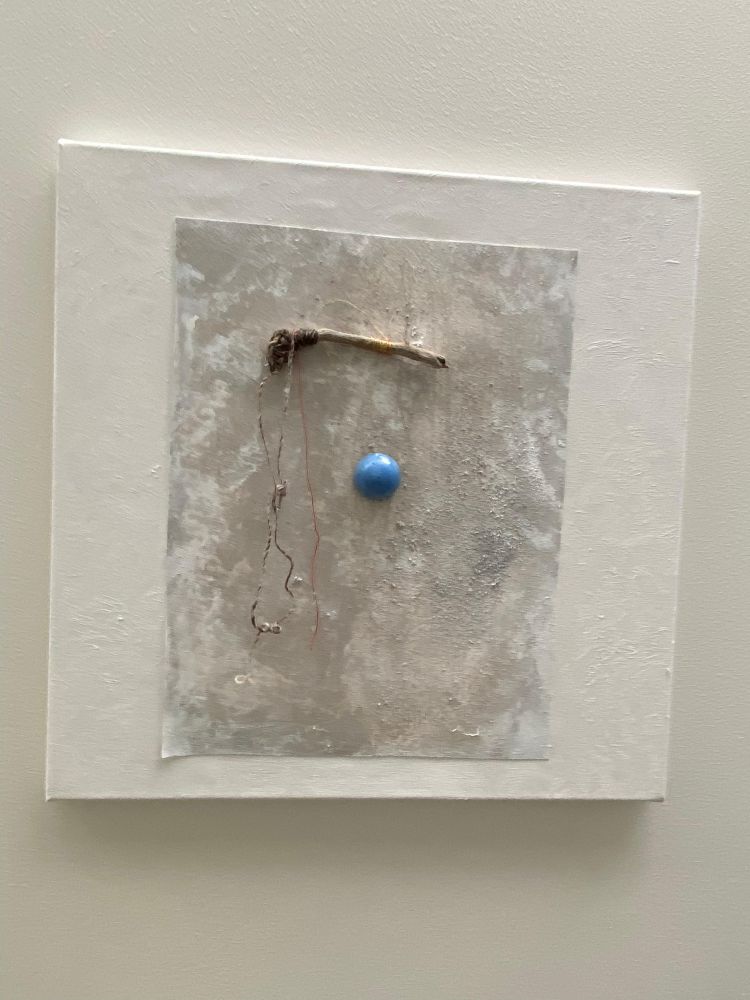
-
Hidden Message

-
Hidden Message

-
Hidden Message - Detail
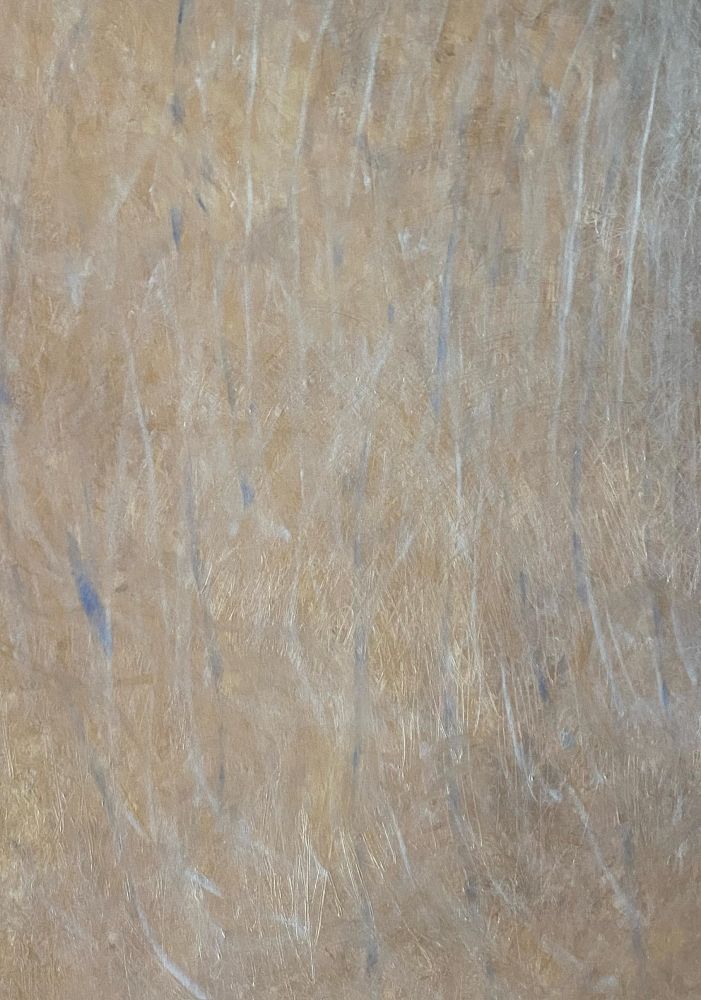
-
The Vision 2
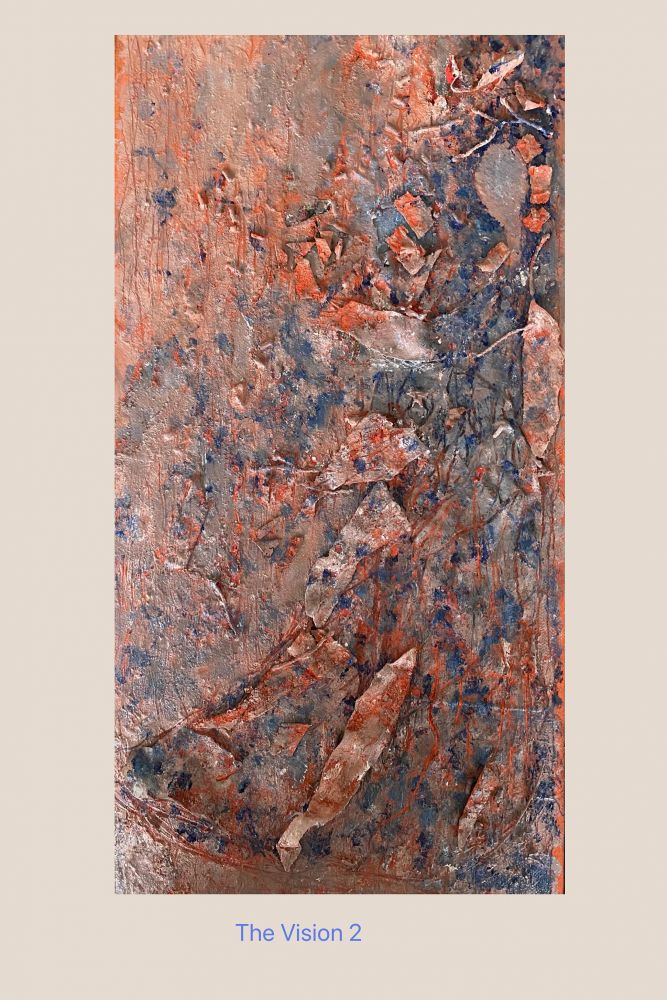
-
Blaue Mache 1

-
Blaue Mache 2

-
Harmony in Red
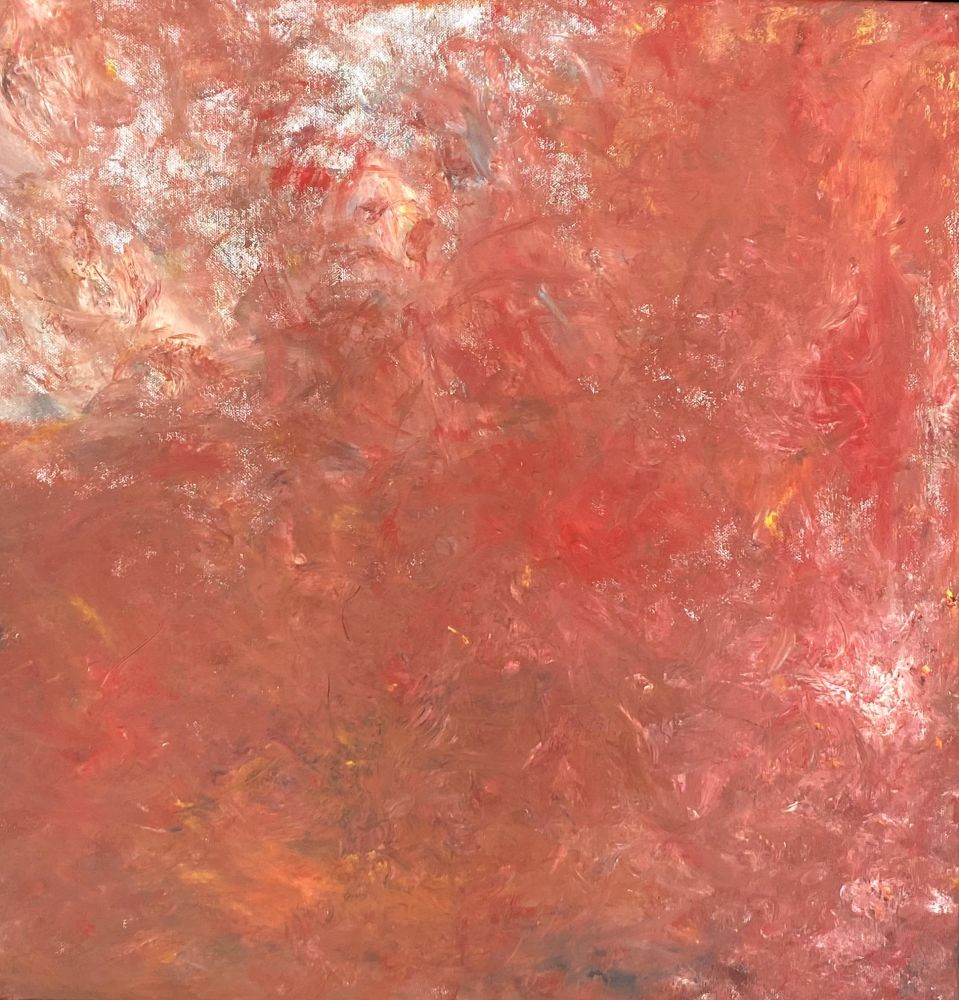
-
Waves 1 & 2
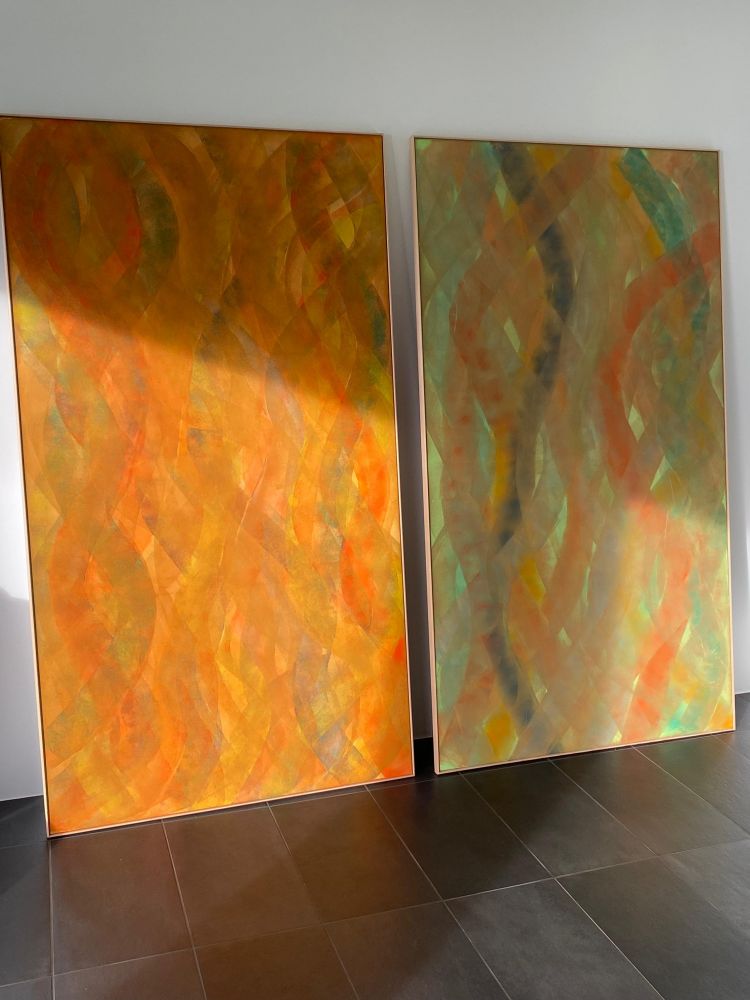
-
Atelier with Hopp de Bäse
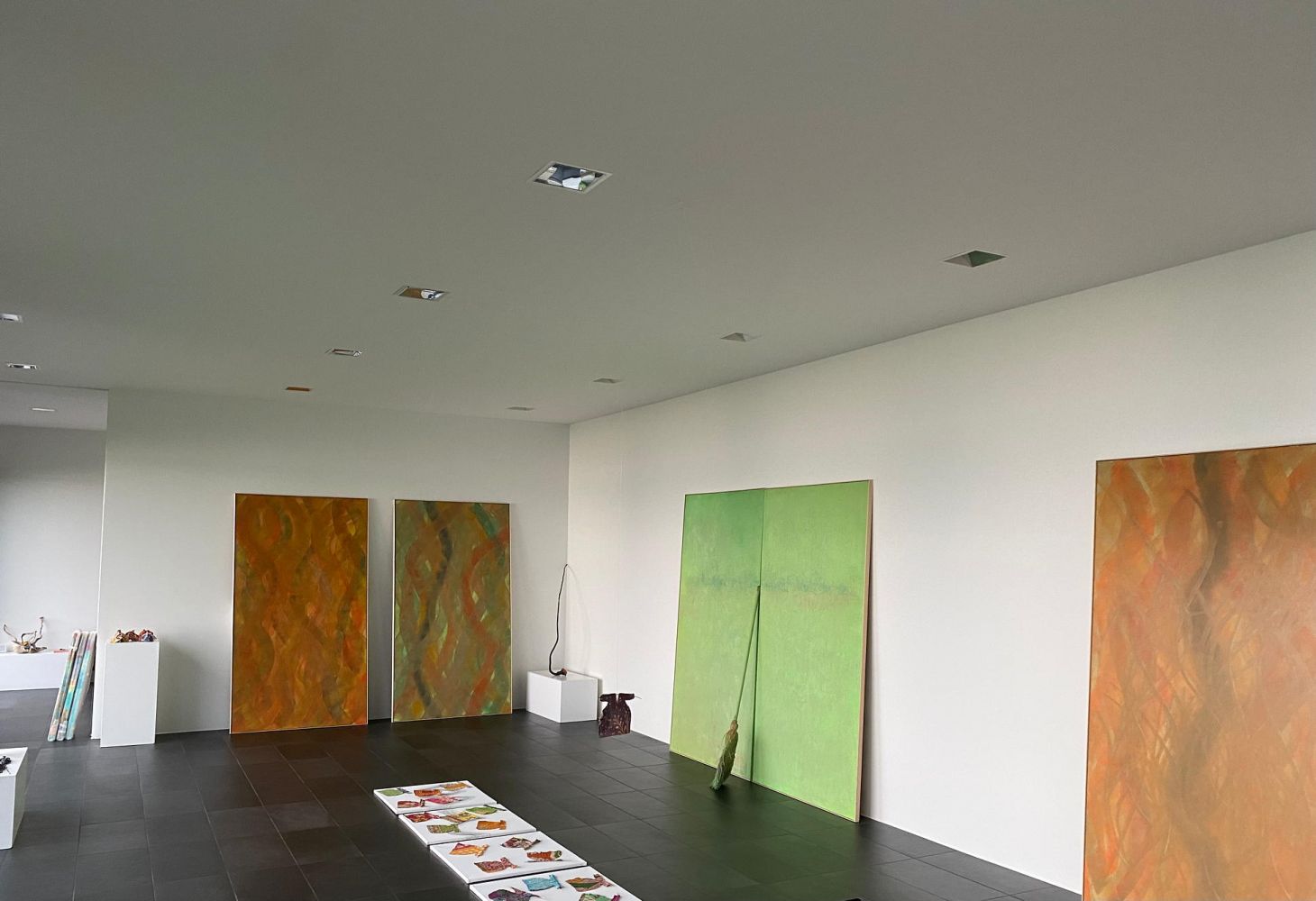
-
handy art
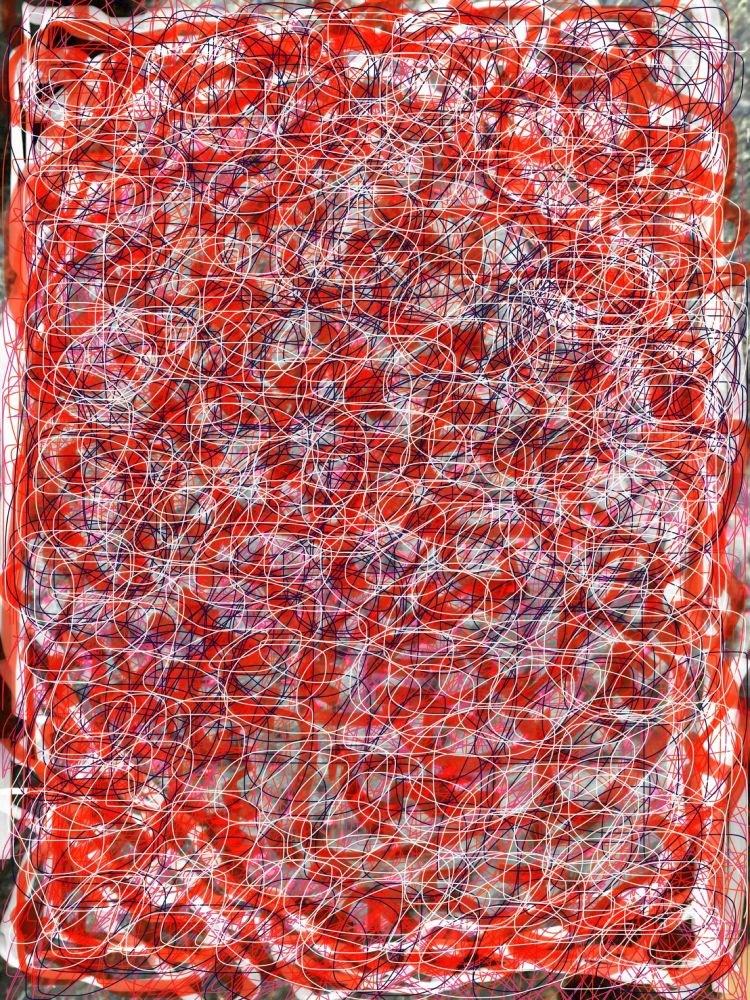
-
The Historical Image
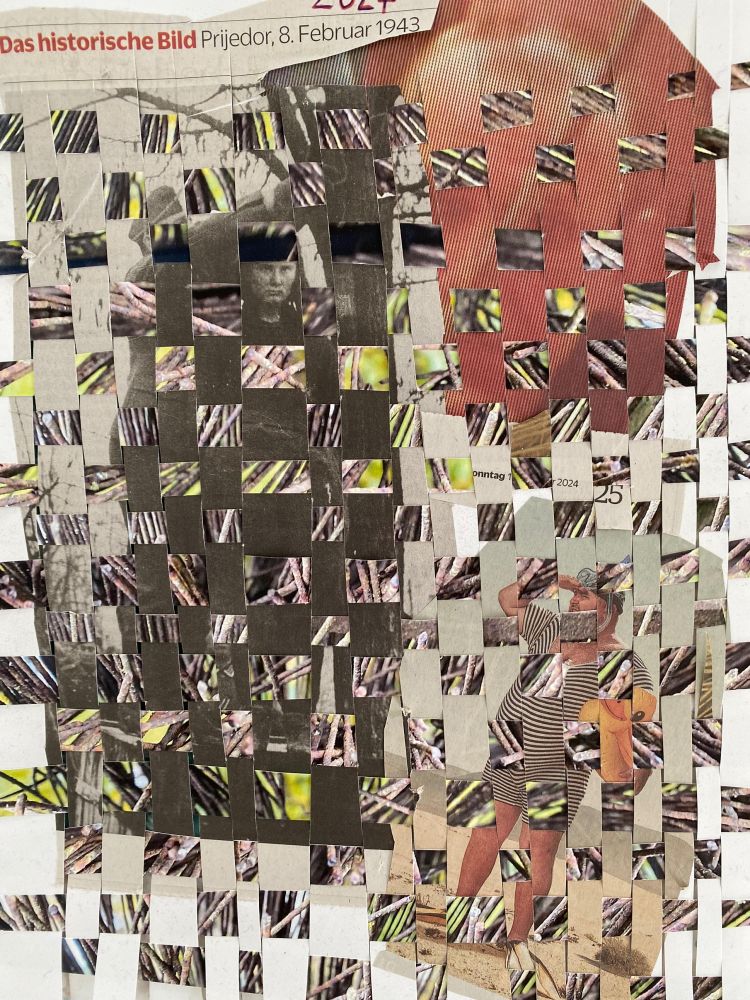
2024 Series Hoelderlin
Quote from Friedrich Hölderlin (1770-1843), Friedensfeier
*"…
Much has been learned since morning,
Since we became a conversation and listen to one another,
Yet soon we shall be song.
…"*
15 images, Mascha Mioni, 2024, charcoal on paper,
hand-pulled while showing the installation Tears from Heaven in San Agustín, Mexico.
Quote from Friedrich Hölderlin (1770-1843), Friedensfeier
*"…
Much has been learned since morning,
Since we became a conversation and listen to one another,
Yet soon we shall be song.
…"*
15 images, Mascha Mioni, 2024, charcoal on paper,
hand-pulled while showing the installation Tears from Heaven in San Agustín, Mexico.
go to post
-
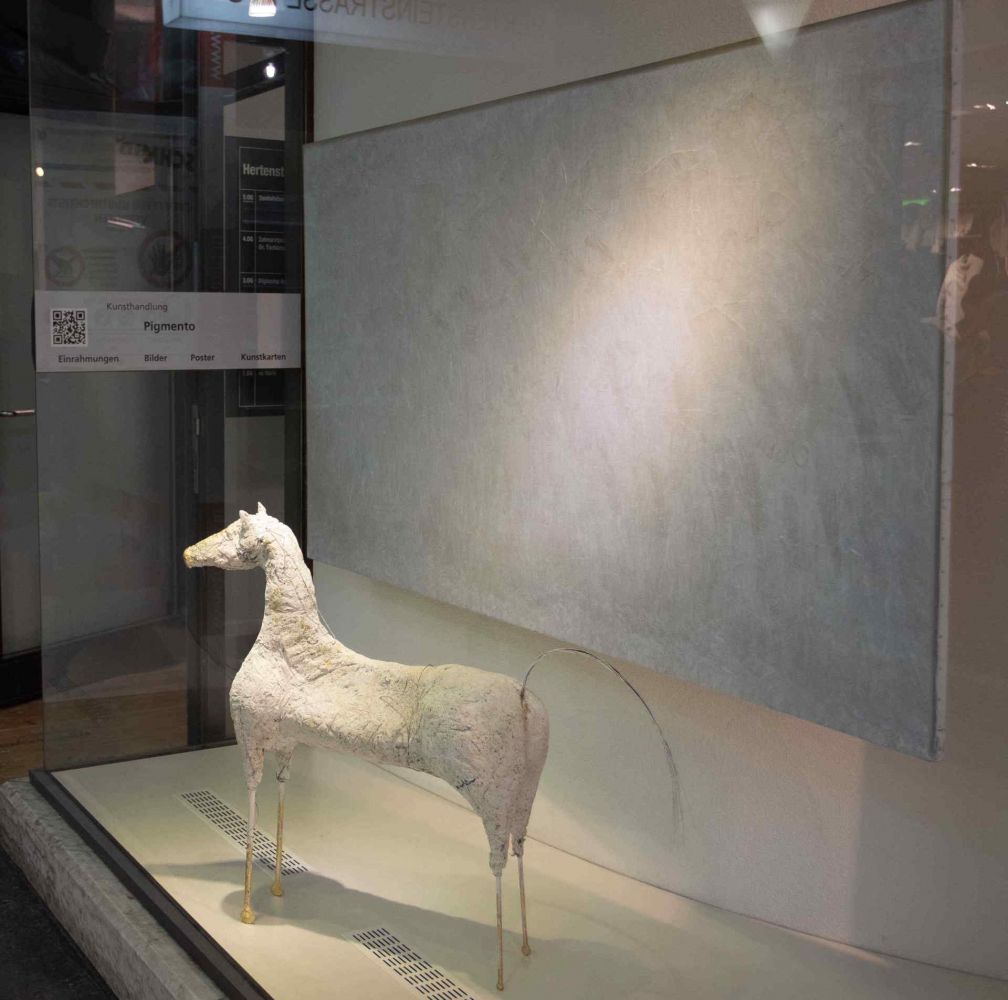
-
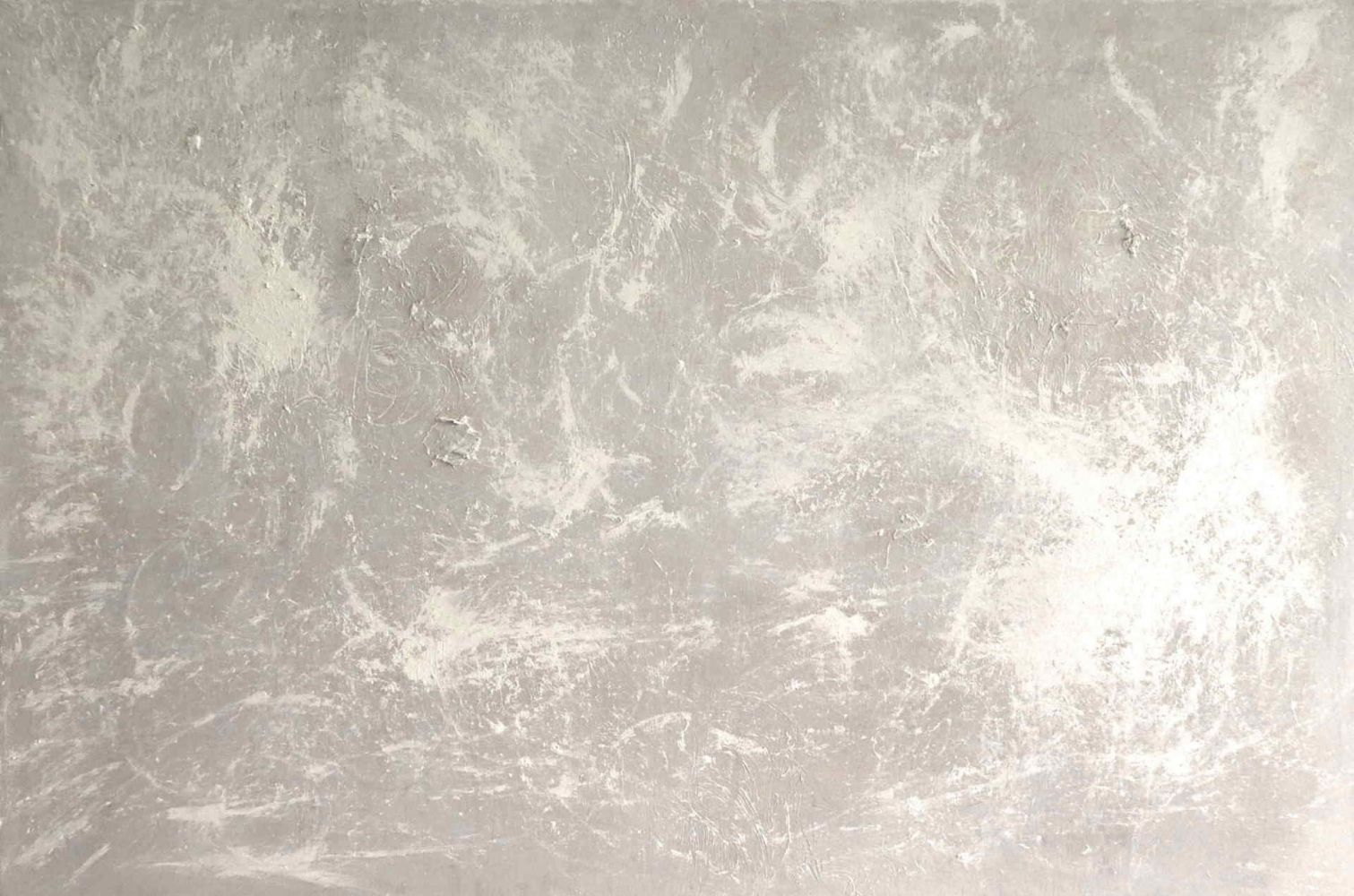
Mascha Mioni, New Days New Ways, 2018, 87 x 122 cm, oil on canvas
-
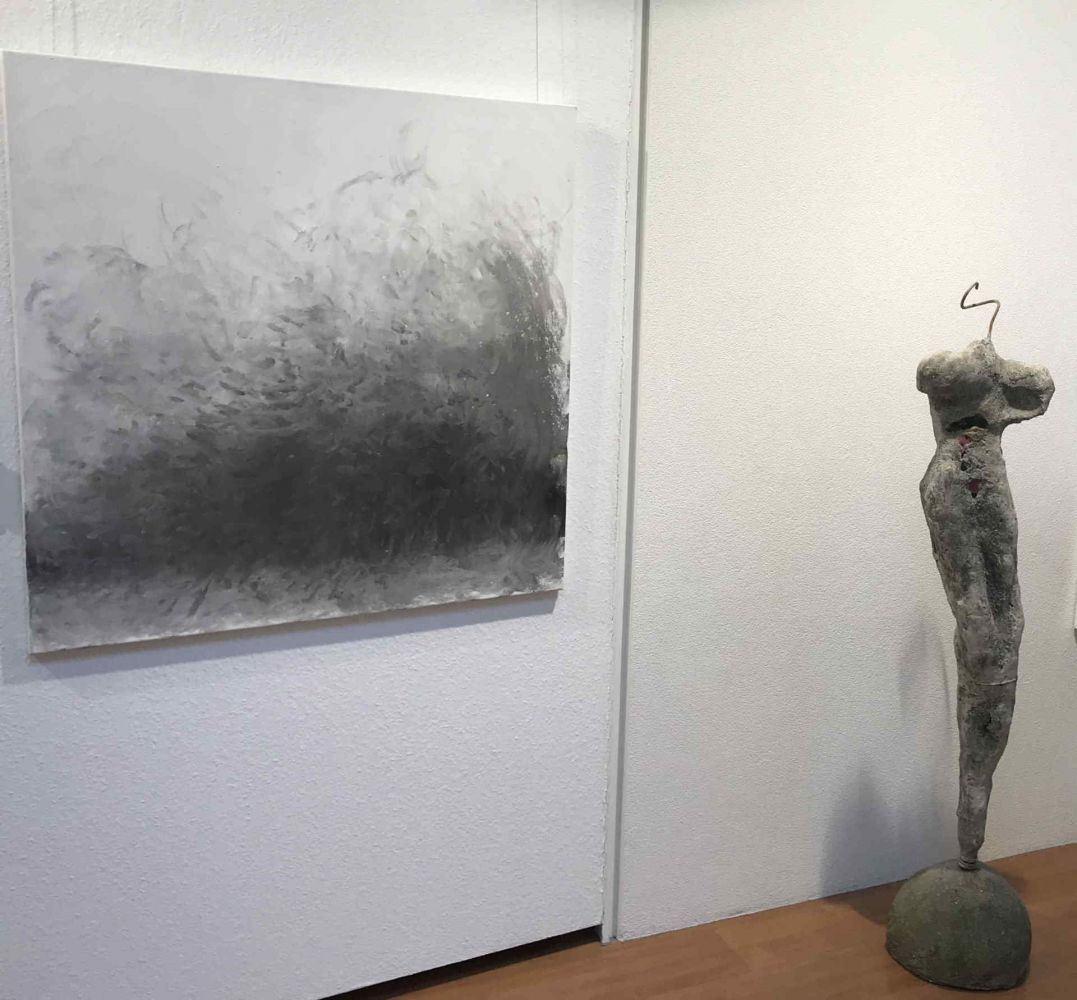
Keiner
Fingerprint, Mascha Mioni, oil on canvas, 100x100cm;
Sculpture Lawrence McLaughlin, concrete, iron, glass,
Photo: Carlos Rieder, Lucerne -
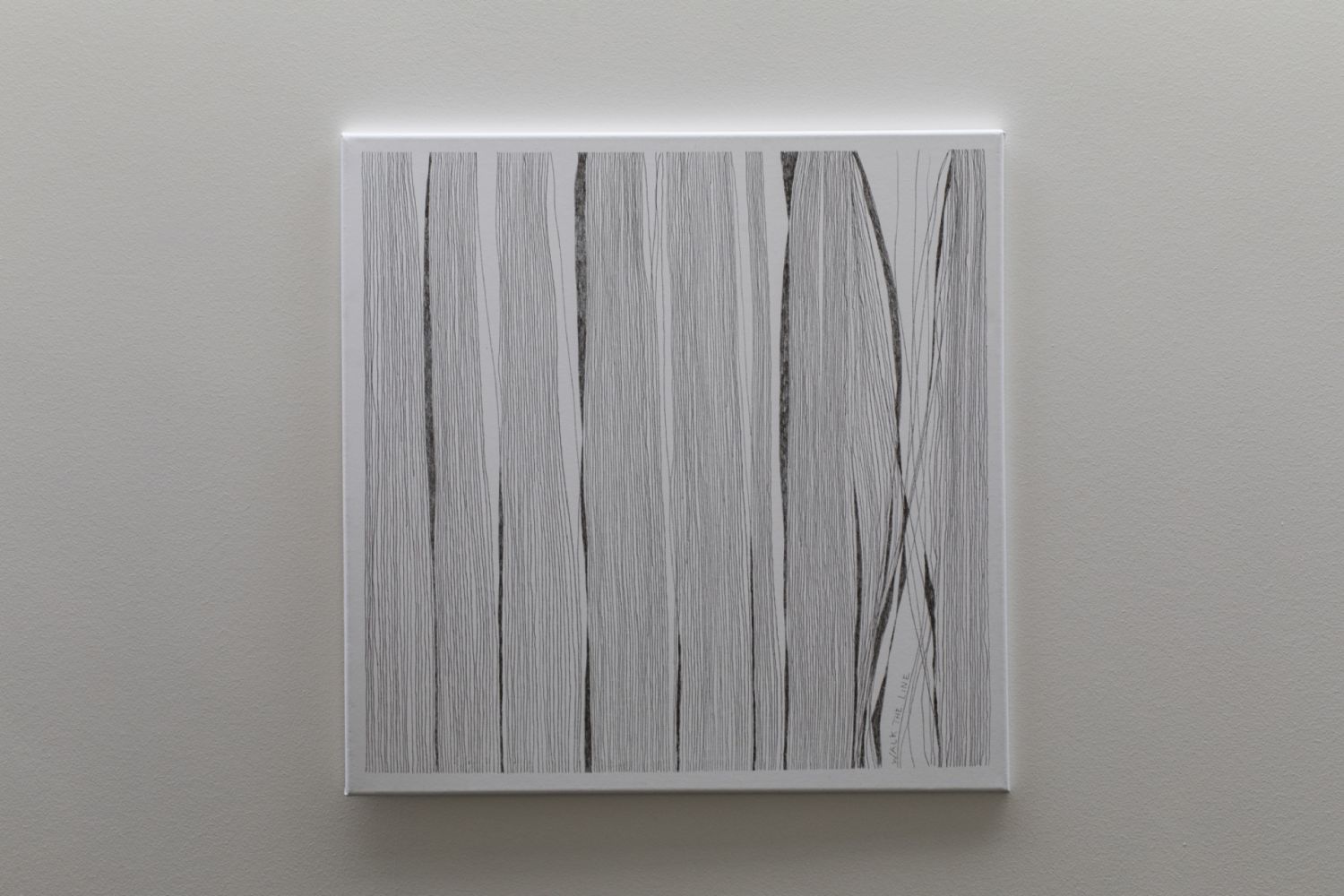
Walk the Line 6, 2017, pencil on canvas, - Photo: Carlos Rieder, Lucerne
-
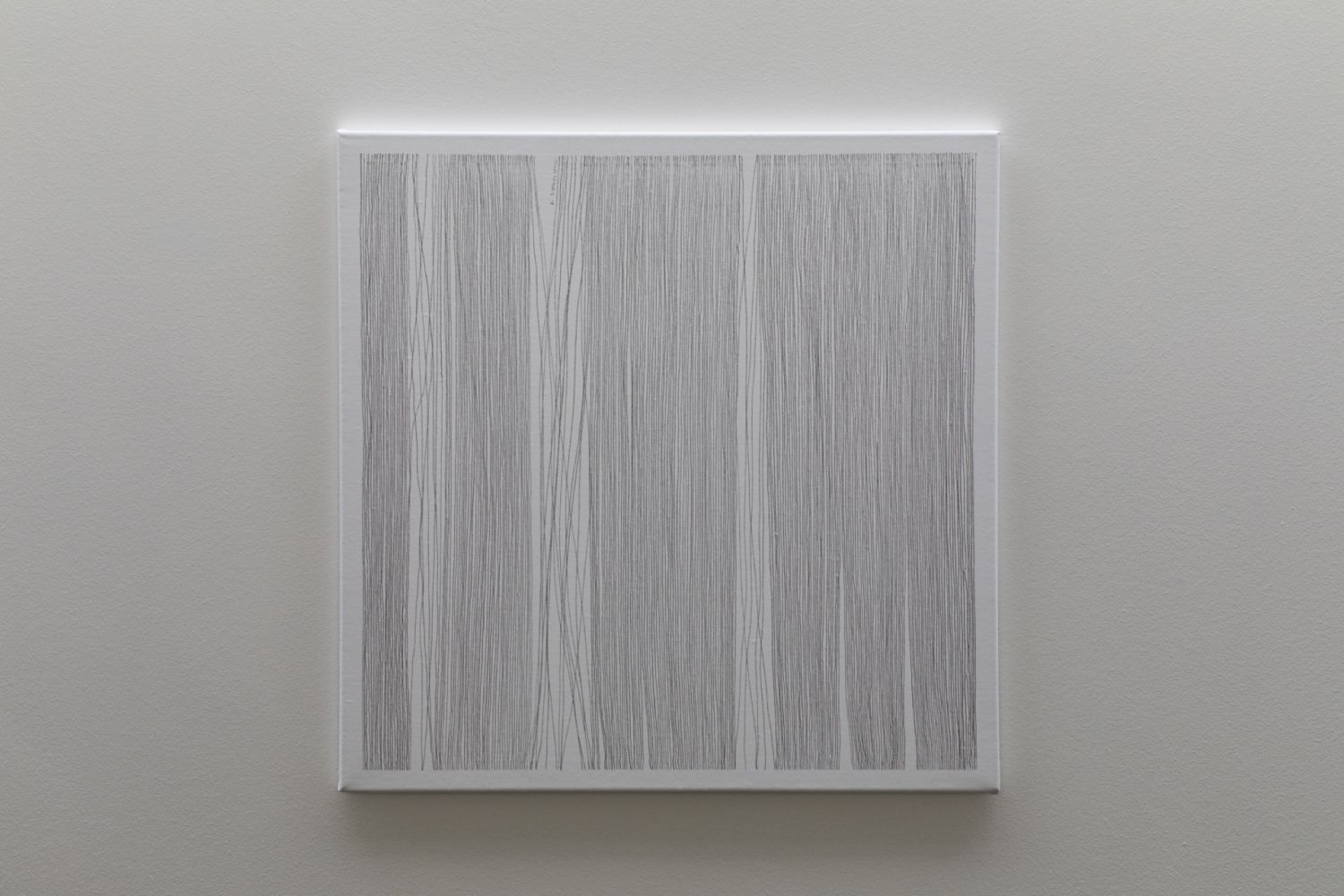
Walk the Line 7, 2017, pencil on canvas, - Photo: Carlos Rieder, Lucerne
-
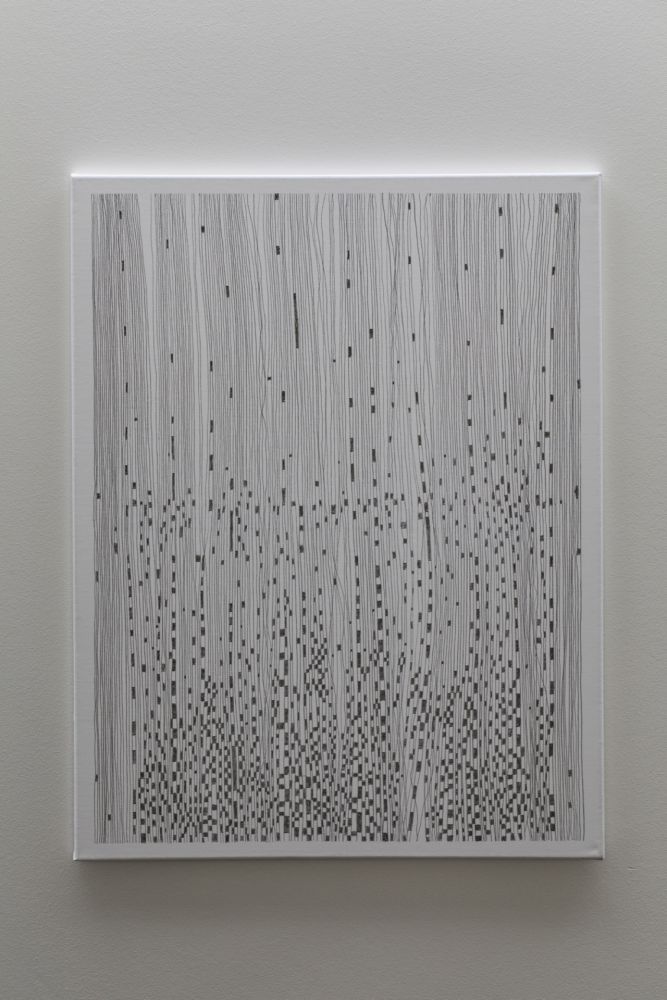
Walk the Line 9, 2017, pencil on canvas, - Photo: Carlos Rieder, Lucerne
-

Lawrence McLaughlin, White Horse, 2018, 81 x 23 x 100 cm, concrete, iron, gold leaf
-
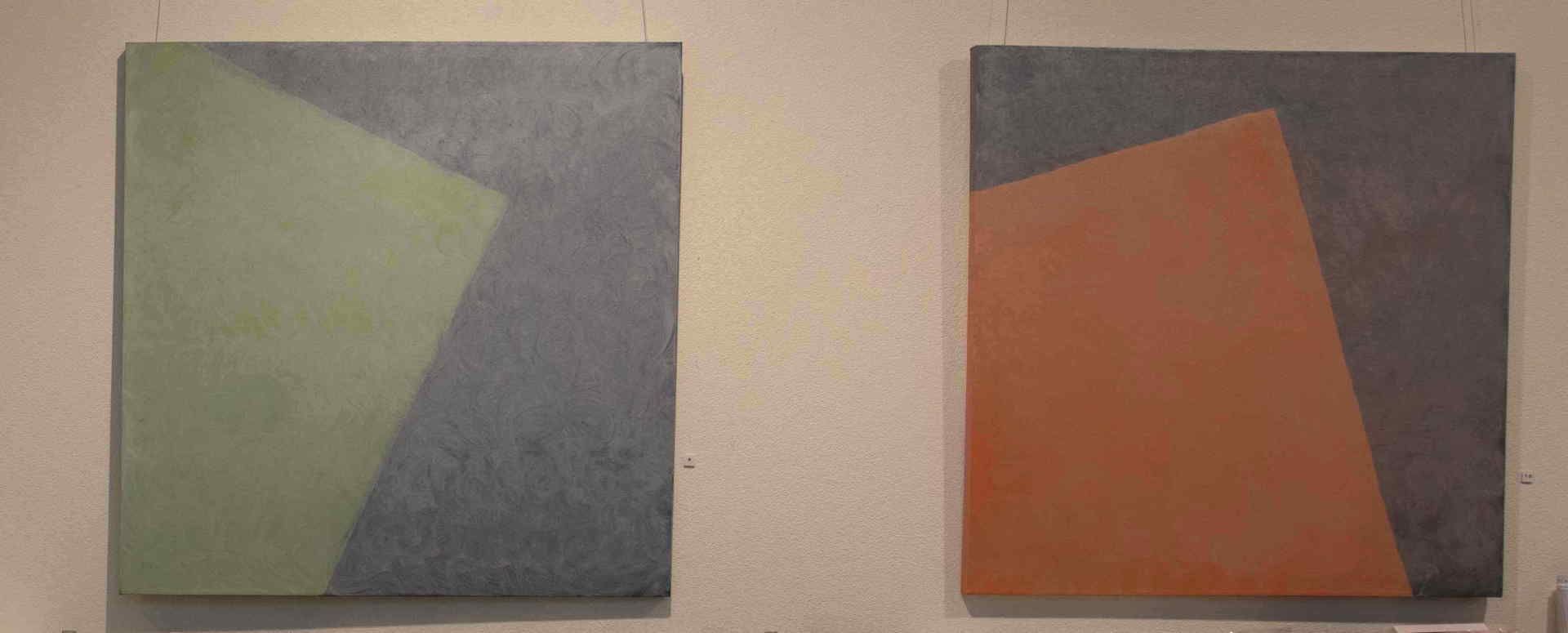
Shadows green, Shadows red, 2008, Mascha Mioni, oil on canvas, 100 x 100 cm each;
Photo: Carlos Rieder, Lucerne
2018 Exhibition New Days - New Ways
In the first half of November Mascha Mioni showed new and older works together with the sculptor Lawrence McLaughlin at the Kunsthandlung Pigmento in Lucerne.
Hours fly
Flowers die
New days
New ways
Art stays
In the display wondow: Sculpture "White Horse" by Lawrence McLaughlin in front of the oil "New Days New Ways" by Mascha Mioni
Photo: Carlos Rieder, Lucerne
In the first half of November Mascha Mioni showed new and older works together with the sculptor Lawrence McLaughlin at the Kunsthandlung Pigmento in Lucerne.
Hours fly
Flowers die
New days
New ways
Art stays
In the display wondow: Sculpture "White Horse" by Lawrence McLaughlin in front of the oil "New Days New Ways" by Mascha Mioni
Photo: Carlos Rieder, Lucerne
go to post
2017 Hudi Budi
Series Hudi Budi
(Glass pearls, semiprecious stones, recycled tubes of paint, Fimo, on marble base from Laas;
Photos: Carlos Rieder, Lucerne)
These Hudi Budis are symbols. Private aymbols.
Everybody may invent his own symbols.
A Hudi Budi can be a symbol for a person or for an ideal.
It would be wonderful if everybody who owns a Hudi Budi
would choose it as his own personal symbol.
We may liberate ourselves from traditional symbols.
It does not always have to be the same:
a star, a cross, a crescent, ...
Series Hudi Budi
(Glass pearls, semiprecious stones, recycled tubes of paint, Fimo, on marble base from Laas;
Photos: Carlos Rieder, Lucerne)
These Hudi Budis are symbols. Private aymbols.
Everybody may invent his own symbols.
A Hudi Budi can be a symbol for a person or for an ideal.
It would be wonderful if everybody who owns a Hudi Budi
would choose it as his own personal symbol.
We may liberate ourselves from traditional symbols.
It does not always have to be the same:
a star, a cross, a crescent, ...
go to post
2017 Walk the Line
Agnes Martin's exposition at the Guggenheim Museum / New York
and her Writings inspired the
Series Walk the Line
(Pencil on canvas, 2017; photos: Carlos Rieder, Lucerne)
"An artist's life is adventurous. One new thing after another."
(Agnes Martin, Writings - Schriften, 1992)
Agnes Martin's exposition at the Guggenheim Museum / New York
and her Writings inspired the
Series Walk the Line
(Pencil on canvas, 2017; photos: Carlos Rieder, Lucerne)
"An artist's life is adventurous. One new thing after another."
(Agnes Martin, Writings - Schriften, 1992)
go to post
-
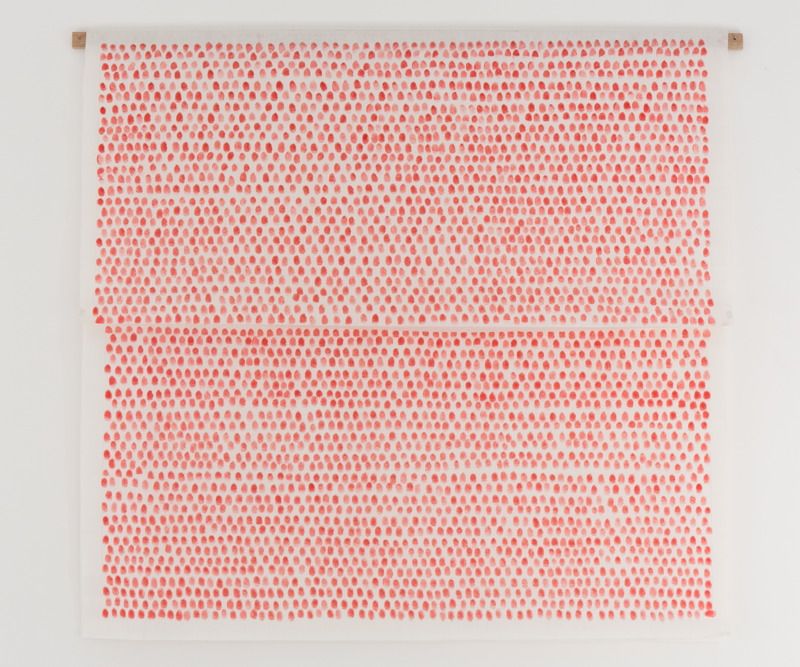
Fingerprints, ca. 2x2 m, 3500 fingerprints, red seal-ink, paper
-

Overview
-
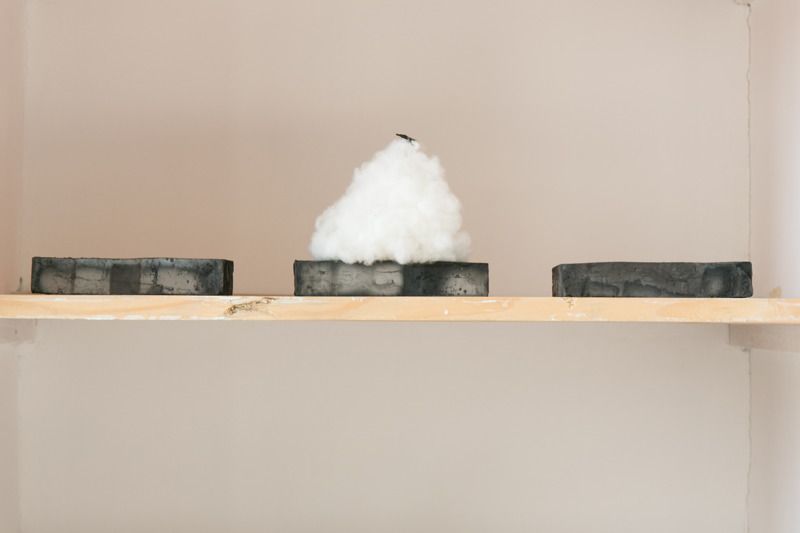
detail of a pyramid
-
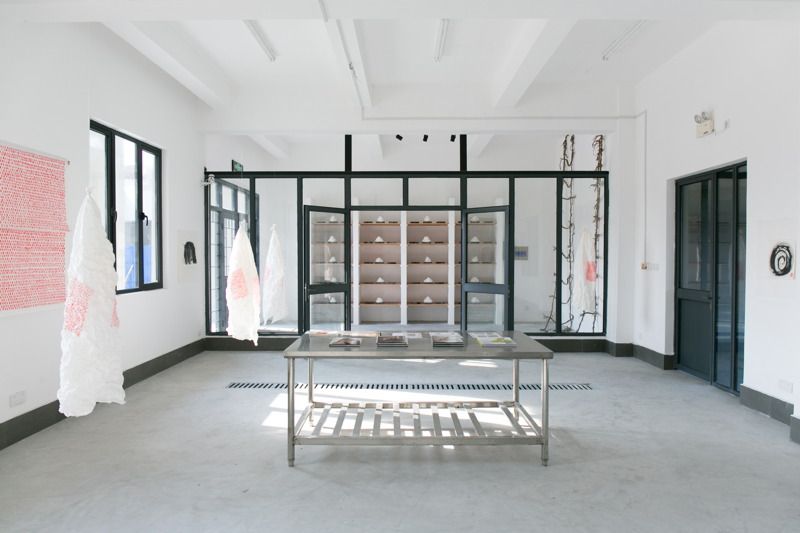
Overview
-
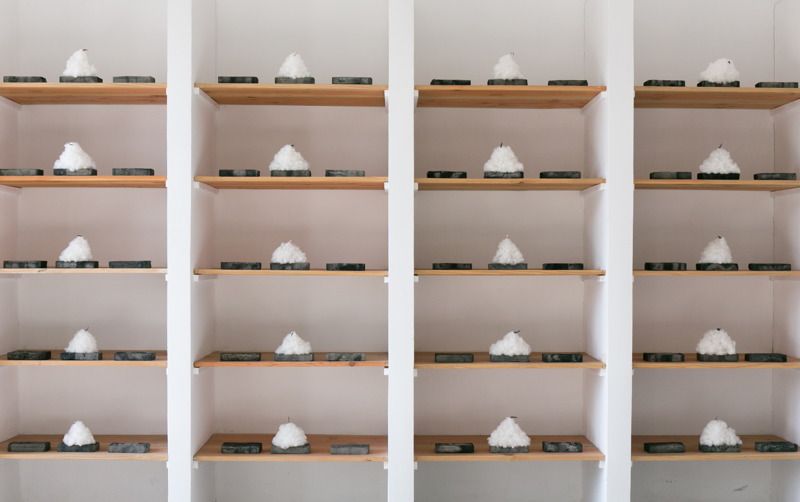
20 Pyramids, 20x20x7 cm, cotton and ink on old bricks
-
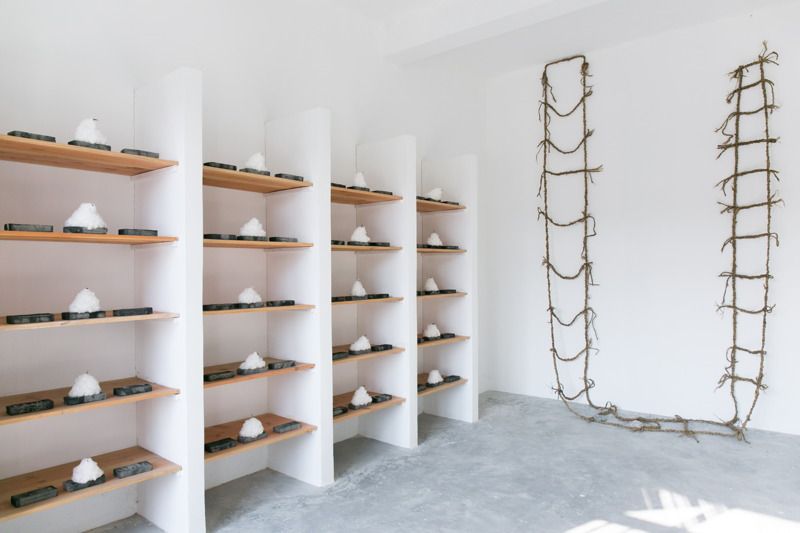
20 Pyramids and Purpose of Life, 1100x40x80 cm. recycled rice-straw, braided
-
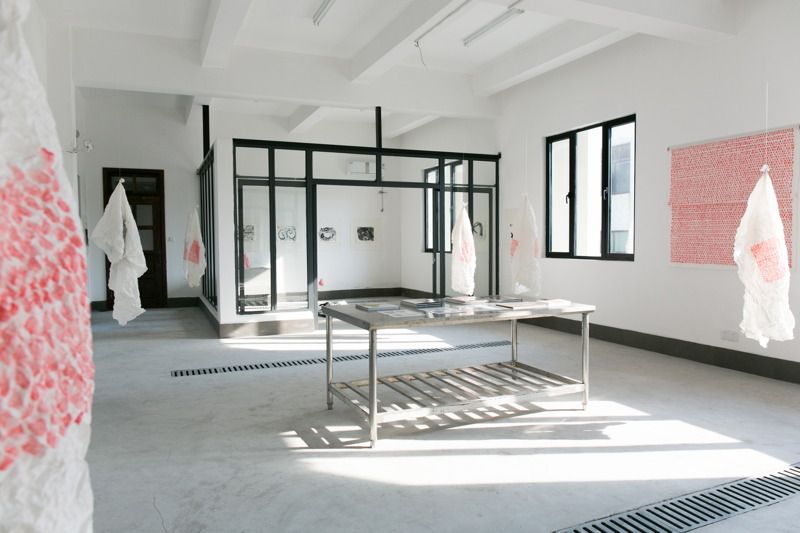
Fingerprints, red seal-ink, paper
-
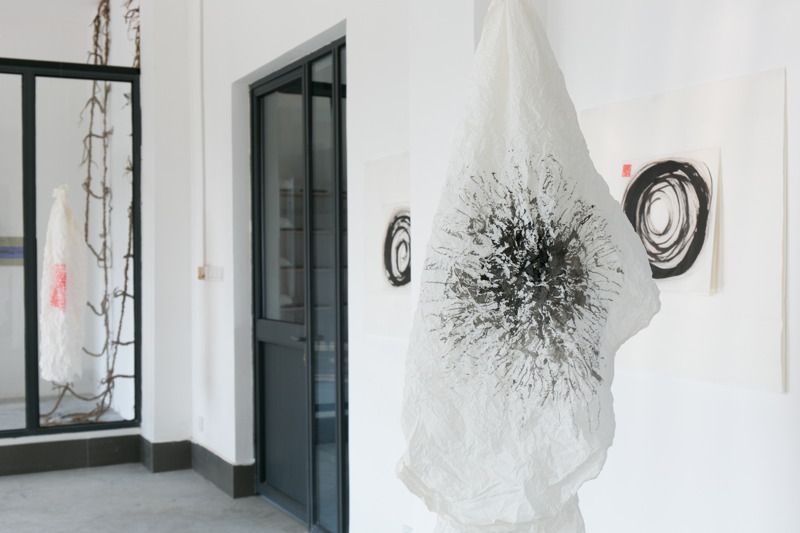
Ink Painting, 70x70 cm, ink on paper
-
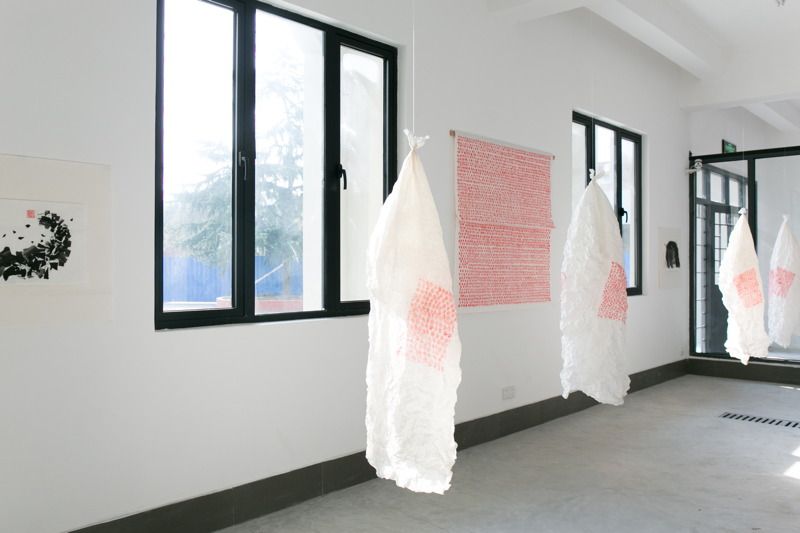
Fingerprints, red seal-ink, paper
-
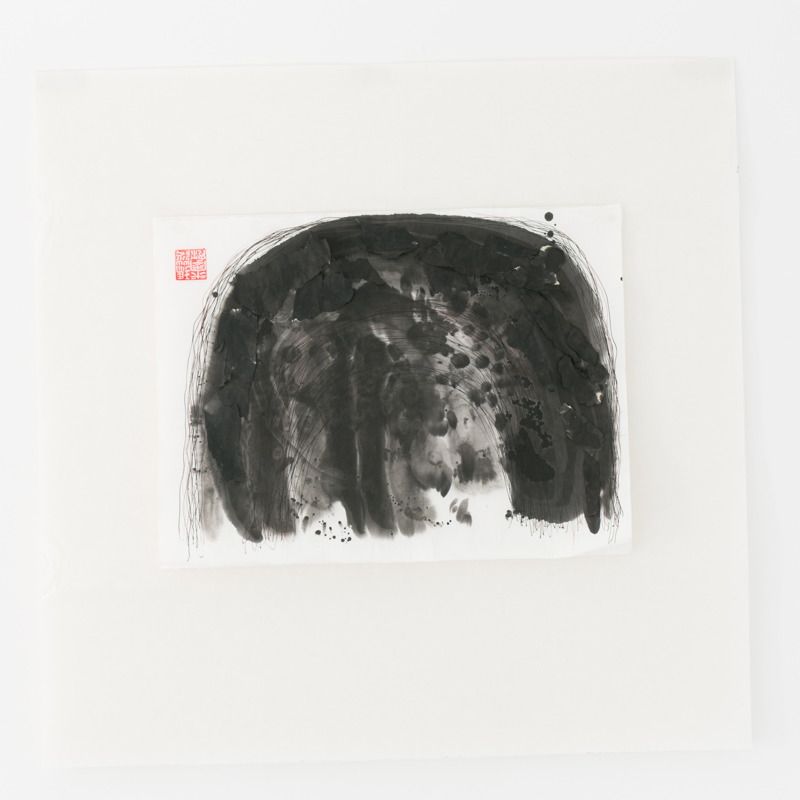
Ink Painting, 70x70 cm, ink on paper
-
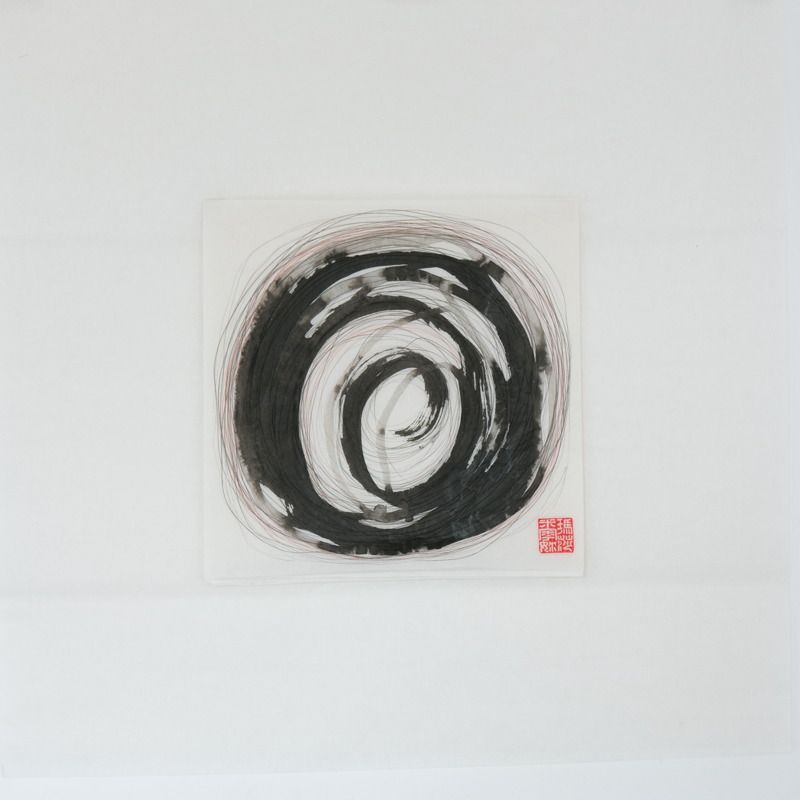
Ink Painting, 70x70 cm, ink on paper
-

Ink Painting, 70x70 cm, ink on paper
-
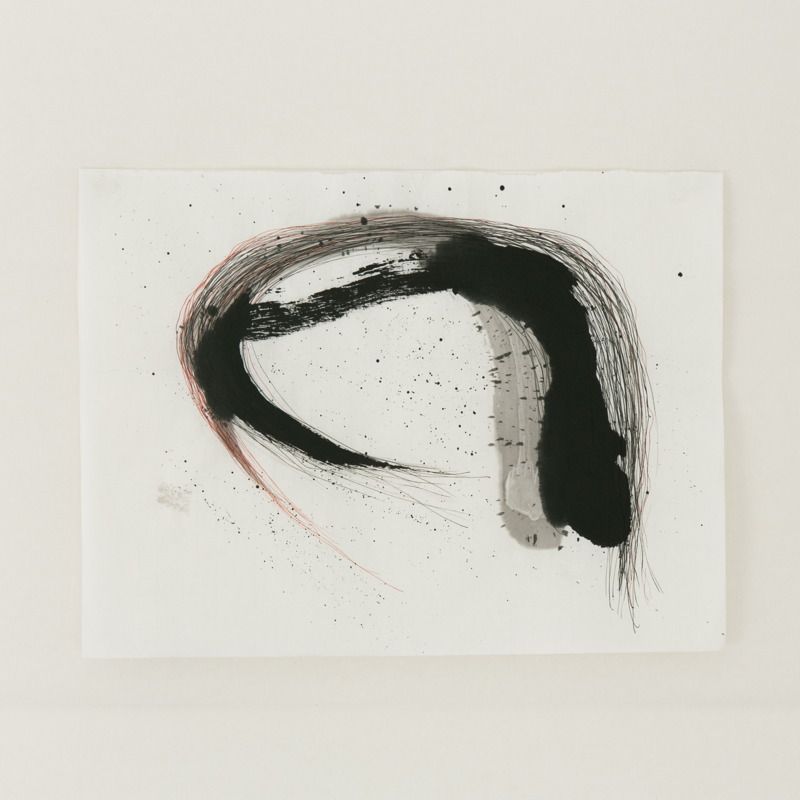
Ink Painting, 70x70 cm, ink on paper
-
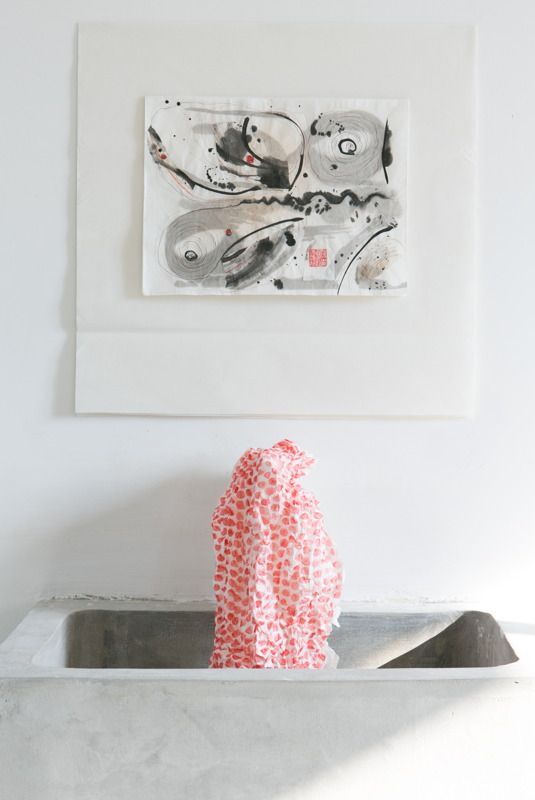
Ink Painting, 70x70 cm, ink on paper and fingerprints
-
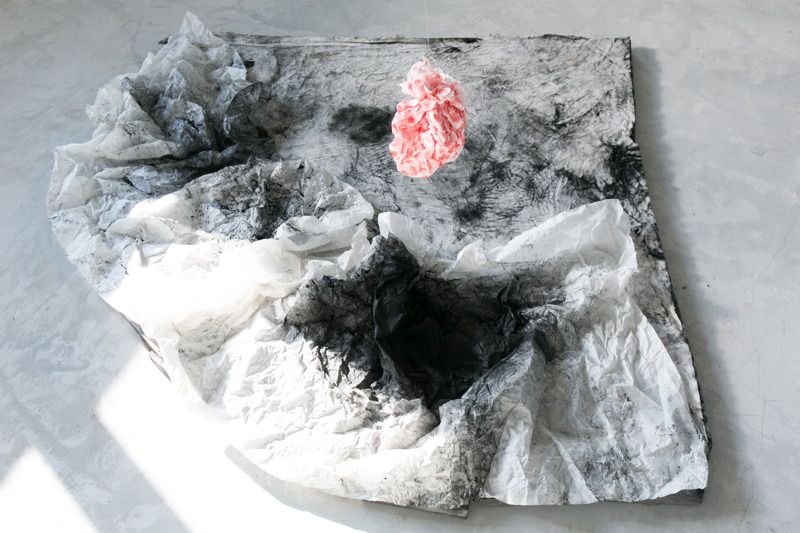
Phoenix, 100x100x40 cm, red seal-‐ink on paper, soot on cotton and paper bedded on old bricks
-

Dress for JinZe Girl, Dupont colors on heavy silk, shibori
-
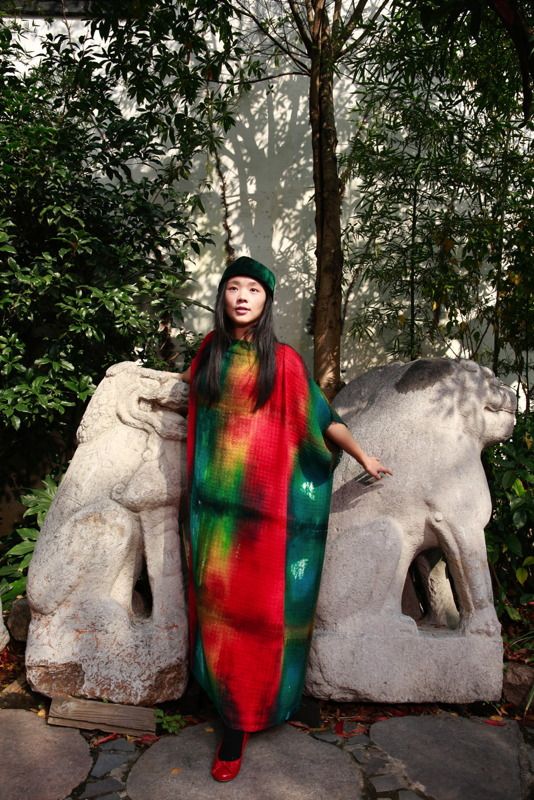
Dress for JinZe Girl, Dupont colors on heavy silk, shibori
2014 JZAC, Shanghai
JinZe Arts Center, Shanghai, Mascha Mioni, Artist in Residence
During October and November 2014 Mascha Mioni was artist in residence at the JinZe Arts Center, Shanghai. Here we display some pictures of the works she created during her stay.
JinZe is a very inspiring island on the outskirts of bustling Shanghai. Although a lot of work is still in progress, it becomes a quiet and peaceful place towards the evening. After the relaxing night, the busy day enhances the feeling of opposites surrounding us in China. Black and White are the colors of Yin and Yang – opposites constantly changing and only finding fulfillment together.
The hard life of the pickers of the soft and fluffy balls in the cotton fields.
Everybody rushing to mount step by step on the fragile ladder „Purpose of Life“, made out of discarded rice straw.
Red and White are the colors of the Swiss flag, but also the symbols of good fortune and of mourning and death in China.
Out of the old textile factory surroundings rise like Phoenix from the ashes the multicolored bright JinZe Girls ready for new challenges of life.
Download text accompanying the exposition as pdf
Download report of Mascha Mioni on her stay and the exposition (making of) as pdf
Photos: Fung Leung Pan, JinZe Arts Center, Shanghai
JinZe Arts Center, Shanghai, Mascha Mioni, Artist in Residence
During October and November 2014 Mascha Mioni was artist in residence at the JinZe Arts Center, Shanghai. Here we display some pictures of the works she created during her stay.
JinZe is a very inspiring island on the outskirts of bustling Shanghai. Although a lot of work is still in progress, it becomes a quiet and peaceful place towards the evening. After the relaxing night, the busy day enhances the feeling of opposites surrounding us in China. Black and White are the colors of Yin and Yang – opposites constantly changing and only finding fulfillment together.
The hard life of the pickers of the soft and fluffy balls in the cotton fields.
Everybody rushing to mount step by step on the fragile ladder „Purpose of Life“, made out of discarded rice straw.
Red and White are the colors of the Swiss flag, but also the symbols of good fortune and of mourning and death in China.
Out of the old textile factory surroundings rise like Phoenix from the ashes the multicolored bright JinZe Girls ready for new challenges of life.
Download text accompanying the exposition as pdf
Download report of Mascha Mioni on her stay and the exposition (making of) as pdf
Photos: Fung Leung Pan, JinZe Arts Center, Shanghai
go to post
2013 JTAC Bangkok
Accompanying the exhibition mnémonikos at the Jim Thompson Art Center, Bangkok, guest curator Yoshiko I. Wada on Nov. 10, 2013 moderated a panel discussion with professor Kinor Jiang and his research associate Dr. Guoxing Yuan from Hong Kong Polytecnic University and Mascha Mioni. In her presentation Mascha Mioni discussed the differences between creating Art to Wear and painting on Canvas:
"Whether I paint on paper,
create an oil-painting on canvas,
or work on Art to Wear,
makes no difference.
But, through expanding the process
and forming a cover for the human body,
the work enters a new dimension."
Fotos of Mascha Mioni's work by:
Asy Asendorf, Zurich
Carlos Rieder, Luzern
Mary-Hélène Le Ny, Paris
Accompanying the exhibition mnémonikos at the Jim Thompson Art Center, Bangkok, guest curator Yoshiko I. Wada on Nov. 10, 2013 moderated a panel discussion with professor Kinor Jiang and his research associate Dr. Guoxing Yuan from Hong Kong Polytecnic University and Mascha Mioni. In her presentation Mascha Mioni discussed the differences between creating Art to Wear and painting on Canvas:
"Whether I paint on paper,
create an oil-painting on canvas,
or work on Art to Wear,
makes no difference.
But, through expanding the process
and forming a cover for the human body,
the work enters a new dimension."
Fotos of Mascha Mioni's work by:
Asy Asendorf, Zurich
Carlos Rieder, Luzern
Mary-Hélène Le Ny, Paris
go to post
2013 Lipanoi Series
The Angels of Lipanoi Beach Series
The Angels of Lipanoi Beach Series
go to post
-
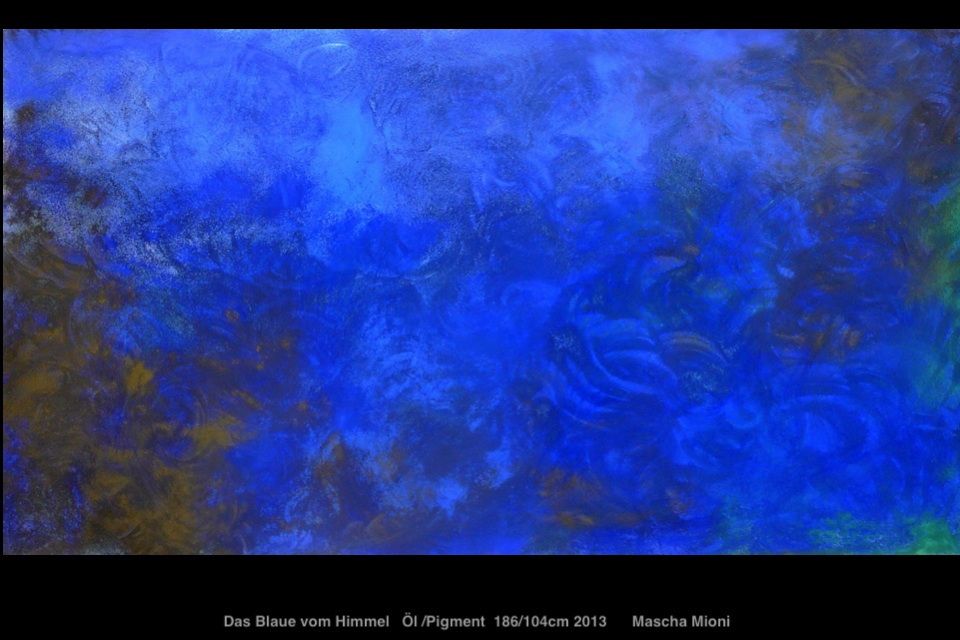
-
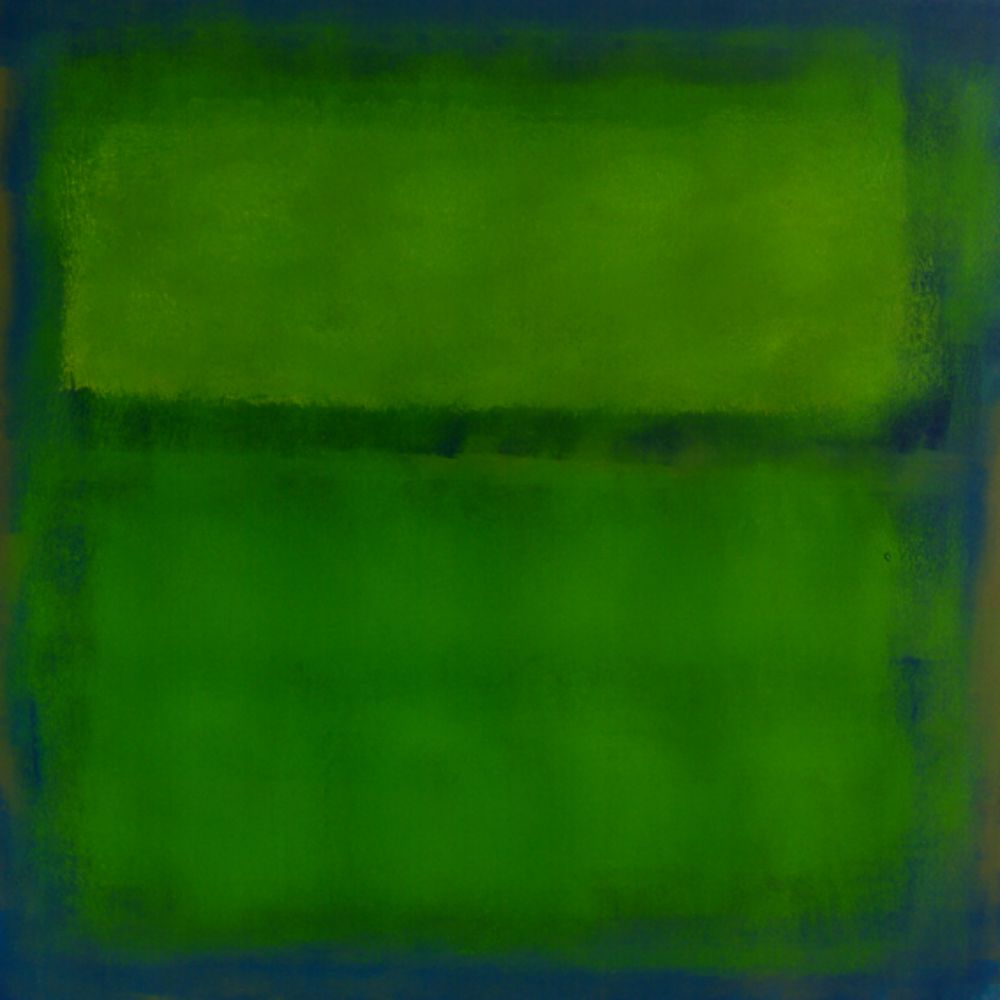
-
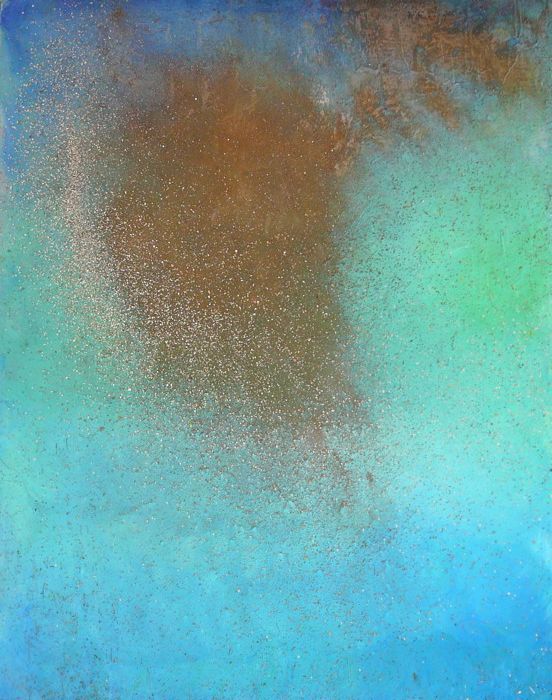
On the Way to Taos 10, oil on canvas, foto: H. Graafhuis
-
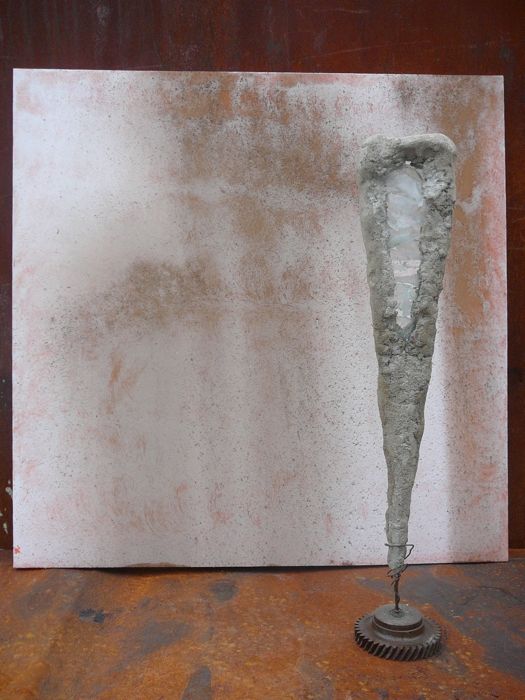
On the Way to Taos 1, oil on canvas, foto: H. Graafhuis
-
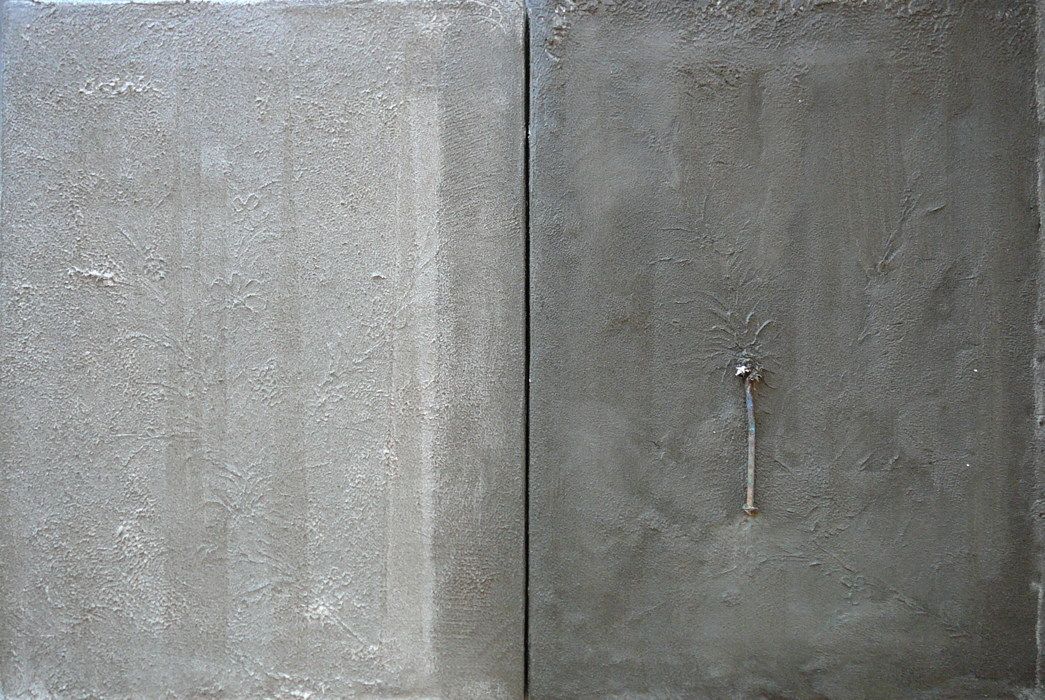
On the Way to Taos 2, oil on canvas, foto: H. Graafhuis
-
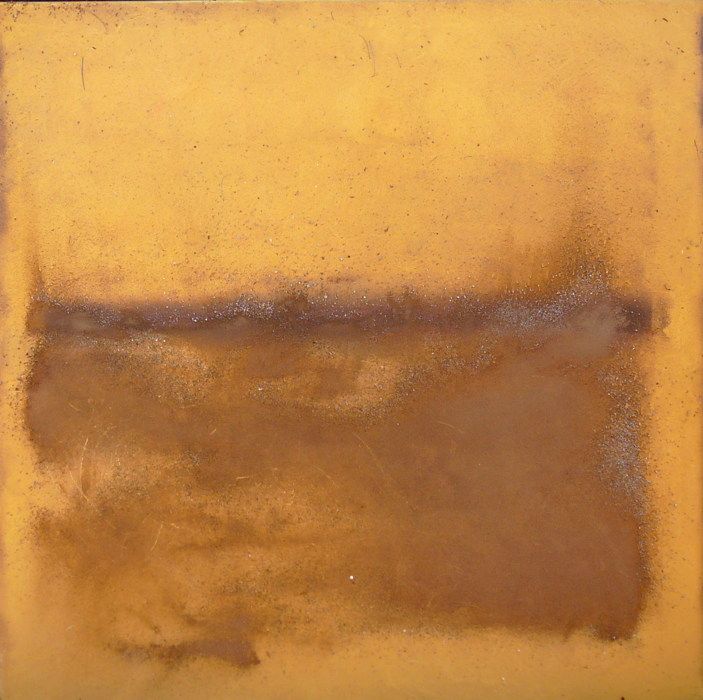
On the Way to Taos 3, oil on canvas, foto: H. Graafhuis
-

On the Way to Taos 4, oil on canvas, foto: H. Graafhuis
-
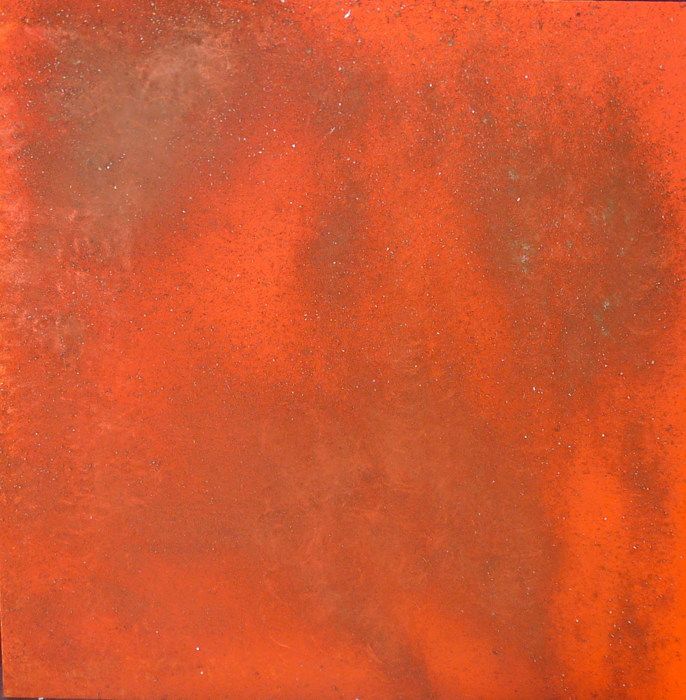
-
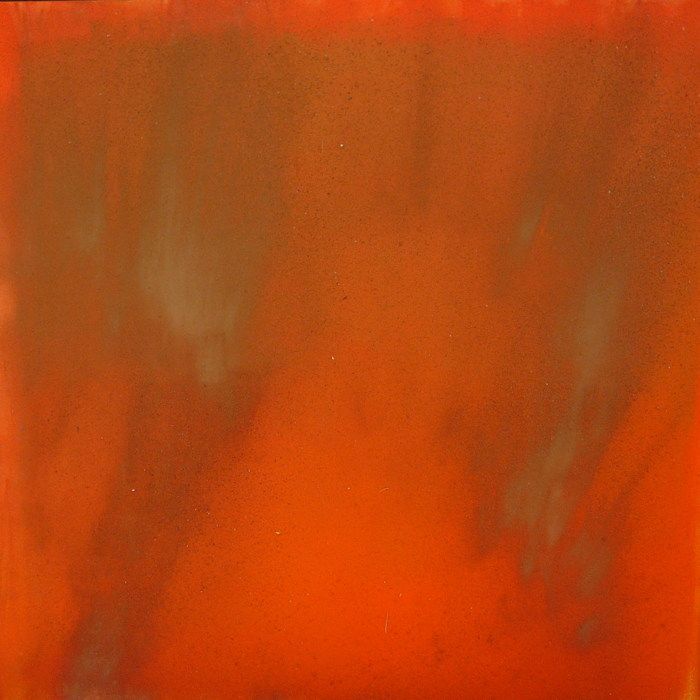
On the Way to Taos 6, oil on canvas, foto: H. Graafhuis
-
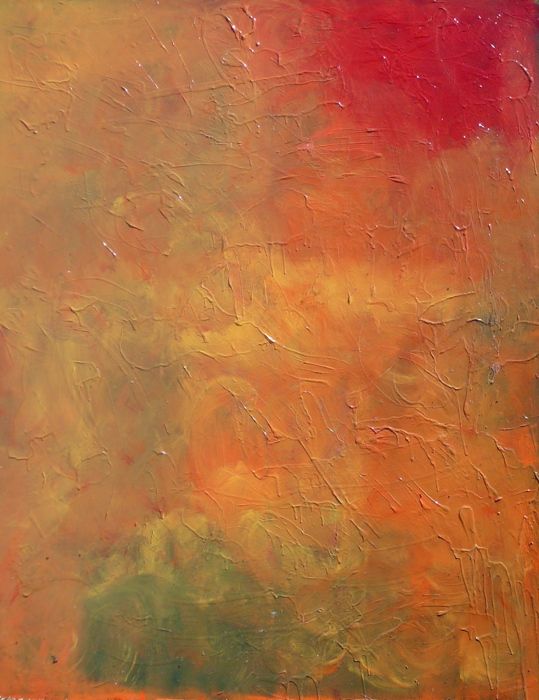
On the Way to Taos 7, oil on canvas, foto: H. Graafhuis
-
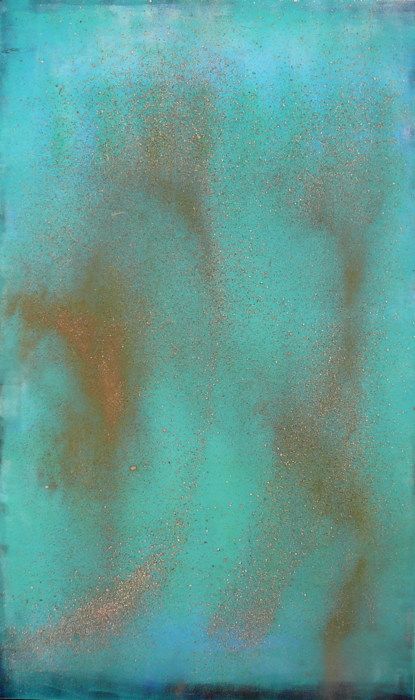
On the Way to Taos 8, oil on canvas, foto: H. Graafhuis
-
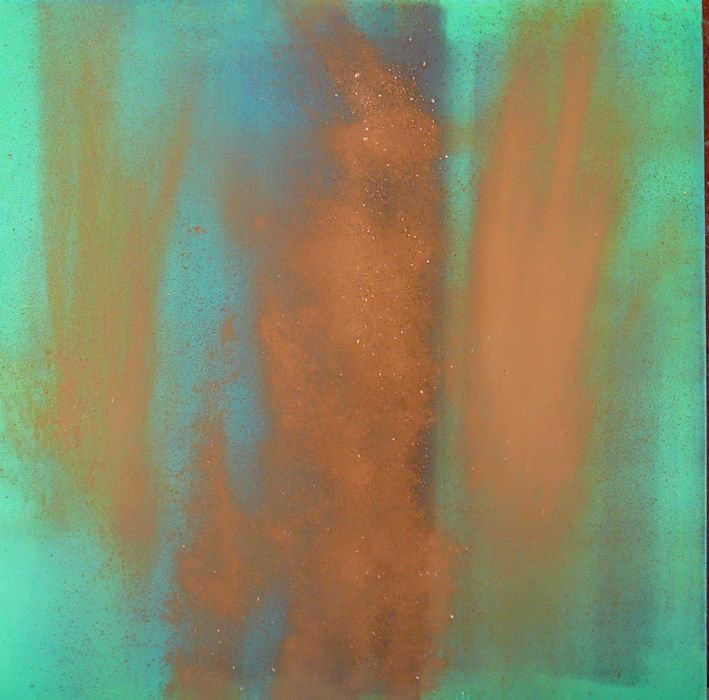
On the Way to Taos 9, oil on canvas, foto: H. Graafhuis
-

On the Way to Taos 10, oil on canvas, foto: H. Graafhuis
-

On the Way to Taos 11, oil on canvas, foto: H. Graafhuis
-
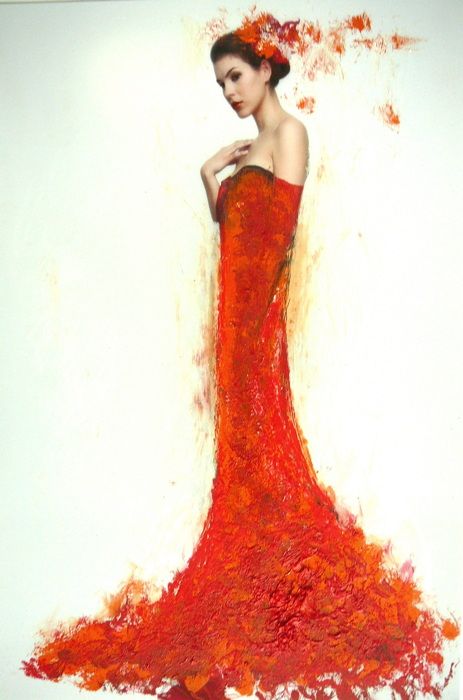
Red Dress, oil paint by Mascha Mioni over photo by Carlos Rieder
-
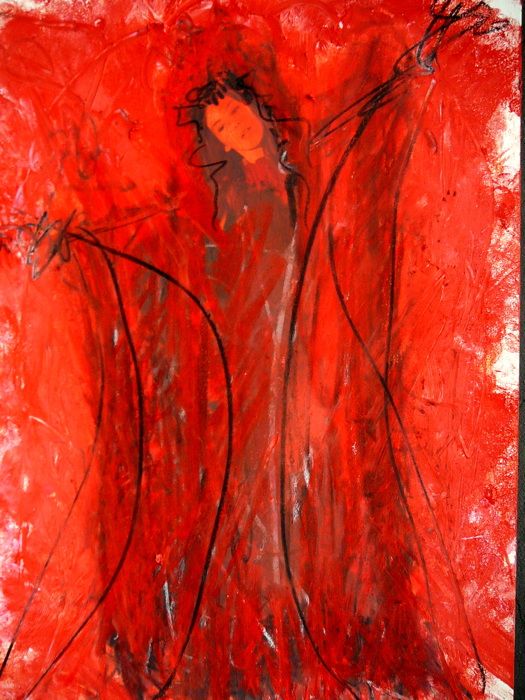
-
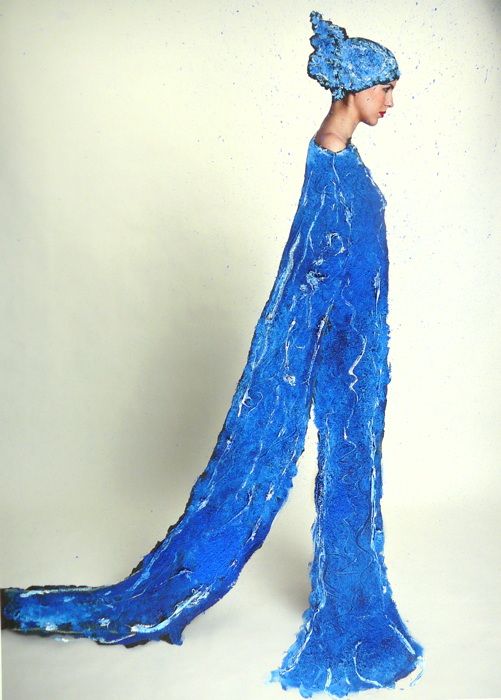
Blue Dress, oil paint by Mascha Mioni over photo by Carlos Rieder
-
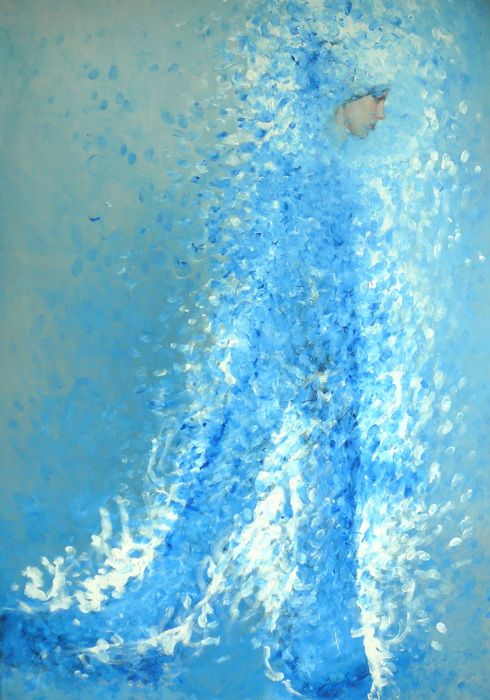
-
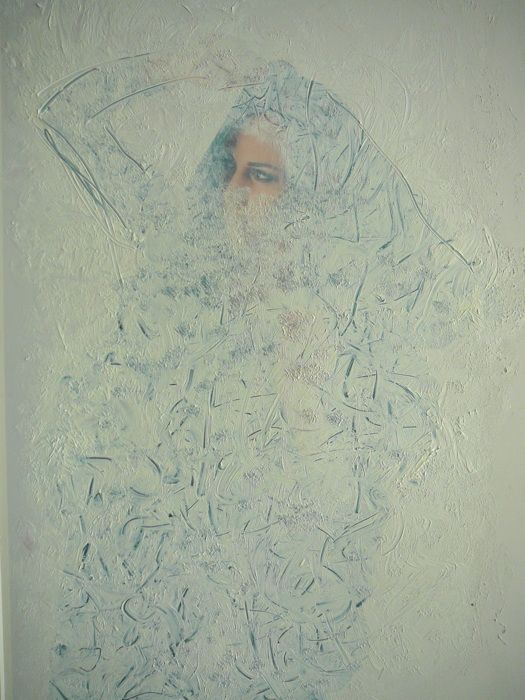
White, oil paint by Mascha Mioni over photo by Carlos Rieder
-

-
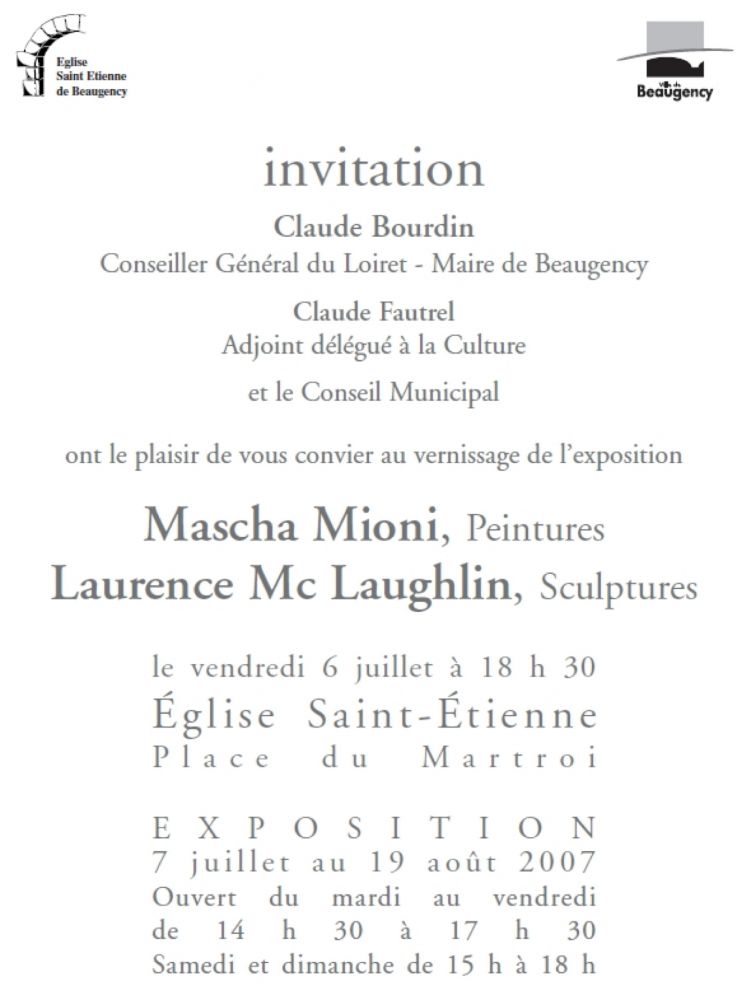
-
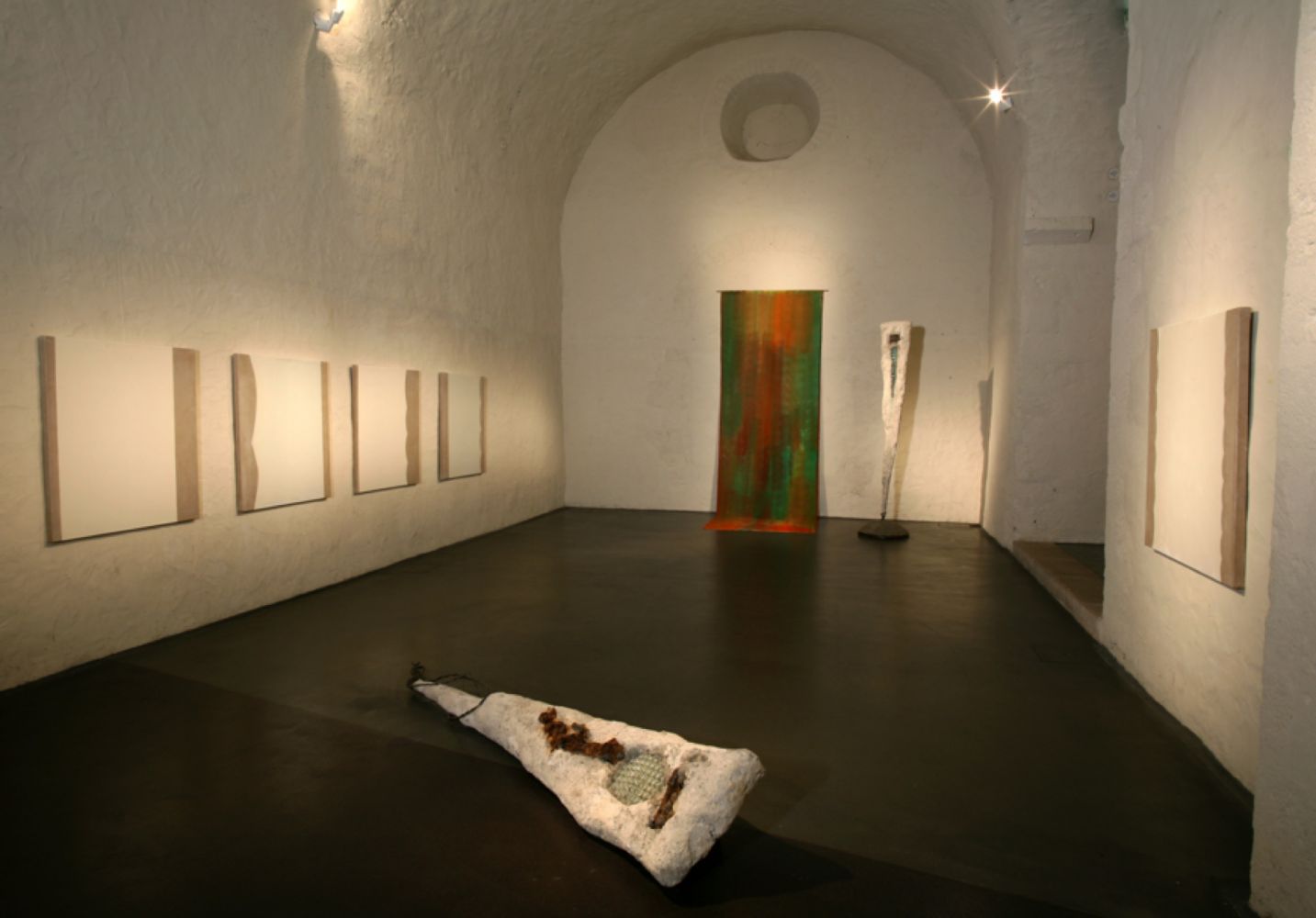
Sagesse 1-5, 2006/7, oil on canvas, 100x100cm
L’Amour, 1999, oil on canvas, 123x400cm
Sculptures: Lawrence McLaughlin
-
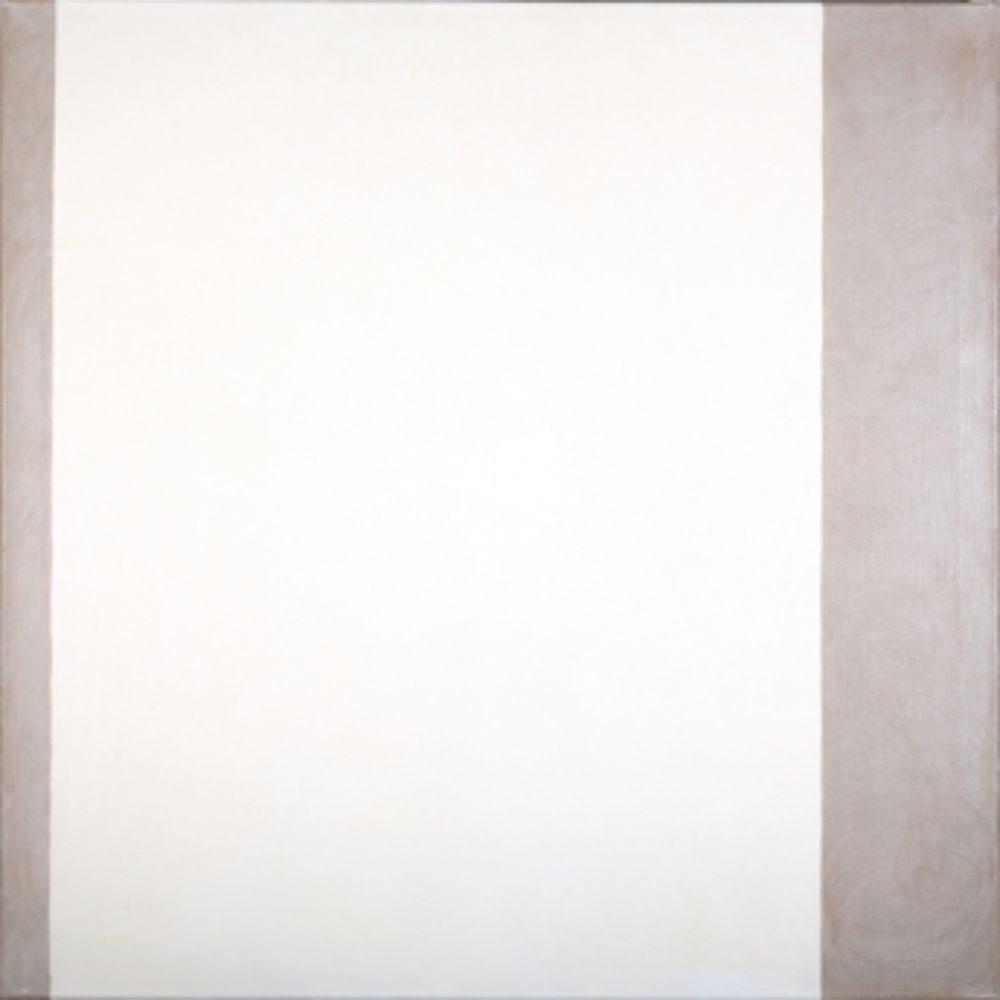
Sagesse 1, 2006/7, oil on canvas, 100x100cm
-
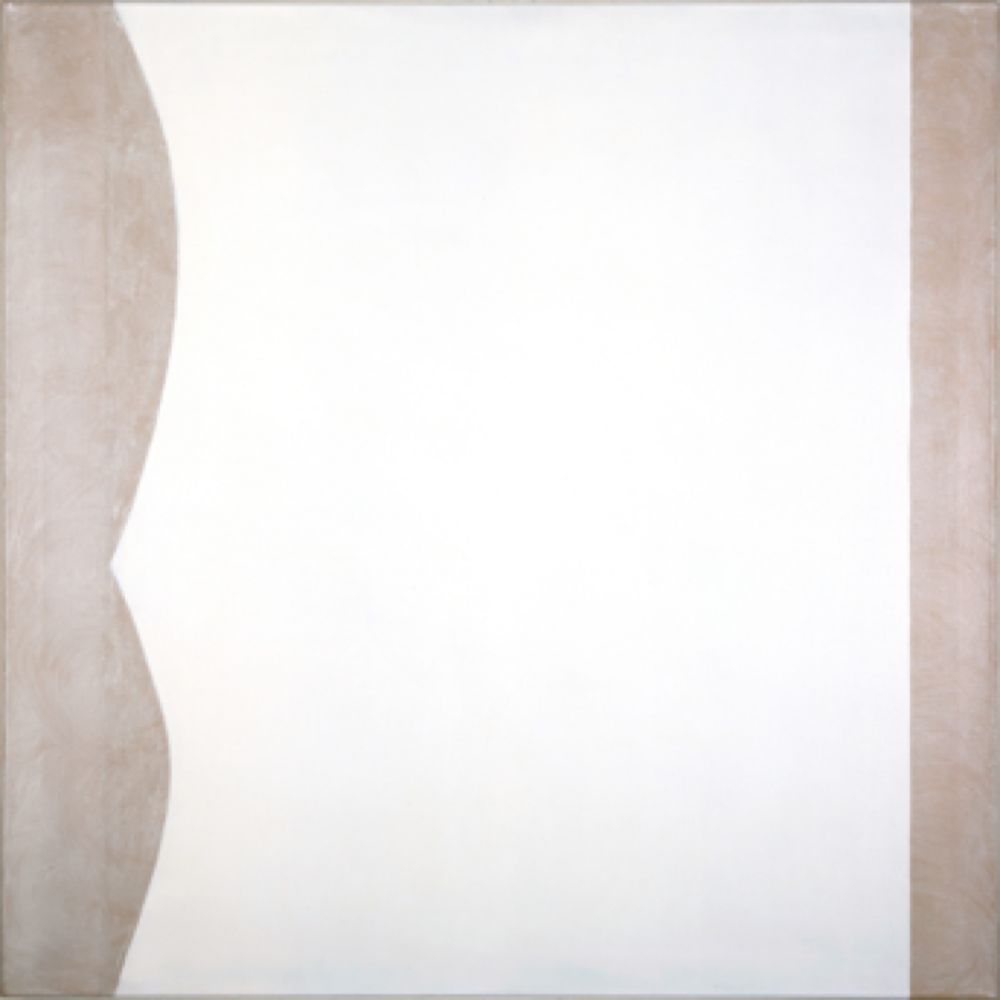
Sagesse 2, 2006/7, oil on canvas, 100x100cm
-

Sagesse 3, 2006/7, oil on canvas, 100x100cm
-

Sagesse 4, 2006/7, oil on canvas, 100x100cm
-

Sagesse 5, 2006/7, oil on canvas, 100x100cm
-

Jeanne d’Arc, 2007, oil on canvas, 100x100cm
La Lumière, 2000, oil on canvas, 500x208cm
Sculptures Lawrence McLaughlin
-
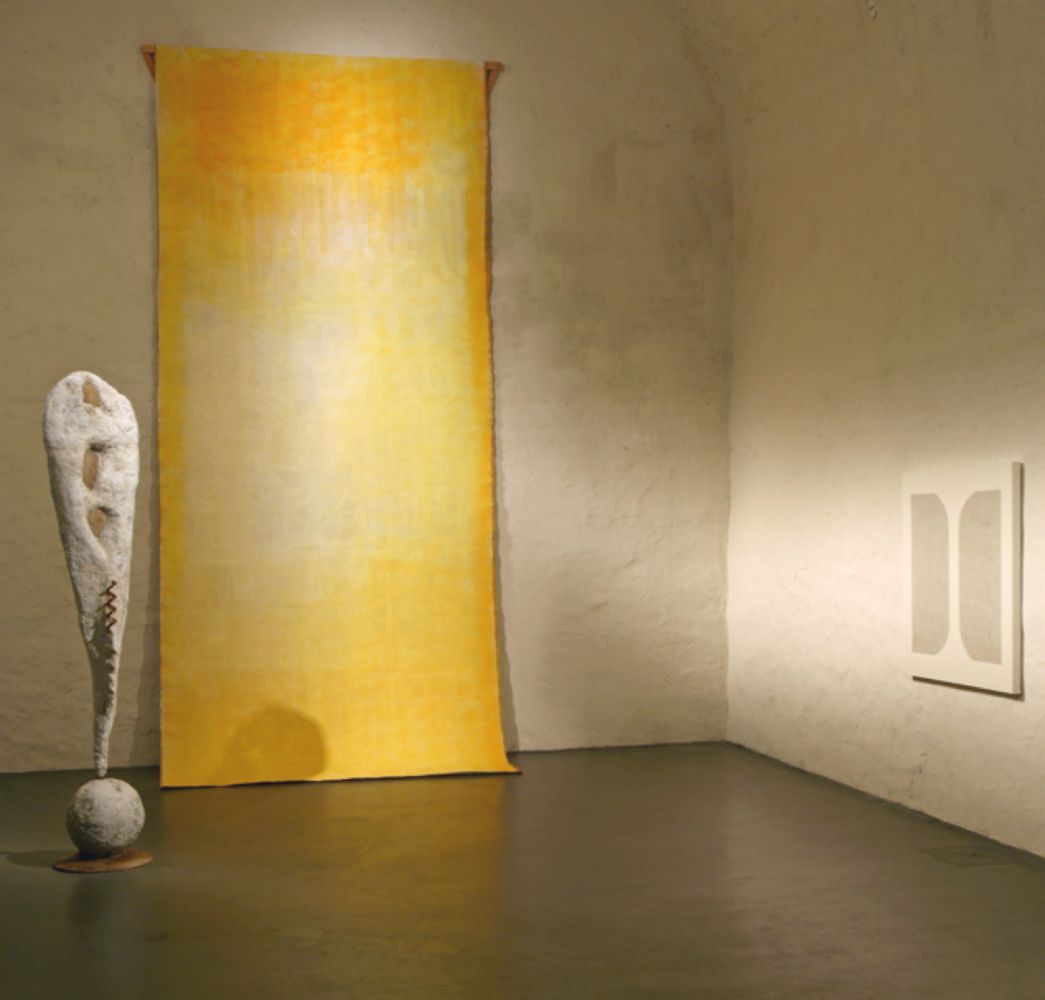
Loiret 2007, oil on canvas, 100x100cm
La Lumière, 2000, oil on canvas, 500x208cm
Sculpture Lawrence McLaughlin
-
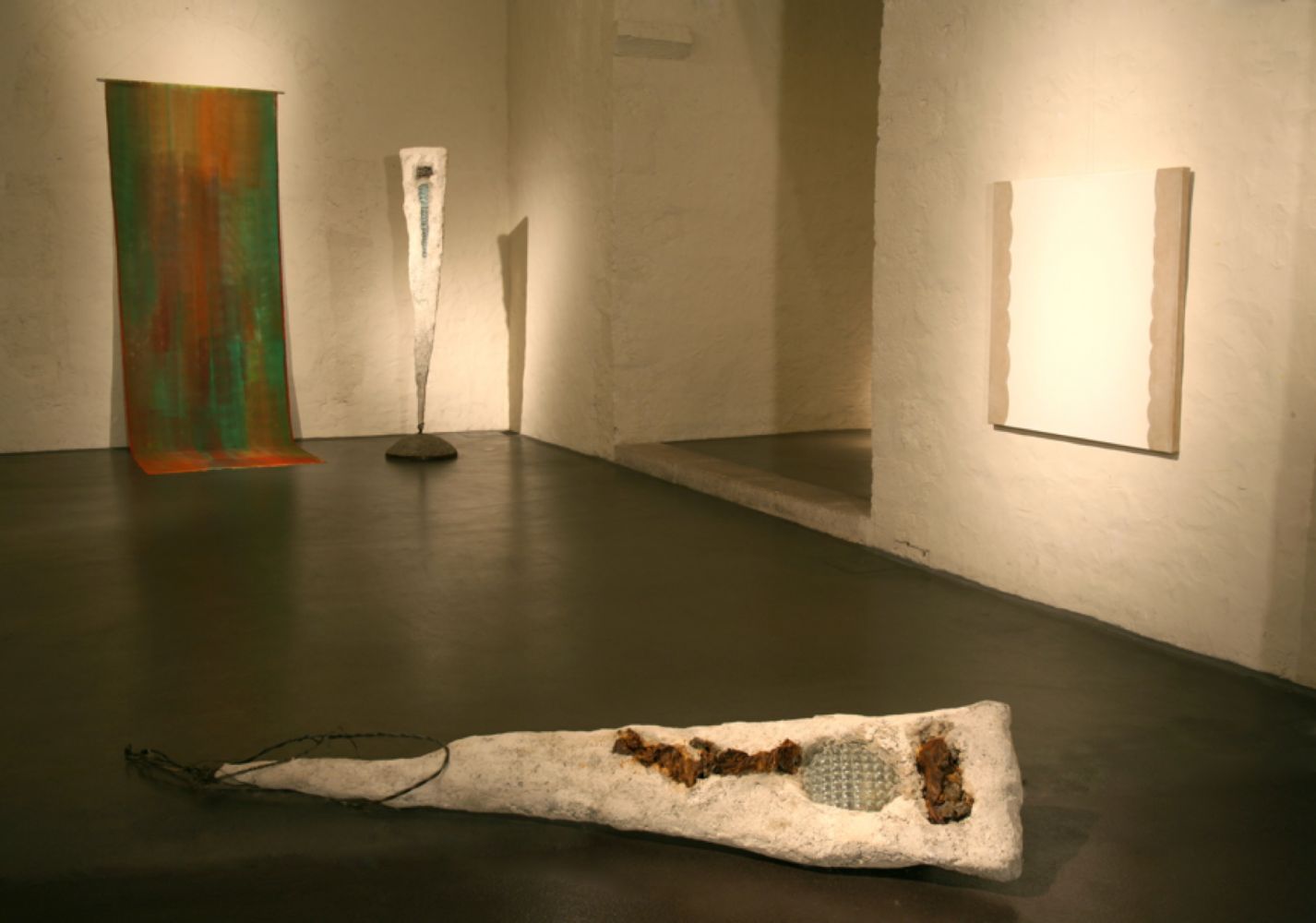
L’Amour 1999, oil on canvas, 123x400cm
Sagesse 5, 2006/7, oil on canvas, 100x100cm
Sculptures Lawrence McLaughlin
-
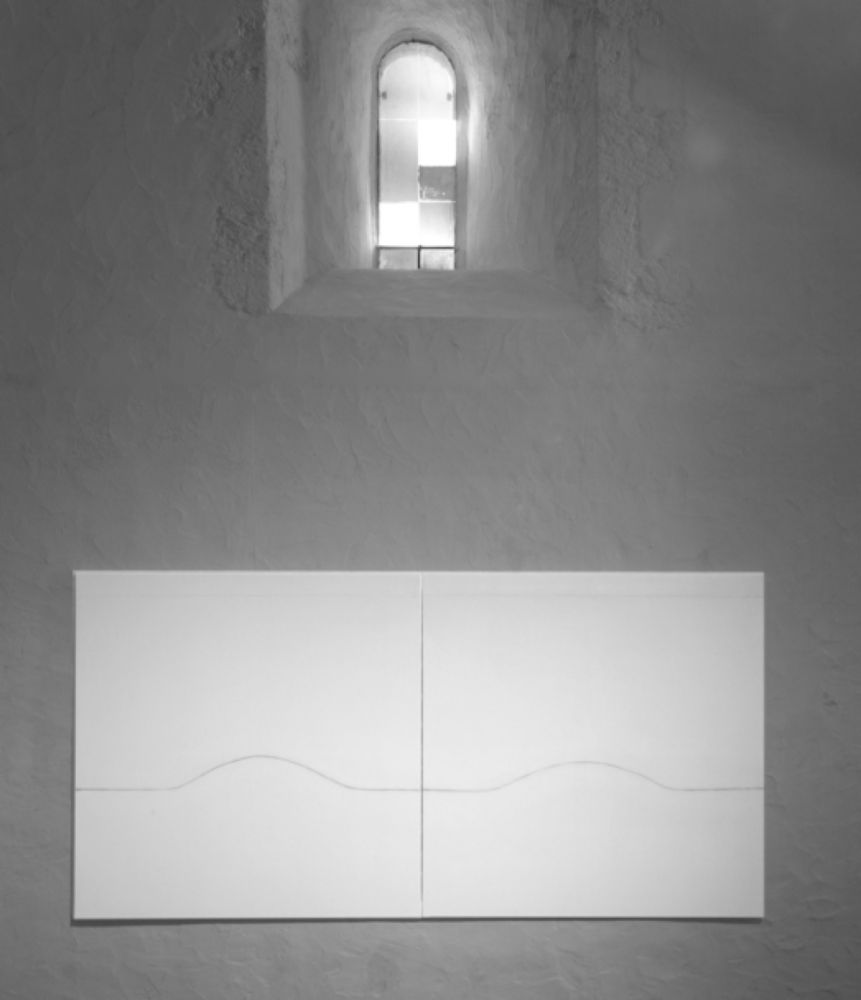
Le Chemin, 2006, oil on canvas, 2x100x100cm
-
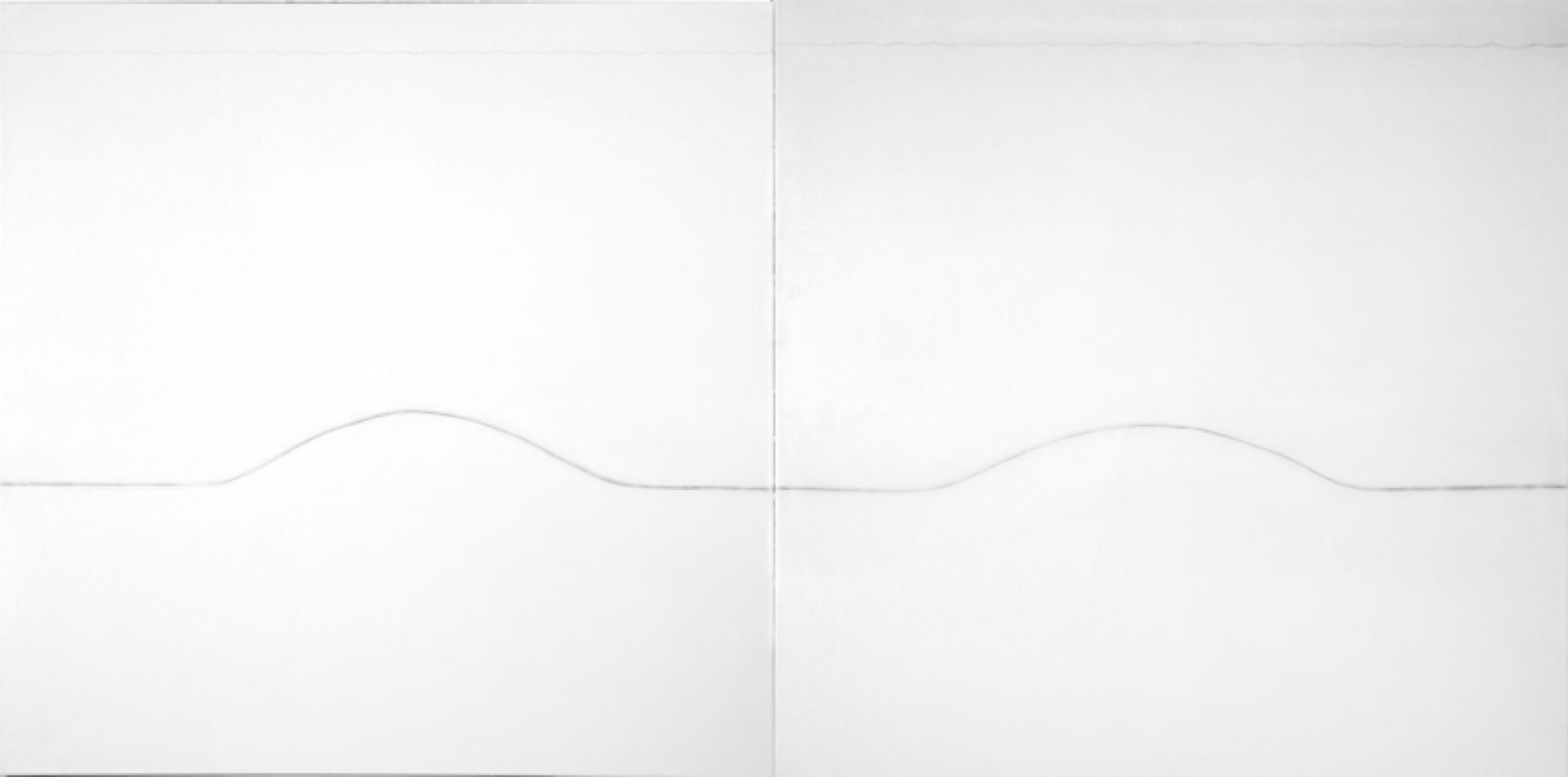
Le Chemin, 2006, oil on canvas, 2x100x100cm
-
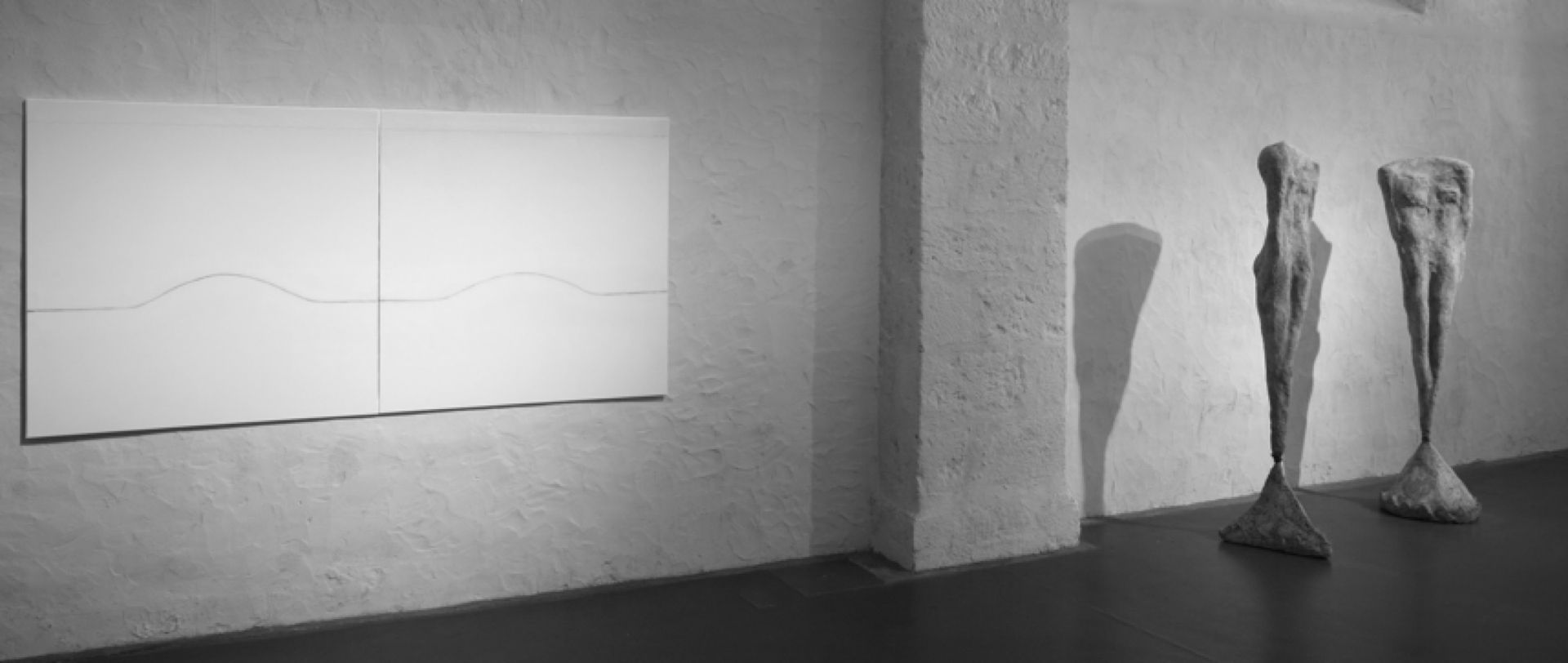
Le Chemin, 2006, oil on canvas, 2x100x100cm
Sculptures Lawrence McLaughlin
-
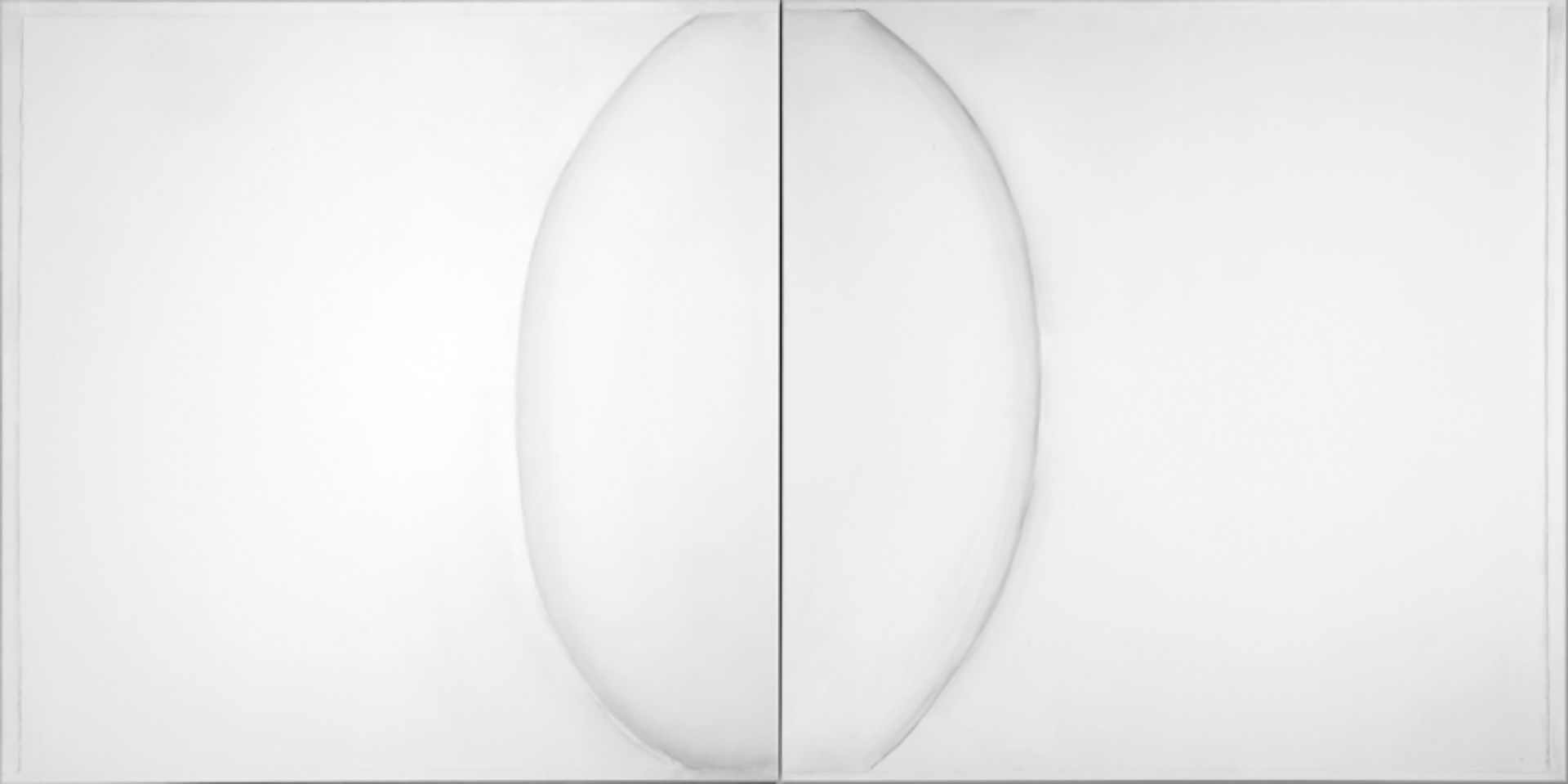
L’Union, 2006/7, oil on canvas, 2x100x100cm
-
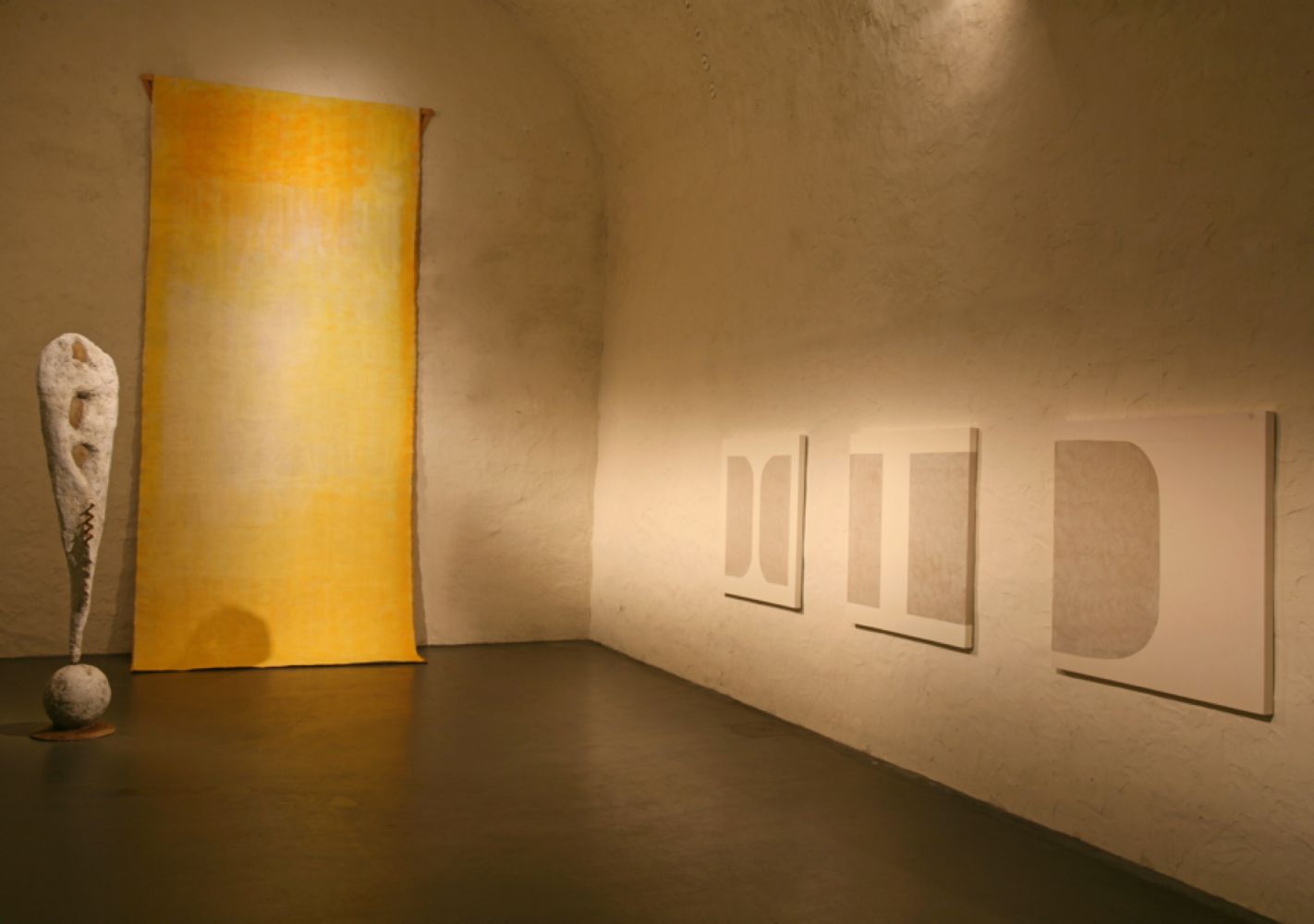
La Lumière, 2000, oil on canvas, 500x208cm
Loiret 2007, oil on canvas, 100x100cm
Beaugency, 2007, oil on canvas, 100x100cm
St. Etienne 2007, oil on canvas, 100x100cm
Sculpture Lawrence McLaughlin
-
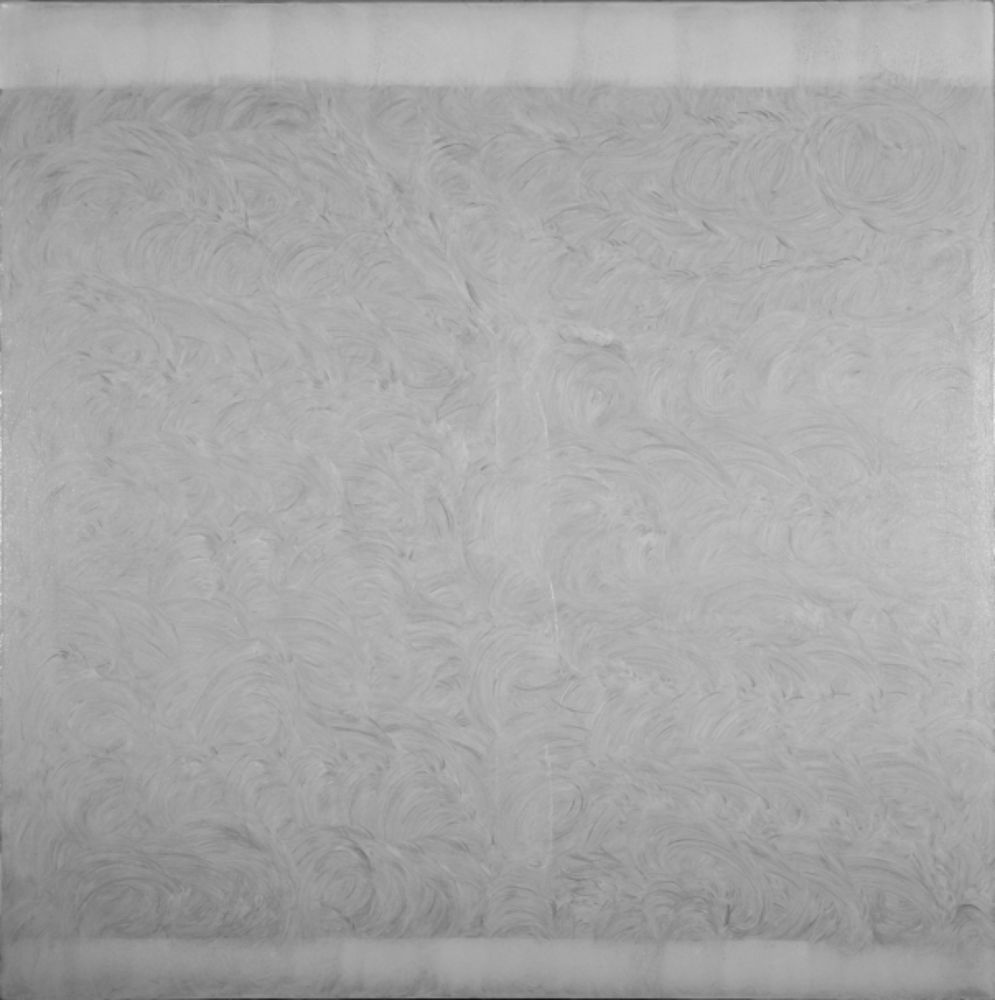
Jeanne d’Arc, 2007, oil on canvas, 100x100cm
-

Loiret 2007, oil on canvas, 100x100cm
-
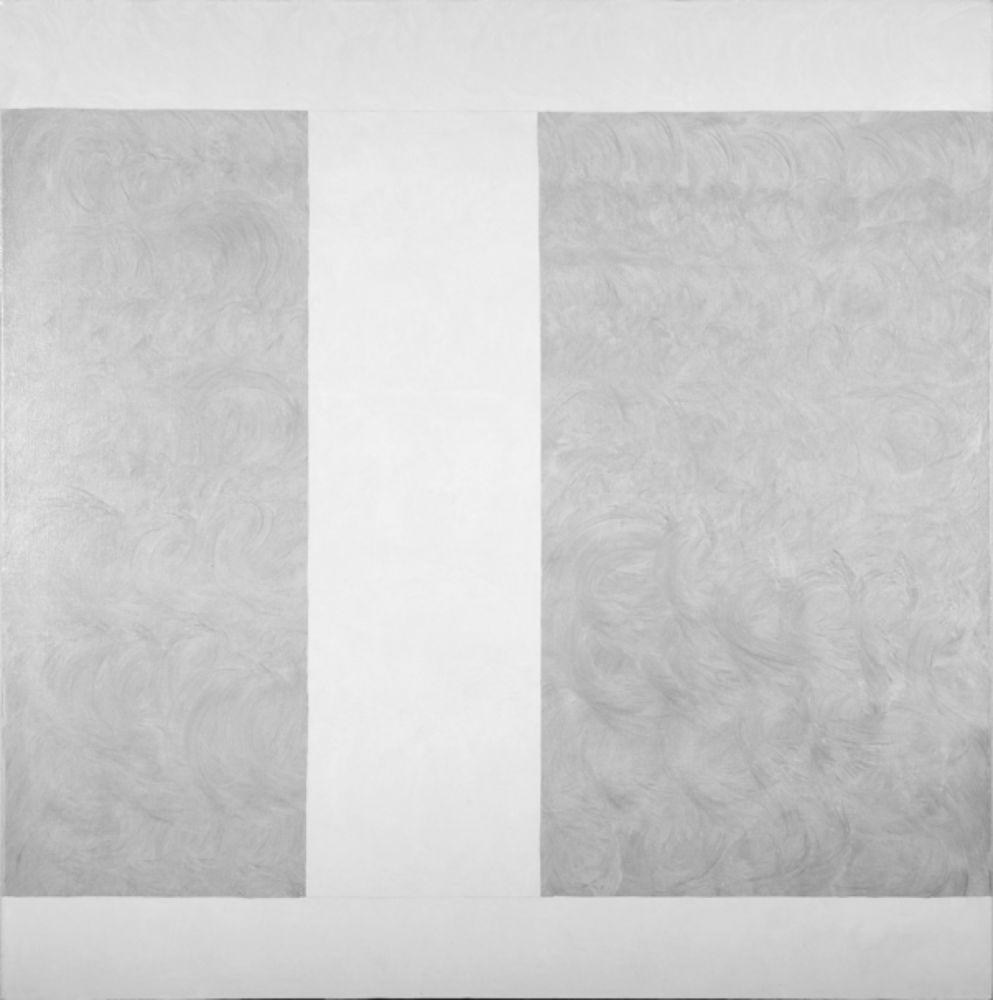
Beaugency, 2007, oil on canvas, 100x100cm
-
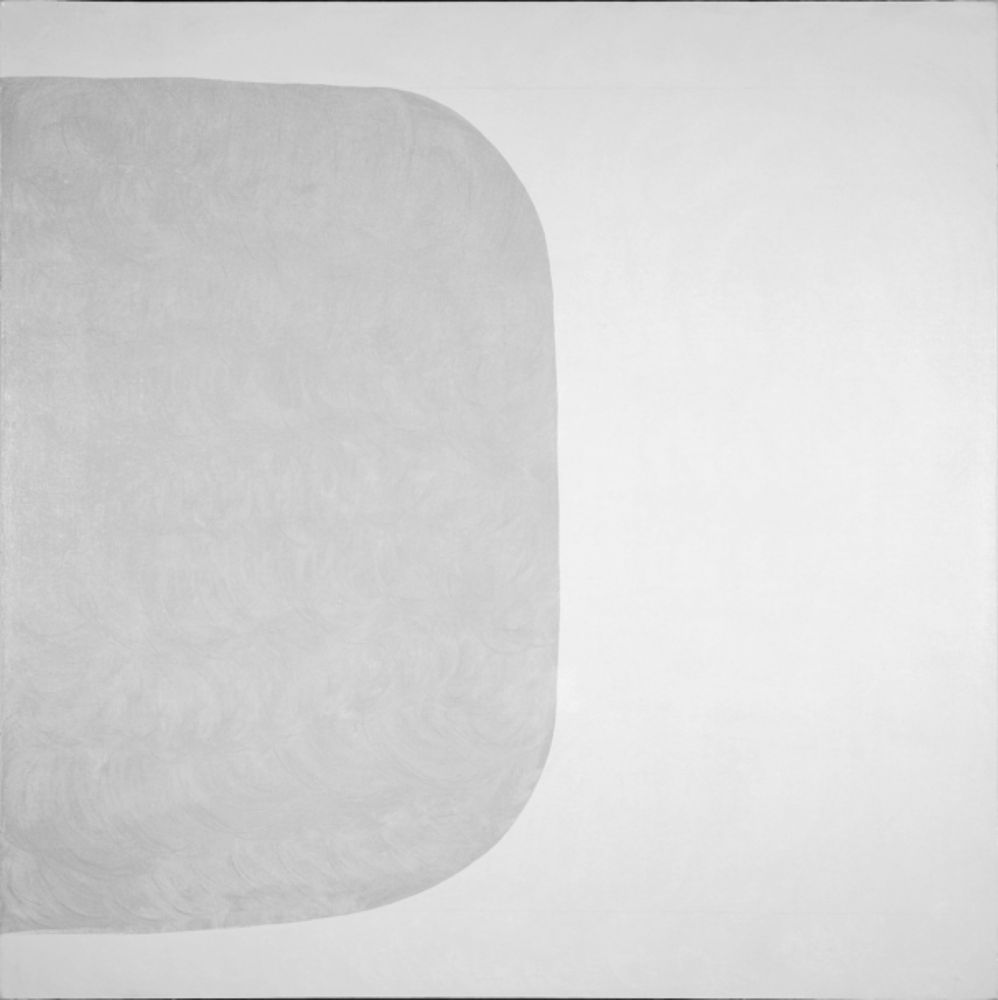
St. Etienne 2007, oil on canvas, 100x100cm
-
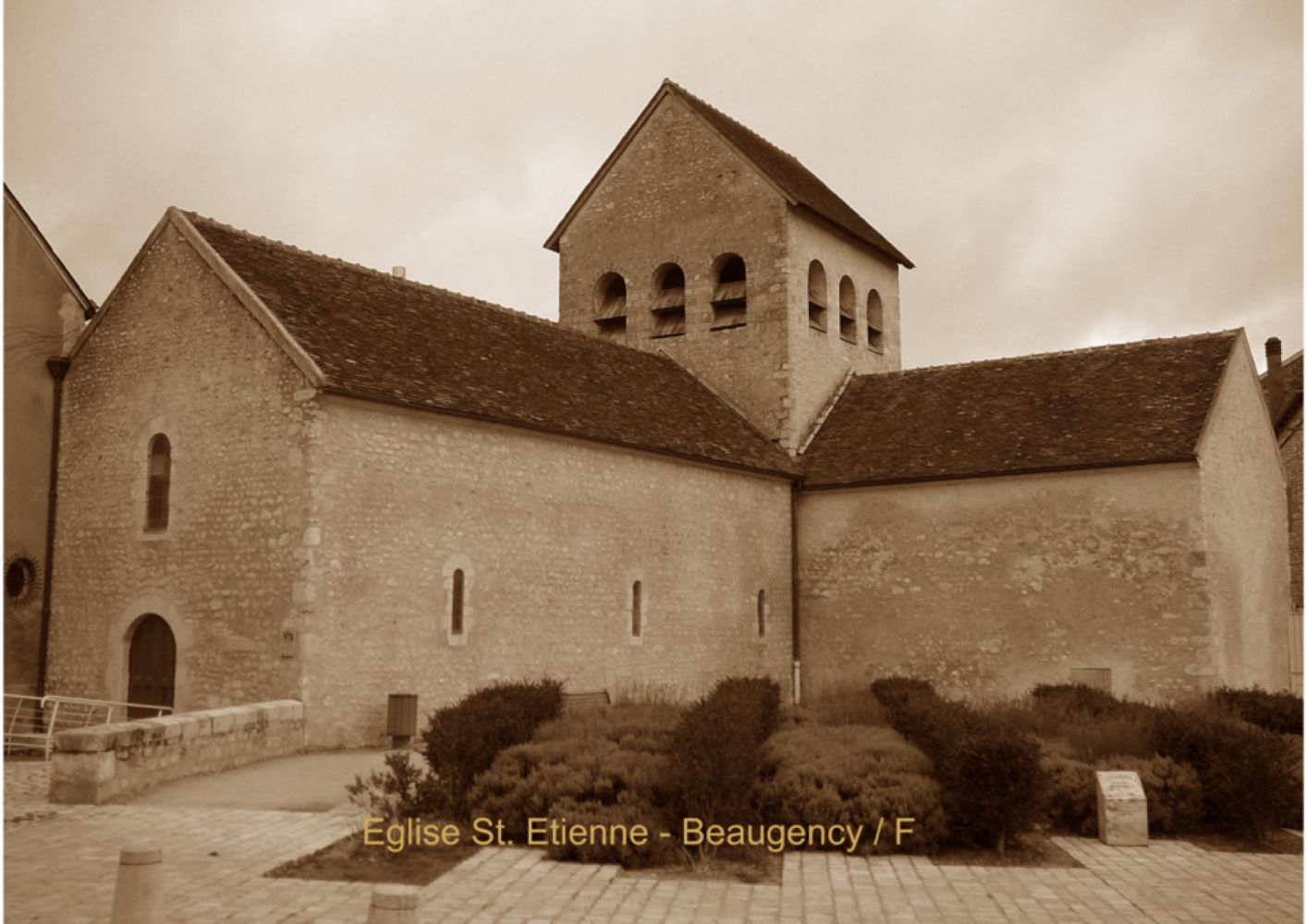
2007 Beaugency/F
Mascha Mionis paintings and Lawrence McLaughlins sculptures in the museums-church Saint-Etienne, Beaugency, France
Encounter
Mascha Mioni’s paintings and Lawrence McLaughlin’s sculptures, which enter into a beautiful dialogue with one another, were brought together for the first time in 1993 in Carolina Bearth’s gallery in Chur/Switzerland. Two years later Mascha and Lawrence met for the first time personally and a fruitful and smooth cooperation began. This resulted in joint exhibitions in 1998 and 1999 in the gallery In der Loft, Dietikon/Zurich, in 2003 in the Atelierhaus Altstadstr. In Meggen/Lucerne and in 2007 in the Eglise St. Etienne, Beaugency/France.
Bruno Lavillatte, Writer and Art-Critic on the exhibition
A Space Place
Obviously, there are walls. And whiteness. White spaces like banks of snow. The treasure is this small church - Saint Etienne de Beaugency, where emanations from our souls reach all the way down to our feet. Emanations that take us, surround us, embrace us in perfect accord. Mascha Mioni and Lawrence McLaughlin have become part of that embrace. Their work occupies the space together, merging without canceling the artists' personal individuality. But ultimately, the exhibition is a triptych. We know two of the artists; the third is four centuries old, speaking only through the interposed stones and the walls, assembled as if to reach the sky, via the force of the spirit coalesced with the material.
What Mascha Mioni paints is a transparency - precisely, a burst of the soul within our reach. A burst that exposes our humanity to be discovered. Something we never see, but keep concealed within us. Olivier Debré revealed the Loire, its secrecy, the light caressing whatever dropped from the blue sky to the wet gray losing itself on the banks. The large stones and boulders he applied as he wished on the canvas. Mascha Mioni reveals as well: she peals off the obvious reality, the pulpy flesh, the cushy excess. Anything massive, anything heavy - she removes it. McLaughlin, too, dispenses with excess, eliminating unnecessary appendages that distract from the core: no hands, no feet. The head is gone as well. There is always the strong base. It is the essential core figure that will stay infinitely - standing upright, always upright.
The unity of the two artists is expressed in a common peculiarity: they both work with what I will call, from now on, a 'release.' For Mascha Mioni and Lawrence McLaughlin, surplus is a burden. They want only to see the purest of simplicities. In that, their work is connected with an archaeology of form; each one individually 'releases' the inessential and seeks what remains of pure form. In the sculpture of Lawrence McLaughlin, as in Mascha Mioni's painting, is an initial form, uncluttered of obstruction. For these artists, to envision the foundation, the source, the origin, there can be no impediments. Because their work interplays so well together, we can see it as bare, unadorned forms, without even considering the material.
Of course, we can speak about purity, transparency, limpidity, simplicity. We can, and so I did at the beginning of this text. In fact, I think the reality is something else. It is not so simple. In general, abstraction is an attempt to “steal” information, in order to uncover or reveal the original form, the source, the mother form, which will always play hide and seek with our eye. Braque makes everything flat. Picasso puts everything to the side. Miro makes splashes and unwinds a few strings. Kandinsky mixes everything (up). Giotto lengthens his cypress trees, narrows the Tuscan roads. Piero della Francesca pushes angles to the limits of perspective. The light on the woman's face in Tintoretto's painting 'Christ before Pilate' comes from somewhere beyond. Chardin composes his still lives as he wishes, more alive than ever. All of this is to say, any art is an abstraction of reality; any art is innately abstract. There are things missing, arranged, taken out or recomposed. Cleaned. Of course every realistic work is not copied from reality. That would be photography, and if that were the case, why would there be photography?
My point: the unity of this exhibition - its coherence - is the artists' disregard for the superfluous. And we realize it. We get it, this something, without it being a formal concept. I want to make a comparison: the Cross does not need Christ to be the Cross. The body of Christ is so beautiful - particularly in the Renaissance period, that it is paradoxically inessential, extraneous. It is always on the Cross. The body is so present, that it does not have to appear. Therefore, any cross, becomes the Cross. That is the force of the symbol: it is a form that only needs itself to exist and to have meaning.
All things considered, the works of Mascha Mioni and Lawrence McLaughlin share this same enriched quality. They are eminently symbolic, not strictly for what is represented, but for what was removed. The power of their work comes from this 'release,' to more effectively express the essential form. Since medieval times, people speak about the 'True Cross', saying nothing, nothing of Christ. He is not physically associated with it. The aesthetic sensations we feel as we enter this church are of the same order: born from a perception of all that has been removed, awakening to all that needn't remain intact. Everything that was un-nailed. Everything that was taken away. As I visited the Maeght Foundation this year, I was seized by a curious feeling on the back terrace. The base of Giacometti's sculpture is overall the same as McLaughlin's: strong, massive, unique. And yet, there was a fundamental difference. What Giacommeti keeps, McLaughlin takes away. Cancels. This sense of what is released is what grounds the aesthetic feeling. We begin to see that McLaughlin's vision of the world is a process of reduction, one that doesn't reduce the essence of the world, but emphasizes it.
For Mascha Mioni it is the same. There could be splashes, drips, obviously visible brush strokes, exuberant color as in many of her most beautiful canvases. But here, no. In this particular space, addition and surplus do not have a place. A smooth rendering has occurred, enabling her to give us the essential form, meaning that the extent of the space and the most appropriate color for this space become white, or hints of white or gray, this being the ultimate sign of what has been extracted and discarded.
With Lawrence McLaughlin, it is never obvious. He needs materials, and that is his paradox: having released the inessential, it is necessary materially to present the essential. He rebuilds his own treasures, giving them a density that does not distort the essential form. Everything works together, enabling the form to be truly visible. Cement, metal, plaster. They are all essential to make the work possible. Necessary to present a form that otherwise would not hold itself, to embrace itself, to hold it tight and keep it close. It is at this point that this form looks at us, that its light passes through and spreads into the space. And it becomes the eye that sees and understands, like the birth of the world, a kind of absolute beginning. I invite you to pass behind the sculptures. It is worth the detour to find out how the form uniquely confronts and sees the world. By removing unnecessary materials, the artist has made it possible for the new material to take shape, a material manufactured from the original matrix, but refocused. One might think some kind of enigma has come to life. The original light emerges from this amalgam of cement, resin, plaster and metal, as if from the beginning of time. McLaughlin's sculptures seem to spring from another era. They have existed for 21,000 years, contemporaries of the Venus of Lespugue whose one foot takes root in the history of mankind, whose breasts and hips show the future of humanity and man's spiritual future, seeking release, and opening his desire to see and understand what exists beyond the mountains and under the eternal ice.
With Mascha Mioni, spaces seem to come to rest, to open up but to get close as well, to give life to and to cleanse the wounds of a world she is no longer considering. Her work is the mirror to McLaughlin's depiction of new beginnings where everything is cleansed. A resurrection! A moment when everything becomes possible and all seems to open up. And so, that too is what the space in Mioni's paintings is - an open space - without limits. McLaughlin's works contrive their own limitless ascent towards the sky. If he allowed it, they wouldn't stop, if he didn't put a limit on what you can see.
Obviously there are white walls and spaces as white as snow banks. Obviously, it couldn't be otherwise in this little church of Saint Etienne, stripped of everything recalling a suspect world. A world where one must always be on the look-out for any glimpse or sign that allows us to see another better world. The unity between this space and the artists is unmatched. It seems engraved in the history of this exhibition, a history that we may not really understand. This church, after 17 centuries, is the symbol of a 'form of archaeology,' which in Caphargamala in 415, led Lucien the priest to discover Saint Etienne’s body, the first martyr of the Church. The body had been lost, buried beneath piles of stone. With the presence of Mascha Mioni and Lawrence McLaughlin, this church is not a simple exhibition space, it is a way to help us understand that we, believers and non-believers, must commit to the indispensable truth that it is always possible to see with our eyes half closed, ‘the open Heavens that rain on our feet and awaken our Souls’. Without doubt, such is the concept of this space.
B. L. July 26, 2007
Mascha Mionis paintings and Lawrence McLaughlins sculptures in the museums-church Saint-Etienne, Beaugency, France
Encounter
Mascha Mioni’s paintings and Lawrence McLaughlin’s sculptures, which enter into a beautiful dialogue with one another, were brought together for the first time in 1993 in Carolina Bearth’s gallery in Chur/Switzerland. Two years later Mascha and Lawrence met for the first time personally and a fruitful and smooth cooperation began. This resulted in joint exhibitions in 1998 and 1999 in the gallery In der Loft, Dietikon/Zurich, in 2003 in the Atelierhaus Altstadstr. In Meggen/Lucerne and in 2007 in the Eglise St. Etienne, Beaugency/France.
Bruno Lavillatte, Writer and Art-Critic on the exhibition
A Space Place
Obviously, there are walls. And whiteness. White spaces like banks of snow. The treasure is this small church - Saint Etienne de Beaugency, where emanations from our souls reach all the way down to our feet. Emanations that take us, surround us, embrace us in perfect accord. Mascha Mioni and Lawrence McLaughlin have become part of that embrace. Their work occupies the space together, merging without canceling the artists' personal individuality. But ultimately, the exhibition is a triptych. We know two of the artists; the third is four centuries old, speaking only through the interposed stones and the walls, assembled as if to reach the sky, via the force of the spirit coalesced with the material.
What Mascha Mioni paints is a transparency - precisely, a burst of the soul within our reach. A burst that exposes our humanity to be discovered. Something we never see, but keep concealed within us. Olivier Debré revealed the Loire, its secrecy, the light caressing whatever dropped from the blue sky to the wet gray losing itself on the banks. The large stones and boulders he applied as he wished on the canvas. Mascha Mioni reveals as well: she peals off the obvious reality, the pulpy flesh, the cushy excess. Anything massive, anything heavy - she removes it. McLaughlin, too, dispenses with excess, eliminating unnecessary appendages that distract from the core: no hands, no feet. The head is gone as well. There is always the strong base. It is the essential core figure that will stay infinitely - standing upright, always upright.
The unity of the two artists is expressed in a common peculiarity: they both work with what I will call, from now on, a 'release.' For Mascha Mioni and Lawrence McLaughlin, surplus is a burden. They want only to see the purest of simplicities. In that, their work is connected with an archaeology of form; each one individually 'releases' the inessential and seeks what remains of pure form. In the sculpture of Lawrence McLaughlin, as in Mascha Mioni's painting, is an initial form, uncluttered of obstruction. For these artists, to envision the foundation, the source, the origin, there can be no impediments. Because their work interplays so well together, we can see it as bare, unadorned forms, without even considering the material.
Of course, we can speak about purity, transparency, limpidity, simplicity. We can, and so I did at the beginning of this text. In fact, I think the reality is something else. It is not so simple. In general, abstraction is an attempt to “steal” information, in order to uncover or reveal the original form, the source, the mother form, which will always play hide and seek with our eye. Braque makes everything flat. Picasso puts everything to the side. Miro makes splashes and unwinds a few strings. Kandinsky mixes everything (up). Giotto lengthens his cypress trees, narrows the Tuscan roads. Piero della Francesca pushes angles to the limits of perspective. The light on the woman's face in Tintoretto's painting 'Christ before Pilate' comes from somewhere beyond. Chardin composes his still lives as he wishes, more alive than ever. All of this is to say, any art is an abstraction of reality; any art is innately abstract. There are things missing, arranged, taken out or recomposed. Cleaned. Of course every realistic work is not copied from reality. That would be photography, and if that were the case, why would there be photography?
My point: the unity of this exhibition - its coherence - is the artists' disregard for the superfluous. And we realize it. We get it, this something, without it being a formal concept. I want to make a comparison: the Cross does not need Christ to be the Cross. The body of Christ is so beautiful - particularly in the Renaissance period, that it is paradoxically inessential, extraneous. It is always on the Cross. The body is so present, that it does not have to appear. Therefore, any cross, becomes the Cross. That is the force of the symbol: it is a form that only needs itself to exist and to have meaning.
All things considered, the works of Mascha Mioni and Lawrence McLaughlin share this same enriched quality. They are eminently symbolic, not strictly for what is represented, but for what was removed. The power of their work comes from this 'release,' to more effectively express the essential form. Since medieval times, people speak about the 'True Cross', saying nothing, nothing of Christ. He is not physically associated with it. The aesthetic sensations we feel as we enter this church are of the same order: born from a perception of all that has been removed, awakening to all that needn't remain intact. Everything that was un-nailed. Everything that was taken away. As I visited the Maeght Foundation this year, I was seized by a curious feeling on the back terrace. The base of Giacometti's sculpture is overall the same as McLaughlin's: strong, massive, unique. And yet, there was a fundamental difference. What Giacommeti keeps, McLaughlin takes away. Cancels. This sense of what is released is what grounds the aesthetic feeling. We begin to see that McLaughlin's vision of the world is a process of reduction, one that doesn't reduce the essence of the world, but emphasizes it.
For Mascha Mioni it is the same. There could be splashes, drips, obviously visible brush strokes, exuberant color as in many of her most beautiful canvases. But here, no. In this particular space, addition and surplus do not have a place. A smooth rendering has occurred, enabling her to give us the essential form, meaning that the extent of the space and the most appropriate color for this space become white, or hints of white or gray, this being the ultimate sign of what has been extracted and discarded.
With Lawrence McLaughlin, it is never obvious. He needs materials, and that is his paradox: having released the inessential, it is necessary materially to present the essential. He rebuilds his own treasures, giving them a density that does not distort the essential form. Everything works together, enabling the form to be truly visible. Cement, metal, plaster. They are all essential to make the work possible. Necessary to present a form that otherwise would not hold itself, to embrace itself, to hold it tight and keep it close. It is at this point that this form looks at us, that its light passes through and spreads into the space. And it becomes the eye that sees and understands, like the birth of the world, a kind of absolute beginning. I invite you to pass behind the sculptures. It is worth the detour to find out how the form uniquely confronts and sees the world. By removing unnecessary materials, the artist has made it possible for the new material to take shape, a material manufactured from the original matrix, but refocused. One might think some kind of enigma has come to life. The original light emerges from this amalgam of cement, resin, plaster and metal, as if from the beginning of time. McLaughlin's sculptures seem to spring from another era. They have existed for 21,000 years, contemporaries of the Venus of Lespugue whose one foot takes root in the history of mankind, whose breasts and hips show the future of humanity and man's spiritual future, seeking release, and opening his desire to see and understand what exists beyond the mountains and under the eternal ice.
With Mascha Mioni, spaces seem to come to rest, to open up but to get close as well, to give life to and to cleanse the wounds of a world she is no longer considering. Her work is the mirror to McLaughlin's depiction of new beginnings where everything is cleansed. A resurrection! A moment when everything becomes possible and all seems to open up. And so, that too is what the space in Mioni's paintings is - an open space - without limits. McLaughlin's works contrive their own limitless ascent towards the sky. If he allowed it, they wouldn't stop, if he didn't put a limit on what you can see.
Obviously there are white walls and spaces as white as snow banks. Obviously, it couldn't be otherwise in this little church of Saint Etienne, stripped of everything recalling a suspect world. A world where one must always be on the look-out for any glimpse or sign that allows us to see another better world. The unity between this space and the artists is unmatched. It seems engraved in the history of this exhibition, a history that we may not really understand. This church, after 17 centuries, is the symbol of a 'form of archaeology,' which in Caphargamala in 415, led Lucien the priest to discover Saint Etienne’s body, the first martyr of the Church. The body had been lost, buried beneath piles of stone. With the presence of Mascha Mioni and Lawrence McLaughlin, this church is not a simple exhibition space, it is a way to help us understand that we, believers and non-believers, must commit to the indispensable truth that it is always possible to see with our eyes half closed, ‘the open Heavens that rain on our feet and awaken our Souls’. Without doubt, such is the concept of this space.
B. L. July 26, 2007
go to post
2003/04 Dombeio / New Sea Land
Maler reden nicht - Maler malen
Heute mache ich eine Ausnahme und beantworte drei Fragen, die mir am meisten von den Betrachtern meiner Bilder gestellt werden.
1. Frage: Wie lange brauchst Du, um ein Bild zu malen?
Antwort: Für die hier gezeigten Bilder habe ich über 60 Jahre gebraucht.
2. Frage: Was stellen Sie dar?
Antwort: Es sind Farbfelder. Das ist eine Kunstrichtung unter vielen. Kunstrichtungen sind wie Strassen oder Wege, die man benützen kann. Farbfeldmalerei ist der Weg, den auch Mark Rothko gegangen ist. Es ist eine Darstellung in einer Sprache, die jeder reden und verstehen kann. Aber Du musst auf die übliche Betrachtungsweise verzichten und auf Dein Herz hören.
Auch St. Exupéry hat geschrieben: „Man sieht nur mit dem Herzen gut.“
Ich habe schon viele Wege hinter mich gebracht und oft an einer Kreuzung eine ganz neue Richtung eingeschlagen.
Die hier gezeigten „Neu Seh Land“ Bilder entstanden aus Erfahrungen, die ich Anfangs Jahr in Neuseeland gemacht habe.
Die Dombeio Bilder malte ich in der Südafrikanischen Weinfarm Dombeya oberhalb Stellenbosch.
3. Frage: Kannst Du von Deiner Tätigkeit leben?
Antwort: Ich könnte ohne meine Tätigkeit nicht leben!
Dann wird aber sofort nachgedoppelt: „Das meinen wir nicht, sondern es interessiert uns, wie viele Bilder Du in einem Jahr verkaufst?“
Meine Zusatzantwort lautet dann: „Wenn selbst bei Klee seine Frau ums tägliche Brot besorgt war, ebenso bei Matisse, oder bei Van Gogh sein Bruder, wenn in den meisten Malerbiographien von der bitteren Armut die Rede ist, in der die Künstler gelebt haben, so muss man annehmen, dass auf diesem Gebiet andere Wertmassstäbe gelten.
Künstler sind Grenzgänger zwischen zwei Welten.
Malerei ist die Brücke in eine Welt, die nicht von dieser Welt ist.
Unsere Wertmassstäbe und Zahlungsmittel gelten nur hier, die andere Seite hat eigene Regeln und andere Kriterien. Viele schaffen den Weg über die Brücke eines Tages nicht und bleiben am anderen Ufer. Dann sagen wir, sie sind übergeschnappt, geben ihnen Tabletten oder stecken sie in eine Anstalt.
Zum Abschluss ein Tipp: Falls Du diese Fragen nicht stellst, wirst Du als Kunstexperte angesehen.
Maler reden nicht - Maler malen
Heute mache ich eine Ausnahme und beantworte drei Fragen, die mir am meisten von den Betrachtern meiner Bilder gestellt werden.
1. Frage: Wie lange brauchst Du, um ein Bild zu malen?
Antwort: Für die hier gezeigten Bilder habe ich über 60 Jahre gebraucht.
2. Frage: Was stellen Sie dar?
Antwort: Es sind Farbfelder. Das ist eine Kunstrichtung unter vielen. Kunstrichtungen sind wie Strassen oder Wege, die man benützen kann. Farbfeldmalerei ist der Weg, den auch Mark Rothko gegangen ist. Es ist eine Darstellung in einer Sprache, die jeder reden und verstehen kann. Aber Du musst auf die übliche Betrachtungsweise verzichten und auf Dein Herz hören.
Auch St. Exupéry hat geschrieben: „Man sieht nur mit dem Herzen gut.“
Ich habe schon viele Wege hinter mich gebracht und oft an einer Kreuzung eine ganz neue Richtung eingeschlagen.
Die hier gezeigten „Neu Seh Land“ Bilder entstanden aus Erfahrungen, die ich Anfangs Jahr in Neuseeland gemacht habe.
Die Dombeio Bilder malte ich in der Südafrikanischen Weinfarm Dombeya oberhalb Stellenbosch.
3. Frage: Kannst Du von Deiner Tätigkeit leben?
Antwort: Ich könnte ohne meine Tätigkeit nicht leben!
Dann wird aber sofort nachgedoppelt: „Das meinen wir nicht, sondern es interessiert uns, wie viele Bilder Du in einem Jahr verkaufst?“
Meine Zusatzantwort lautet dann: „Wenn selbst bei Klee seine Frau ums tägliche Brot besorgt war, ebenso bei Matisse, oder bei Van Gogh sein Bruder, wenn in den meisten Malerbiographien von der bitteren Armut die Rede ist, in der die Künstler gelebt haben, so muss man annehmen, dass auf diesem Gebiet andere Wertmassstäbe gelten.
Künstler sind Grenzgänger zwischen zwei Welten.
Malerei ist die Brücke in eine Welt, die nicht von dieser Welt ist.
Unsere Wertmassstäbe und Zahlungsmittel gelten nur hier, die andere Seite hat eigene Regeln und andere Kriterien. Viele schaffen den Weg über die Brücke eines Tages nicht und bleiben am anderen Ufer. Dann sagen wir, sie sind übergeschnappt, geben ihnen Tabletten oder stecken sie in eine Anstalt.
Zum Abschluss ein Tipp: Falls Du diese Fragen nicht stellst, wirst Du als Kunstexperte angesehen.
go to post
1999 Gallery in der Loft - transparent souls
Transparent Souls
(Photos: Nathalie Walt, Wangen)
Mascha Mioni relies on large flat areas of colour
applied side by side to stir immediate feeling.
Beyond the superficial effect,
which soon disappears, a second stimulus emerges that may severely effect and
arouse the soul. This psychic dimension of colour has such power that it can
cause the soul to vibrate. Colour is the pathway to the soul.
I quote Wassily Kandinsky:
"Colour is the keyboard. The eye is the hammer.
The soul is a piano with many strings.
The artist is the hand who effectively, with one key or another,
Brings the human soul to vibrate."
Through colour alone, Mascha Mioni reveals the path to the human soul. Her art addresses basic human feelings such as emotion or enthusiasm. Through immersion in colour, the viewer discovers the secret glow of the soul.
(Extracts from the opening speech (see pdf) of the gallerist Marianne Mittelholzer Leuenberger at the exhibition transparent souls 1999 at the Gallery in der Loft, Dietlikon/Zurich)
Transparent Souls
(Photos: Nathalie Walt, Wangen)
Mascha Mioni relies on large flat areas of colour
applied side by side to stir immediate feeling.
Beyond the superficial effect,
which soon disappears, a second stimulus emerges that may severely effect and
arouse the soul. This psychic dimension of colour has such power that it can
cause the soul to vibrate. Colour is the pathway to the soul.
I quote Wassily Kandinsky:
"Colour is the keyboard. The eye is the hammer.
The soul is a piano with many strings.
The artist is the hand who effectively, with one key or another,
Brings the human soul to vibrate."
Through colour alone, Mascha Mioni reveals the path to the human soul. Her art addresses basic human feelings such as emotion or enthusiasm. Through immersion in colour, the viewer discovers the secret glow of the soul.
(Extracts from the opening speech (see pdf) of the gallerist Marianne Mittelholzer Leuenberger at the exhibition transparent souls 1999 at the Gallery in der Loft, Dietlikon/Zurich)
